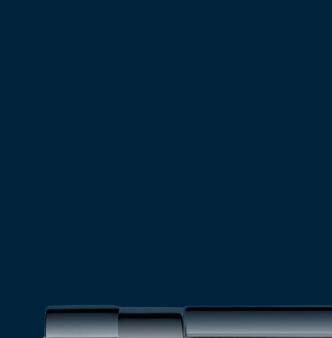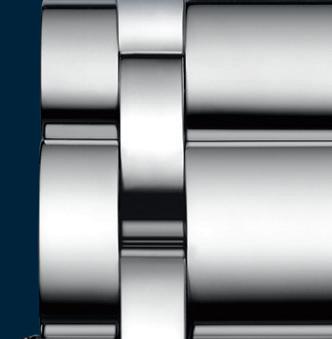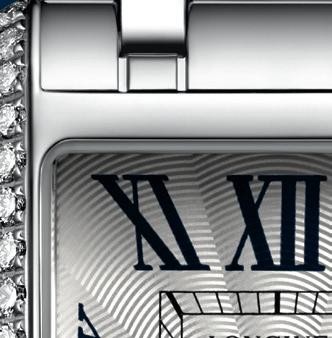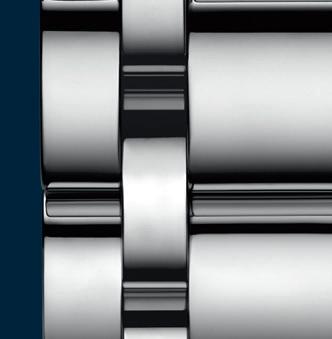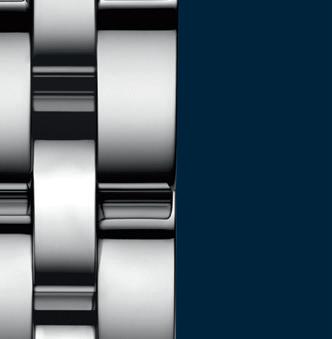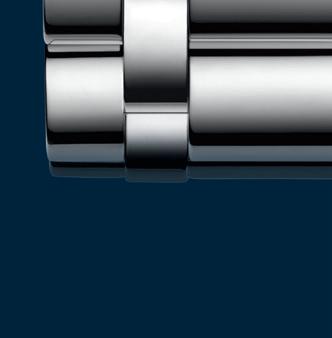






Arrive fashionably early
The ultimate balance of SUV functionality, exquisite design and class-leading S model performance — you’ll know you’ve arrived in the Audi SQ8.
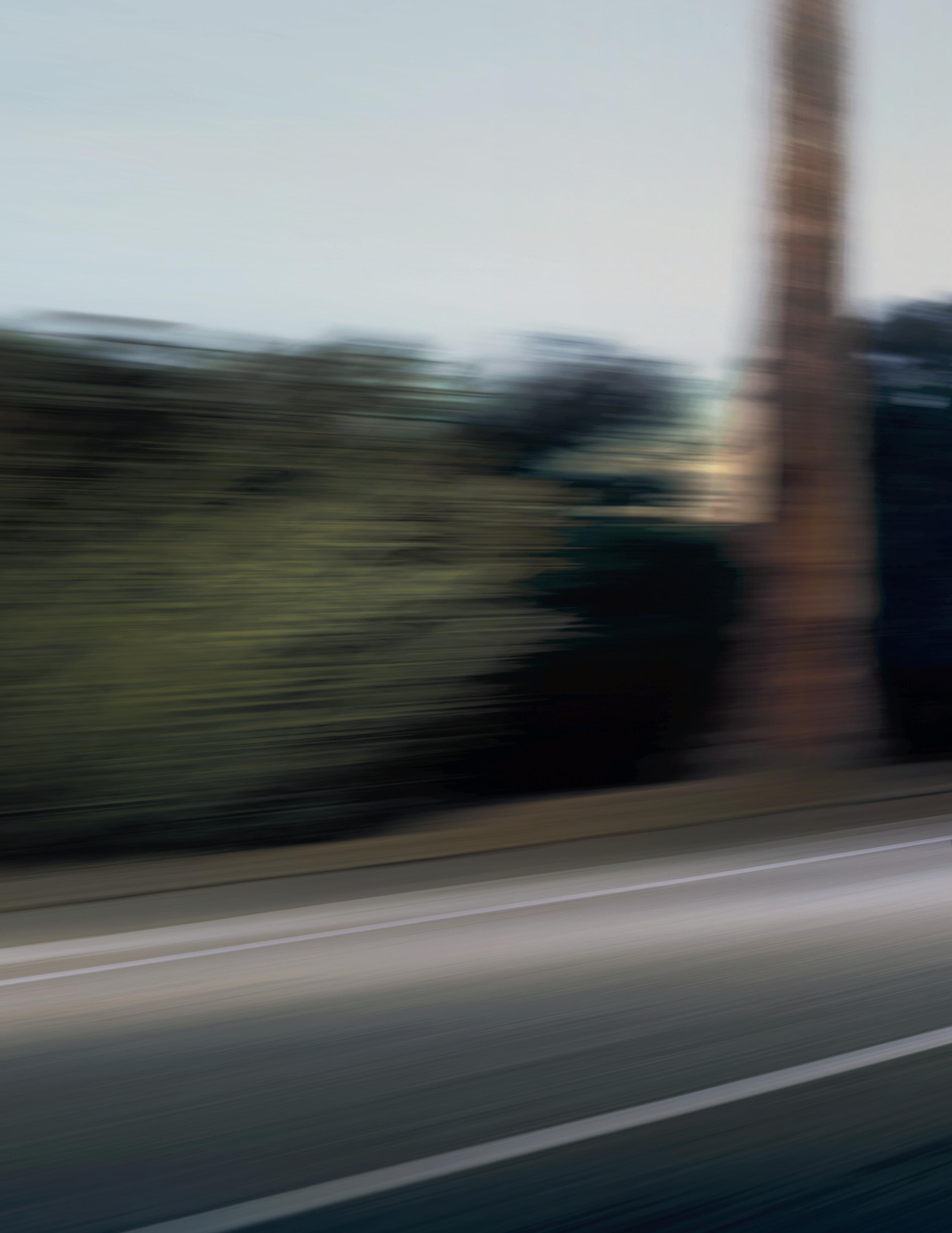 The Audi SQ8
The Audi SQ8
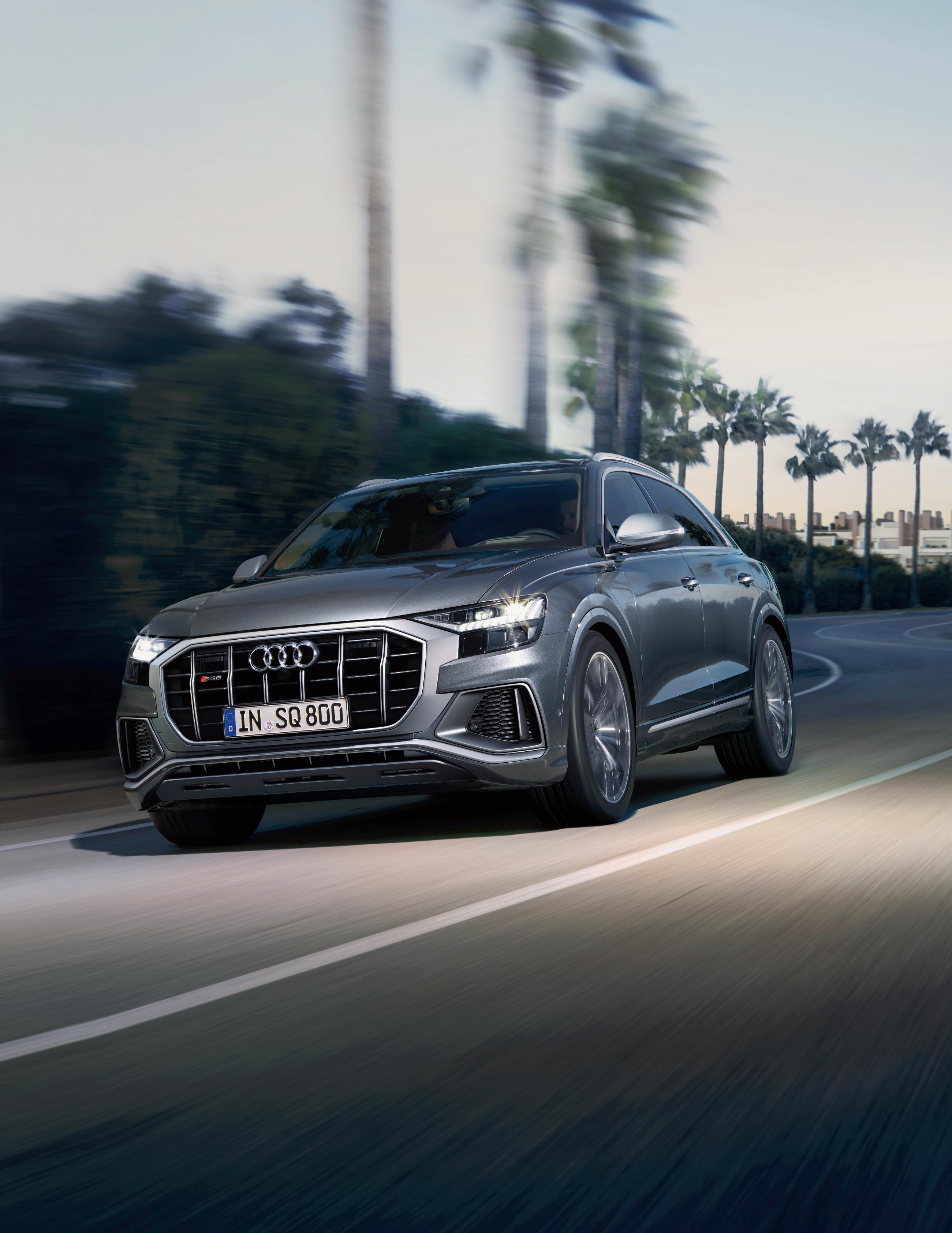
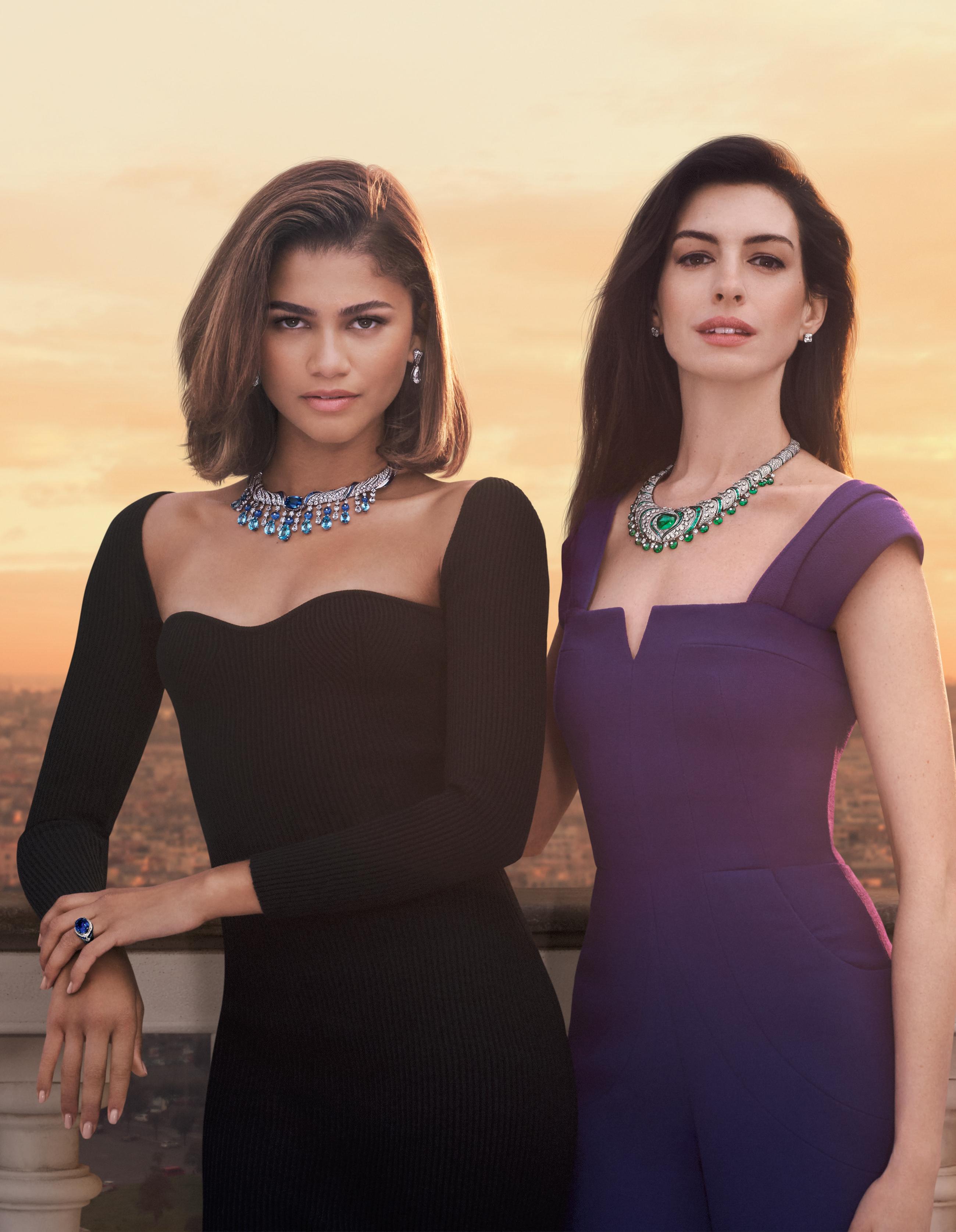






At Viking, curiosity is in our DNA. So we’ve made exploring an art form. Our modern fleet and dedicated crew take you deeper into the world’s greatest destinations, offering a new level of comfort and contentment for true explorer spirits.
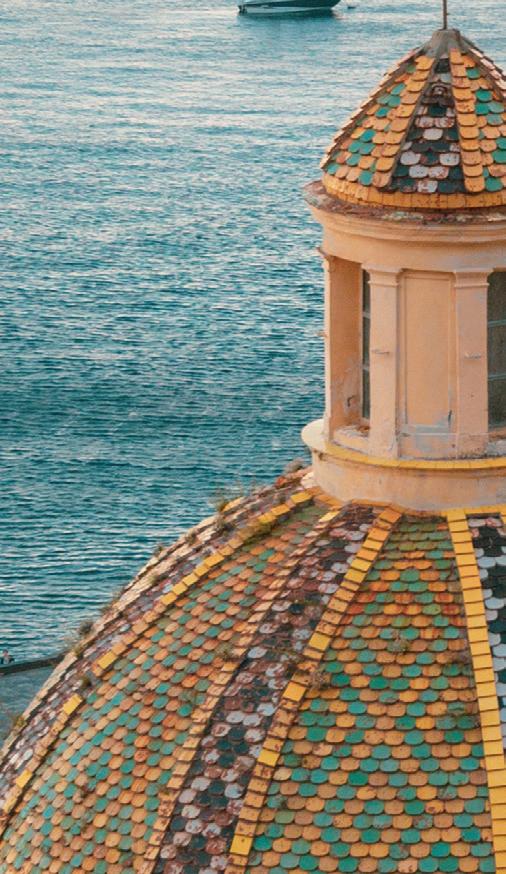
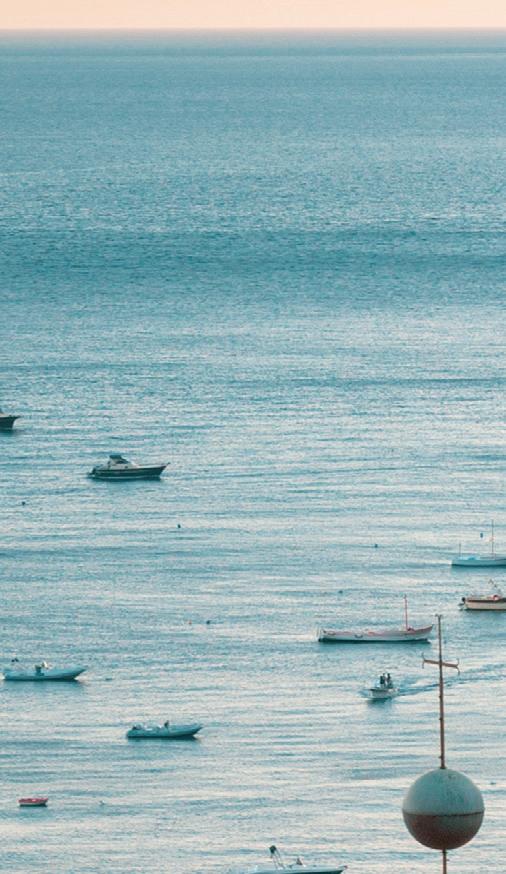
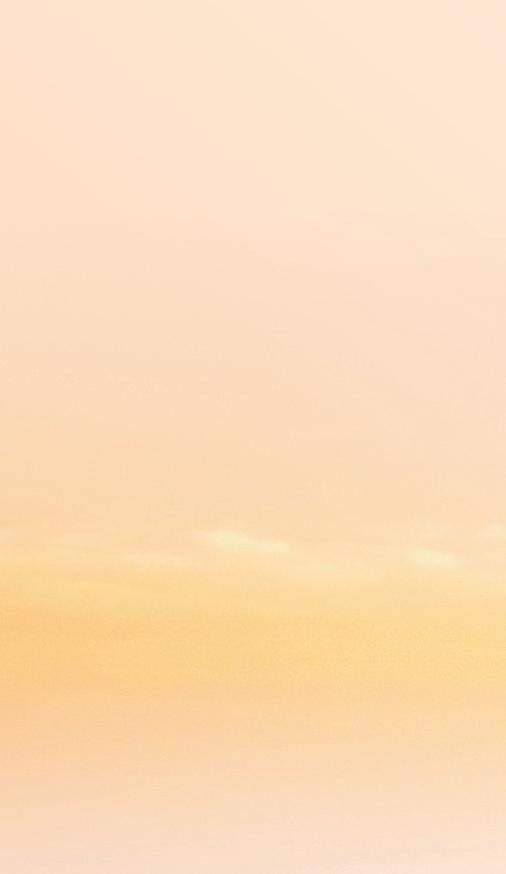
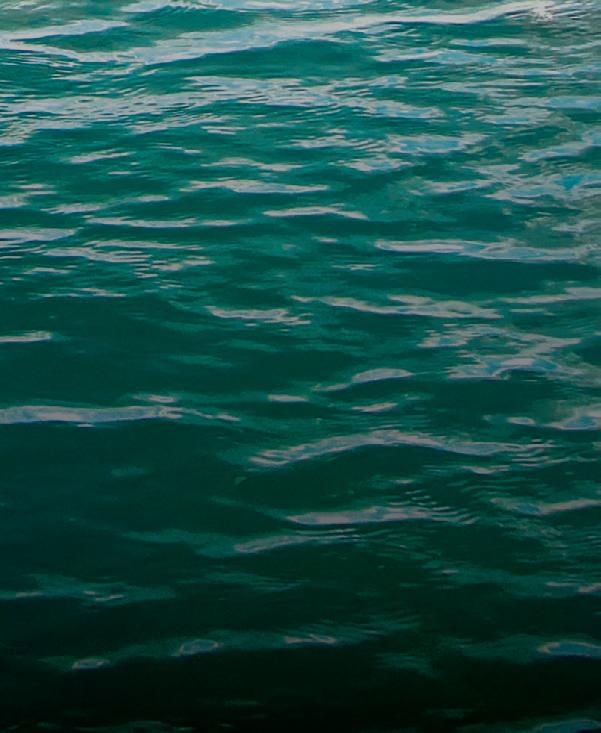
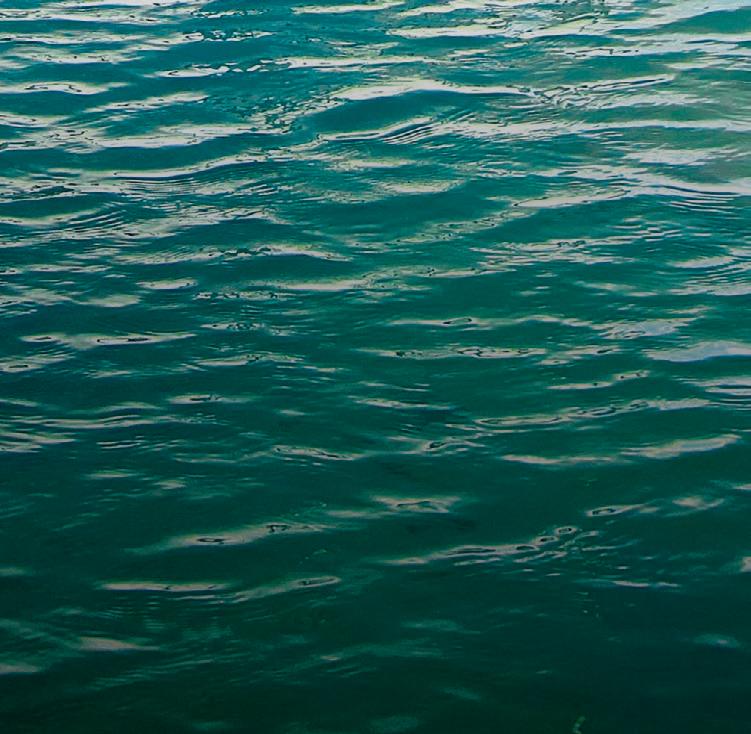
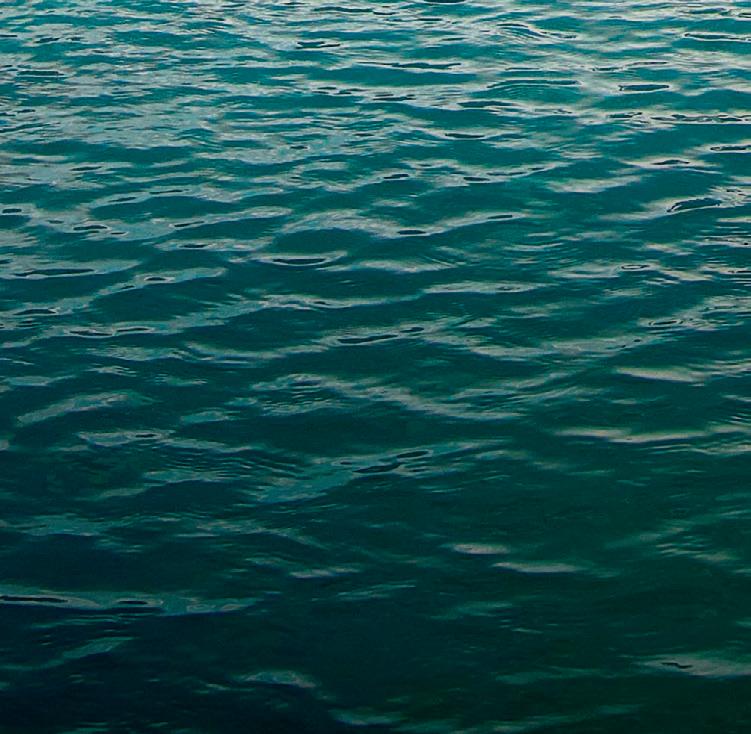

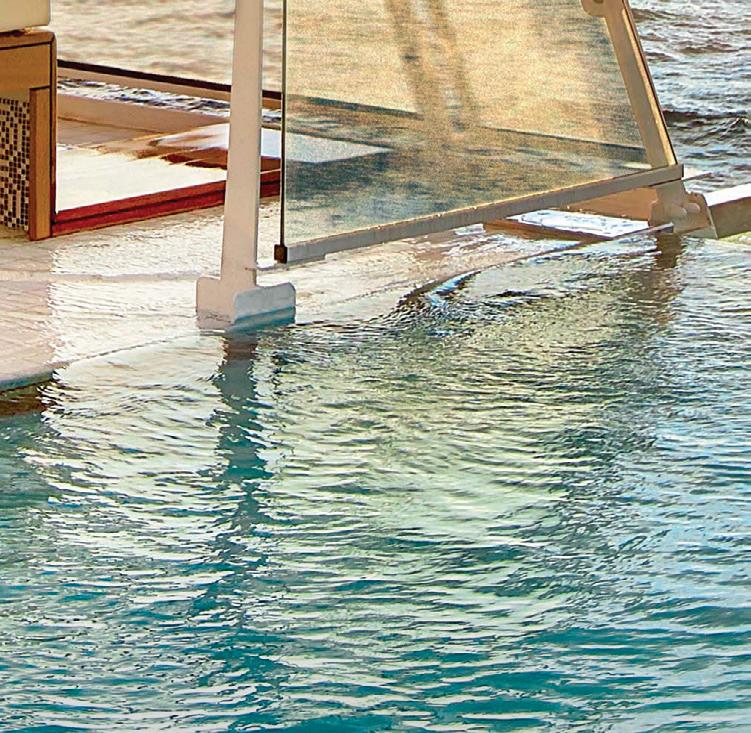

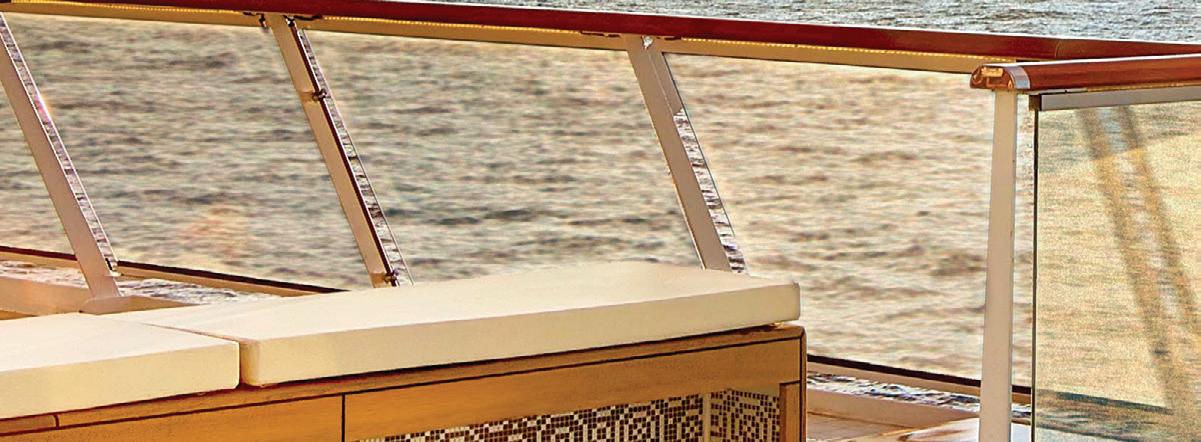
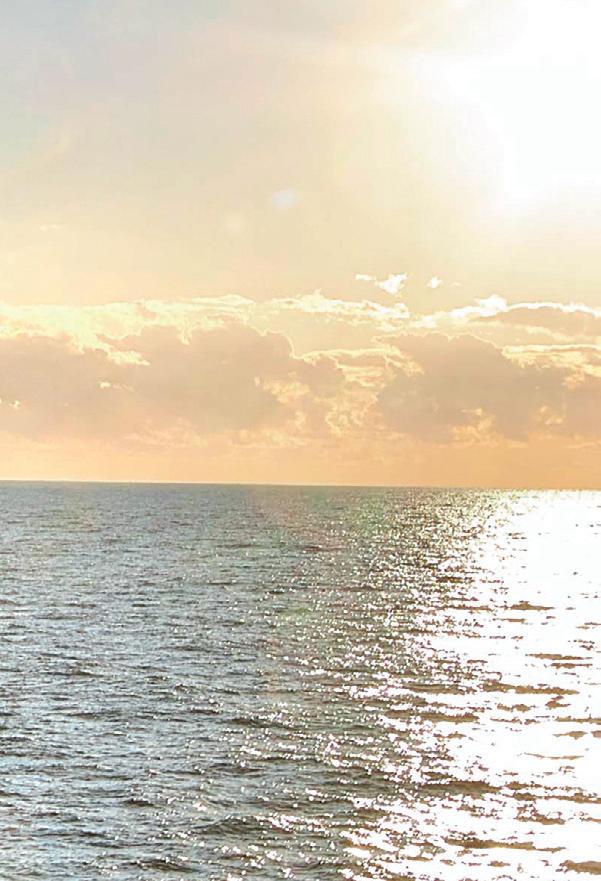
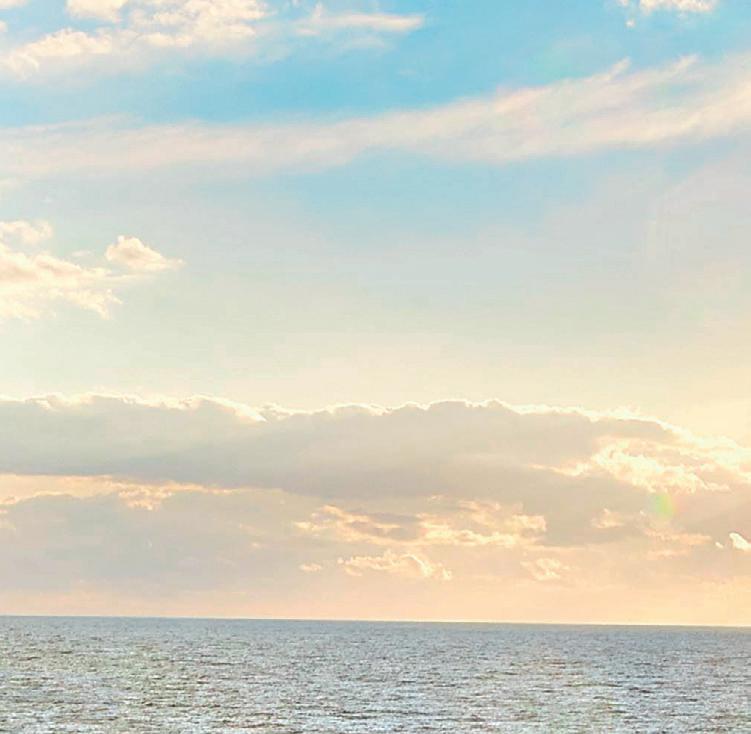
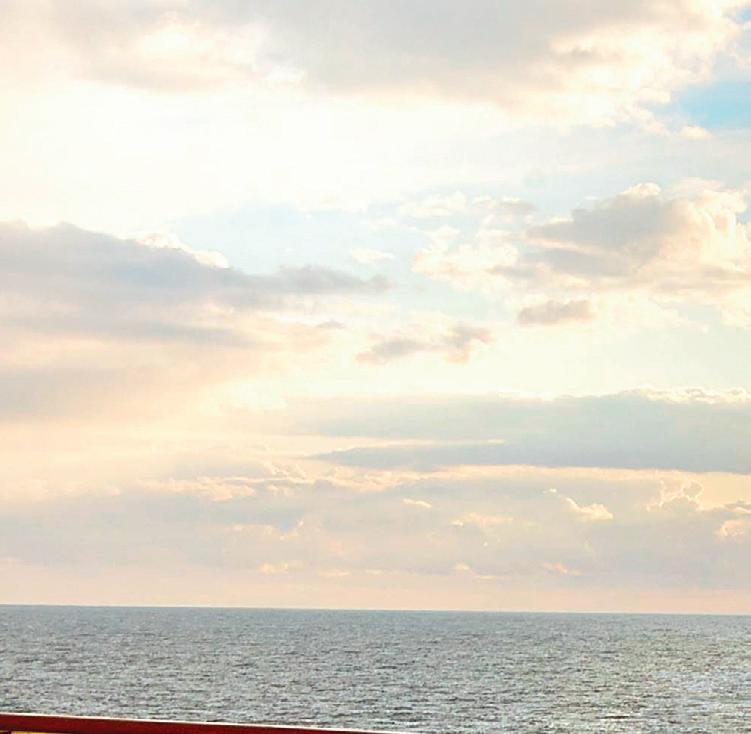

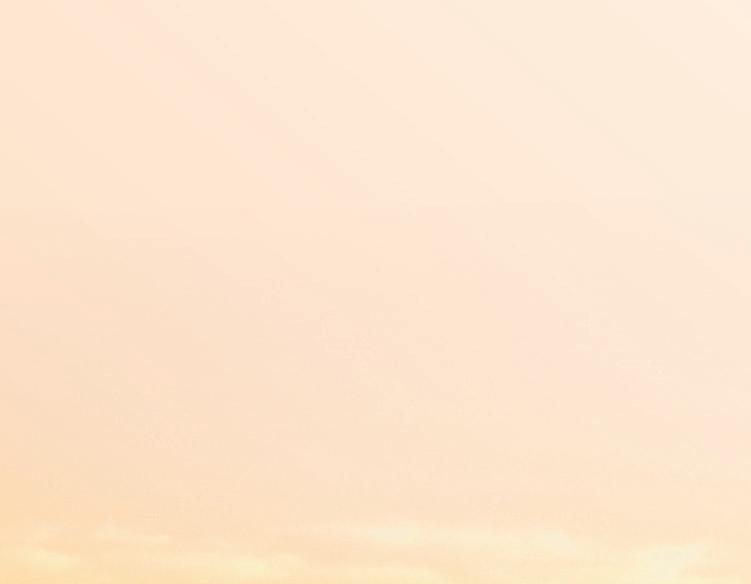


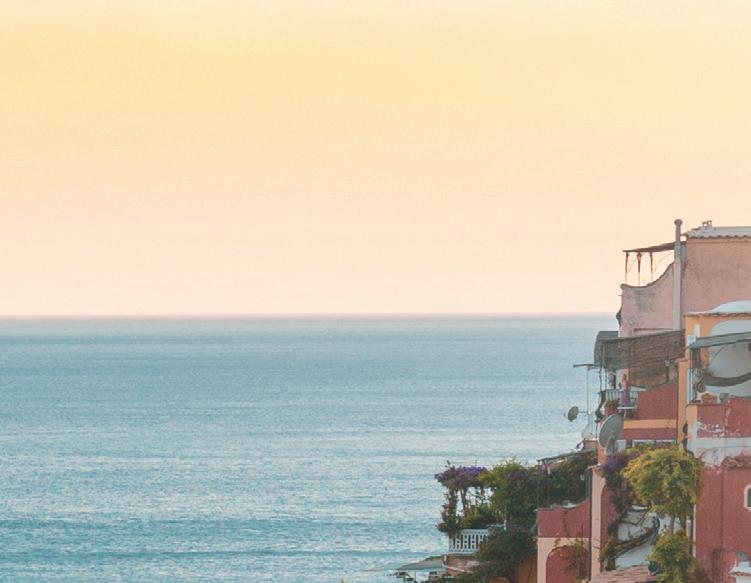


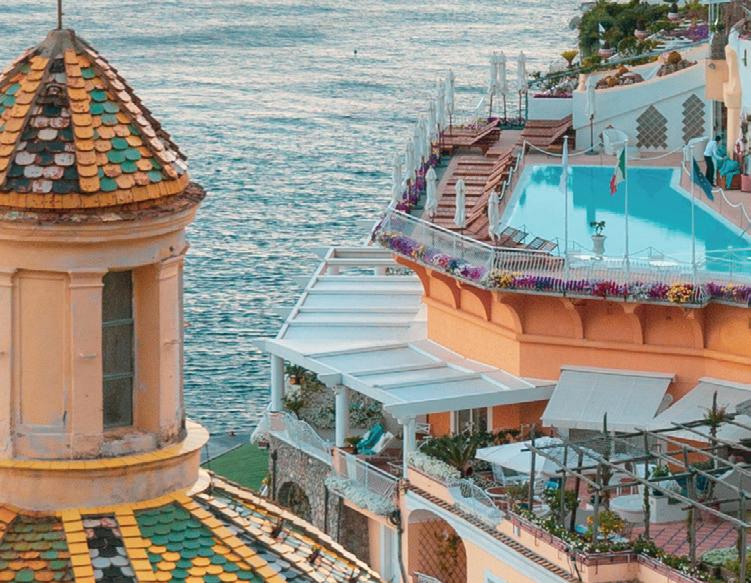

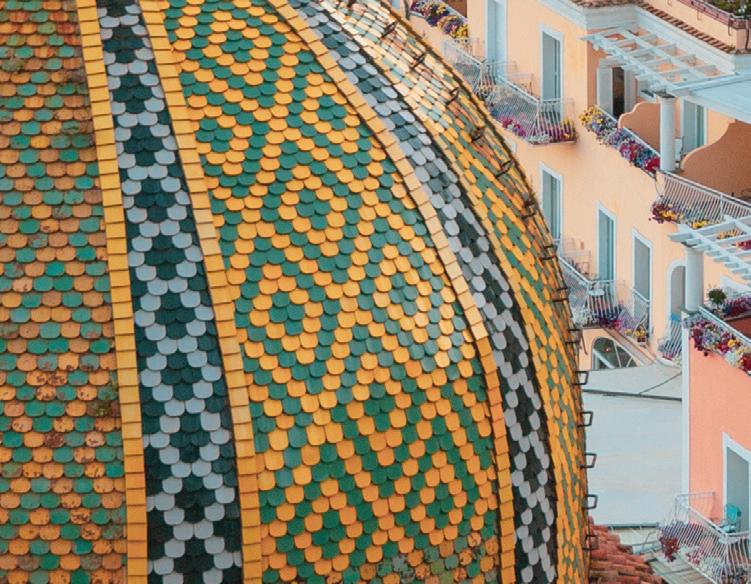

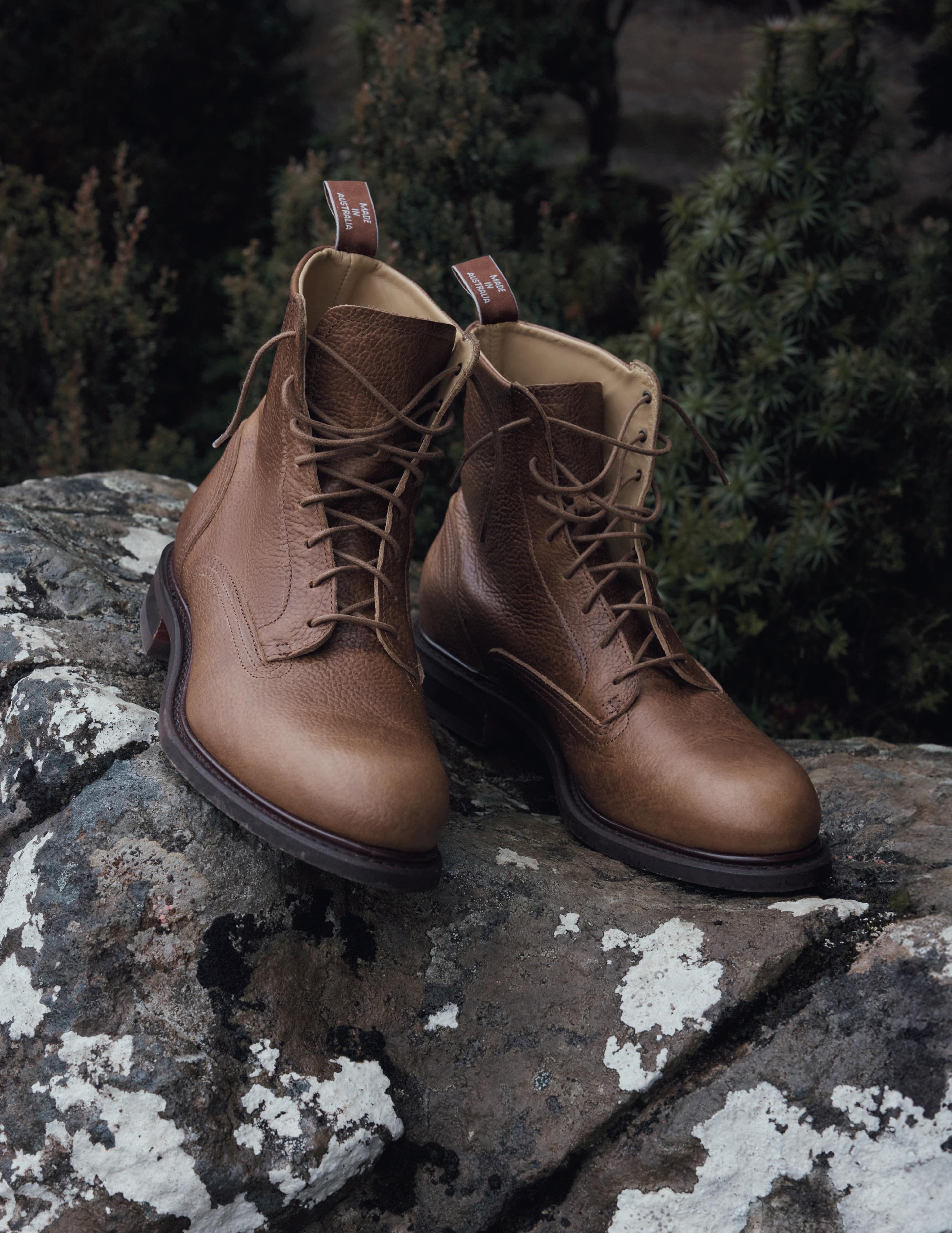

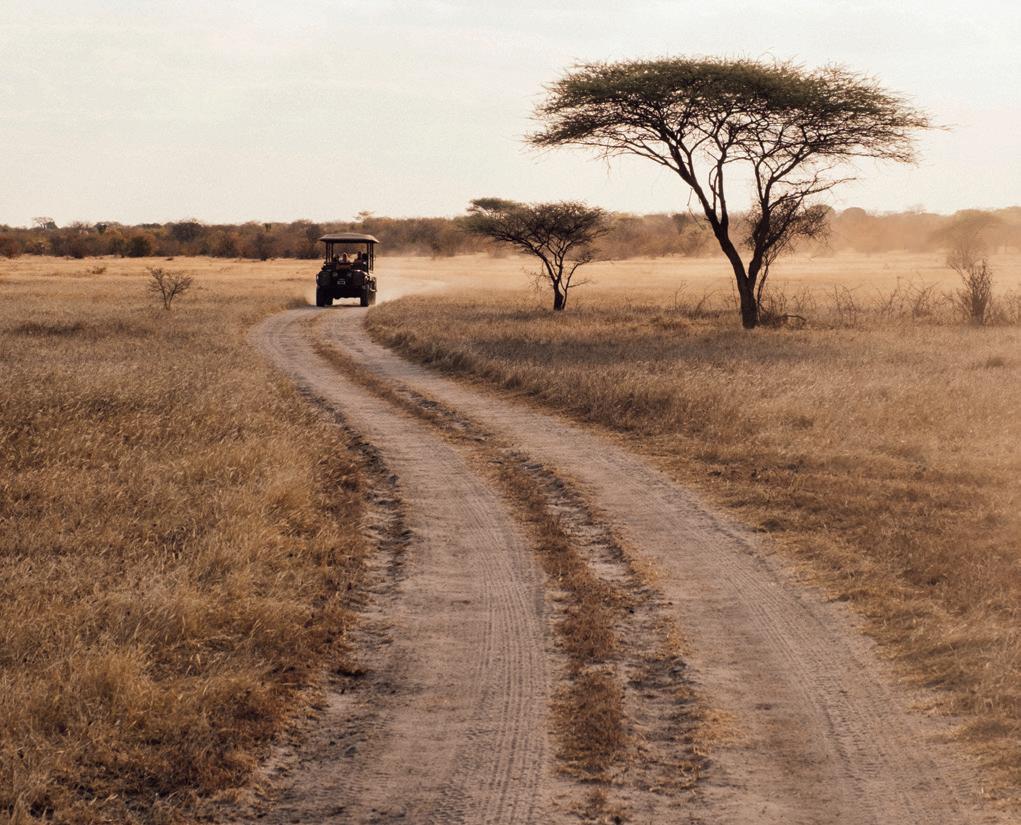
113 State of play: Set out from culture capital Melbourne to explore the distinct regions of this surprising state
128 On The Inside: Vermelho, Portugal
130 Creative Process: Alfred Lowe
132 Foundations: Museo Di Castelvecchio, Verona
134 The Statement: Noguchi coffee table
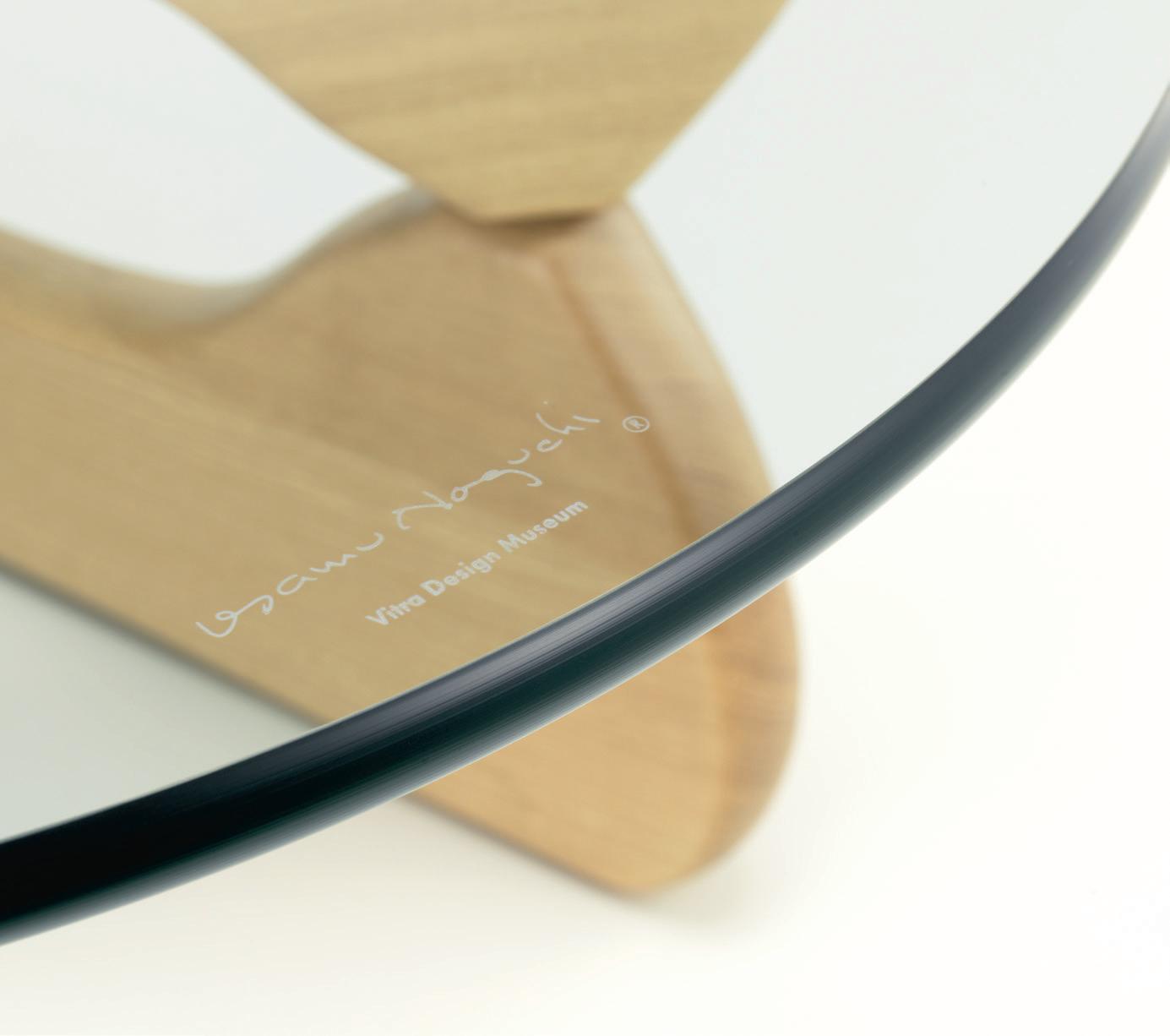
136 Packing List: Fashion for travelling in style
140 The Classic: Hunter boots
144 Peak Performance: Meet four specialist consultants who give top business leaders the edge
150 View From The Top: Jennifer Mar Young, CEO, CareerTrackers
152 Clock Wise: Geoffrey Perez, global head of luxury, Snap Inc.
156 Upstart: Coviu
158 Small Business: How to access sophisticated digital solutions without having in-house tech experts
On board
161 Inflight entertainment
166 Health, safety and security on board and when you land
170 Games
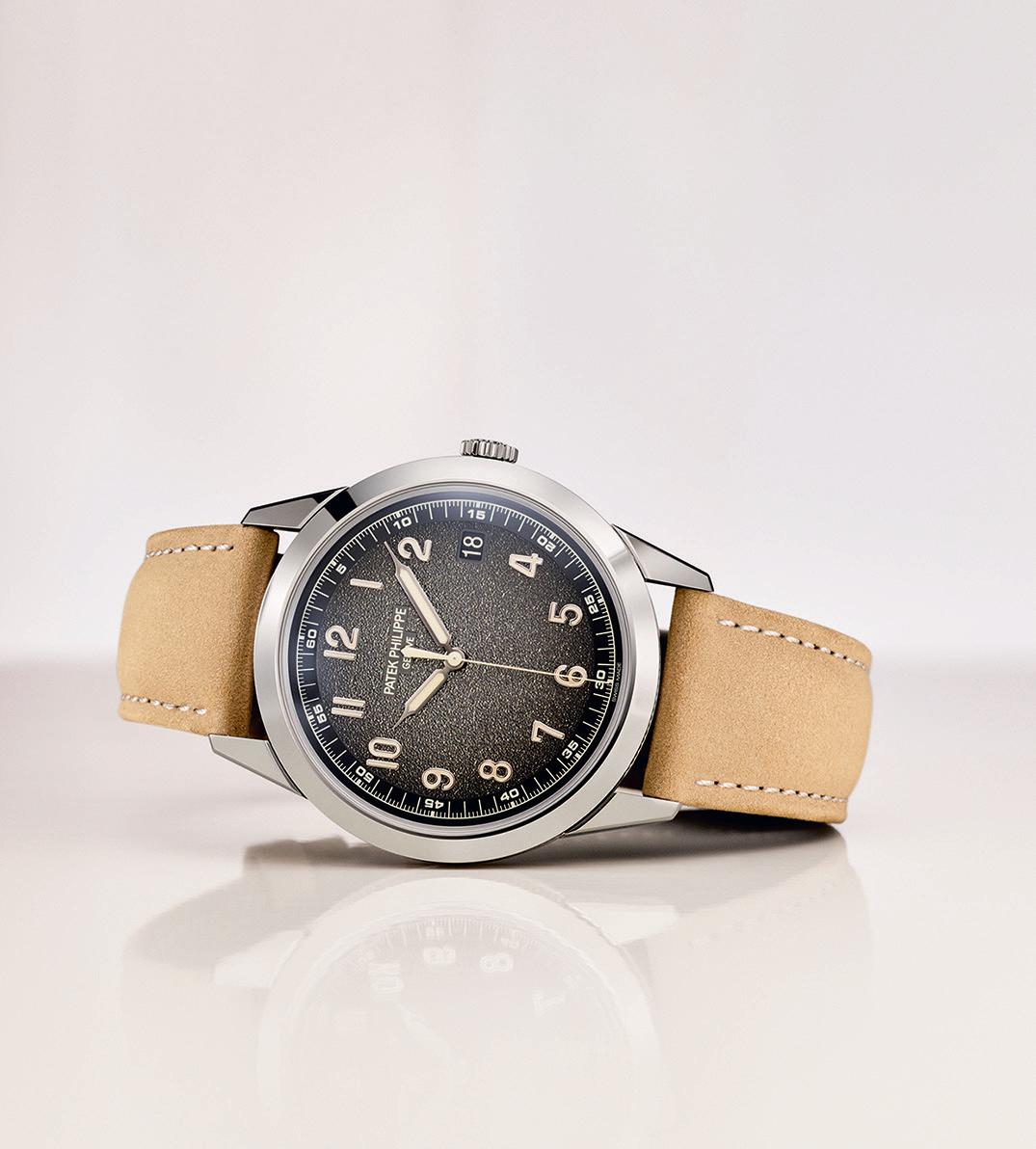

Editorial
Editor-in-Chief
Kirsten Galliott
Content Director
Genevra Leek
Deputy Content Director
Faith Campbell
Content Manager
Natalie Reilly
Digital and Content
Operations Lead
Hana Jo
Online Editor
Christina Rae
Managing Editor, Qantas Hotels

Bridget de Maine
Digital Producer
Anneliese Beard
For editorial inquiries, contact: qantaseditorial@mediumrarecontent.com
Head of Sales, Travel and Luxury
Tony Trovato
+61 404 093 472
National Sales Manager, Travel
Callum Bean
+61 404 729 224
Senior Account Manager, NSW
Crystal Wong
+61 420 558 697
Senior Account Manager, NSW
Anthony Sullivan
+61 408 447 148
Sales Manager, Qld, WA and SA
Sarah Harding
+61 403 699 867
Senior Account Manager, Victoria
Miranda Adofaci +61 410 387 707
Senior Account Manager, Victoria
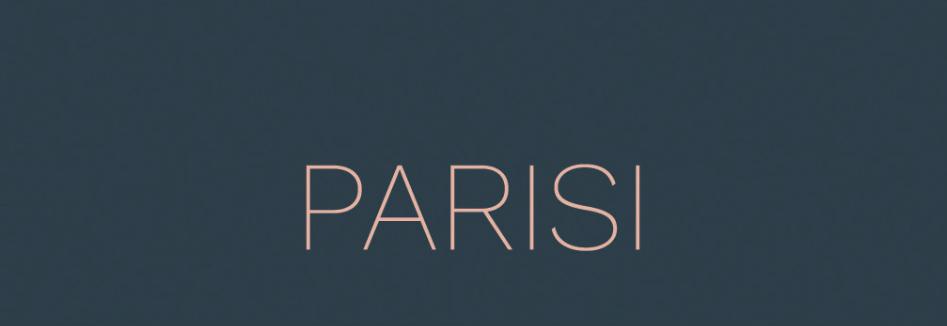
Jo Farrugia +61 450 968 882
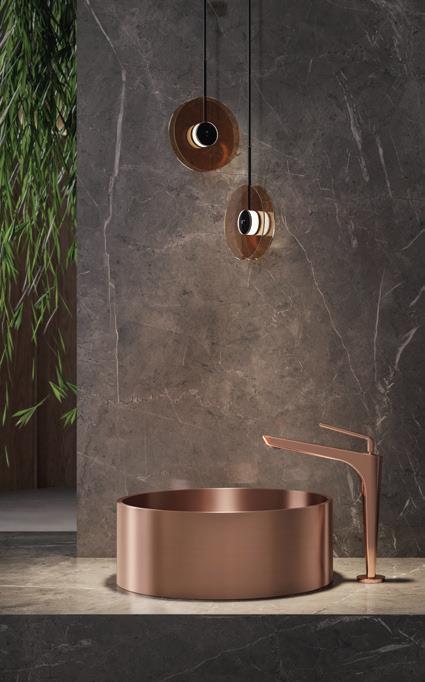


Digital Sales Director
Mike Hanna +61 402 640 095
Digital Campaign Manager and Product Specialist

Anna Delgado +61 404 855 041
Implementation Executive, Travel and Luxury
Ammara Mumtaz +61 480 223 837
Creative Director
Tony Rice
Art Directors
Kate Timms
Nick Clark
Visual Director
Elizabeth Hachem
Copy Director
Rosemary Bruce
Deputy Copy Director
Sandra Bridekirk
Copy Editors
Pippa Duffy
Nick Hadley
Production Manager
Chrissy Fragkakis
International Representatives
Greater China and Japan
Peter Jeffery +852 2850 4013 peterjeffery@asianimedia.com
South-East Asia and the UK
Nick Lockwood +65 9776 6255 nick.lockwood@ pharpartnerships.com
United States
Ralph Lockwood +1 408 879 6666 ralph.lockwood@ husonmedia.com
For advertising inquiries, contact: qantasadvertising@mediumrarecontent.com
Rare Creative Strategy and Partnerships
Head of Rare Creative Paulette Parisi Content and Partnerships Director Mark Brandon Senior Content
Editor Natalie Babic Partnerships Editor Helen Martin Senior Writer Terry Christodoulou Creative
Director Philippa Moffitt Art Director Georgia Dixon Designer Mark Gattellari Strategy and Insights
Director Jane Schofield Senior Strategy Manager Natalie Pizanis Commercial Insights Manager Melissa
Bruce Qantas Senior Partnerships Manager Alana Baird Qantas Loyalty Partnerships Manager Molly
Maguire Content and Events Campaign Manager Jessica Manson
For Rare Creative inquiries, contact: rarecreative@mediumrarecontent.com
Managing Director Nick Smith Chief Commercial Officer Fiorella Di Santo Head of Content, Travel and Business Kirsten Galliott Head of Design, Travel and Business Tony Rice Head of Audience Intelligence Catherine Ross Financial Controller Leslie To Finance Manager Yane Chak Junior Accountant Yongjia Zhou
Rare Content Agency.
Rare Content Agency’s Privacy Policy, please visit mediumrarecontent.com.

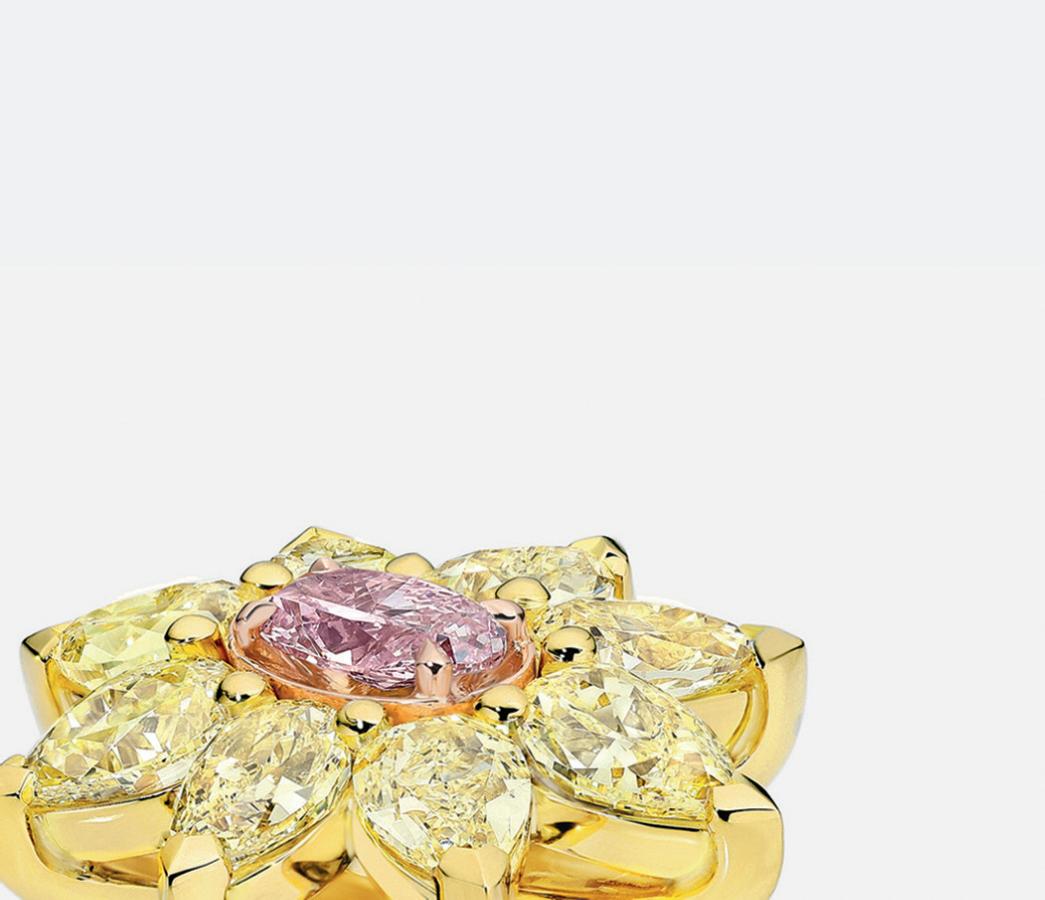

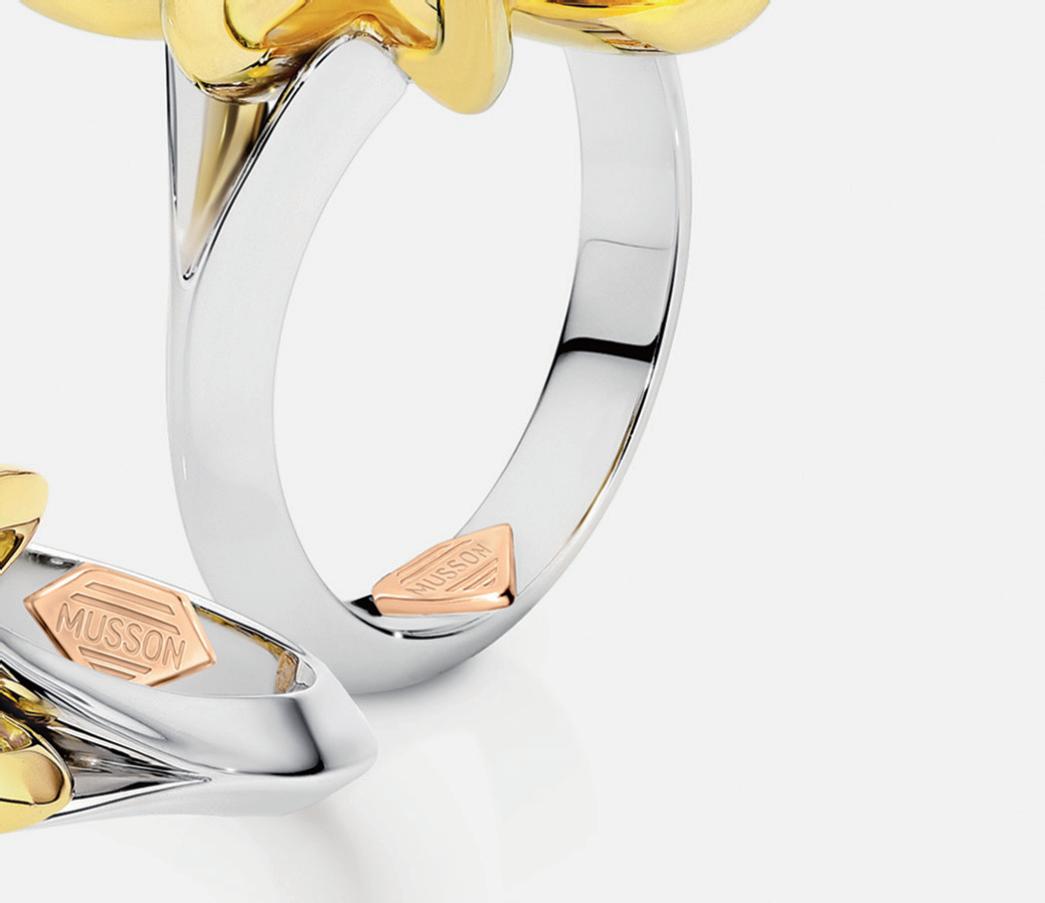

Book a Winter escape and prepared to be pampered at The Langham, Sydney. A city sanctuary tucked away in an historic neighborhood, providing easy access to The Rocks, Walsh Bay and Barangaroo. Guests can relax into 96 spacious, sun-filled rooms or luxury suites with private cityside or harbourside terraces.
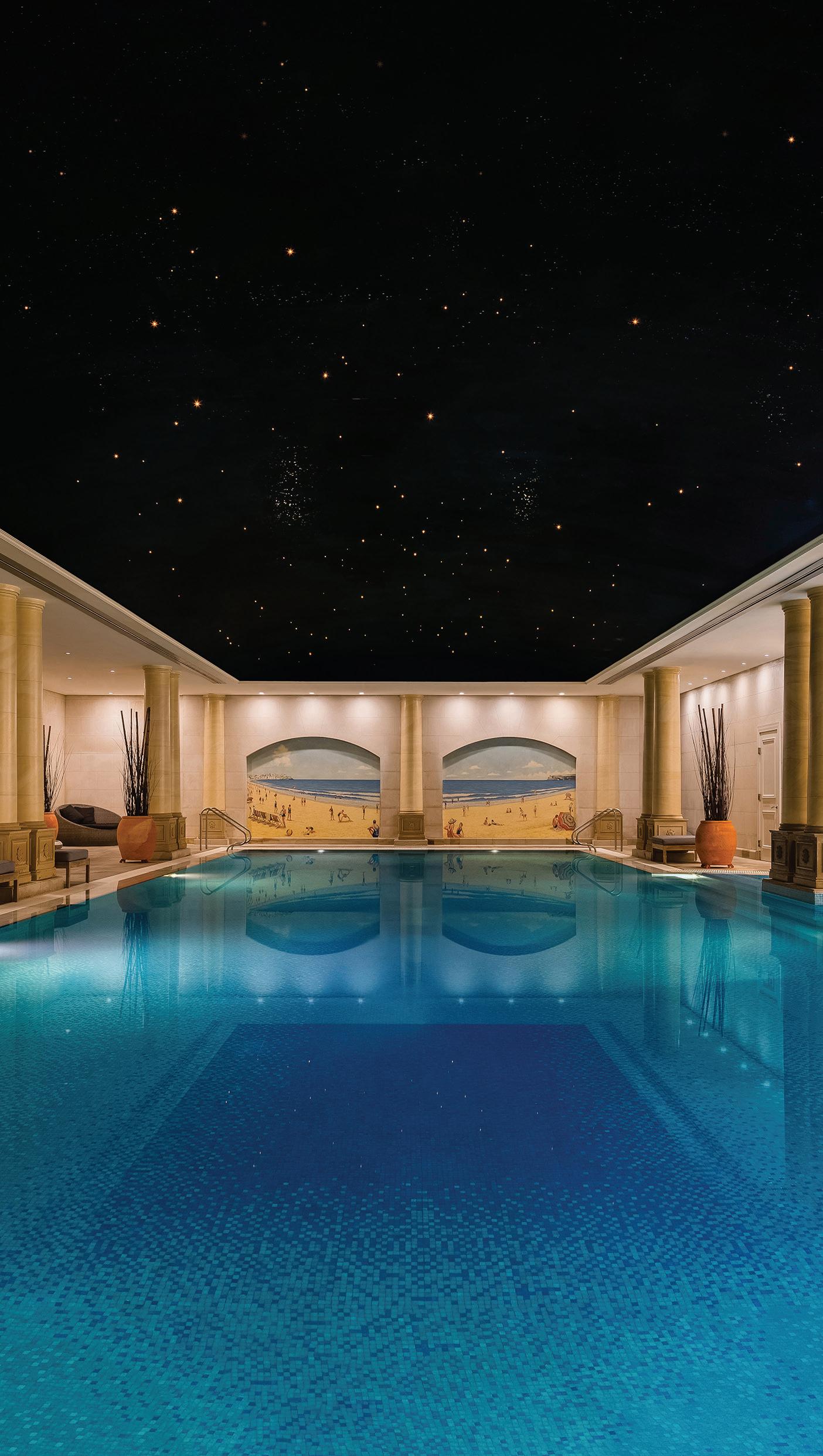
langhamhotels.com
+61 (2) 9256 2222
tlsyd.resv@langhamhotels.com
No matter what else is happening in the world, we’re prioritising travel like never before.
CommBank iQ, a joint venture between Commonwealth Bank and Quantium, looked at the financial data of seven million Australians and found that while many of us – particularly younger generations – are drastically cutting back on spending, there’s one area that bucks the trend. Travel has surged, up 39 per cent compared to the first quarter last year. When the cost of living bites, there are some things we’ll give up but travel, it seems, is non-negotiable.
We all know why. Yes, we’re playing catch-up on everything we missed out on during the pandemic. Yes, we’re crisscrossing the globe to see friends and family. And yes, yes, yes, we now truly understand how travel enriches our lives in a way that few other things can. Experience trumps everything. One Washington State University study even states that regular travel over the course of a year makes us seven per cent happier overall.
Put all the statistics aside. Close your eyes and relive a travel memory. Perhaps you’re at a night food market in Bangkok, tucking into fish cakes and sesame dumplings. Or watching puffins swoop at the famous Reynisfjara black sand beach in Iceland. Or securing the last tickets to Coppélia at La Scala in Milan.
I’m doing this exercise right now. It’s a drizzly day. Cold. So I’m back in Tahiti. It was about 10 years ago and I was in one of those ridiculously “wow” over-water bungalows. I swam with dozens of baby sharks. I dined under the heavens and saw my first shooting star. I lolled about like a princess. Life was frenetic and it was exactly the holiday I needed. This issue is all about renewal and the power of travel to transform, connect and refresh.
What do you need right now and how can you make it happen?
Kirsten Galliott Editor-in-Chief
kirstengalliott
Our writers are not armchair travellers. Rest assured any assistance we accept from the travel industry in the course of preparing our stories does not compromise the integrity of our coverage.
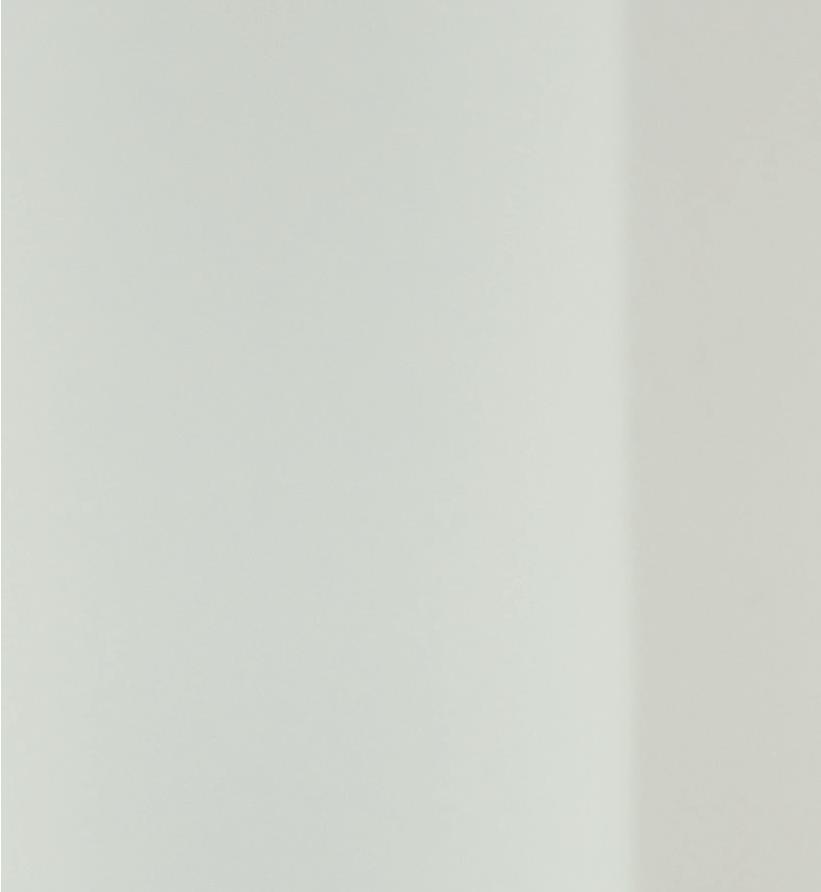
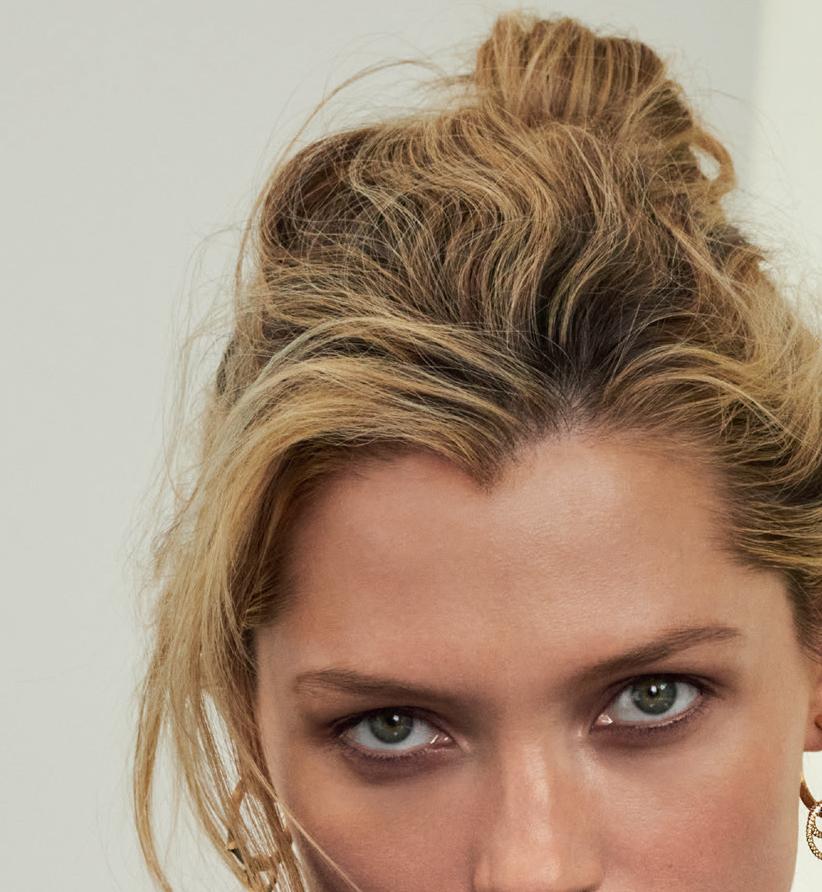
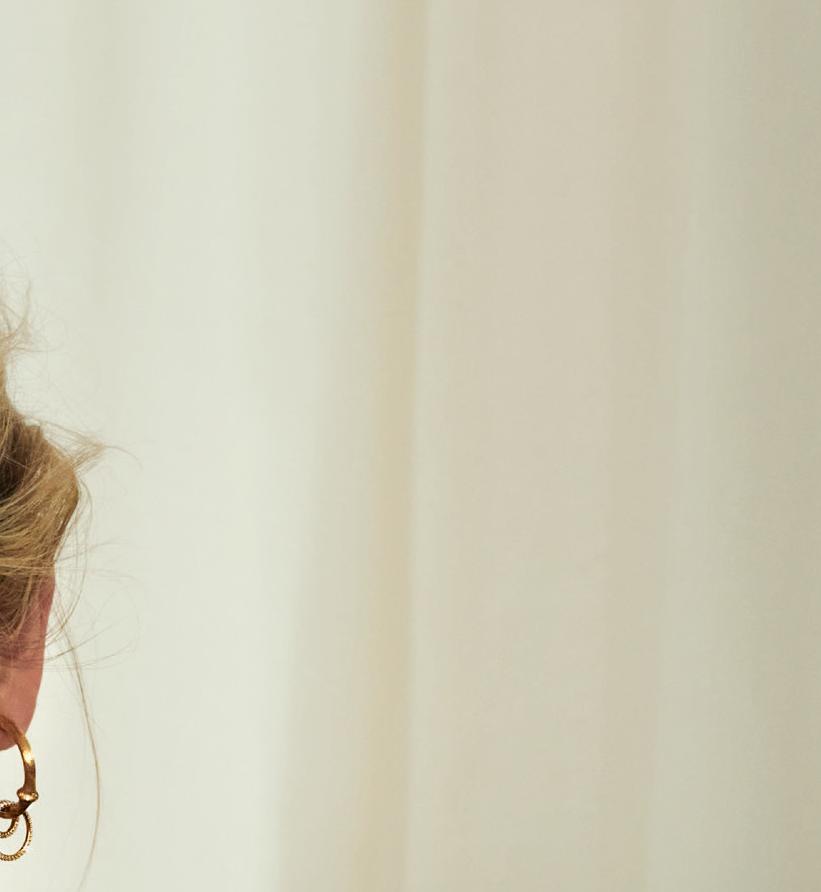






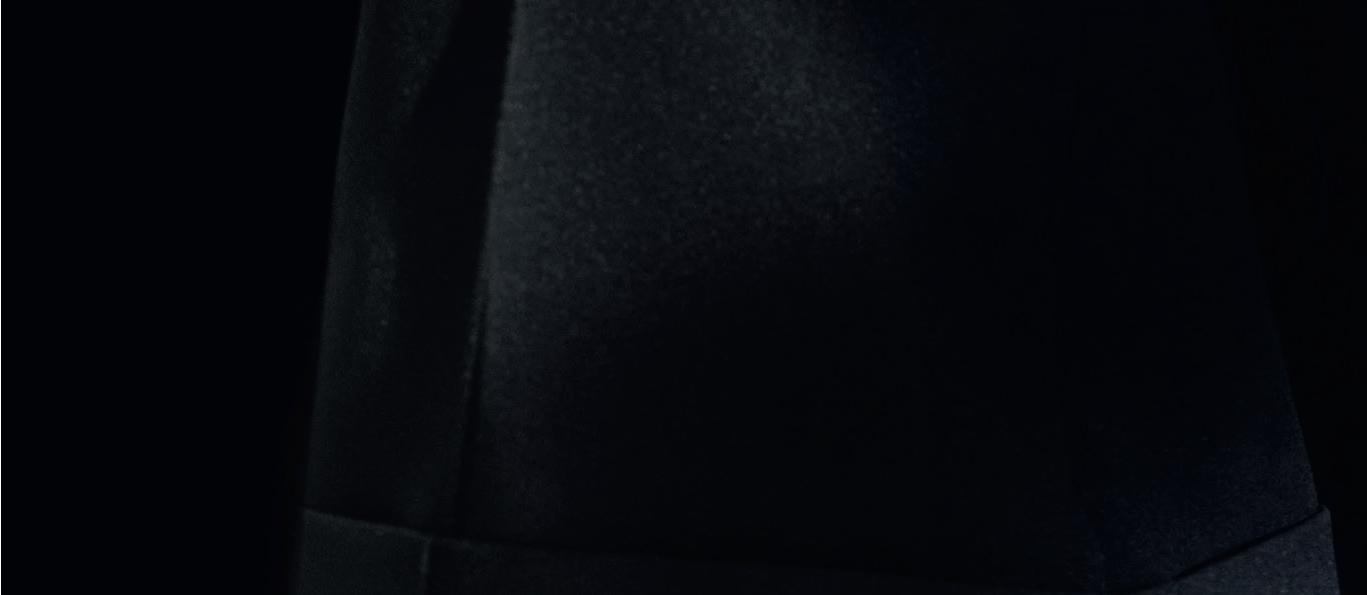

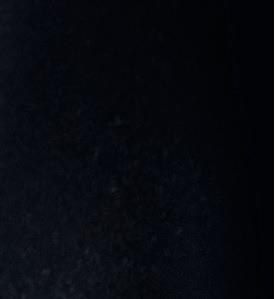




 Australia ADELAIDE, Aurum Jewels BRISBANE, McKinneys Jewellers HOBART, Claudia Jewellers
Australia ADELAIDE, Aurum Jewels BRISBANE, McKinneys Jewellers HOBART, Claudia Jewellers
Anyone who’s flown recently knows that demand for travel is very high, particularly to head overseas. I recently travelled to Istanbul for the International Air Transport Association annual meeting and, talking to other CEOs, it’s clear that restoring international capacity is one of the biggest issues facing airlines right now. There’s still a mismatch between supply and demand for overseas routes but the good news is that, from October, we’re adding about one million seats to the Qantas and Jetstar international network over 12 months. We’ve taken delivery of three new Boeing 787 Dreamliners and our fleet of 10 A380s is returning to service, which means adding more flights and seats to some of our most popular destinations, as well as introducing new routes, like Sydney to New York via Auckland. From October we’ll fly four times a day from Australia to Tokyo with two daily flights from Sydney to Haneda and daily services out of Brisbane and Melbourne. We’re also putting the A380 on our Hong Kong route, raising the number of passengers who can travel on each flight by almost 200. And we’re adding flights to other popular routes, such as Melbourne to Delhi, which will double to six per week in peak season, and Melbourne to Los Angeles, rising from seven to nine per week. This will all help international capacity get to about 100 per cent by March next year, up from 44 per cent 12 months ago and 84 per cent today.
As we add capacity, we’re also hiring and training more pilots, cabin crew and engineers. We’ve broken ground on our flight training centre in Sydney, which will train up to 4500 Qantas and Jetstar pilots and cabin crew a year from 2024. Plans are progressing on our Engineering Academy, where we’ll train up to 300 engineers a year.
And, as usual, our customers are at the centre of everything we do. We’re updating our Qantas app to make it even easier to navigate and manage your booking. We’ll roll out more improvements in the coming months, including being able to track your bags. We’re always looking at what we can do to make your journey better.
Thanks for choosing Qantas.
Alan Joyce CEO, Qantas
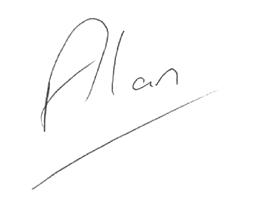
The $400-million Qantas Climate Fund was established to provide investments for projects, technologies and solutions that are critical to meeting the national carrier’s sustainability targets as it moves towards net zero in 2050. Qantas has high-integrity carbon offsets, sustainable aviation fuel and operational efficiencies in its sights and is calling for expressions of interest from businesses that are seeking investment.
Once onboard, connect your own device to Qantas Free Wi-Fi on domestic flights in three simple steps:
Enable Aeroplane Mode and select the “Qantas Free Wi-Fi” network in your Wi-Fi settings.
Follow the prompts on the “Welcome Onboard” screen to connect.
Once you’re connected, you’re ready to access the internet and start exploring.
Having trouble connecting? Make sure you’re connected to the “Qantas Free Wi-Fi” network and go to wifi.qantas.com in your preferred browser to start the connection process. To ensure an enjoyable flight for everyone, keep flight mode activated, switch your device to silent and refrain from voice and video calls.
We acknowledge the Traditional Custodians of the land on which we work, live and fly. We pay our respects to Elders past and present and are committed to honouring Australian Aboriginal and Torres Strait Islander peoples’ unique cultural and spiritual relationship to the land and water.
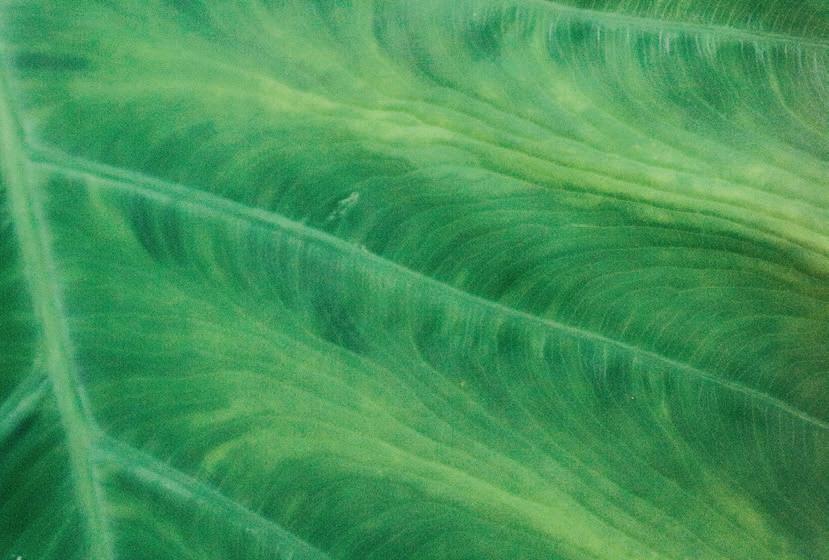
“The devotion to excellence is how one earns a trusted reputation. Which is why I’m honoured to partner with a company that shares my passion for performance.
LSH Auto Australia is dedicated to building trust by delivering your premium motoring needs while striving to provide an exceptional customer experience, every time.”
Scan
 Li Cunxin AO Artistic Director, Queensland
Li Cunxin AO Artistic Director, Queensland
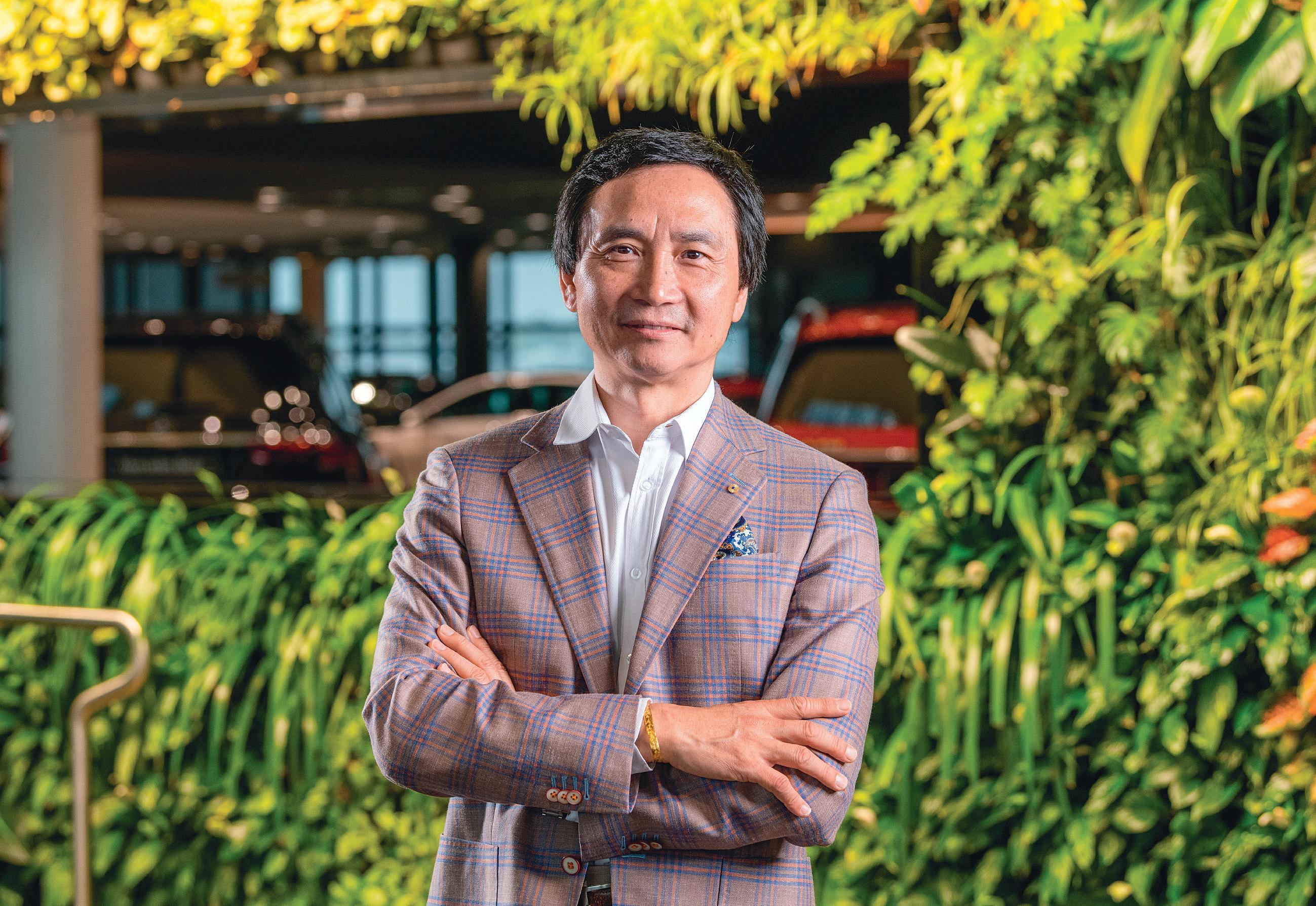 Ambassador
Ambassador
Australia’s leading Mercedes-Benz retail group
YOU COME FIRST. ALWAYS.
Mercedes-Benz Sydney | Mercedes-Benz Melbourne | Mercedes-Benz Brisbane | AMG Sydney | Mercedes-Benz Melbourne Airport Ballet and LSH Auto AustraliaSunrises over the Golden Gate Bridge, air shows above football games and pastel-painted streets. Here, three Qantas travellers share highlights from their recent trips.

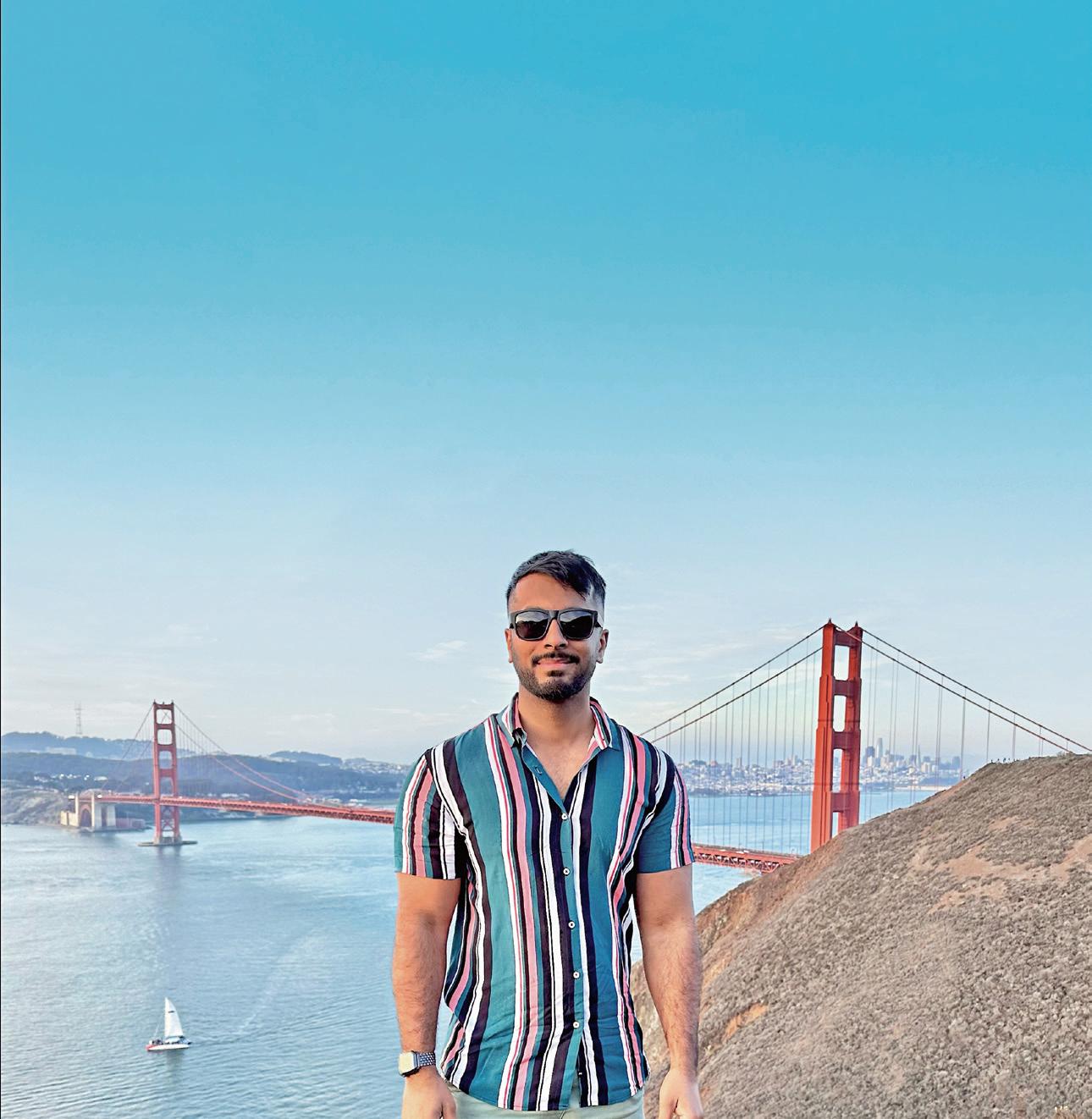
Qantas now flies direct from Sydney to San Francisco
Cornelius Paul
Frequent Flyer Status: Platinum
“I was mesmerised by the Golden Gate Bridge on my recent trip to San Francisco. I visited it several times at different stages of the day; late evening was the best. I also loved Muir Woods, a 35-minute drive north of the city centre. It’s known for its redwood trees, which are huge. I was able to go to the International First Lounge on this trip – inside was like a fine-dining restaurant! The crew on my flight were great; they gave me an extra set of pyjamas for my sister, who couldn’t join me on this holiday. Those extra details made the experience so much better.”
Lucy Dye
Frequent Flyer Status: Bronze
“My partner and I went to San Francisco as part of a five-week United States holiday – it was the trip of a lifetime. We caught a cable car up to Lombard Street – it’s meant to be one of the most crooked in the world – and then saw the Painted Ladies, that iconic row of beautiful pastel-coloured Victorian houses on Steiner Street. Boudin Bakery (boudinbakery.com) at Fisherman’s Wharf is well-known and we ordered croissants to eat overlooking a nearby pontoon. It was covered in sea lions and you got to see them up close. It was great.”
Brett Wiskar
Frequent Flyer Status: Silver
“My holiday started on a high, enjoying pastries and coffee at the Qantas Business Lounge at Brisbane Airport before boarding the plane. I stayed at Le Méridien (hotel.qantas.com.au/LeMeridienSanFrancisco), a fantastic hotel in the Financial District, with Chinatown just down the road. You must try the salt and pepper crab at local institution R&G Lounge (rnglounge.com).
I also managed to see the 49ers football team play at Levi’s Stadium. It was such a spectacle, with so much more going on than just the game – like fighter planes flying overhead!”
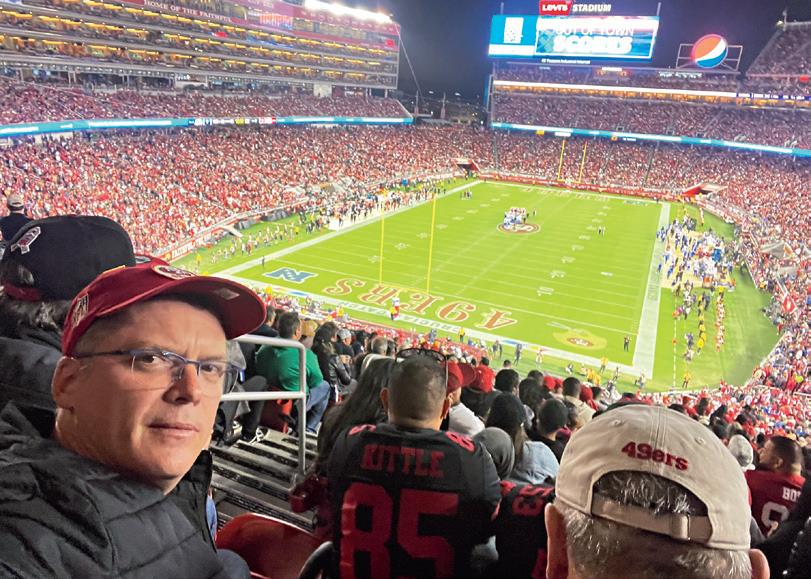

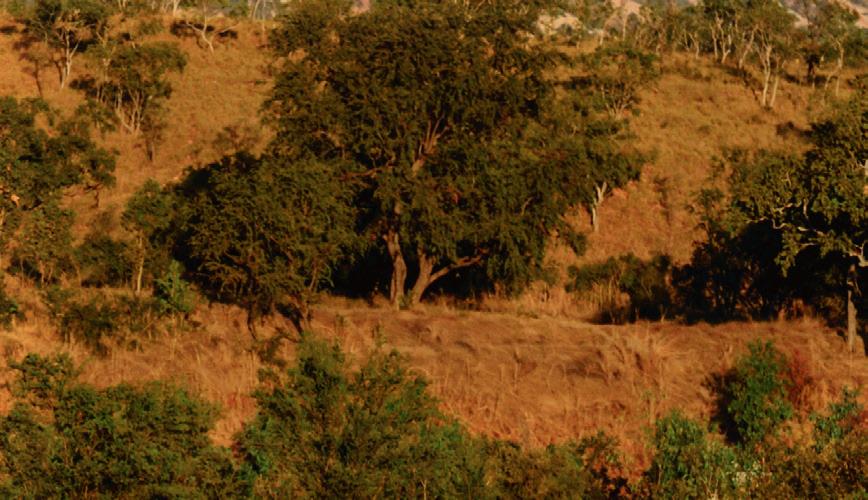
It’s Australia’s final frontier, a region rich in history spanning the dawn of man to the modern age. Parts of the Kimberley are so remote; you’ll be one of a handful that walk there. Here you will explore the wonders of this pristine environment, spot native wildlife, stay in exclusive camps and lodges and experience the oldest surviving culture in human history. Now it’s time to find your Outback Spirit.
2024 adventures now selling. Earlybird fares available, 13 days from $10,880* pp.


a lot.
Stay at the best of the best. Sydney’s #1 hotel on Trip Advisor. Little National Hotel rises above Wynyard Walk, moments from everything that defines the city. With a private rooftop lounge and bar, workspace, super-king plush beds, wellness centre by Technogym and more.



For business or leisure, Little National has it all in a heartbeat.
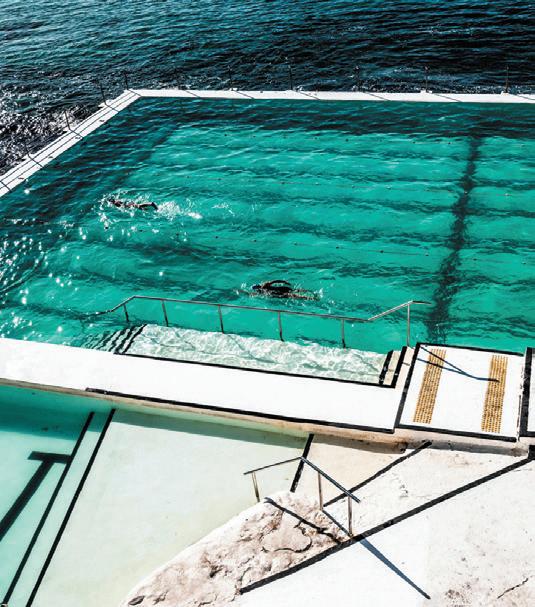
From $269*
*Per room. Subject to availability
26 Clarence Street Sydney 2000 NSW
+61 2 9135 0222
littlenationalhotel.com.au
Where
little things meanBondi Icebergs Pool
22 The hottest new bars and eateries across Australia

30 Feel the buzz in revitalised beach town Mooloolaba
40 Go for a spin in Kia’s electric three-row SUV
Manky Sally’s bar in Hobart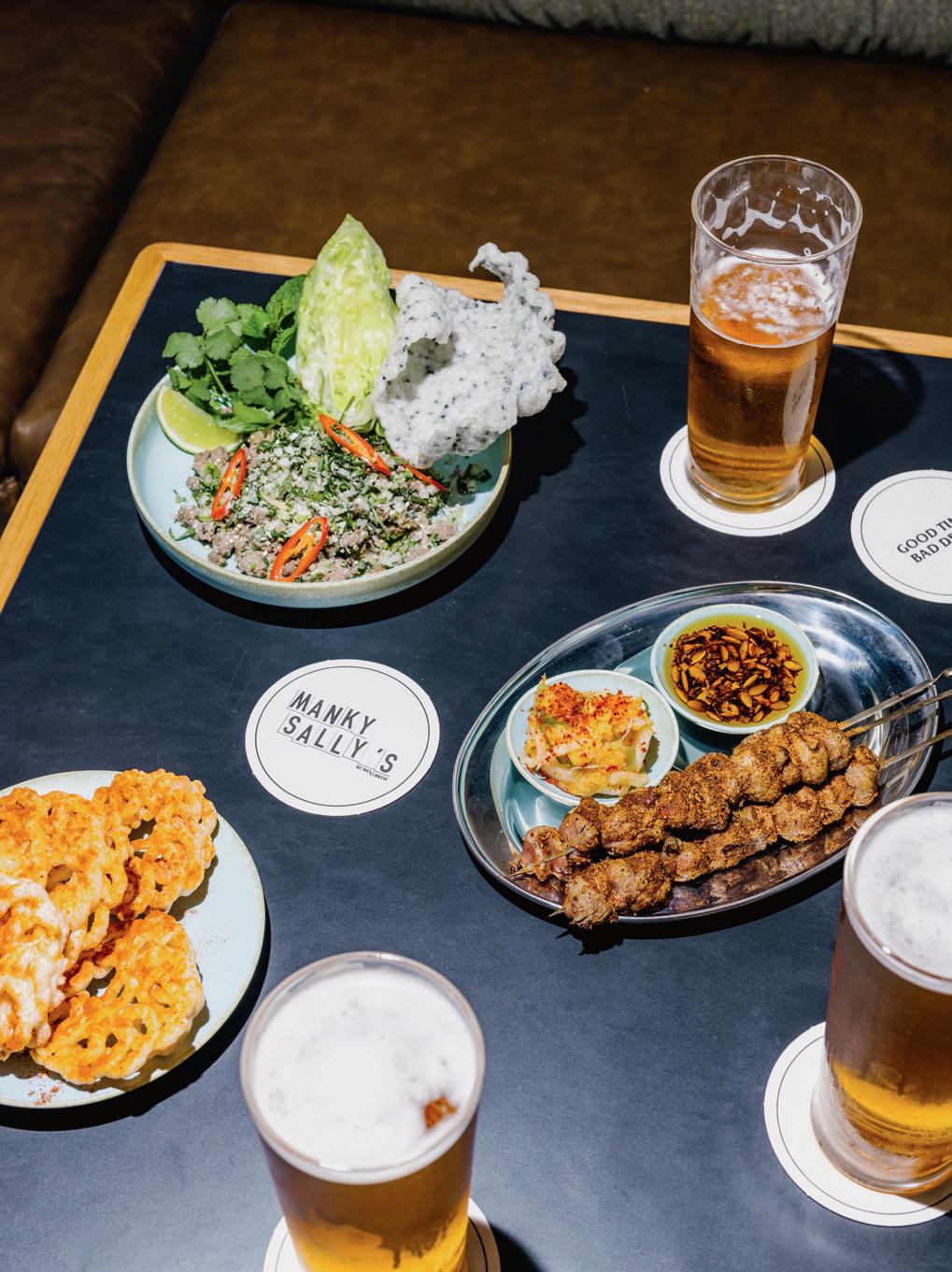
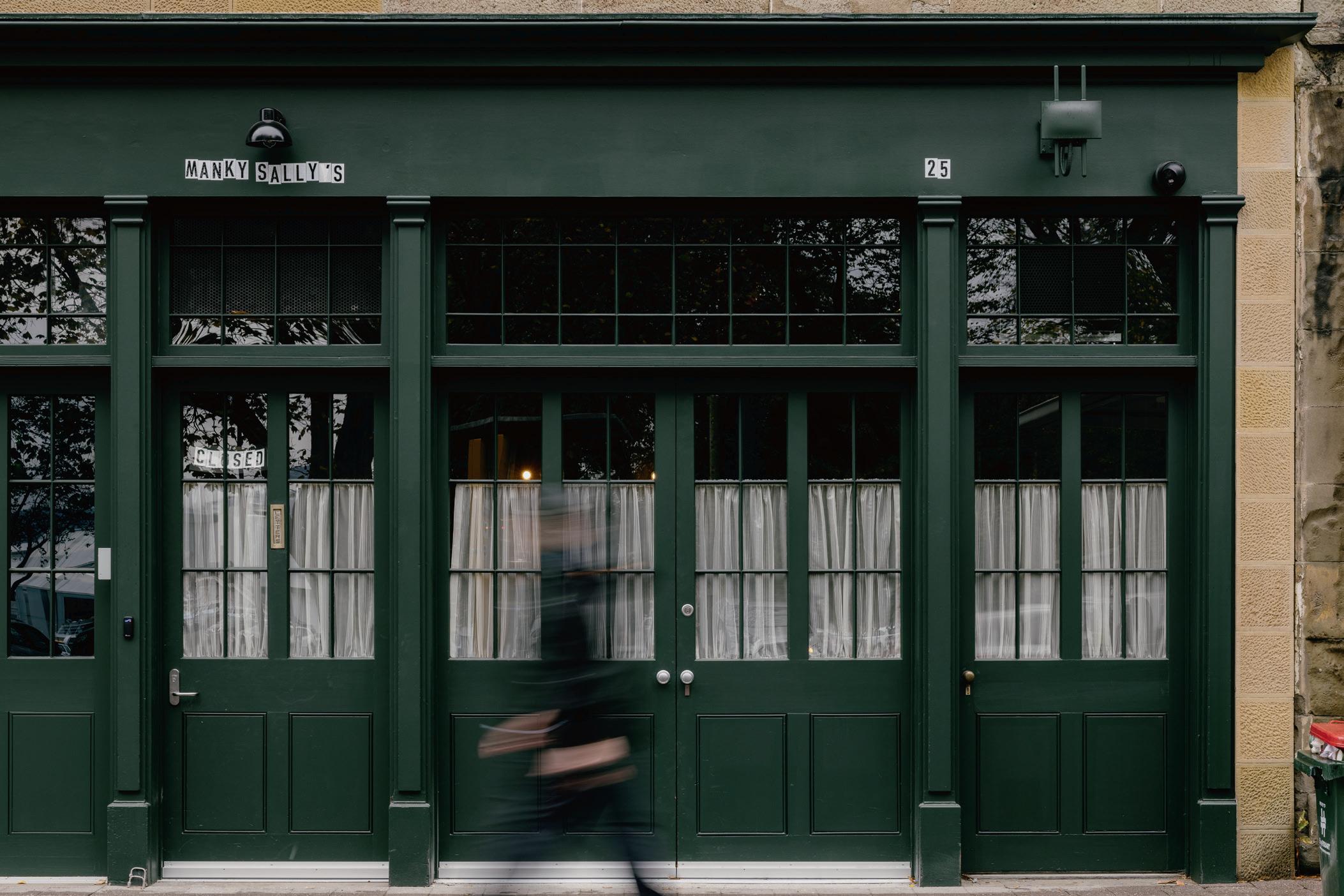

MONA reveals a drinking den and a four-seat Japanese restaurant opens in Melbourne.
Manky Sally’s
Moo Brew, Tasmania’s largest craft brewery, was born when MONA head honcho David Walsh found a beer bottle design he liked and thought it’d be a good idea to start a brewery and put something in it. Until now, the only way to find out exactly what ended up in those bottles was either to drink Moo Brew at a pub or order it online.
Now there’s a full-immersion option with the arrival of taphouse Manky Sally’s (opposite; moobrew. com.au) on Salamanca Place in Hobart, only a short walk from the ferry that takes visitors to and from Walsh’s legendary art museum. When you step through the discreet entrance into one of three retrocool drinking spaces, you can try any of Moo Brew’s core range of ales, lager and stout. Or, if you feel like playing guinea pig, sample one of the experiments the team concocts, such as the lemongrass and lime leaf American wheat beer that head brewer Jack Viney invented for the bar’s launch. There are also snacks by head chef Sam Bray, including venison larb or banh mi sliders with pâté and pickles.
In true MONA style, the décor is full of fabulous flourishes: teal velvet bar stools, tiger-striped onyx bar tops and a wall of 3000 amber bottles lit by LEDs. “Someone said that we’re a five-star dive bar,” says Moo Brew’s Lauren Sheppard, laughing. “I’ll take that.”
STORY BY ALEXANDRA CARLTONWith only four seats, Japanese kaiseki house Matsu (matsuxbar. com) in Footscray might be Australia’s most intimate dining venue. You’ll need a bit of luck to book; try on the website at 10pm on the first day of each month.
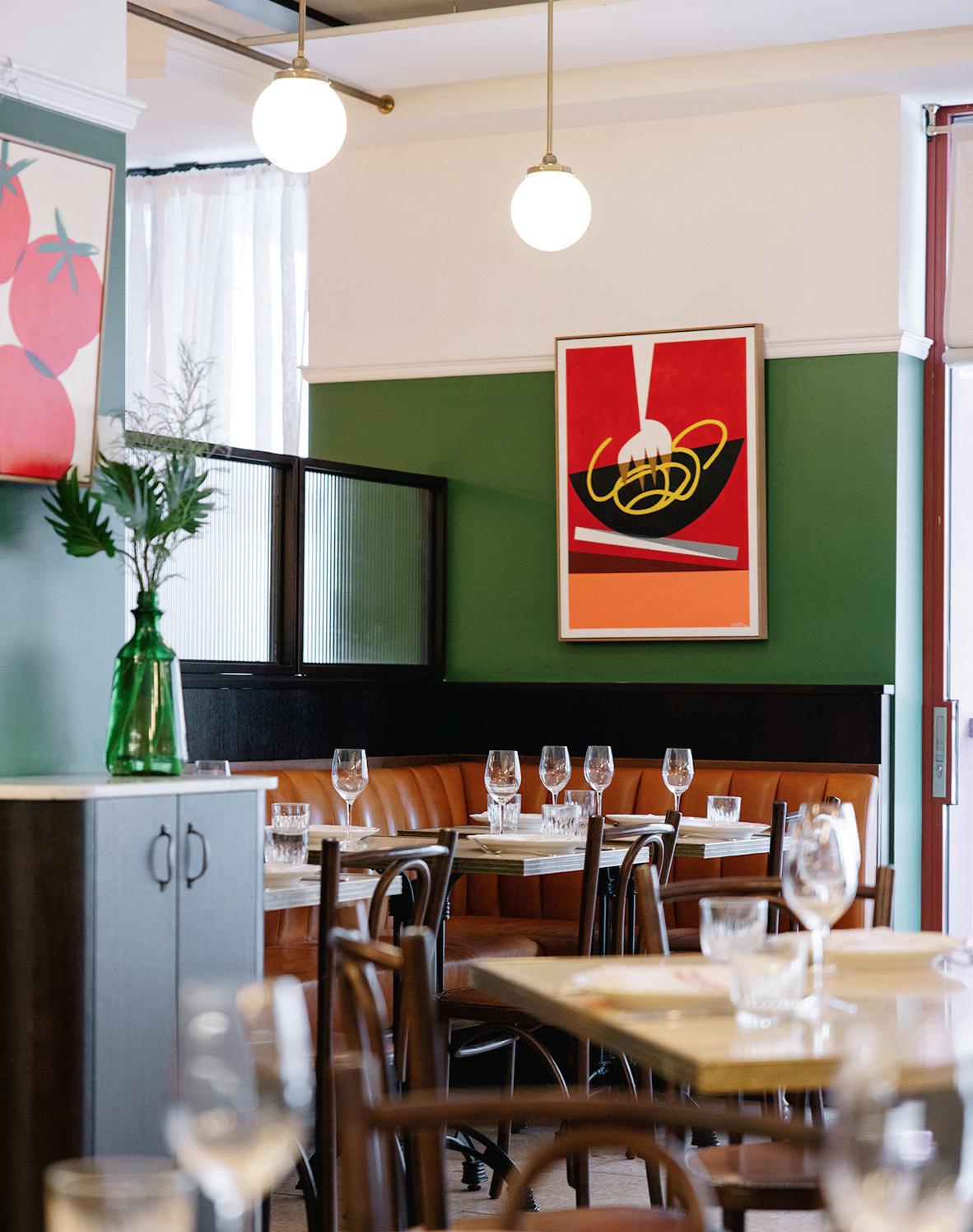
Ex-Boathouse at Blackwattle Bay head chef Colin Barker has traded the Sydney waterfront for the Blue Mountains with this produceled eatery in the Megalong Valley (megalongrestaurant.com.au). Nearly all the ingredients in his dégustation are grown close by: Megalong has its own olive grove, orchards and a farm with ducks, chickens, cattle and sheep.
If the glamorous revamp of Fortitude Valley’s 136-year-old GPO building is any indication, you can teach an old dog new tricks. The spectacular 1920sstyle fit-out will include two bars, plus the light-filled ground-floor Tama (tamadining.au), led by Queensland chef-about-town Richard Ousby (formerly of Stokehouse and Sydney’s Quay).
Good-time Italian joint Bastardo in Sydney’s Surry Hills has opened a CBD outpost (below; porteno. com.au) on the old site of the Continental Deli. City diners clamouring for the classics will find the group’s famous pizza fritta and ragù alla Bolognese. And there’s a cracking weekday aperitivo hour from 3pm to 5pm.
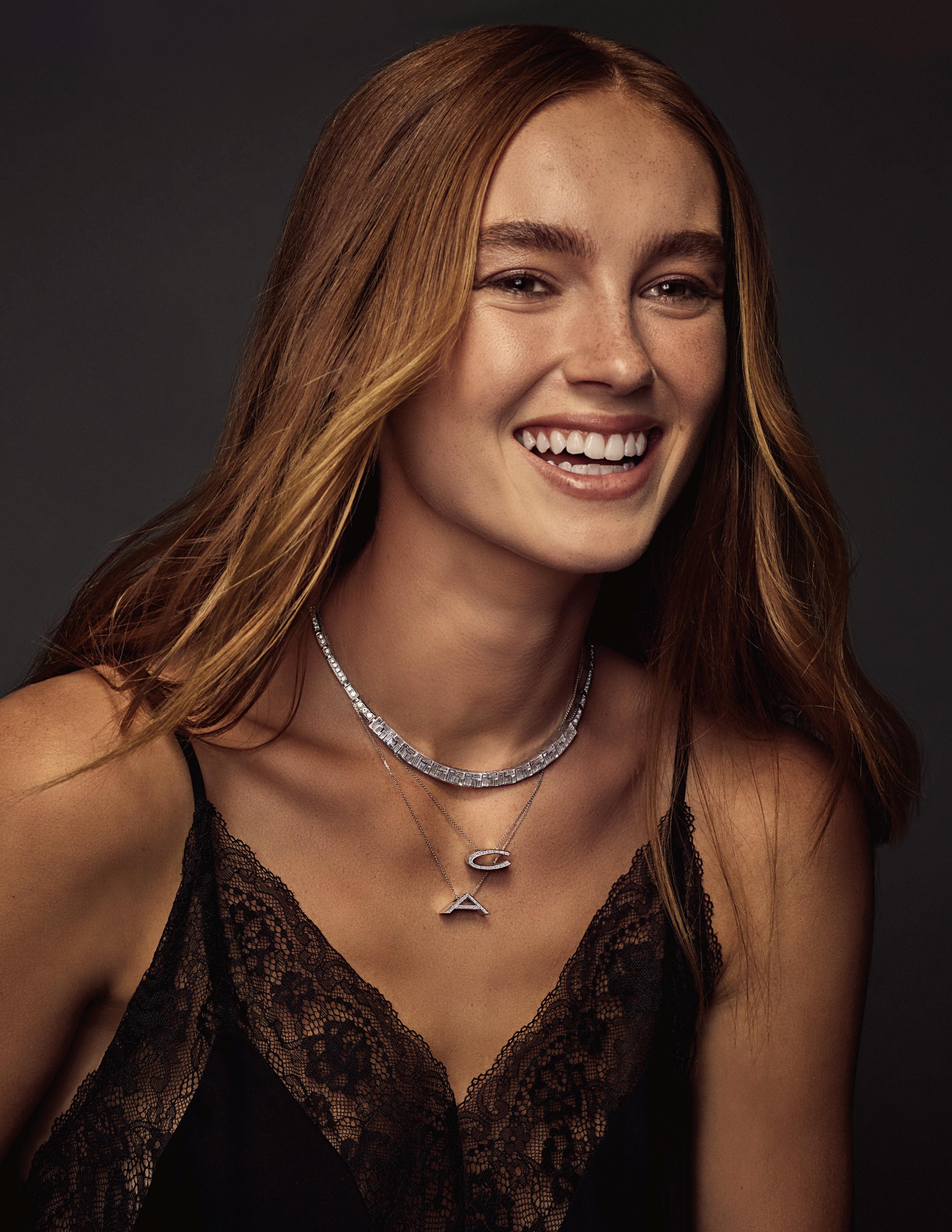
 INTERVIEW BY NATALIE REILLY PHOTOGRAPHY BY RENEE NOWYTARGER
INTERVIEW BY NATALIE REILLY PHOTOGRAPHY BY RENEE NOWYTARGER

The last exhibition I saw was…
The Really Bad Day John Had by Jason Phu, which opened at Chalk Horse Gallery the night before the Archibald announcement in May. The whole show told the story of a man named John, using tiny pen drawings on empty pistachio shells. It was perfectly irreverent and clever and silly.
The last movie I saw…
Aftersun. It was so tender and distinctive. The cinematography blew me away. But if you asked someone who knows me well, they’d tell you that my favourite movie of all time is the live-action version of Paddington 2 and they wouldn’t be lying. It’s pure, unadulterated wholesomeness.
The last TV show I binged …
Beef. It stars Ali Wong and Steven Yeun as two people who meet through a road-rage incident and become obsessed with each other in an unhealthy way. It’s a comedy of errors that skewers the art world and explores the complexity of the human heart – what’s not to love?
My favourite podcast is…
This American Life It’s probably an obvious choice but I’m a lifelong fan and the host, Ira Glass, is my celebrity crush. Same Bed Different Dreams is one of my favourite episodes [there is a series of episodes with this theme], specifically the segment about Kim Jong-Il kidnapping his favourite South Korean movie stars. It’s a wild story.
The app I use the most…
Spotify. Life needs a soundtrack, right? In the studio I am either cosplaying as a sad teenage version of myself, featuring Belle and Sebastian, The Cure, The Smiths and Death Cab for Cutie, or singing along out of key to Erykah Badu, Lauryn Hill, Mariah Carey and Destiny’s Child, or being inspired by one of my talented friends – Montaigne’s last album was full of bangers and my friend Angus Mills just released a killer record called Alva that’s available on vinyl.
The last book I read …
Her Body and Other Parties by Carmen Maria Machado. It’s a collection of short stories and I loved it. It’s surreal, provocative and so original. I am all about magical realism, particularly when it comes with biting social commentary.
Julia Gutman
At 29, the artist is one of the youngest women ever to win the Archibald Prize for her portrait of her former flatmate and friend, singer Montaigne. She tells us what she loves besides creating art.
The Renaissance capital reveals its newest treasure – a luxury hotel that feels like coming home.
The Cecchi family, who designed Hotel La Gemma (hotel.qantas.com.au/hotella gemma) as an upscale urban retreat, have infused their Italian heritage into the property’s every accent: from the powder-pink and emerald-green palette that echoes the marble exterior of the Duomo to the tropical parakeet-flecked wallpaper, which evokes happy memories of international travel. Even the signature cocktails, served in the bar or at Luca’s restaurant, are named for the Cecchis’ favourite tunes.

Part of the appeal of the property, which is inside the façade of a 19th-century palazzo just footsteps from Piazza della Repubblica, is that it’s luxurious but doesn’t necessarily shout about it. The entry is on a side street and the 38 rooms and suites – including the upper-floor Prestige Suites that share a private elevator – are filled with shelves of books, rosemary and chia Votary amenities and in-room cocktail stations.
To feel the full romance of Florence, Room 208 is a spacious Junior Suite that has a balcony overlooking the ancient wool trading street, Via Calimala, with the city’s famous Martini sign visible in the distance. Few things feel more Florentine than sipping a spritz from a lofty vantage point while the busy streets bustle below.
La Gemma’s 24-hour concierges – who seem more like well-connected friends –will gladly unlock the city’s most coveted experiences on request: an after-dark tour of the Uffizi; a private perfume blending masterclass; or a food tour that takes you to osterias and enotecas beyond the Stanley Tucci trail. “We want our guests not to feel like they’re in a hotel,” says middle Checchi brother Massimiliano. “We want them to feel like they’re in a wonderful and magical home.”
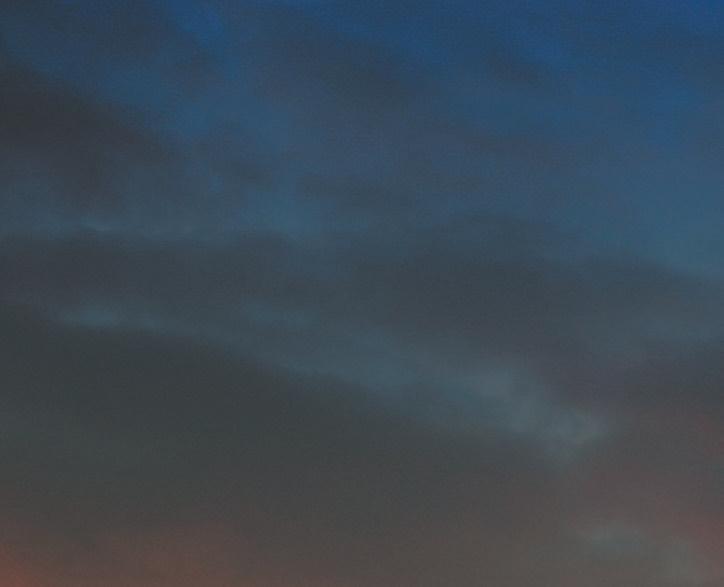
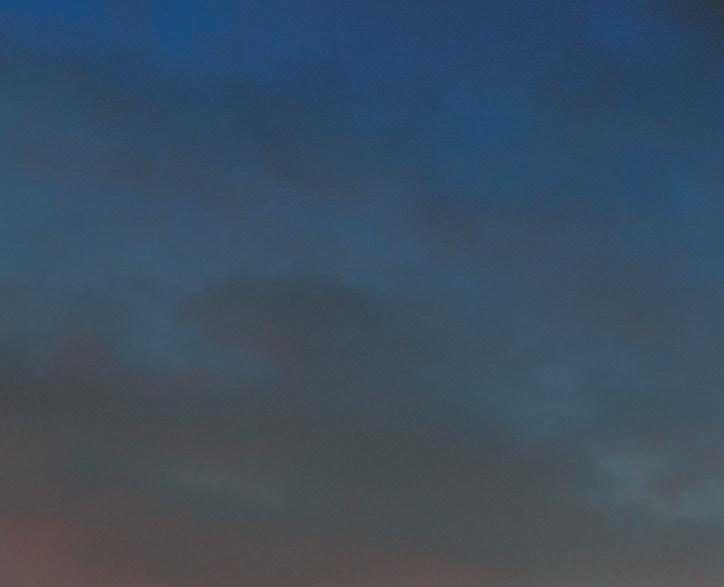


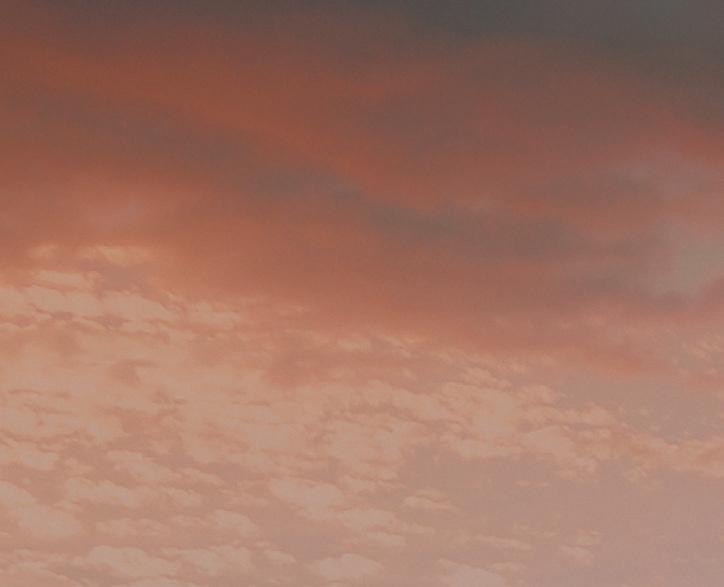


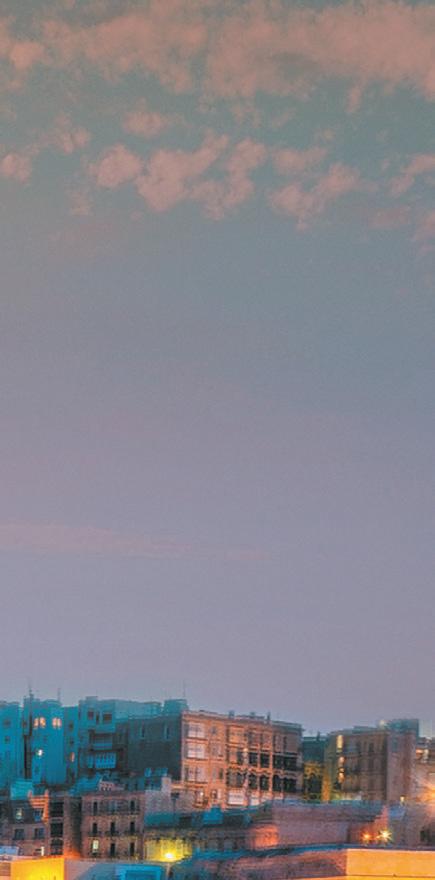






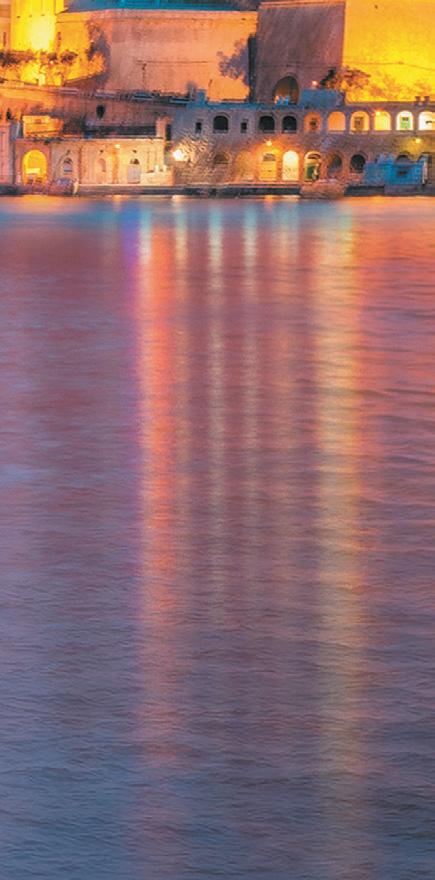
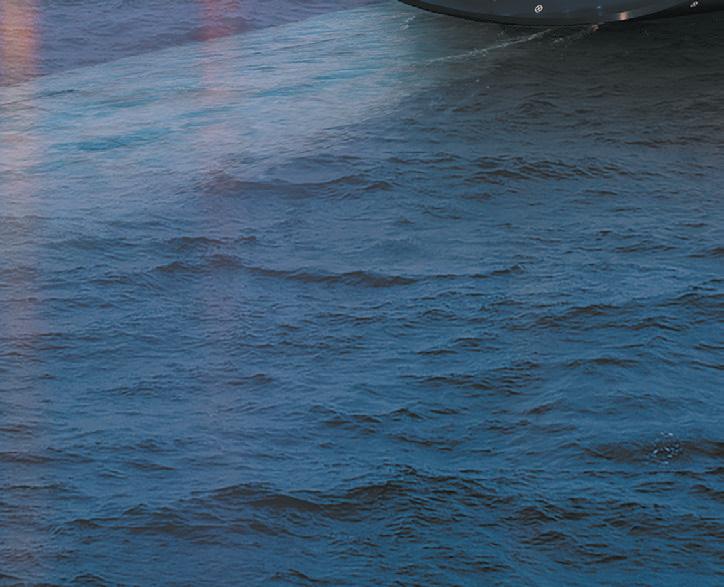


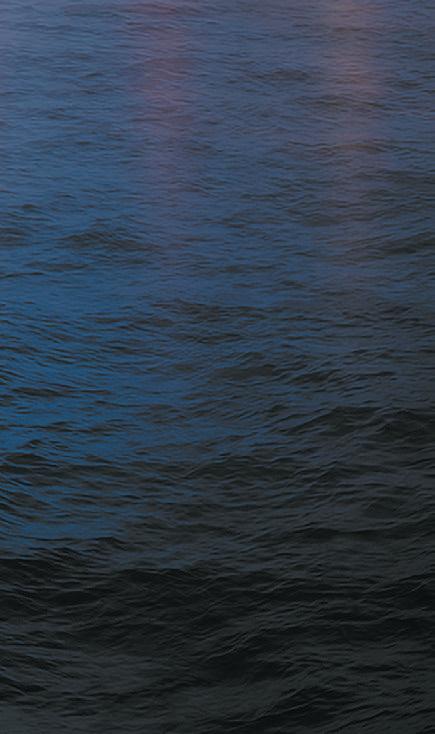
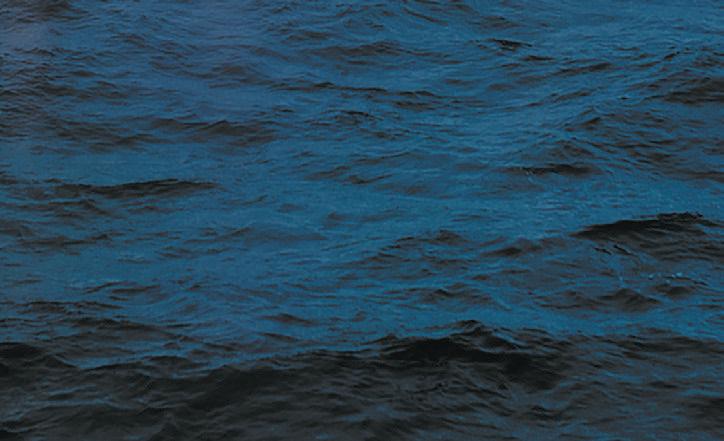
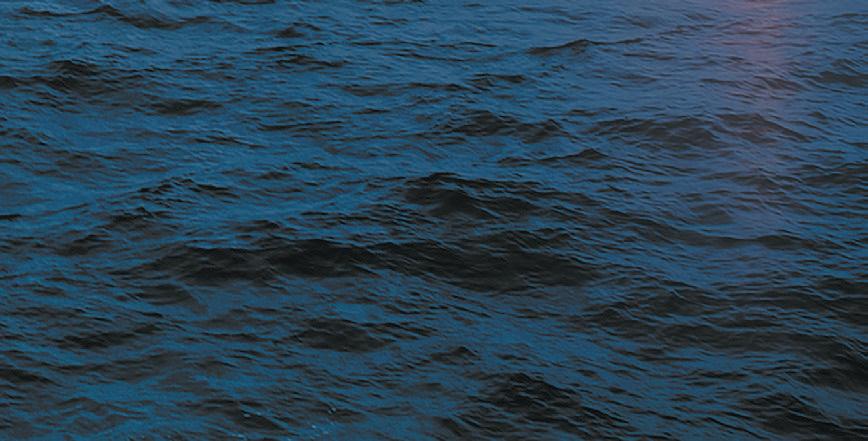
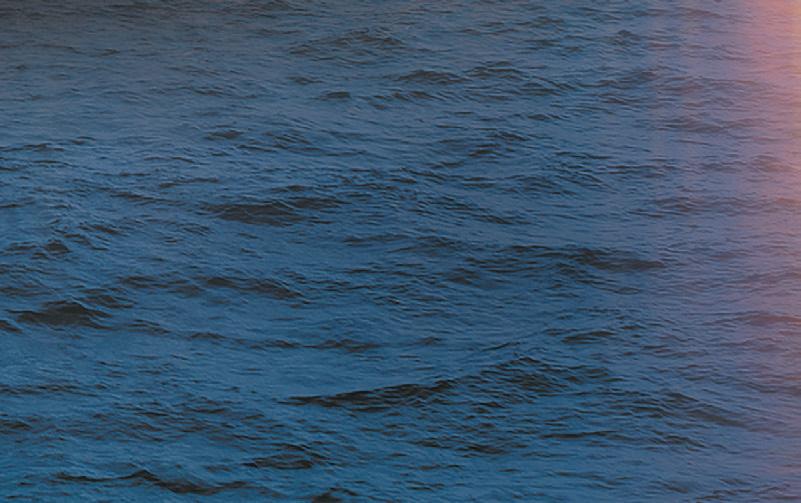










We’ve scanned the zeitgeist for what to read, watch, wear and drink now.
The 20th century’s most iconic doll hits the silver screen in all her sparkling, subversive feminist glory. Hey, you don’t go to a Greta Gerwig movie (Lady Bird, Little Women) to see the patriarchy upheld. In Gerwig’s latest, Barbie, our heroine (played by Margot Robbie, left) is thrown out of Barbie Land for her nonconformist ways. Unlike other Barbie dolls, who walk on tiptoes, Robbie’s Barbie walks with her feet flat on the ground – a major transgression. So off she goes in her candy-pink Corvette into the human world, unaware that Ken (Ryan Gosling) has stowed himself away with her. Tiptoeing into cinemas 20 July.

Journalist and author Virginia Sole-Smith has followed up her 2018 debut, The Eating Instinct: Food Culture, Body Image, and Guilt in America , with a second book. In Fat Talk: Parenting in the Age of Diet Culture, already a New York Times bestseller, Sole-Smith explores the impact parents and caregivers can have on their children’s attitudes to food, nutrition and disordered eating. A must for anyone aiming to reclaim their kids’ minds –and maybe their own – from a toxic culture.
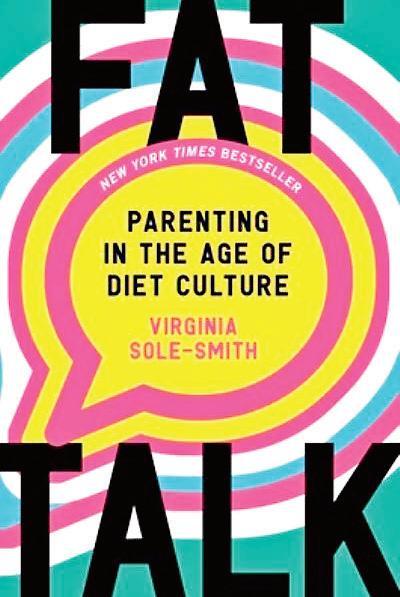
Prepare your face: the holy grail of at-home LED light masks has arrived. San Lueur Advanced LED Light Therapy Facial Mask (above, $795; sanlueur.com), delivers all three clinically approved wavelengths at the

highest energy output possible for an at-home device. The mask is soft, flexible and slightly eerie to look at. But the science-backed results – including a glowing, smooth complexion – suggests looking weird while wearing it is a small price to pay.
A pebble in your shoe can be annoying but a pebble in your pocket? It might bring a moment or two of calm. Morphée Zen is pebble-shaped, pocket-sized and portable (above, $120; morphee. com.au), ready whenever you need a mental wellness break. The device can help lower anxiety and improve concentration with meditation sessions as short as five minutes. Pop it in your pocket on the morning commute or set it up on your nightstand for a guided meditation without the harsh light of a phone – just plug in the earphones, choose a session and exhale.


Heaps Normal, the brewers responsible for what is arguably the best-tasting alcohol-free beer on the market, is serving up a full-bodied treat for anyone partaking in Dry July. Brewed in partnership with Newcastle’s Floozy Coffee Roasters, the limited-edition Coffee Run Stout (left) contains about a fifth of the caffeine of a standard espresso. And while you’re free to enjoy it at brunch, its makers reckon any time is a good time. Available from heapsnormal.com and watering holes around the country.

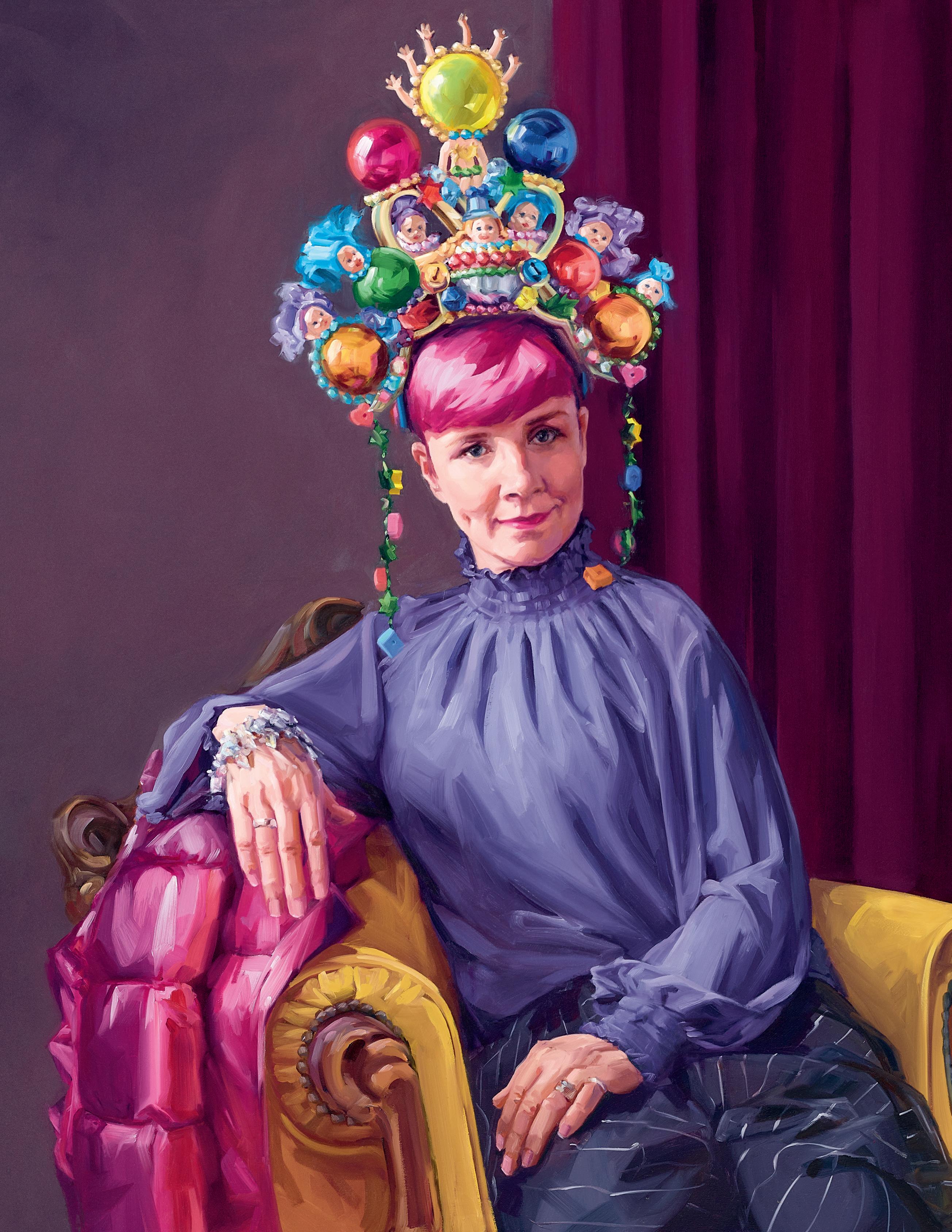
With white-gold sand and average water temperatures of about 23°C, Mooloolaba Beach has long been prime family-holiday territory. But there’s a new energy fizzing through this coastal playground in south-east Queensland. A recent multimillion-dollar transformation of The Wharf dining and entertainment precinct kicked off a revitalisation of the beachside suburb, where cultural tours and day spas now operate along the Mooloolah River and the esplanade is seeing a change of guard.
Less than a 15-minute walk to the beach, The Palm & Pool House (vacayco.com.au) is a Mediterranean-inspired cottage and two-storey loft on a residential block. With reclaimed French oak and polished concrete floors, luxury linen and Smeg appliances, the two sophisticated lodgings open onto a shared swimming pool and can be booked together or individually.

A mullet leaps through the bow wave of the 58-foot pine ketch Spray of the Coral Coast as it sails Mooloolaba’s man-made canals. The banks are dotted with rustic shacks and modern mansions, far removed from the landscape first inhabited by the area’s
Once a sleepy holiday town, this Sunshine Coast stalwart has come of age.
Traditional Custodians, the Gubbi Gubbi. But they’re still here, says Simon Thornalley, a young man of Torres Strait Island descent who grew up in the area and founded Saltwater Eco Tours (saltwater ecotours.com.au) in 2020.
“We wanted an Indigenous experience on the water, to reflect the culture from this area,” he says. Prawns dusted with native spices and tacos filled with slow-cooked kangaroo are offered as he narrates the local maritime history and Gubbi Gubbi culture, including an ancient method for catching mullet that’s still used today.
It’s 6.30pm on a Tuesday and there’s a queue to order food at Rice Boi (riceboi.com.au). More than five years since it opened at The Wharf, diners still can’t get enough of the kingfish sashimi, crisp eggplant chips and other Asian street eats. The most popular dish? “We sell twice as much of the 10-hour coconut braised beef than anything else,” says coowner Mitch Smith.
Head to the esplanade for a nightcap at Wat Den (watden.com.au). The intimate cocktail bar, which opened in February, specialises in premium and hard-to-source whiskies and tequilas. Brazilian-born co-owner Felipe Bley’s knowledge of spirits is as impressive as the 200-plus international bottles to choose from. Order the modern interpretation of a classic Charlie Chaplin, made with native bush tomato syrup.
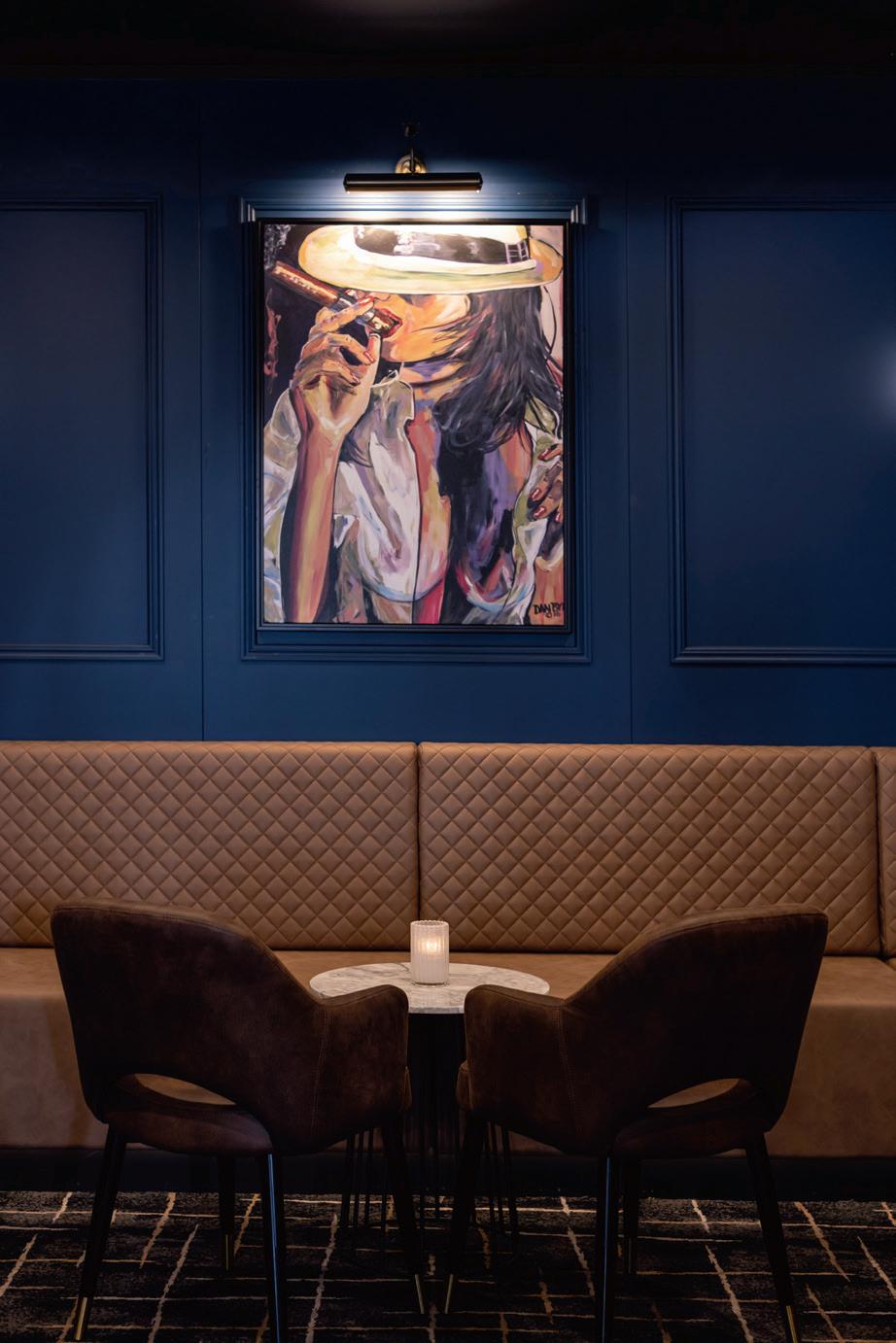
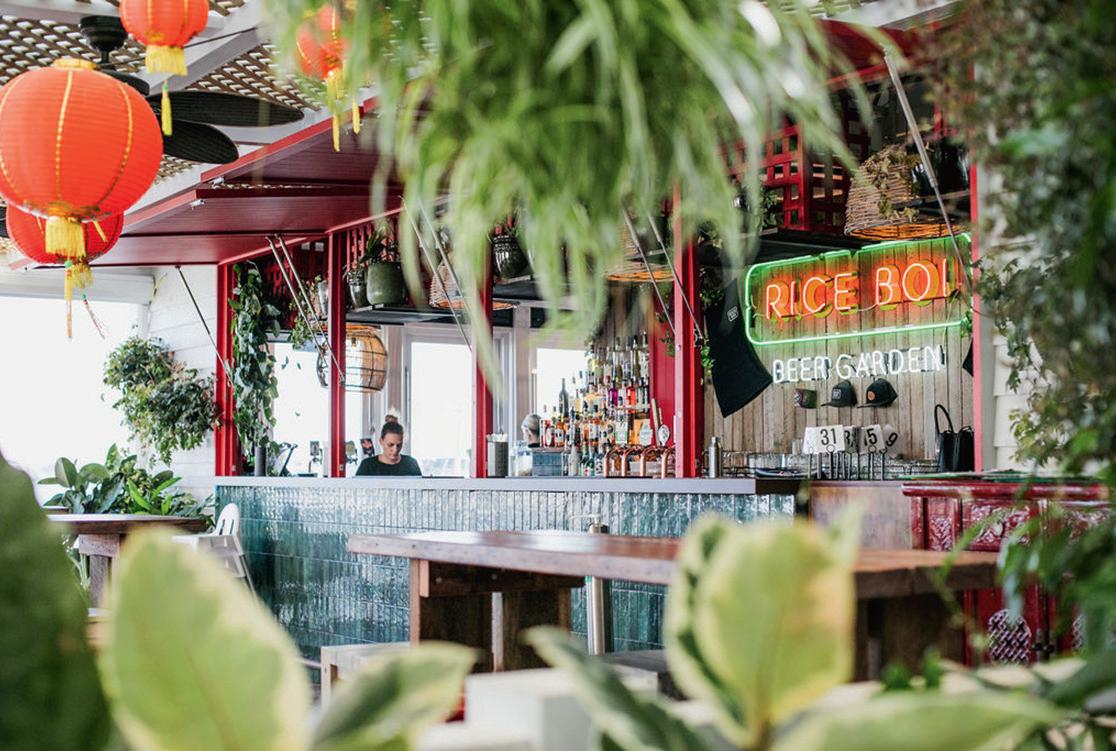
Perched on a leafy stretch of the Mooloolah River, Tank Bathhouse (tankspa. com.au) is a day spa with a difference. The venue’s waterfront restaurant and bar overlook a 55-foot vintage cruise boat moored at the dock (it’s available for champagne river cruises). Guests can soak in six magnesium pools of varying temperatures, suffused with botanicals such as vanilla, ginseng and peppermint, before heading up to the spa for a massage.

The 2023 FIFA Women’s World Cup in Australia and New Zealand is upon us (20 July to 20 August) and if it feels as though the history of women’s football has been leading up to this moment, it’s because it has. Four of the five mostattended women’s football games of all time took place in the past year and World Cup organisers are expecting a total of 1.5 million people to attend the tournament – a figure that would smash the current record of 1.35 million.
The festival of the boot starts and finishes in Sydney, with five matches (including one of the opening matches and the final) to take place at Accor Stadium and an additional six kicking off at the rebuilt Allianz Stadium. Football fever is painting every inch of the harbour city in green and gold.
Captained by Sam Kerr (pictured) and led by head coach Tony Gustavsson, the Matildas will seek not only to meet the moment but to answer the question posed by the team’s history-making results at the Tokyo Olympic Games in 2021: just how high can Australia fly on the global football stage?
Turn the page for the best places to stay, eat and drink during the tournament.

Come to Sydney for a feast of football as the world’s best players compete for the sport’s top honour.
A piece of you since 1972.

Huon Valley, Tas Mid-winter Festival
13 to 15 July
The wassail – the tradition of scaring evil spirits from the apple orchard to ensure good crops – is the basis of this carnival in Tassie’s apple country. Listen to folk music, watch a giant scarecrow be set alight and inject some pagan weirdness into a long weekend.
discovertasmania.com.au
Margaret River, WA
Cabin Fever
14 to 23 July
More than 50 events across this 10-day showcase of the region’s spoils make Margaret River the ideal winter destination. Feast in a vineyard, get your hands dirty in an organic gardening workshop or dance the night away at a zinfandel-fuelled drag show.
cabinfeverfest.com.au
Darwin, NT
Darwin Fringe Festival
14 to 23 July
A bunch of new hotels have transformed Sydney’s heritage buildings over the past 12 months, including the opulent Capella (capellahotels.com) and breezy boutique Oxford House (oxfordhouse.com.au).
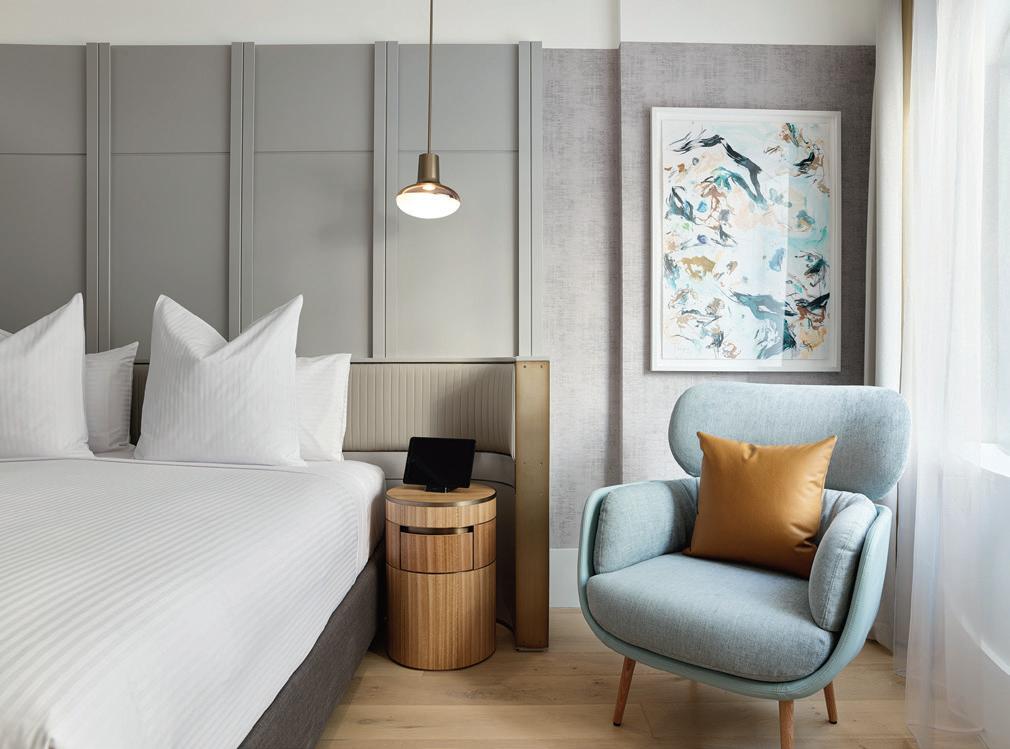
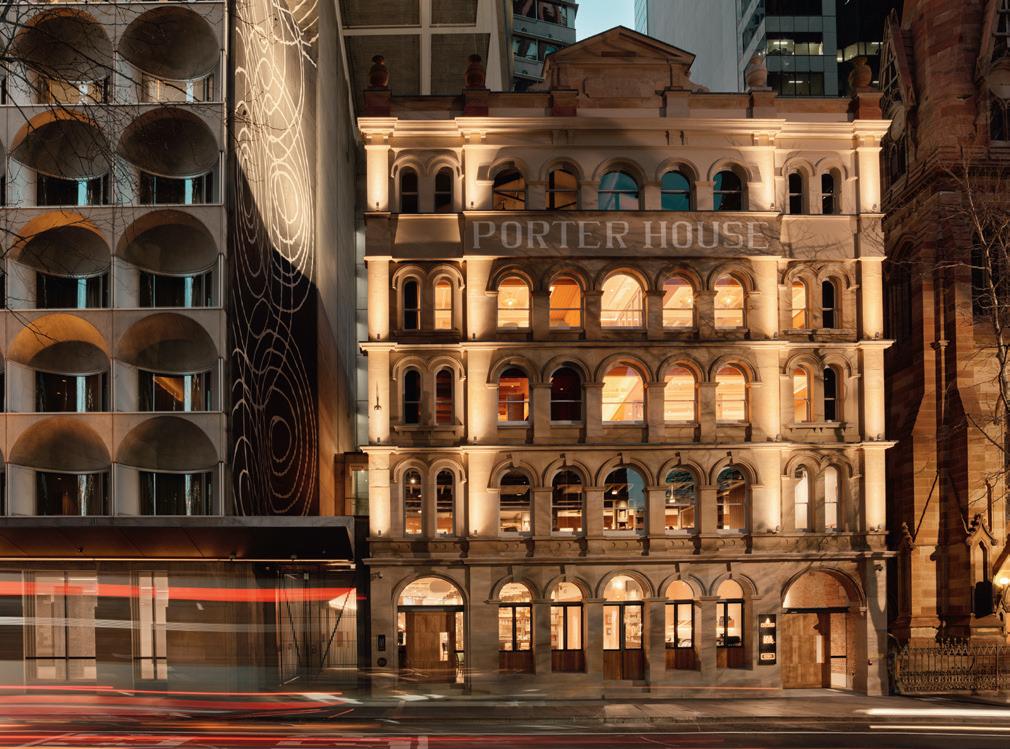
Joining the ranks of old-meets-new luxe is The Porter House Hotel (above and top; porterhouse hotel.com.au), a 122-room tower connected to a historic former warehouse in the CBD. Mushroom-and-pink-hued interiors feature leather accents (a nod to the building’s former life as a leather merchant’s quarters) while a heated rooftop pool delivers big on glamour, reminding you that there’s nowhere in the world like Sydney. Beneath a glass ceiling on the original building’s top floor, low-lit Spice Trader slings cocktails built on ingredients traded in the 1800s, such as ginger, coconut, cassia and coffee. This means you can’t go past the house-made Espresso Martini spiked with sea salt and cocoa. Team it with the scallop and bay bug toast with tangy cho-gochujang and you’ll start (or end) your night perfectly. All best enjoyed at the exposed-brick venue’s 14-metre green marble bar.
Comedy, art, music, dance and design meet in the NT’s largest gala of emerging artists. The festival features the beating heart of Australia’s arts scene with a distinctly Top End flavour.
darwinfringe.org.au
Melbourne, Vic Bonnard: Designed By India Mahdavi
Until 8 October
French master Pierre Bonnard painted iridescent works inspired by early cinema. The NGV commissioned architect India Mahdavi to design this exhibition, which combines 100 of Bonnard’s vibrant works with the shimmering aesthetic of today.
ngv.vic.gov.au
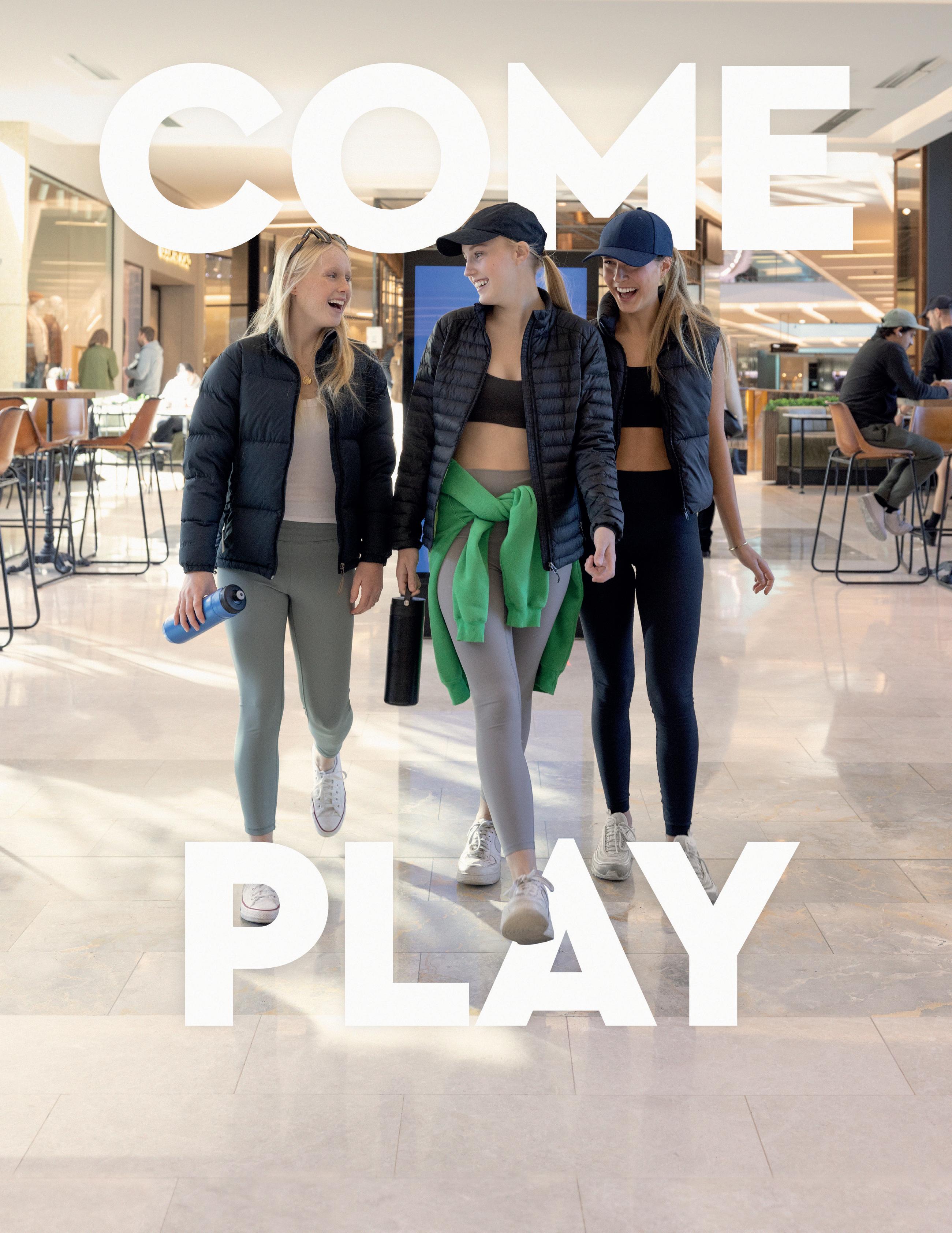
Water-resistant to 100 metres, the 39-millimetre case is made of lightweight titanium with a sandblasted finish, giving it a street-tough look.
Available in three different configurations – Original Blue, Racing Red and Turquoise – the coloured accents and touches of Super-LumiNova add definition and legibility to the openworked dial.
Made in-house, the upgraded Heuer 02 automatic movement drives the chronograph’s time, date and stopwatch functions. There’s also an impressive 80-hour power reserve and extended five-year warranty.
The strap, made of calfskin with a rubber inlay for comfort, is fastened using a titanium folding clasp with double safety push-buttons.
In the 1971 car racing film Le Mans, Steve McQueen famously paired a TAG Heuer Monaco watch with his white racing suit. As far as celebrity endorsements go, it’s hard to beat. McQueen’s King of Cool reputation has endured, as has the popularity of the Monaco, with the square-cased chronograph remixed countless times in various colourways and case materials. Now, for the first time, it reveals its inner workings via a skeletonised dial. The result changes the tonal design to something boldly futuristic and industrial. But this watch has become so iconic, its heritage is still recognisable at a glance.
TAG Heuer Monaco Chronograph Skeleton watch in Turquoise / $16,300 / tagheuer.com

Gate-crashing the regularity of this line of diamonds is an off-centre pendant with a large Zambian emerald at its heart. The clever bit? The pendant can be detached so each individual element has a turn to shine.
Stefano Canturi Primavera diamond and emerald necklace / $93,700 / canturi.com
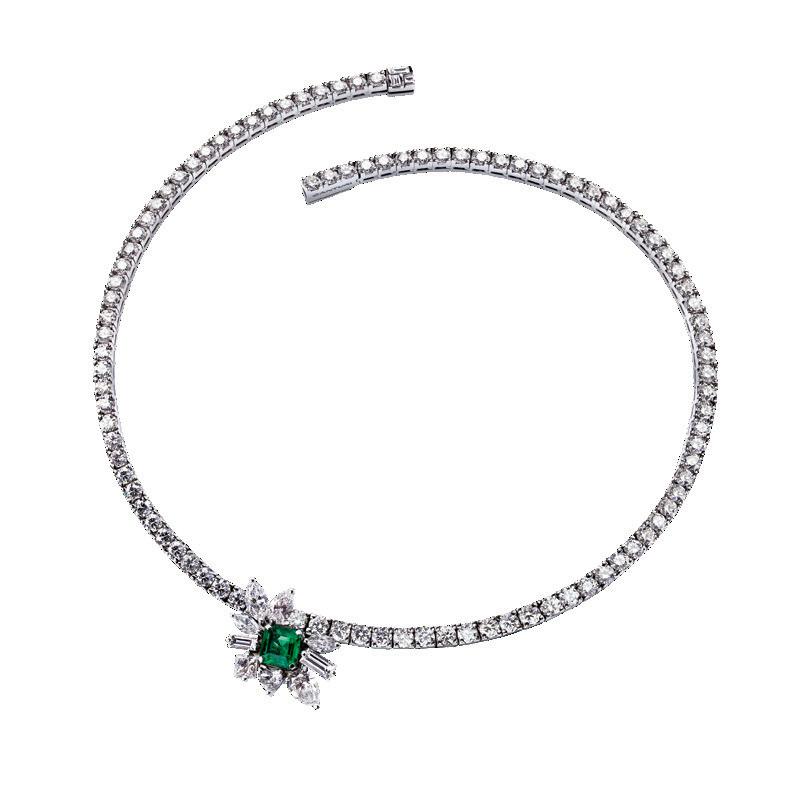
Australia’s only elite introduction agency for gay gentlemen is celebrating 10 years of finding long-lasting happiness for our clients, both locally and internationally. Beau Brummell Introductions personally matches men at all stages of life who share a desire for genuine relationships and the chance to build a family.

Time-poor professionals, it’s time to outsource your love life to a caring team who’ll uncover that one exceptional individual who could change your journey forever.
Ph 1800 889 991 — beaubrummellintroductions.com
Beau Brummell Introductions founders Vinko Anthony and Andrea Zaza, photo by Sealeybrandt.com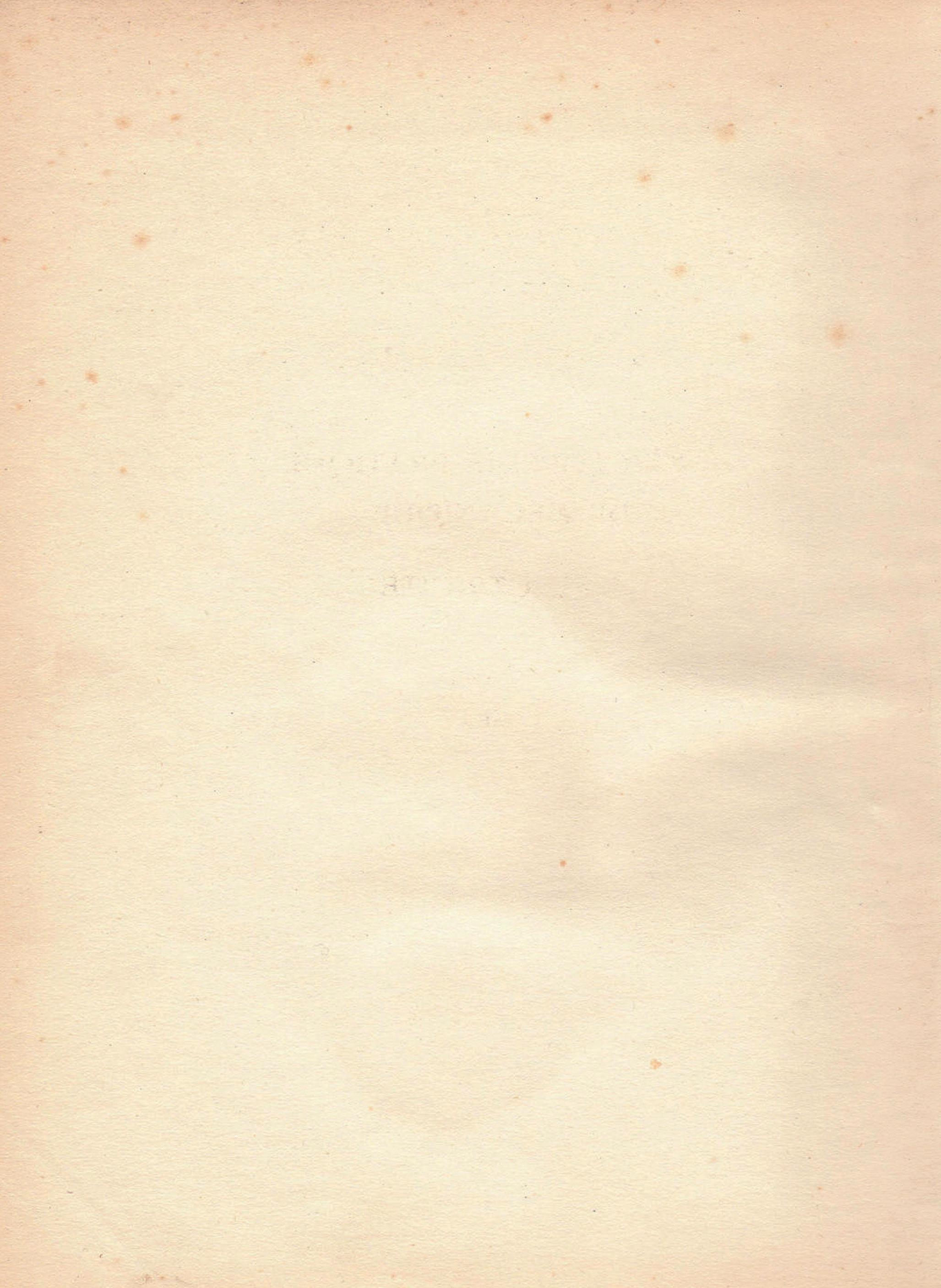
From the latest novels to classic books worth discovering, these are the page-turning picks for the month.
The book everyone is reading
Colson Whitehead is the only writer to win two Pulitzers for consecutive books (The Underground Railroad and The Nickel Boys). He’s written about elevator operators and zombie apocalypses, poker games and coming of age. Now, for the first time, he’s tackling a trilogy. Fans of his 2021 heist novel, Harlem Shuffle, will be thrilled to return to Ray Carney’s world in Crook Manifesto. It’s 1971 and what better motivation for some light criminality than Jackson 5 tickets? Delicious fun.

The book you should be reading
Nobody writes historical fiction like Kate Grenville .
Again and again she has brought history —both the official records and the messy tensions in the margins — indelibly to life. And her
new novel, Restless Dolly Maunder, brings her immense talents to bear, once again, on her own family. This time it’s her grandmother Dolly, a working woman at the end of the 19th century, struggling to build a life and survive.

Women like Dolly Maunder rarely make it into the history books. Here, she’s honoured by one of our best.
It’s hard to think of many authors who have been more significant in their writings on tyranny and structural power than
George Orwell. But across six biographies and decades of scholarship about him, the contribution of his wife, Eileen O’Shaughnessy, has been all but erased. Lifelong Orwell fan and acclaimed author Anna Funder corrects the record in her revelatory masterpiece, Wifedom: Mrs Orwell’s Invisible Life.

In the lead-up to the referendum later this year, The Voice to Parliament Handbook is a must. First Nations leader Thomas Mayo and veteran journalist Kerry O’Brien work their way, methodically and compassionately, through the questions and anxieties about the Voice, telling the story from the Uluru Statement from the Heart to a hoped-for future.

The book to revisit Earlier this year one of Mem Fox’s children’s classics, Guess What?, was banned in Florida in a ludicrous move. She’s been a national treasure in Australia for generations of kids, from her bestseller Possum Magic to Where is the Green Sheep? The rhyming delight of Good Night, Sleep Tight (reuniting her with Green Sheep illustrator Judy Horacek) will get stuck in your head and those of the children in your life. Bonnie, Ben and Skinny Doug will become an essential part of bedtime.


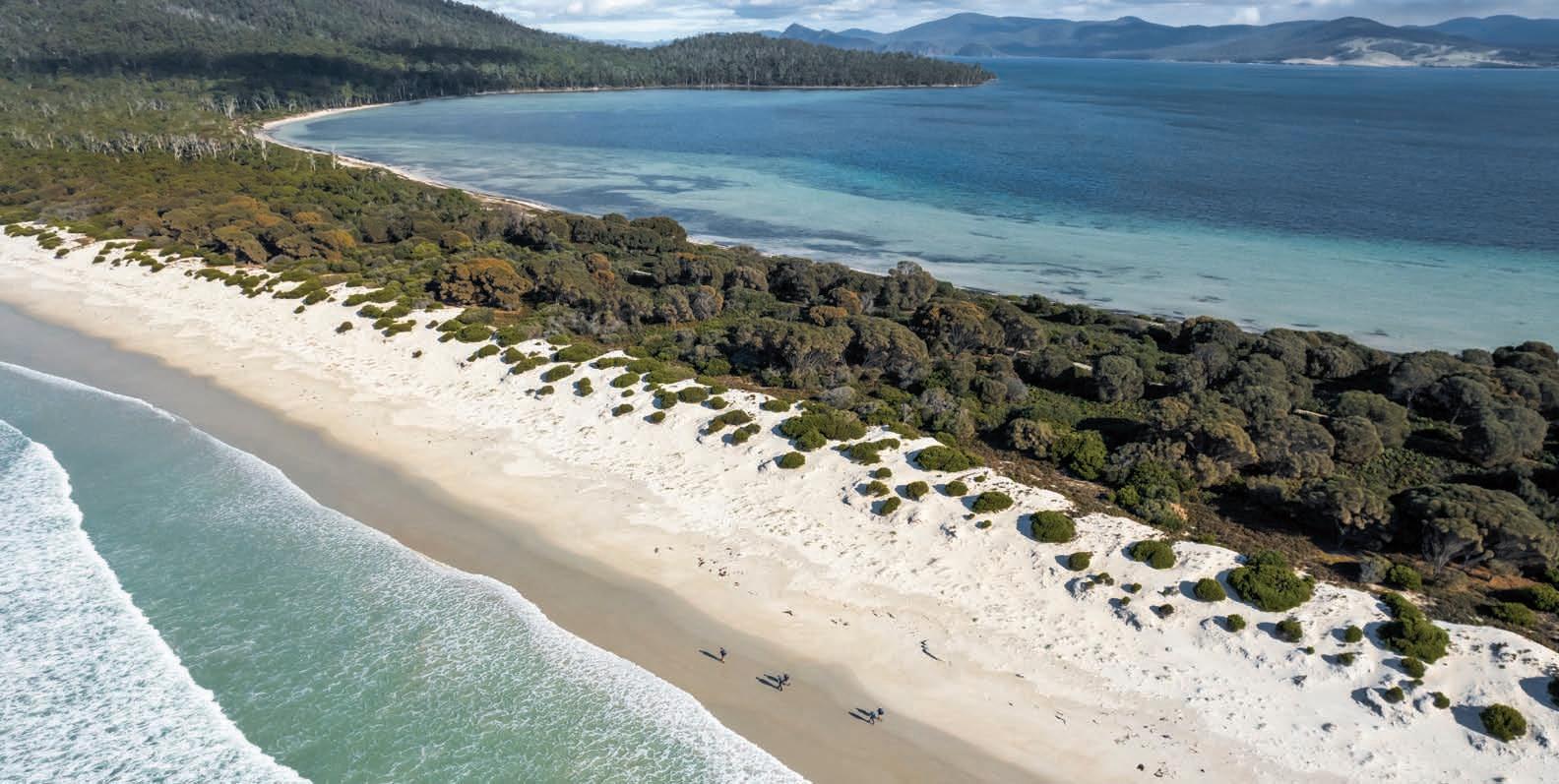

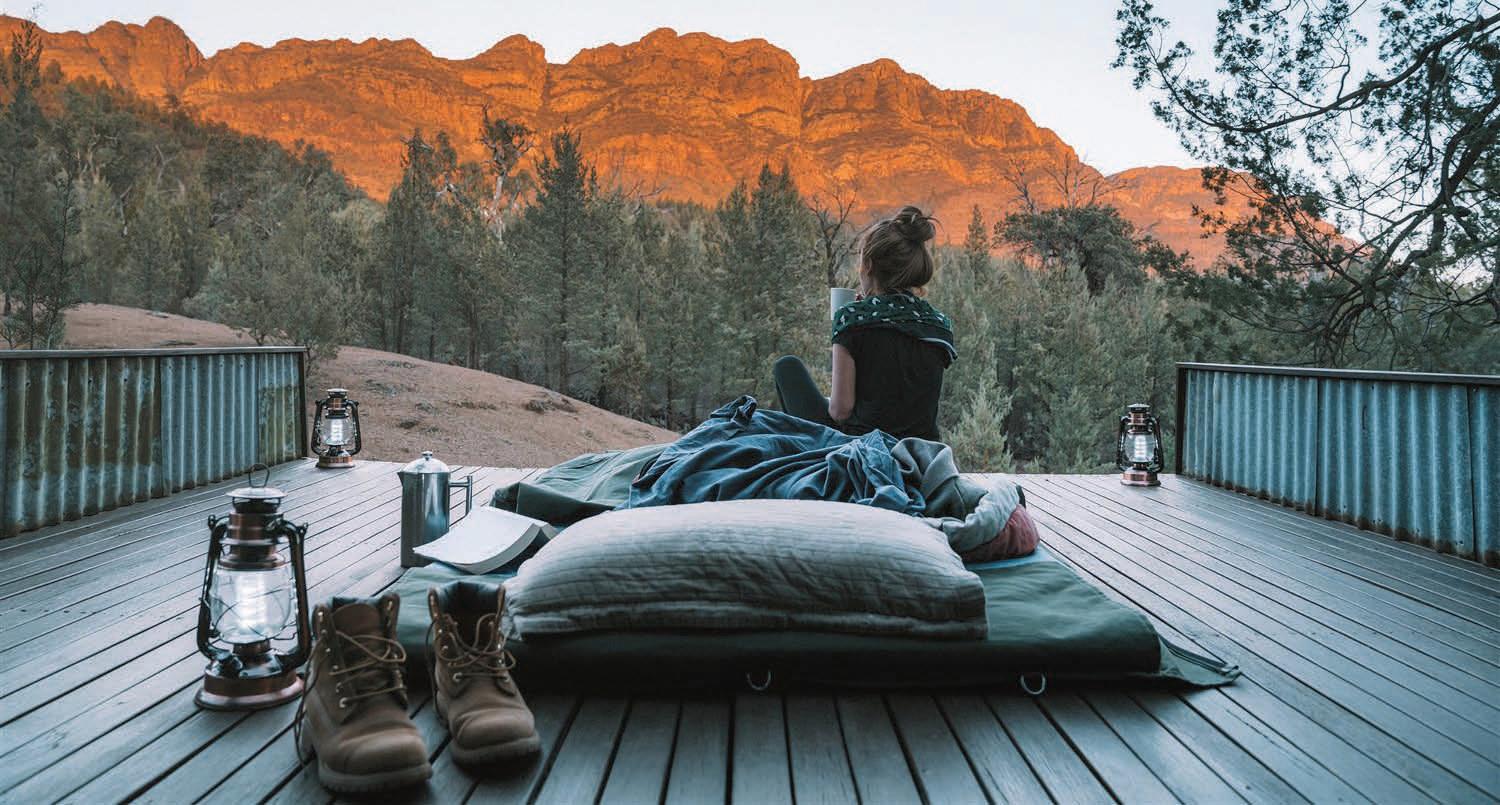


The South Korean brand’s latest electric offering melds form and function for a unique take on the family-friendly SUV.

Wow. That looks fresh. It does! The EV9 is not only Kia’s newest three-row electric flagship SUV but a showcase of clevermeets-cool design, sustainability and technology. Did you say three-row EV? Yes, the EV9 comfortably seats up to seven people thanks to its flat floor and spacious design and has plenty of techy comforts like USB ports. As for the EV part, two batteries are on offer: a 76.1kWh one exclusively with the Rear Wheel Drive (RWD) standard model, while a 99.8kWh battery is fitted in both the RWD Long Range and All Wheel Drive (AWD) variants. The long-range option sounds good for road trips. How far can it go? Kia says we can expect more than 541 kilometres. The ultra-fast 800-volt system (like those in high-end EVs) promises speedy charging, too. With fast-charging capabilities, you should
be able to get 239 kilometres of range in about 15 minutes. Is it powerful? With two electric motors and aerodynamic rear styling, the AWD variant serves up 283kW/600Nm of power and accelerates 0-100km/h in six seconds – that’s meaty for a car of this segment. What else is cool about it? Kia wanted to create a serene but fun and functional cabin. Ugly hard plastics and fingerprint-attracting high-shine black have been banished for chic and durable sustainable materials derived from recycled plastics, such as discarded fishing nets and PET bottles. Best of all, it’s unlike anything else on the market. When does it arrive in Australia? By the third quarter of this year. Judging by demand for the smaller Kia EV6, you may want to register interest now. Price? From an estimated $100,000, plus on-road costs. kia.com



It was a conference call with climate crusader Tim Flannery that set entrepreneur Sam Elsom on the path of cultivating seaweed. Specifically, asparagopsis, which as well as helping to de-acidify the ocean through capturing carbon, reduces methane emissions from cattle and sheep by 98 per cent when added in small amounts to their feed. “I was listening to him break down the IPCC [Intergovernmental Panel on Climate Change] report and the trajectory that we’re on when it comes to climate change,” says Elsom, who at the time helmed an eponymous sustainable apparel line, one of the country’s first. “I looked around and thought, ‘While sustainable fashion is important, it’s not having the impact that we need to see as a planet.’”
After learning from Flannery about the potential of seaweed as a “zero-impact crop”, Elsom threw himself into finding out how it could be used as a solution in Australia, connecting with industry experts and scientists, who were generous with their knowledge, sometimes bringing his self-described “harebrained ideas” crashing down to earth.
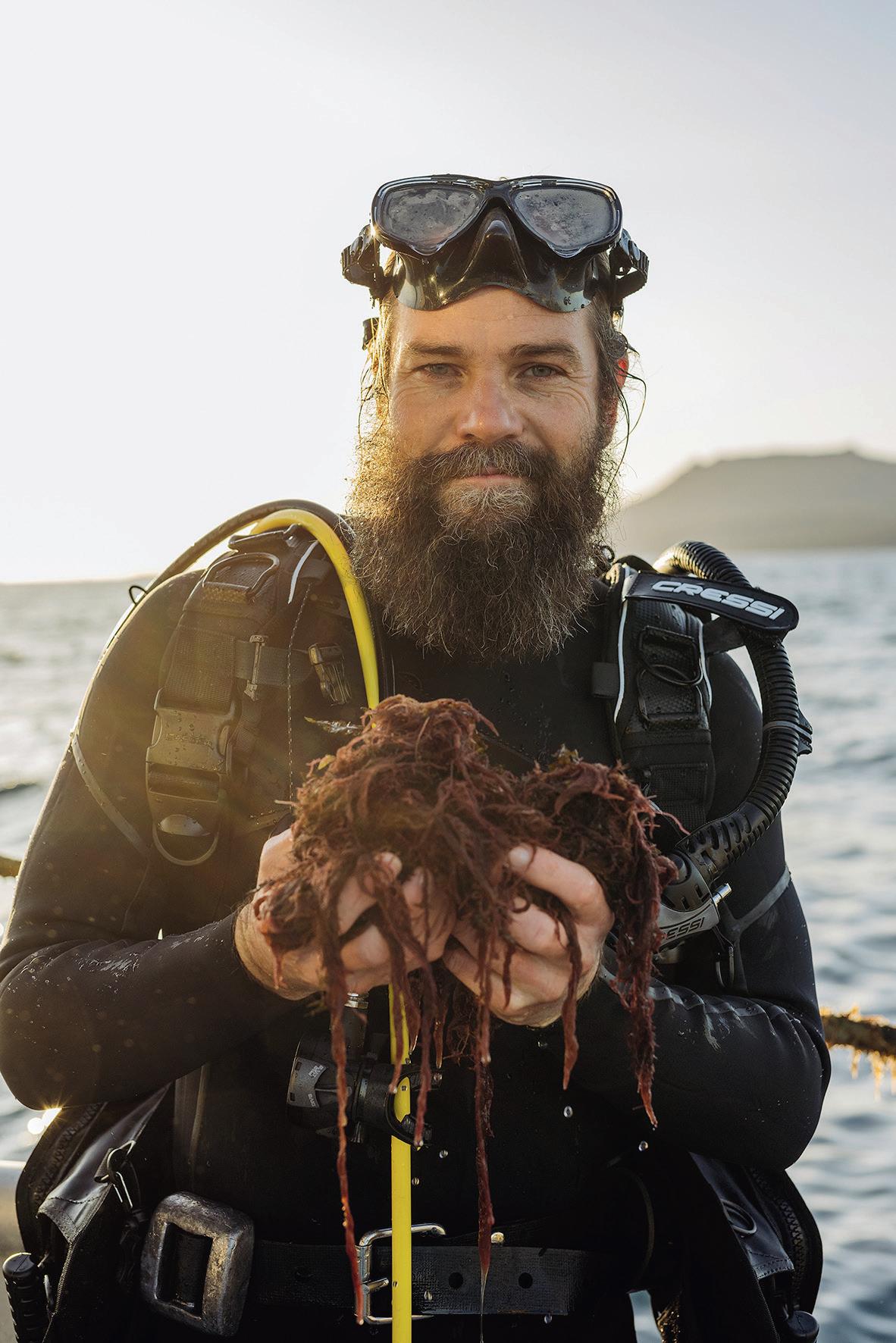
After intensive research and an equity raise attracting the likes of surfer Mick Fanning and Toms shoes founder Blake Mycoskie, Sea Forest (seaforest.com.au) was born, with Elsom as co-founder and CEO. It is the first company worldwide to cultivate asparagopsis at a commercial scale through both marine and land-based aquaculture.
The seaweed is used to produce SeaFeed, a supplement which currently has enough supply to feed 40,000 cattle daily. “This is a fraction of our full capacity,” says Elsom, who lives and works on Tasmania’s east coast. “We estimate we could feed four million or more head per day – about 20 per cent of Australia’s livestock population – and avoid about 11 million tonnes of CO2-e [carbon dioxide equivalent, a measure used to compare the emissions of various other greenhouse gases] in methane emissions each year.”
The lofty goal is not without inherent risks. “It’s a huge life shift but it’s worth it. This new world of Sea Forest is one I find challenging and rewarding, though the weight of the challenge is shared by an impressive team. We still have a long way to go.”
Sam Elsom
The former fashion mogul has turned his passion for sustainability into a worldfirst livestock feed additive that cuts methane emissions.
Hit reset at Kangaroo Island’s finest luxury lodge or zen out at a five-star resort with an aquarium-like pool. Find your next relaxing getaway and earn or use Qantas Points when you book with Qantas Hotels and Holidays
Rediscover a southern icon
QANTAS HOTELS
Choose from more than 500,000 of the world’s best stays
QANTAS FLY & STAY
Adorning the wild coast of Kangaroo Island, the celebrated Southern Ocean Lodge is now taking bookings for its long-awaited reopening in December 2023. Rebuilt following the 2020 bushfires, the lodge now comprises 25 suites strung along the limestone cliffs above Hanson Bay, positioned to take in the best views – and an instant sense of calm.
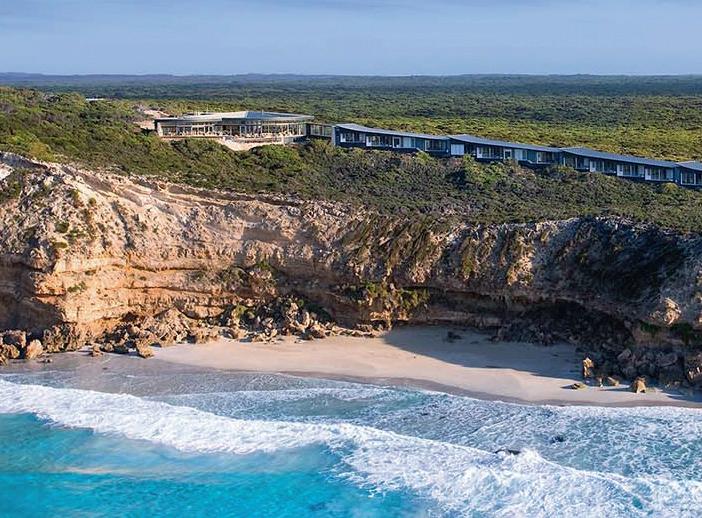
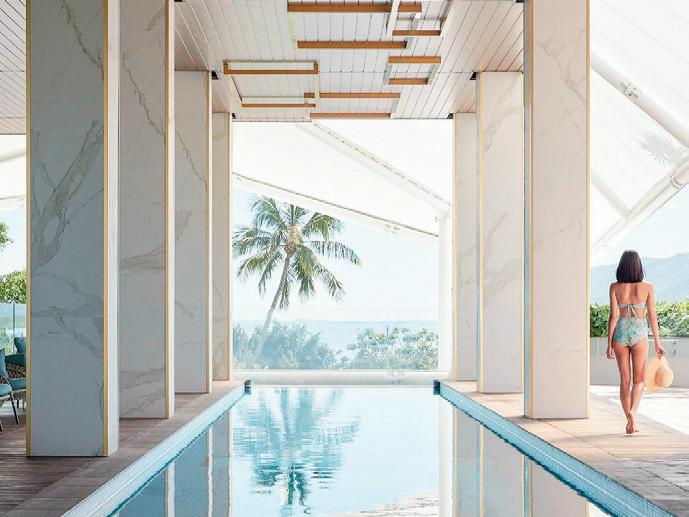
Evoking breezy, barefoot glamour, Crystalbrook Flynn on the Cairns Esplanade is the city’s most refreshing stay. Be seen in its glass-walled pool (like a giant aquarium) or escape to the Eléme Spa for Sodashi facials and massages. Our tip? Lock in a Sea View Suite for a soothing Coral Sea outlook. Bundle your hotel and flights with Qantas Holidays to pack in more value – or better yet, save your money and use Qantas Points to book.
QANTAS LUXURY HOLIDAYS
Receive
Score an exclusive luxury deal Recharge and reset with a no-fuss luxury holiday that comes loaded with added value, whether you’re after an indulgent island escape or a weekend city break – from Phuket to Melbourne. Explore the latest limited-time Qantas Luxury Holiday offers today and your next getaway could come with premium extras such as room upgrades, spa treatments, late checkouts, daily cocktails and more.
Fly to the Big Apple
Qantas is now flying from Sydney to Auckland then nonstop to New York. Book your stay at the Upper West Side’s The Beacon Hotel for spacious rooms and epic city views.

Treat your pet to the ultimate staycation at The Langham, Melbourne . Your furry friend will sleep in a velvet pet bed and enjoy freshly cooked meals from the “pets’ private dining menu”.
Earn 3 Qantas Points per $1 spent or use points to book at qantas.com/ hotels
Earn 3 Qantas Points per $1 spent – plus points and Status Credits on your flights – or use your points to book at qantas.com/ holidays
Earn 3 points per $1 spent or use points to book at qantas.com/ luxuryholidays
Wicked the Musical, a different spin on the story of Oz, is landing in Sydney this August. Plan your getaway and bundle your hotel and flights with Qantas Holidays to save.
For anyone who needs convincing, Fiji’s cruisy, dream-like resorts make a compelling case for a tropical break.

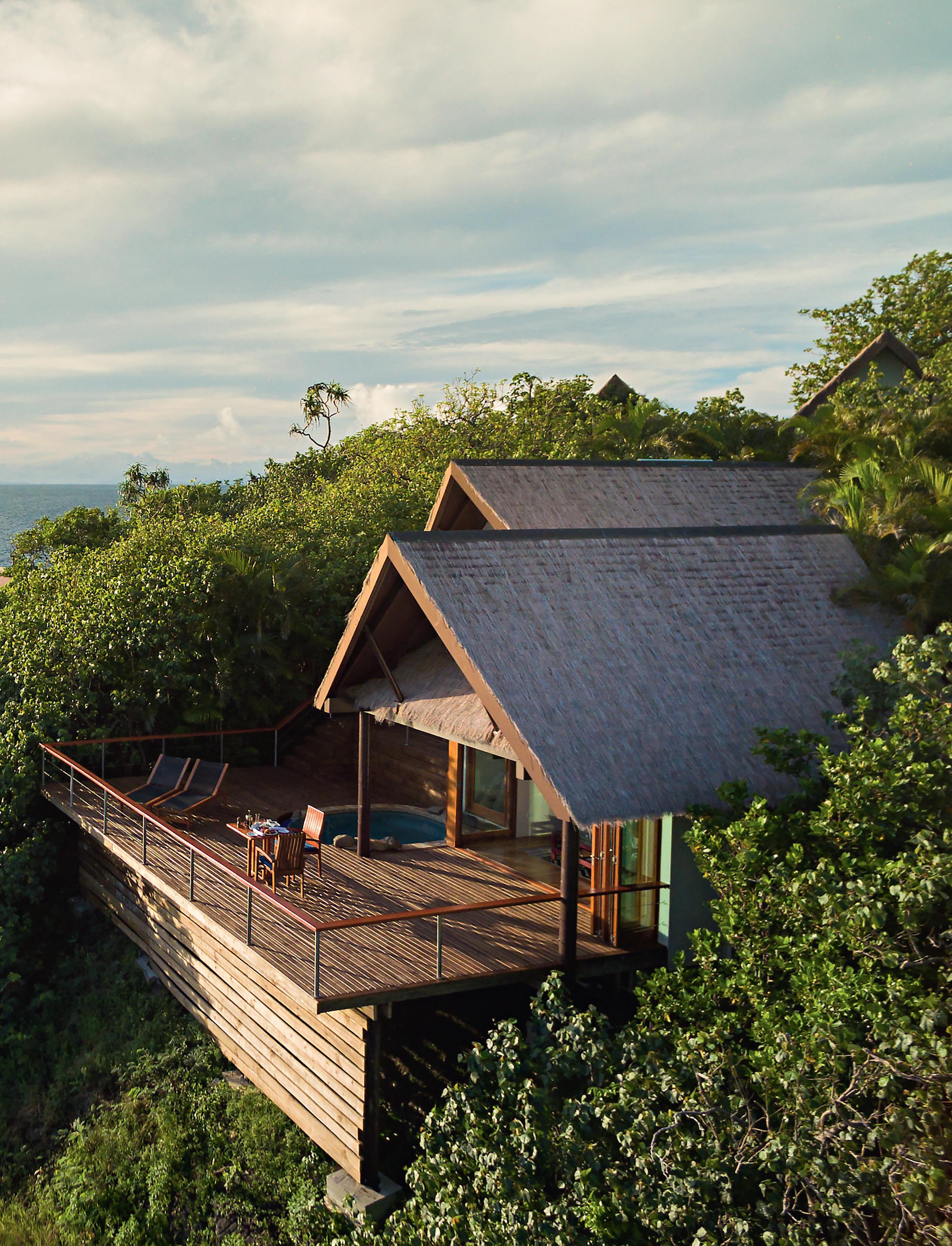 Royal Davui Island Resort
Royal Davui Island Resort
The classic island holiday
Nacula, with its emerald hills and neon-blue seas, is the South Pacific island from Central Casting. One of the largest and most remote outposts of the western Yasawa group, it fulfils every fantasy of a Fijian idyll.
Remarkably, the 22-square-kilometre island has barely been touched by tourism. There are just four villages and four resorts so the excesses of holidaying humans have been kept in check. Adults-only Oarsman’s Bay Lodge (hotel.qantas.com.au/oarsmansbaylodge) occupies prime position beside the 50-shades-of-Blue Lagoon. Owned and run by Australian Dean Swaagman on behalf of the village trust, the resort provides vital funding for local health, education and housing. Its 13 sky-blue, beach-facing bures, set in tropical gardens with hammocks strung between coconut palms, offer ring-side views of the translucent lagoon and direct access to all its pleasures.
“Keep it simple, keep it basic,” says resort manager Mary “Big Chief” Ratulevu of Oarsman’s ethos. “That’s what our team can do. Mother Nature does the rest.” Laze on the beach, kayak or SUP across the water, snorkel by day or night on the vibrant reef, hike the hills for panoramic Yasawa views or set off to explore the sacred Sawa-I-Lau caves and the chiefly village of Nacula. The ultimate Oarsman’s adventure? A day spent beached on their private island, Yaromo, a volcanic beauty shaded with palms and she-oaks. Get here before word gets out.
It’s an open debate whether the Yasawas or the Mamanucas are Fiji’s most alluring island chain but the location of Six Senses (sixsenses.com) on a golden sweep of Vunabaka Bay on Malolo Island – famed for its flaming sunsets – makes a strong case for the latter.
The 130-guest resort offers luxury on a par with Fiji’s finest, including contemporary villas, all with private
pools, elevated dining and every imaginable activity (surfing, deep-sea fishing, scenic flights). But its strongest suits are sustainability and wellbeing.
The resort is powered largely by solar panels and the country’s biggest Tesla microgrid. Fresh water flows courtesy of its own desal plant; food is harvested from its extensive gardens. The property is also a sanctuary for the endangered crested iguana and has recently partnered with French Polynesia-based Coral Gardeners to restore depleted local reefs.
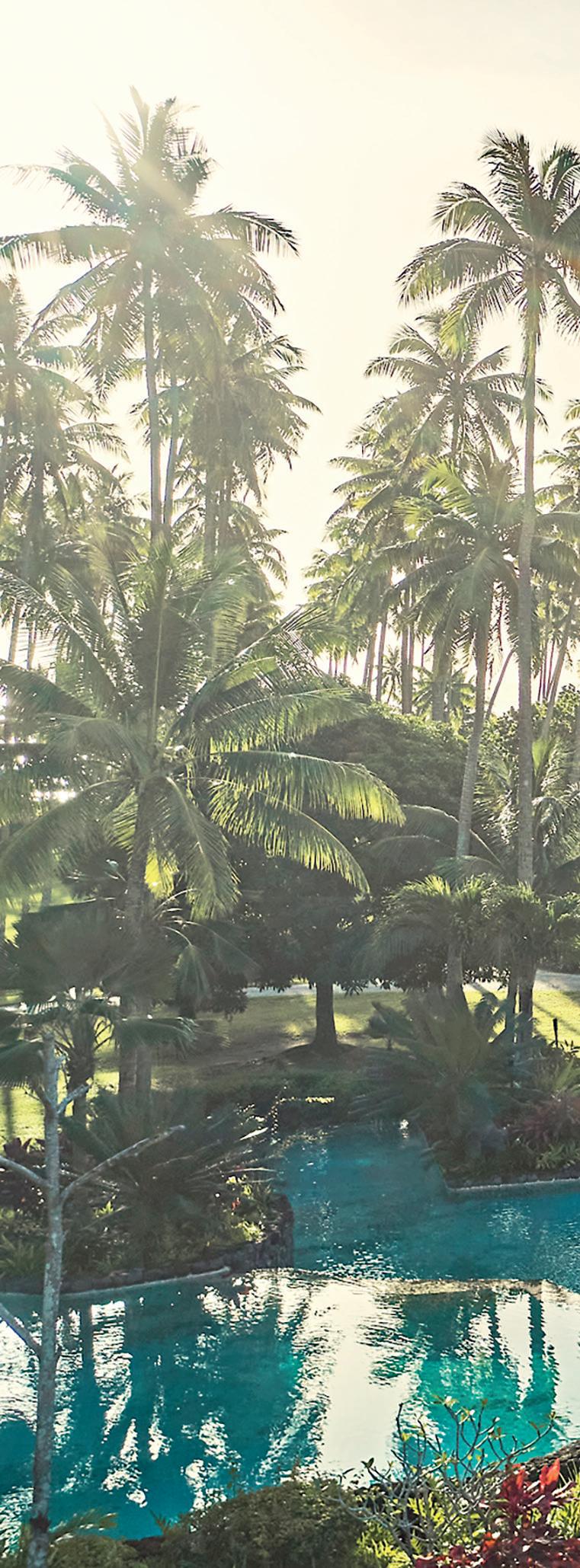
Wellbeing-wise, the resort spa –a fetching arrangement of thatched bures planted in jungly gardens, with a hillside pavilion for meditation and yoga – offers massages and aqua therapy alongside health screenings. These involve temple electrodes, sensor pads for palms and feet and the ancient Ayurvedic practice of nadi pariksha , reading the body through the pulse. Based on the results, house doctor Aju Thattarettu Raveendran can devise a comprehensive regimen for your stay.
Six Senses also serves up a thoroughly decadent itinerary for the hedonists, including in-room cocktails, lobster feasts, 2012 Grange and pizza-and-movie nights under the stars. Whichever path you choose, you’ll feel better for it by the time you leave.
The arrival and the farewell can both be dramatic. To start, costumed “warriors” welcome you with lali drum and conch. The end may involve tearful departures when children say goodbye to their resort carers. One thing’s for sure: Nanuku Resort (hotel.qantas.com.au/nanukuresort) takes family holidays to the next level.
Besides a complimentary nanny service from 9am to 6pm daily, with dedicated au pairs for children under five and shared “Nanuku buddies” for older kids, expect non-stop activities ranging from sandcastle building and touch footy to Fijian dance, language and crafts. There’s all-ages fun to be found snorkelling on the house reef,
kayaking through mangroves and, thanks to Nanuku’s location at Pacific Harbour, Fiji’s adventure capital, waterfall hikes, rafting and jet-boat thrills on the Sigatoka River.
This 200-hectare estate has ample room for the family in one- to sixbedroom lodgings of modern villas – opened in late 2019 and still as-new, with daybeds, pools and exotic gardens – and more traditional residences fronting the three-kilometre beach.
Housekeepers and cooks can be arranged for home bodies. Otherwise, The Clubhouse is the social hub, where breezy Kanavata restaurant offers Pacific Rim cuisine and lagoon-caught lobster, crab and prawns. There’s also a beachfront horizon pool with swim-up bar, a spa and a well-equipped gym.
But it’s the cultural immersion at Nanuku that’s most memorable: the warrior welcomes; the morning hymns; and especially the cooking classes with
Papa
Cakautini that start with two sticks making fire and end with a deeper understanding of Fijian culture.
The ultra-exclusive escape
Favoured by celebrities (Oprah, George and Amal) and the ultra-rich, COMO Laucala Island (hotel.qantas.com.au/ laucalaisland) is the fever-dream of

Dietrich Mateschitz, the late Red Bull billionaire. The 1200-hectare property of 25 extravagant thatched hideaways, assorted restaurants and bars and the largest lagoon pool in the Southern Hemisphere is now run by COMO Hotels and Resorts and open to anyone who can afford the roughly US$5800 a night rates.
That’s the price of entry to one of the world’s most extraordinary hotels, where guests arrive on private jets – or catch the island’s own airline from Nadi – play golf on a championship-quality course and go fishing, diving and exploring on a fleet of pleasure craft the size of a small navy (the custom-built £8-million submarine will arrive soon).
When it comes to guest desires, the sky is literally the limit (yes, skydiving is one of the activities you can try). Or perhaps a private fireworks show to celebrate a special occasion? Anything’s possible on Laucala.
There are simpler pleasures, too. Horseriding along empty beaches, tours of the 97-hectare farm, which produces everything from Wagyu beef to dragon fruit, and wining and dining in exceptional settings, including a plantation-house restaurant, a seafront teppanyaki joint and a pool bar shaped like the Sydney Opera House.
For all of its exorbitant opulence, Laucala’s greatest luxuries are the most egalitarian of all: privacy and space.
It’s only 35 minutes by speedboat from the southern tip of Viti Levu, Fiji’s main island, yet Royal Davui (hotel.qantas.com.au/royaldavuii slandresort) encapsulates the South Pacific castaway vibe. This island oasis is a self-contained domain of flourishing gardens and 16 stilted pool pavilions anchored to hillsides for maximum wow factor.
Most staff hail from neighbouring Beqa Island and bring a relaxed, superfriendly atmosphere to resort life, whether melting away cares at the cliff-edge spa, guiding excursions to world-renowned dive sites or calling hermit-crab races at the bar.
Royal Davui’s luminous villas prioritise privacy and spectacular views. Glassed-walled lounges and bedrooms open to the elements, at one with the shimmering blue world.
Life revolves around the lagoon; snorkelling its impossibly pastel reefs, diving its submarine landscapes and
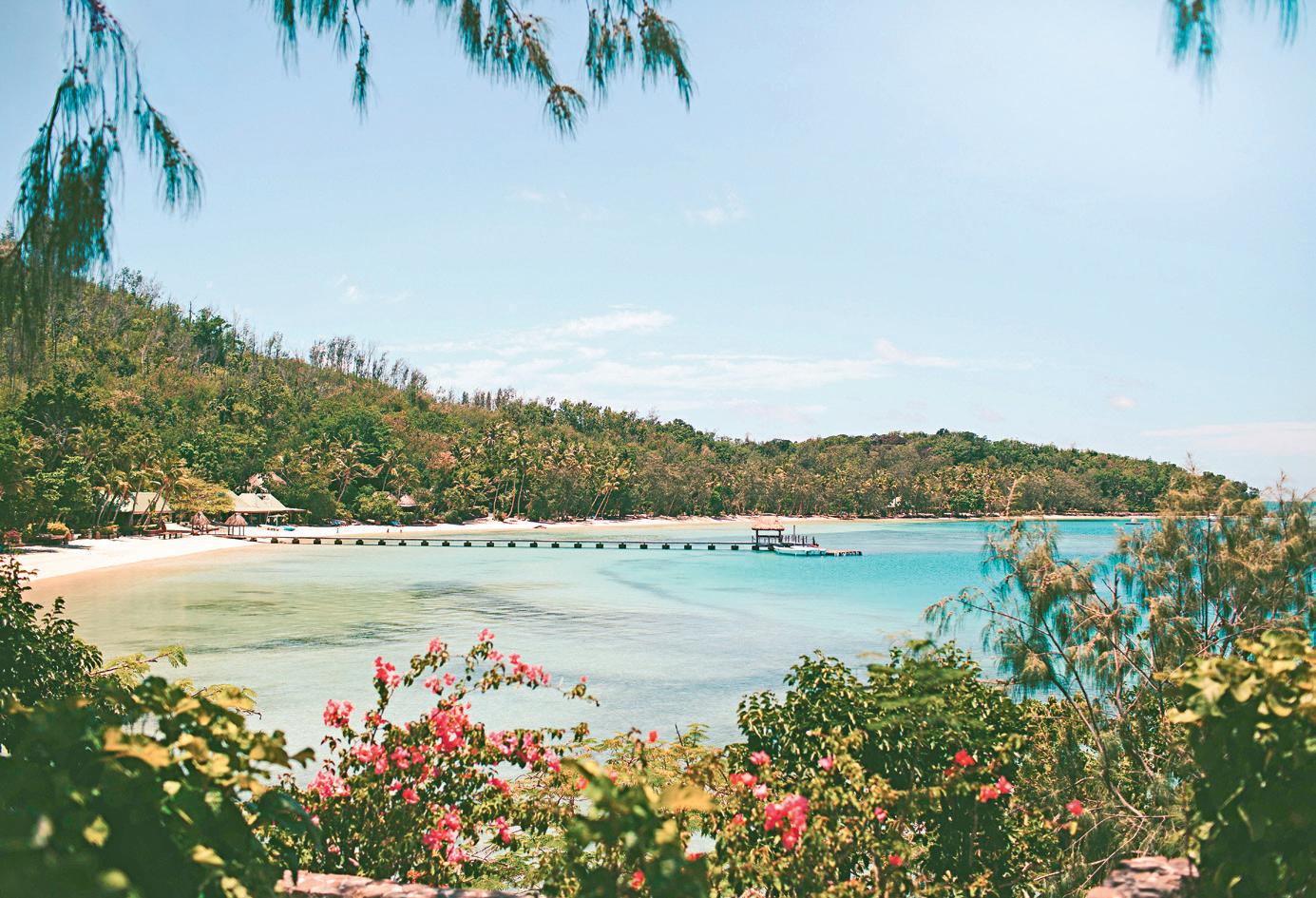
shark reserve, surfing the left-hand break at Frigates Passage, jet-skiing, sailing, kayaking or simply lolling in its crystal-clear waters. Mind the turtles.
On land, visit villages on Beqa and hike to historic sites there, such as a fortified bunker where women and children once hid from rival-island raiders. The must-do excursion is a brunch or lunch picnic on Royal Davui’s sand cay, a postcard-perfect sandbank lapped by limpid blue. Staff set the mood with seating, shade and boozy hampers; you bring the love.
Arriving by seaplane is just the first taste of how extra life can be on Turtle Island (turtlefiji.com). From the moment you glide across the Hollywood-famous Blue Lagoon to a palm-fringed beach lined with staff who sing you into shore then hug you on arrival with a “Welcome home!”, there are no more cares to be had in this world.
Turtle’s hosts, known as Mamas and Papas, take charge of every aspect of leisure and pleasure at this couples retreat. Situated in the sunny Yasawa archipelago, the island is a charmed arrangement of forested peaks and sandy coves for the exclusive use of those staying in its 14 spacious, spotless villas.
While the resort feels carefree, decades of planning and refinement – by the property’s American founder, Richard Evanson, and now his son, Richard Jnr – have gone into creating this illusion. It’s enhanced by lazy picnics on deserted beaches, clam digging, village excursions, hammock stargazing and nightly kava gatherings. There’s also guided snorkelling, fishing, sailing, scuba diving and dinners cooked in lovos (traditional underground ovens) featuring produce grown on the island or fished from its waters.
The island’s allure is obvious but it’s perhaps best captured by a guest visiting from Hawaii: “I had to come all the way to Fiji to understand what the aloha spirit really is.”

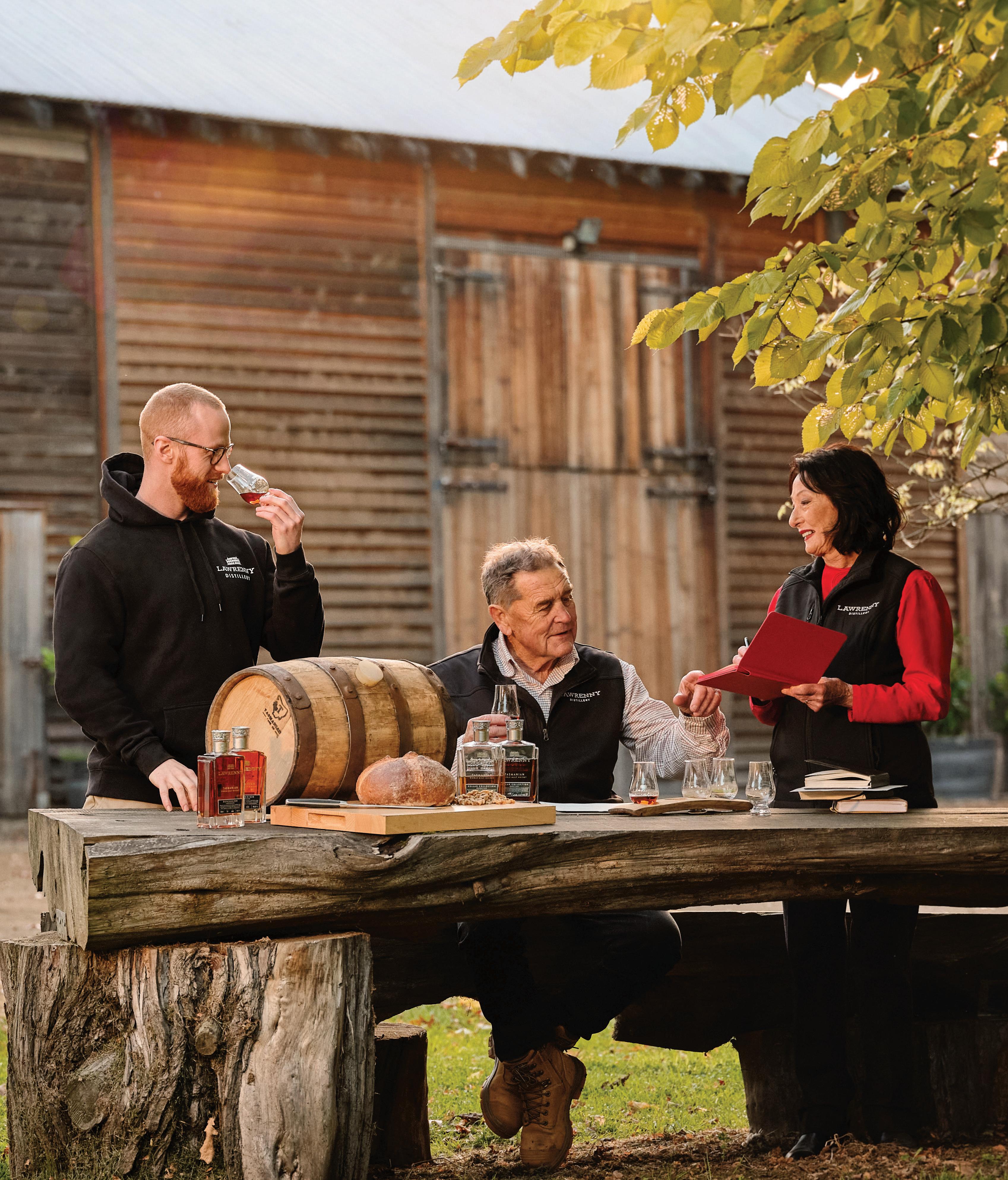

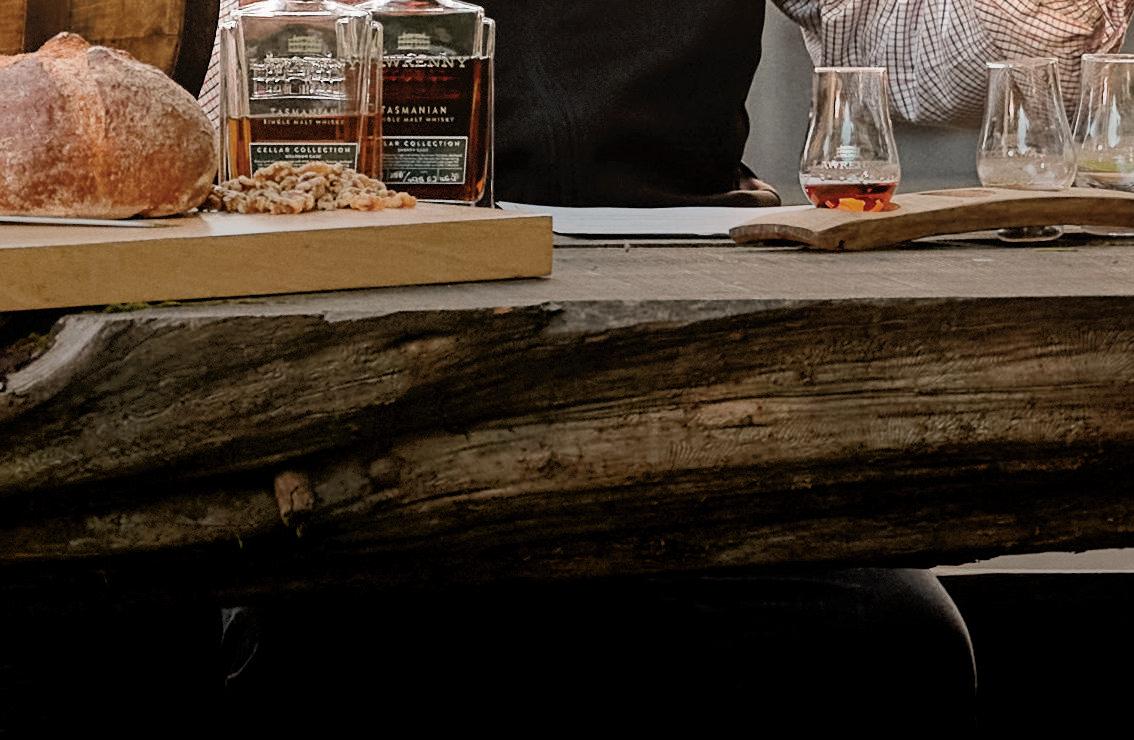



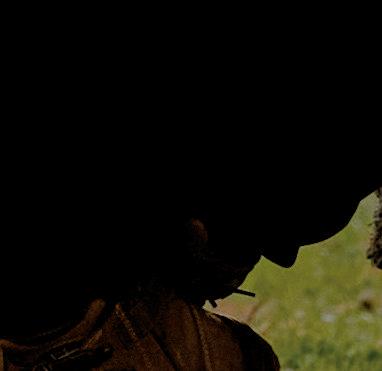

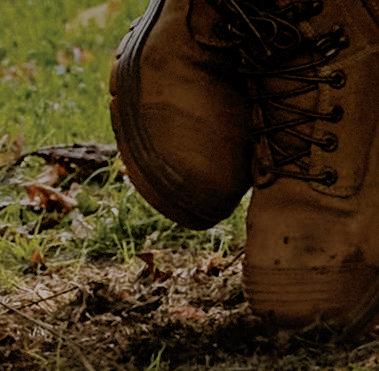

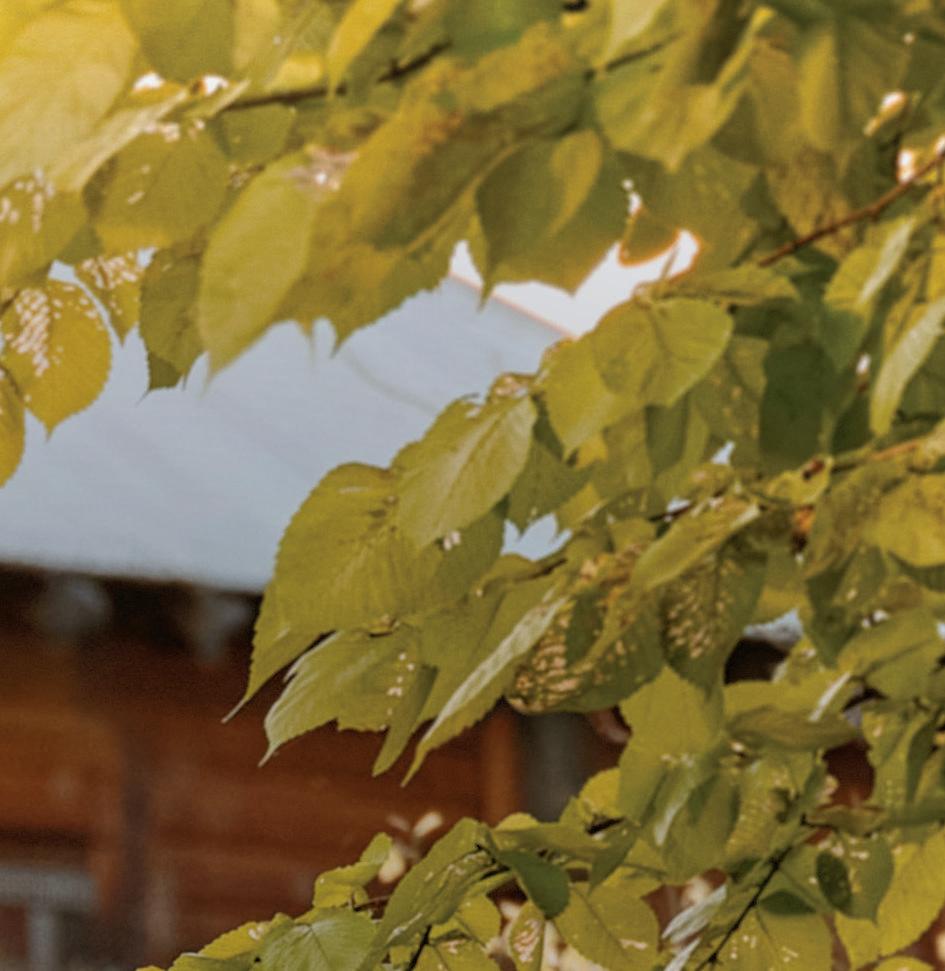



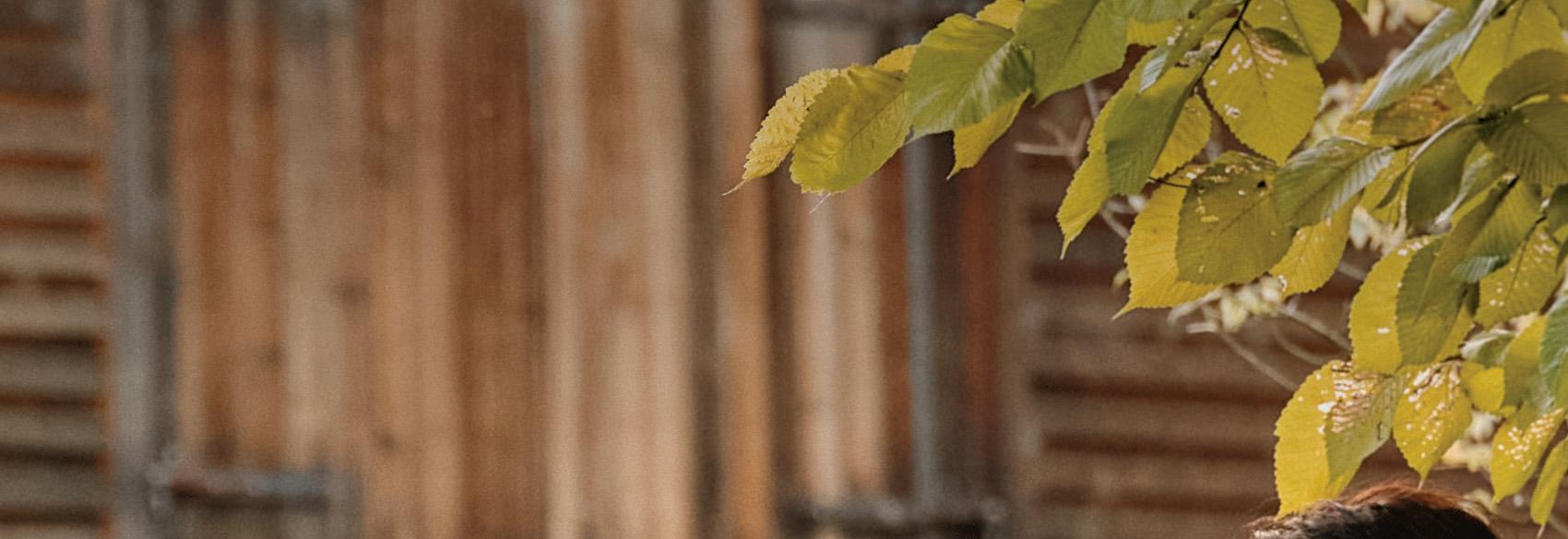






52 Raise a glass to the new breed of low-fi wine bars

58 The top places to eat and drink in Swan Valley, WA
60 Why Soul Dining’s salty-sweet beef short rib is a hit
Laid-back venues, first-rate snacks and zero pretension – the new wave of wine bars welcomes all comers.
When you walk into the Abercrombie in Sydney’s Chippendale, you could be in any number of cool renovated pubs in Australia. But climb the stairs to Lil Sis wine bar (abercrombie.sydney) and you’re in for something special. “I want people to feel at home,” says head sommelier Zoe Brunton (ex-Monopole), who aims to make exploring wine feel fun and approachable.
There are about 50 drops by the glass here so make the most of your time by asking for a “choose your own adventure” experience. You’ll be led through whatever minimalist-intervention old- and new-world wines Brunton has on the pour that day, matched with snacks such as LP’s Quality Meats charcuterie and Heinz spaghetti and cheese jaffles.
This laid-back, lo-fi loungeroom attitude is typical of modern wine bars, which are popping up like a vineyard budburst during the first hint of spring sunshine. By design, they’re far from the formality of a traditional wine bar, where you might see oenophiles burying their noses in glasses of something rarefied from an impenetrable 50-page list.
“Today’s wine bars are stepping outside of the classics – not that there’s anything wrong with the classics – and exploring lesser-known varietals and regions, including Spain, Portugal and Greece, which is great to see,” says Brunton. Big-name winemakers are less important than offerings from smaller producers that are made by people experimenting with hands-off winemaking techniques or sustainable, earth-first farming practices.
Gone, too, are the days when a wine bar called for dressing up or was reserved for a fancy Friday or Saturday night out.


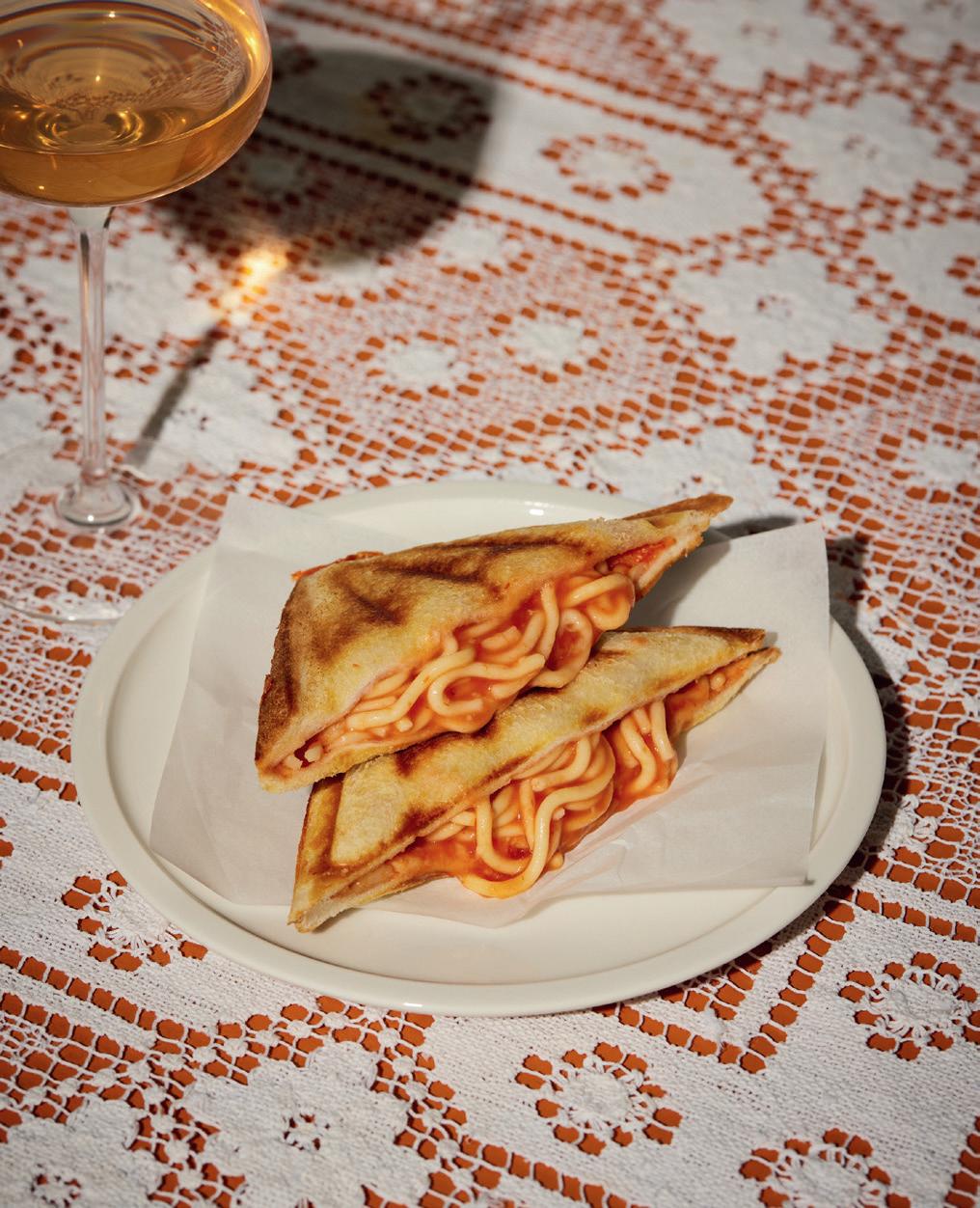

“We want people to join us all the time, not just exclusively on a date night or with friends,” says Daniel Vaughan of Adelaide’s Pastel Wine Bar (pastel.bar), adding that some of his regulars visit several times a week. “Come in at 6pm and have a family catch-up. Come in at 9:30pm after dinner for a slice of basque cheesecake at the bar. Come in at 4pm before you head to the footy.”
Collaboration is also key. Lil Sis hosts regular events with small-scale makers, such as a recent tasting night with Angus Vinden from Vinden Wines in the NSW Hunter Valley. Pastel ran a collab with Adelaide chef collective Familiar, featuring tacos and natural wines, and the team has more mates-and-plates partnerships in the works. “Community and wine bars go hand in hand,” says Vaughan.
But beyond what’s in the glass and on the plate, a top-shelf, modern wine bar is about a sense of atmosphere and a feeling of camaraderie. “You want a bar to be a place with good food, good drinks, good service and music,” says Alister Robertson of Hobart’s Sonny (sonny.com.au). “But then there’s this kind of magic element that’s a combination of all those ingredients.”
Adds Brunton: “Ultimately, I look for balance, diversity and wines that are simply delicious and made by good people.”
The name means “friends” in French and odds are you’ll spot two pals – Morgan McGlone (ex-Belles Hot Chicken) and Nathan Sasi (formerly at Nomad and Mercado) – behind the pans or on the floor of this Surry Hills corner bar (barcopains.com). Inside glasses, you’ll find well-chosen, Euro-leaning drops and you might hear dad-vibe Hall & Oates on the stereo. Just like hanging out at a mate’s place.
Ballarat has some serious food and wine chops these days and this cool 20-seater (pencilmark.com.au) is a main player. Stop by for a fun three-course set menu by chef and co-owner Derek Boath or a low-key glass and snack (try a plush nebbiolo and a plate of pork and fennel polpette) every day of the week.

You can treat Bar Heather in Byron Bay (barheather.com) like a proper sit-down restaurant or a place to pop into for a cheeky
glass of natural pinot noir and venison tartare with gnocco fritto. Owned by wine importers James Audas and Tom Sheer, with food by Ollie Wong-Hee (ex-Sixpenny and Ester in Sydney), it has a tonne of character and cred.
A hallmark of a good wine bar is a sense of spontaneity; it should feel like you can call in at the end of the weekend – without a booking – to ward off the Sunday Scaries with a glass of picpoul and a little brandade on toast. Bar Francine (barfrancine.com) in Brisbane’s West End keeps walk-in tables
free to help make that Monday transition a little easier.
Natural wine and food cooked over fire – there’s something about that combo that feels earthy and honest. Clover in Melbourne’s Richmond (clover.wine), with its handsome stained-glass window frontage and pretty, ivy-draped courtyard, celebrates both these things in equal measure, with a sprinkle of Parisian bonhomie. Wine maestro Lyndon Kubis has numerous bottles on the go at any time so you’ll always find something that piques your interest.
There’s no law that says the wine world has to be dominated by Europe and its colonial offshoots. Kahii in Sydney’s CBD (kahii.com.au) is an intriguing combination of a kissaten – a Japanese-style coffee house – during the day and a Japanese-inflected wine bar at night. In its after-dark format there’s a largely French list (though Australia features, too), with Japanese snacks prepared by nearby restaurant Kuro.
The team from Tasmania’s pioneering Stefano Lubiana Wines has opened a Hobart showcase for their own products that also features the very best drops from the rest of the island state, the mainland and beyond (molto.wine). The ever-changing chalkboard by-the-glass list –usually about 15 wines at any time – might include a McLaren Vale grenache, a Piedmontese barbaresco and a local riesling, just for starters. Pair your choice with delicate bites, such as farinata with XO sauce.
Come for the natural wines and we can all but guarantee you’ll stay for the food, which might be a club sandwich or a plate of Mexican-inflected amberjack crudo. Casa (casa-casa-casa.com) in Mount Hawthorn loves a collab and has previously held one-off dinners featuring Melbourne chefs Rosheen Kaul from Etta and Bar Liberty’s Casey Wall.
Adelaide does a very nice line in petite, neighbourly wine bars – hardly surprising when several of the country’s best wine regions are on the city’s doorstep. This matesy, walk-ins-only spot (179 Hindley Street) focuses almost entirely on South Australian drops from small, minimal-intervention producers such as Adelina, Brave New Wine and Bink. The snacks are low-key, including simple cheese and salumi plates.

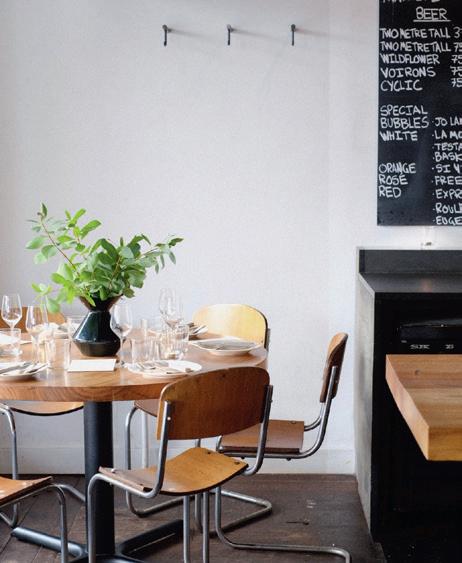
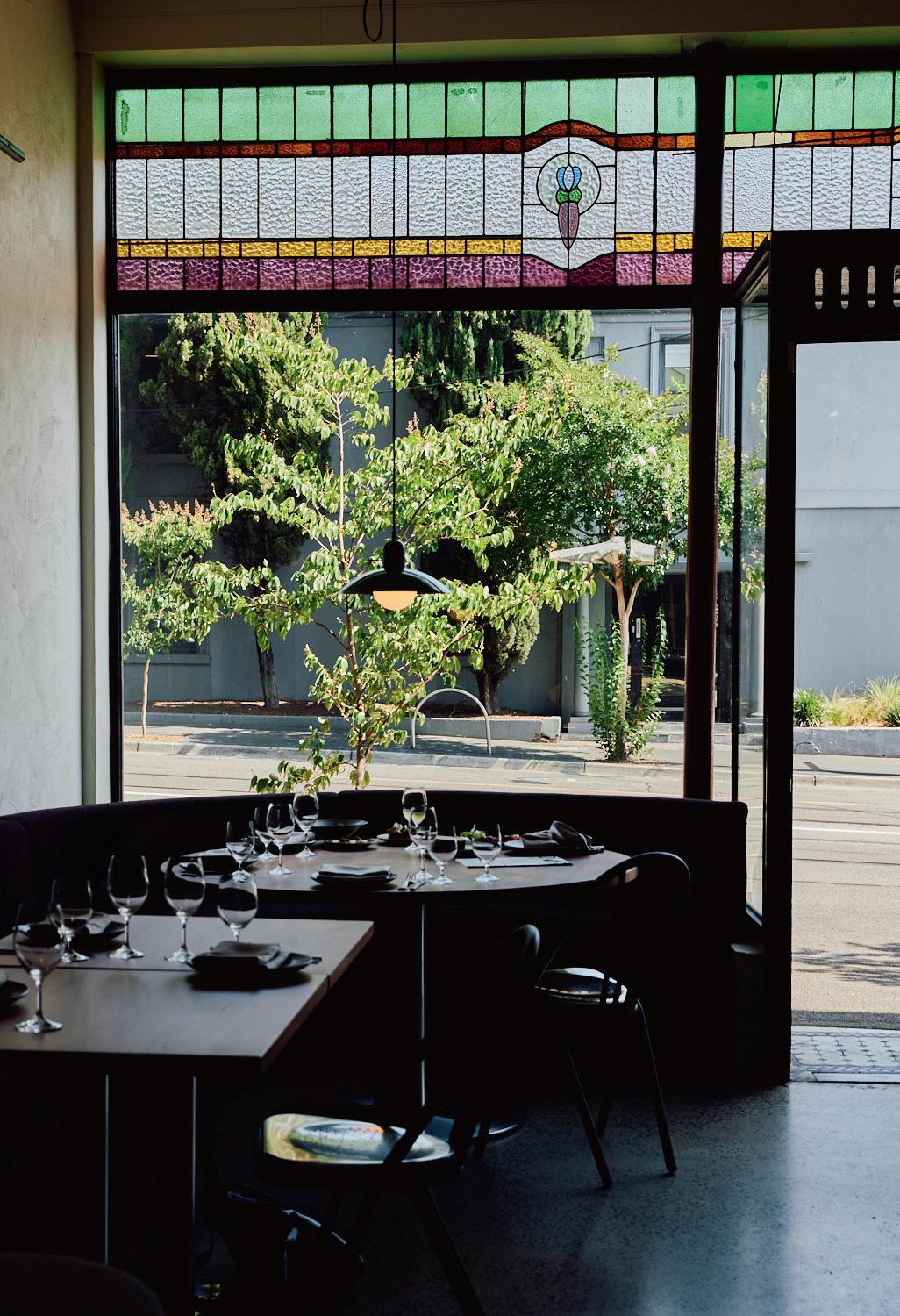
You’ll find the best of the Canberra region’s cool-climate vino on the tight by-the-glass list at this super-chilled joint in Campbell (paranormalwines. com). But these guys don’t play only on their own patch; there are lo-fi options from the rest of Australia and around the globe, to pair with snacks from Sydney’s LP’s Quality Meats and anchovy toast soldiers. WA
Every wine poured at this Perth wine store and bar (winesofwhile.com) is natural, fuss-free and made by smallscale producers from all over the world. Food is equally simple but just as thoughtful: perhaps a couple of “ice” mackerel – a lesser-known fish – served with a pil pil sauce or a delicate smoked eel and kohlrabi salad.



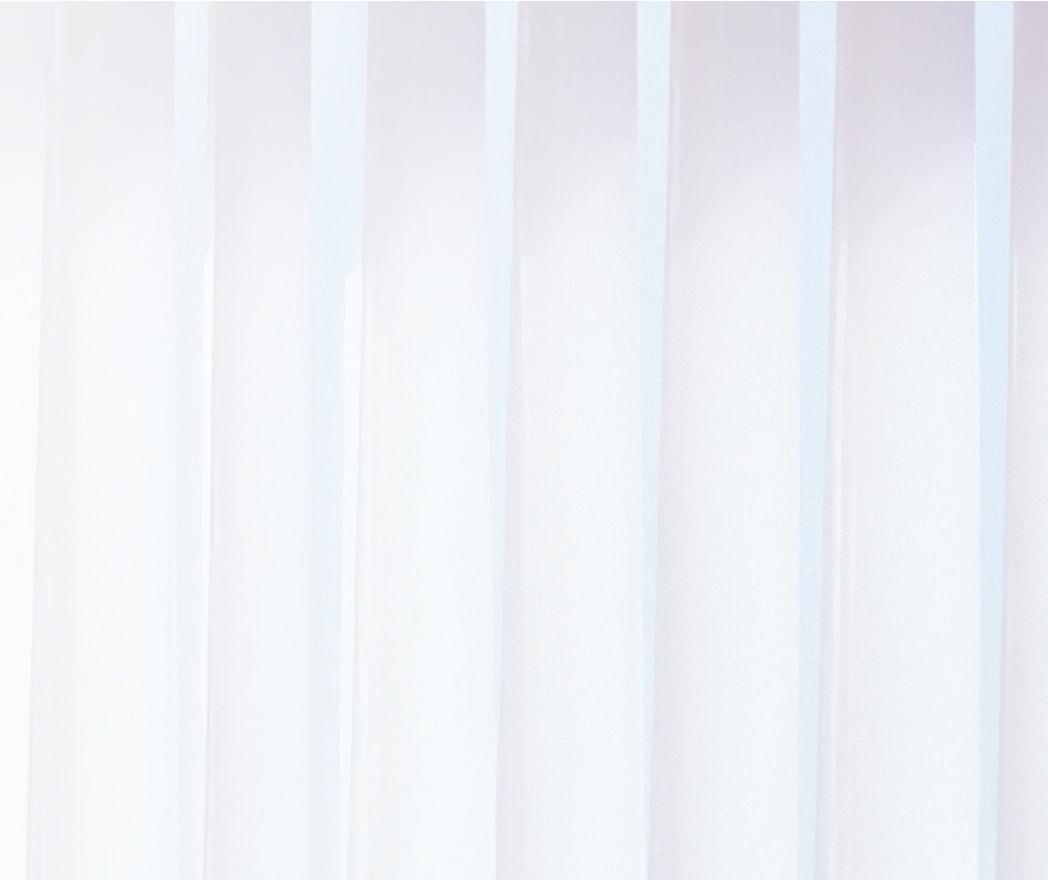


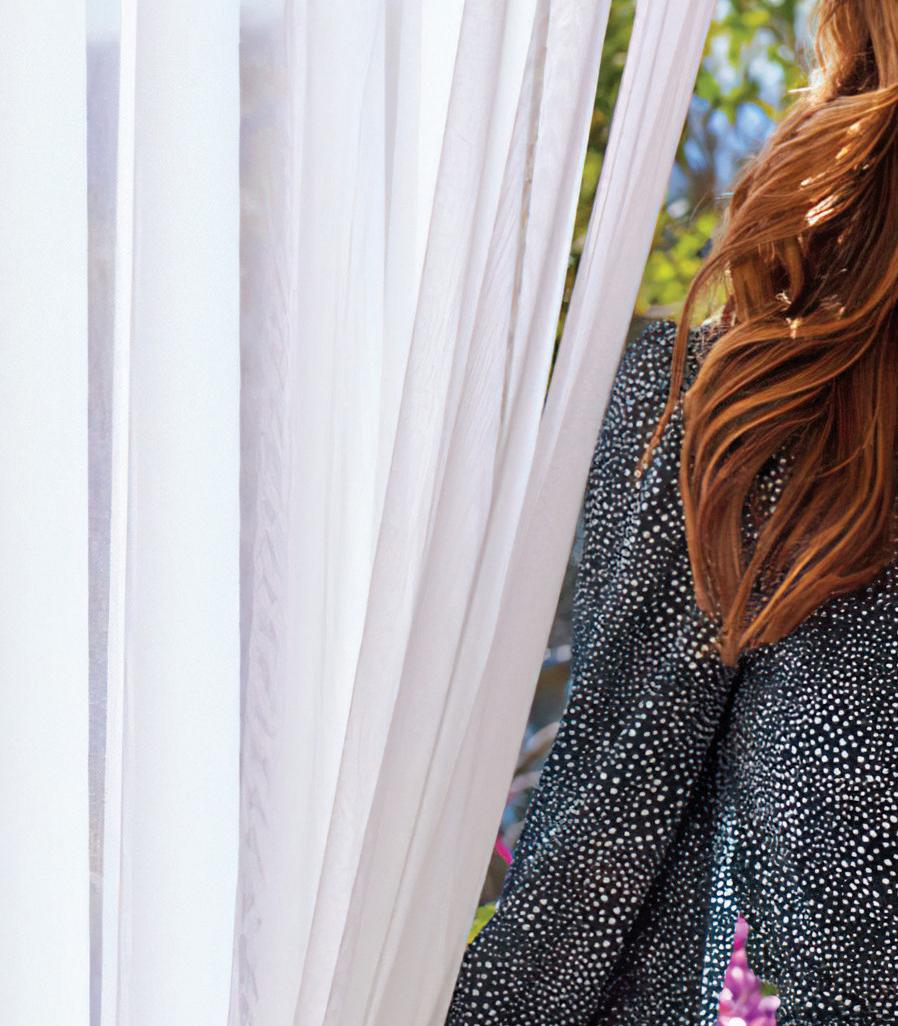

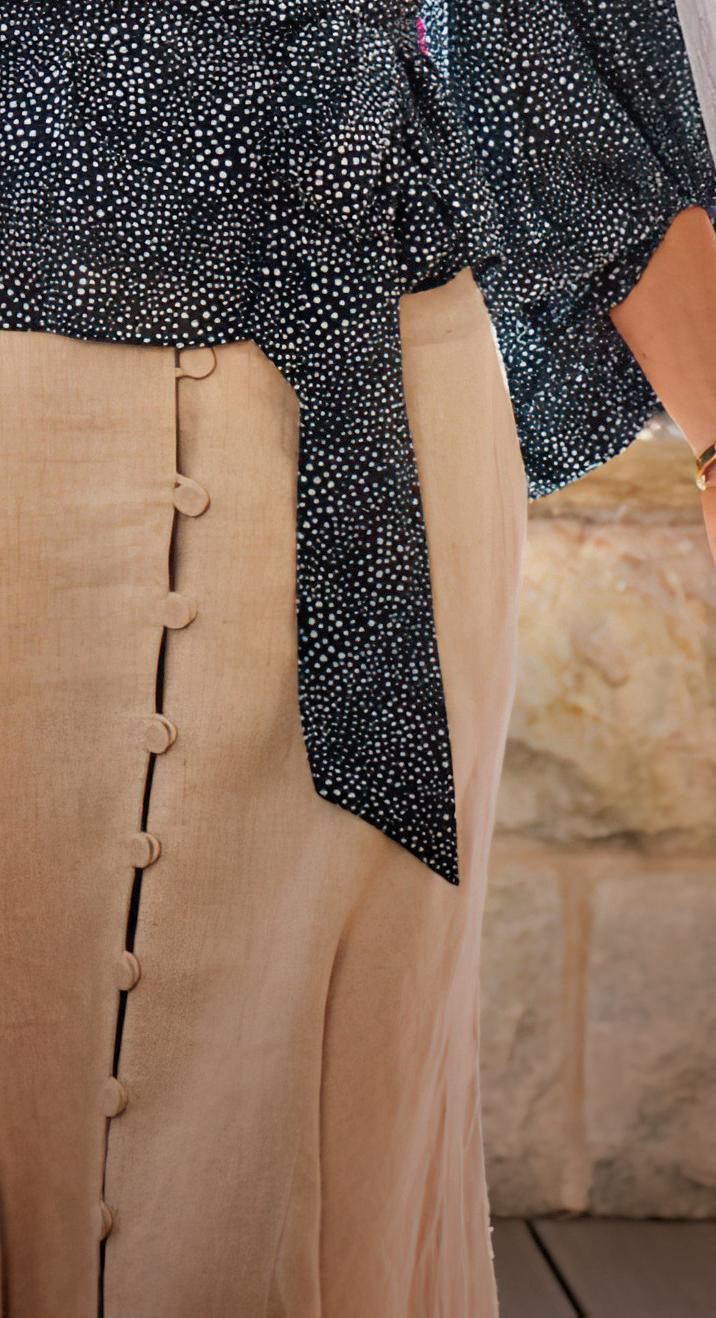



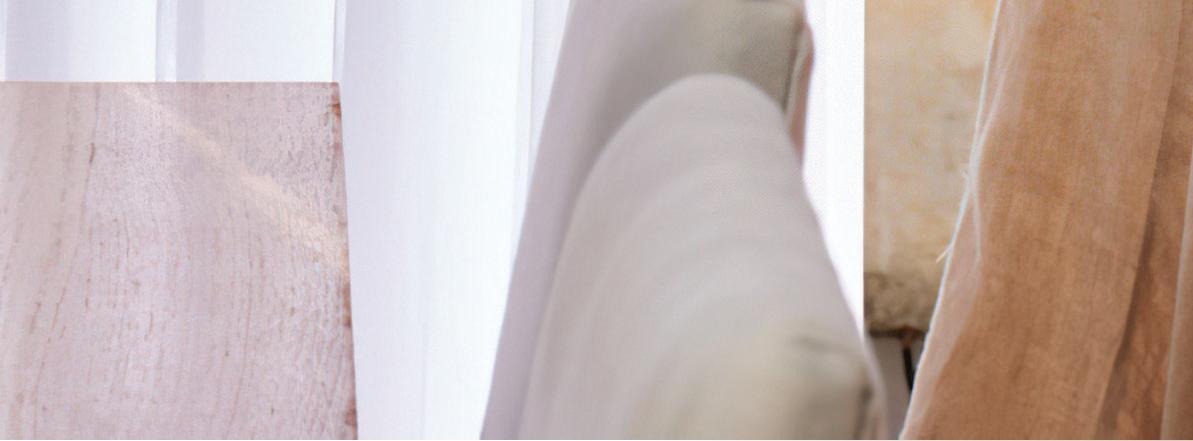




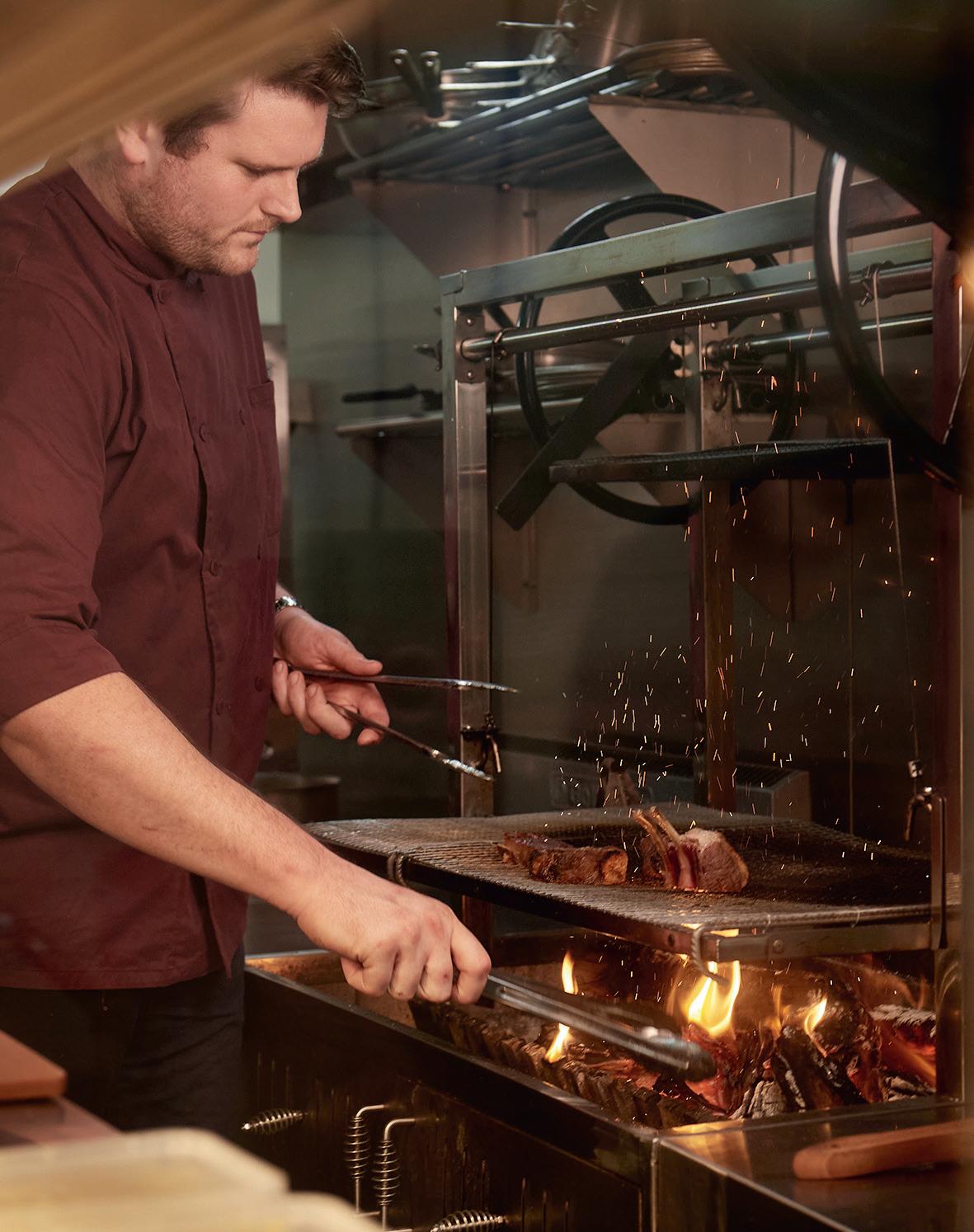
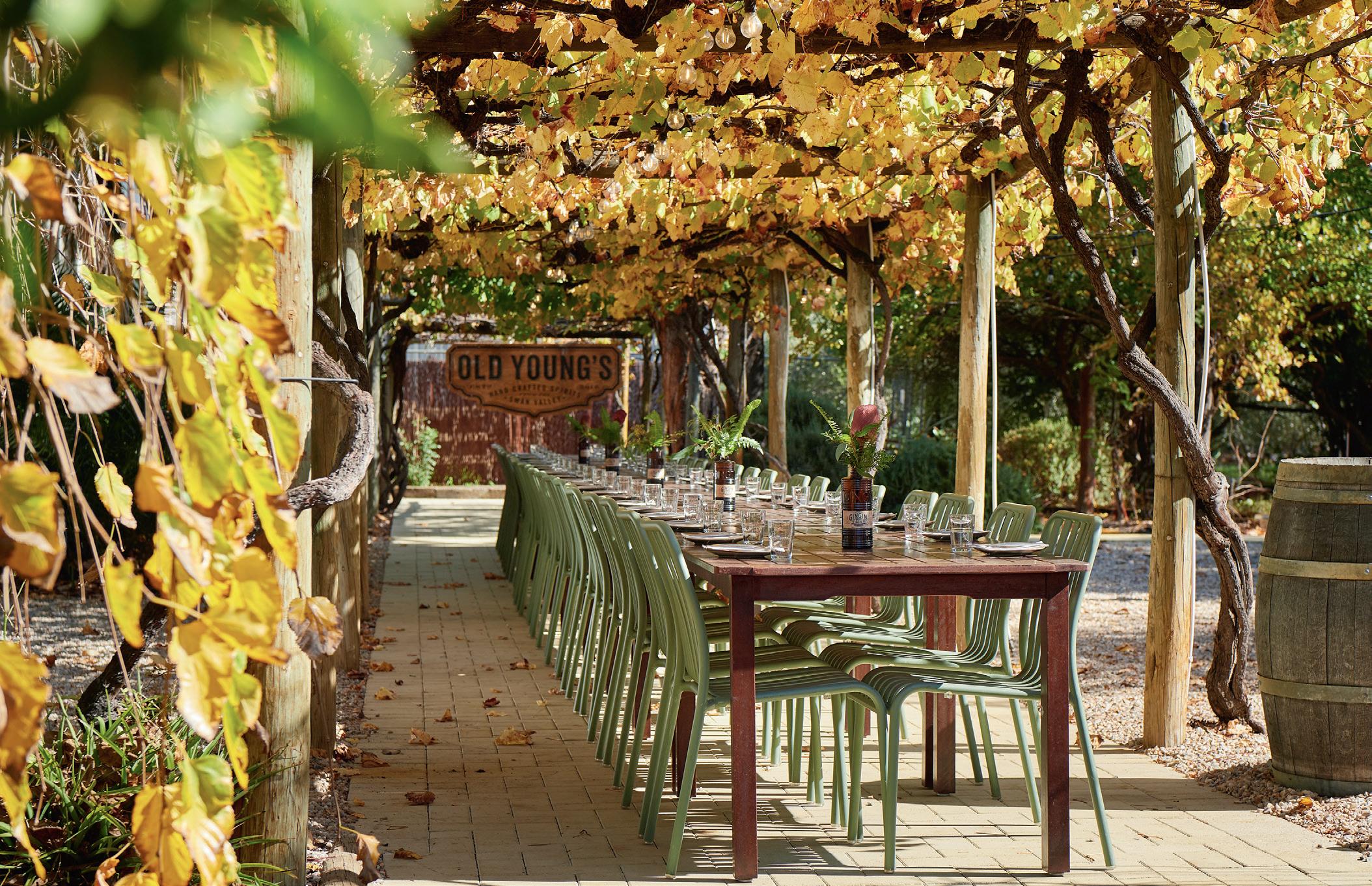
With its ornate lighting, rich timber tones, velvet seats and roaring fire, Oscar’s is all old-world charm – the ideal setting to savour a three-, four- or six-course tasting menu by local talent Justin Hughes, who trained at Sydney’s Becasse. His menu is simple yet sophisticated, using herbs and greens grown on the property and his own in-house dryaged beef, sustainably sourced seafood and produce from local growers – all paired with the finest Western Australian wines.
114 Swan Street, Guildfold; 0424 389 487; oscarsguildford.com.au
“Without atmosphere, a painting is nothing,” said Rembrandt and you could say the same about pubs, which is why the Taphouse is a favourite. You can grab a table in the beer garden on the banks of the Swan River or throw down a picnic rug under the dappled light of the gum trees and listen to the kids playing on the mini-golf course while tucking into a mac and cheese croquette with truffle oil aioli and chives.
34 Hamersley Road, Caversham; (08) 9379 0344; taphousemulberryestate.com.au
This café started small, showcasing the most petite of French delicacies, the macaron, but it now boasts the best French-style brunch in the valley. Say oui, oui, oui to a freshly baked croissant, croque monsieur or smashed avo on a baguette, which you can enjoy in the converted barn-style interior or outside under the sails of the verandah.
100 Benara Road, Caversham; (08) 9377 4674; maisonsainthonore.com
Best casual dining
Old Young’s Kitchen
Sitting outside at Old Young’s Kitchen, as shafts of sunlight fall through overhanging vines, you could swear you were in a villa in Umbria. That is until you try the distinctively Australian fare and native ingredients such as bush tomato, finger lime and youlk. Start with a gin cocktail and drift along to any of the Asian-fusion mains, like the market fish with house miso crème fraîche and lemon myrtle. Wrap it all up with a burnt meringue or local cheeses with honeycomb and apricot gel.
10581 West Swan Road, Henley Brook; (08) 9296 6656; oldyoungskitchen.com.au
In Italy, nothing matters more than family and feasting and you can find both here in this homage to the Pinelli family’s Italian heritage. Swirl a glass of premium wine as you take in the splendid vista from the alfresco dining area and muse upon whether you’d like the duck à l’orange with braised cabbage and roasted carrot, the Mediterranean moussaka or linguine with clams.
30 Bennett Street, Caversham; (08) 9279 6818; pinelliwines.com.au
Yahava KoffeeWorks
Follow the aromas of freshly roasted beans to Yahava KoffeeWorks, where a complimentary coffee tasting and chocolate-coated coffee beans greet you. The enthusiastic staff will help you pick from a selection of single-origin coffees or their own unique blends using Arabica beans sourced from 20 different locations, from Papua New Guinea to Italy.
4752 West Swan Road, West Swan; (08) 9250 8599; yahava.com.au
STORY BY ALECIA SIMMONDS PHOTOGRAPHY BY FRANCES ANDRIJICHJust outside Perth and famous for its vineyards, this district is also blooming with produce, from dry-aged beef and venison to just-picked herbs and greens.
Earn your degree in gin-making (black truffle gin is a new favourite) and whisky production, all in the space of a day. Whether you want to pop in for a cellar-door tasting, get a bite of farmhouse pork chorizo, gruyère and dried fig, or while away the day (or night) in the restaurant, where you can wolf down a whiskey bacon pizza, a team of experts at this distillery can educate your palate in a delightful array of craft spirits.
45 Hyem Road, Herne Hill; (08) 9296 6190; distillery.com.au
For anyone wanting to keep their finger on the viticultural pulse, the family-owned and -run Swan Valley Wines is a must-visit boutique vineyard, tucked away in the gravelly loam soils of the state’s oldest wine region. The winery is celebrated for its natural winemaking and commitment to protecting biocultural diversity – not to mention its rockstar chenin blanc and funky reds.
261 Haddrill Road, Baskerville; 0450 648 918; swanvalleywines.com.au
Mandoon in the Noongar language means “place of many trees” but it has also come to mean place of abundant pleasures.
Chef Michael Hartnell has brought his international culinary experience to bear on regional produce at the estate’s Wild Swan restaurant, creating a menu that features venison tartare with rhubarb and lamb rump with wattleseed jus.
10 Harris Road, Caversham; (08) 6279 0500; mandoonestate.com.au
Sometimes, the best measure of a dish’s success is when it disappears. That was the case at Korean fine-diner Soul Dining (souldining.com.au), in the Sydney suburb of Surry Hills, when the much-loved beef short rib moved on. Based on the classic Korean galbi – which literally means “short rib” – it had been a huge hit since the restaurant opened in 2018 but after two years, the team felt there were newer options that deserved a run on the menu.
“When our regulars found out the beef short rib was going, they were really sad,” says co-owner Illa Kim. “Then, every menu change after that, they kept asking if it would be coming back.”
What is it about this short rib – often considered a fairly low-fuss item for a restaurant to prepare – that so enchanted diners? Kim says several factors are at play. “The galbi sauce that we make has the perfect balance of salty and sweet but it is also very complex at the same time.” Ingredients include soy sauce, onion, garlic and the clincher: Korean pear juice. The ribs are marinated in the sauce overnight, cooked sous-vide then finished on a charcoal grill before being served with a jus made from the same galbi sauce as the marinade.
“Korean pear juice makes meat tender and being grilled over charcoal gives another textural layer. The Angus beef we use is very high quality as well.” The result, served with chilli yuza pea purée, is sticky and moreish.
Thankfully for Soul Dining customers, the short rib made a triumphant return to the menu in 2023. Is it ever likely to have its status as a favourite threatened again? Not on Kim’s watch. “It’s always difficult to say as the creative heads in the kitchen might want to do a new spin on it,” she says with a laugh. “But I’ll surely fight for it.”


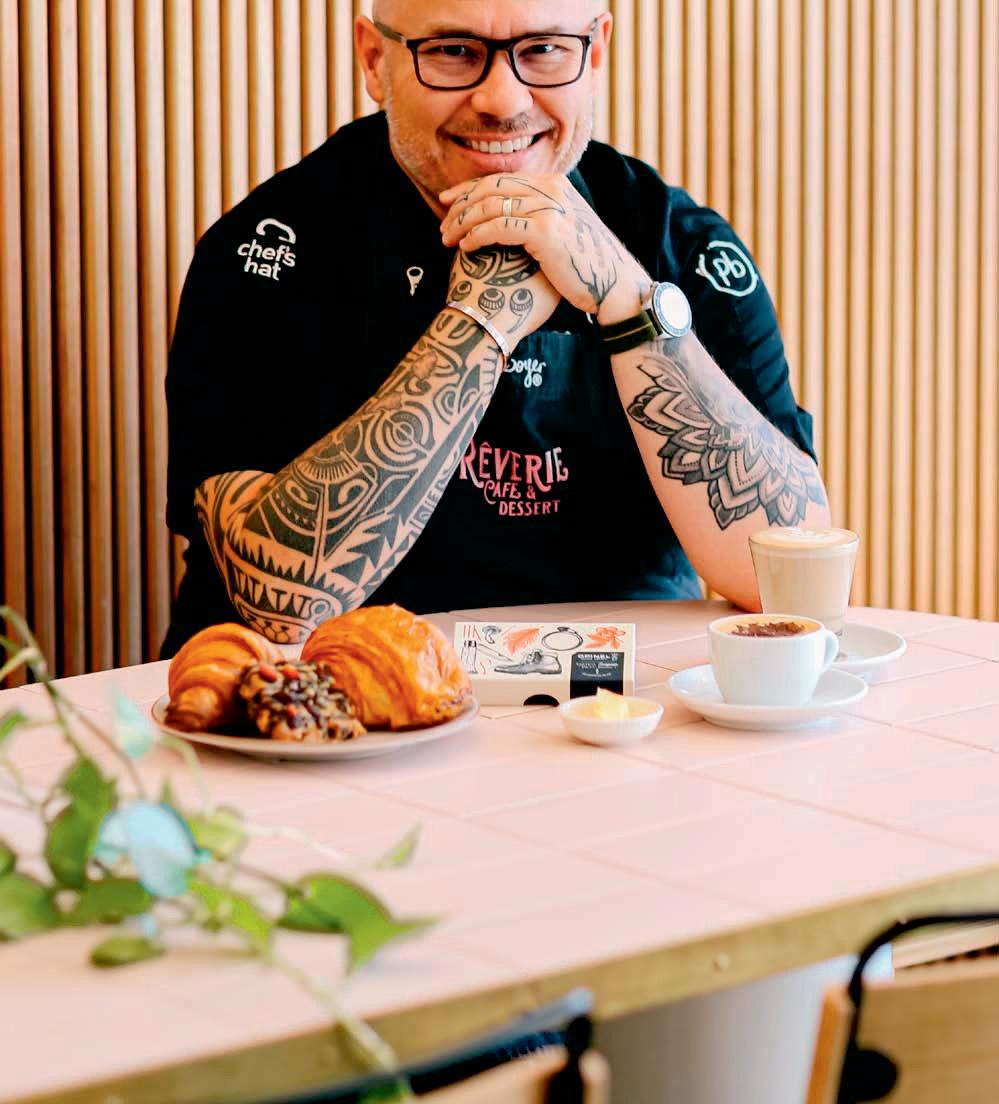
A maestro in his domain, Boyer composes a culinary symphony at Melbourne's Réverie Cafe and Dessert Bar, under the timeless allure of Opinel knives. Embracing unwavering pursuit of perfection and meticulous craftsmanship from his French roots, Boyer partners with Opinel and transforms every cut and slice into a harmonious masterpiece. Indulge in the realm of French culinary delight, where Opinel knives orchestrate impeccable precision. Engraving and personalisation on your own Opinel blade await you at opinel.com.au
reveriecafe.com.au


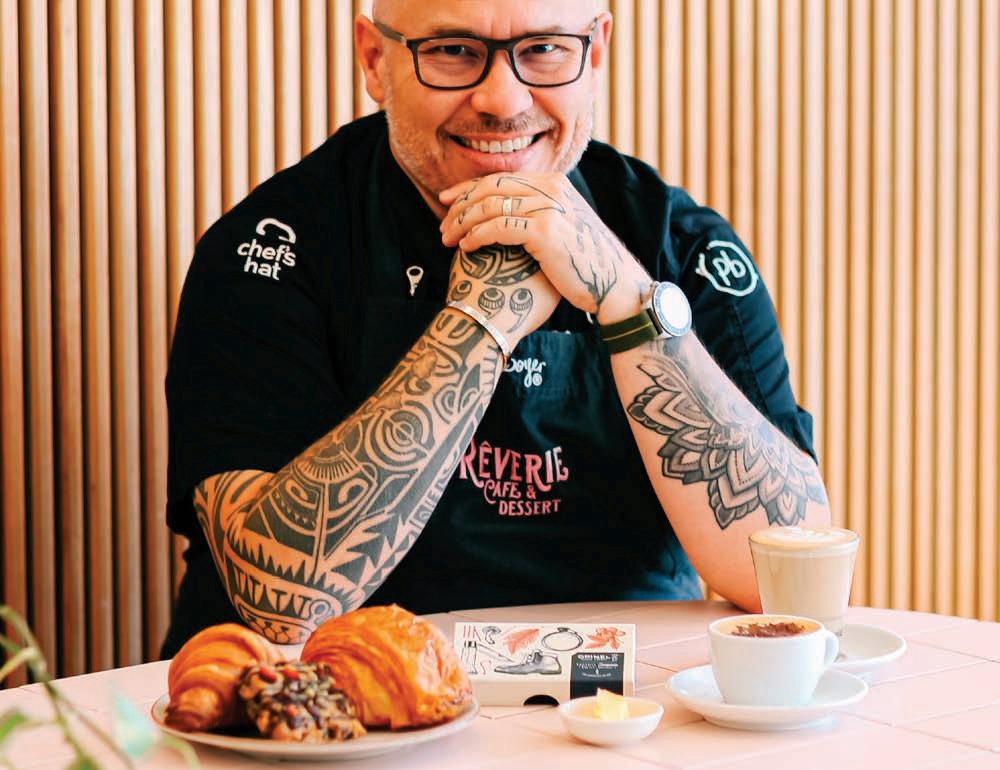

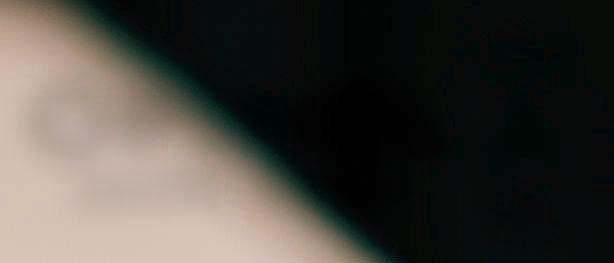


 STORY BY JESSICA IRVINE
STORY BY JESSICA IRVINE
This region’s natural beauty is renowned but the food scene is only just starting to turn heads. Chef Simon Furley shares where he eats when he’s off the clock.
When a restaurant sits in a landscape as special as the Scenic Rim – with its six national parks, epic mountain ranges and Gondwana rainforests – it’s probably hard to draw a visitor’s attention to what’s on the plate. But Simon Furley, executive chef at The Paddock restaurant at Beechmont Estate (beechmontestate.com.au), does it from one service to the next with modern Australian dishes that emphasise his “commitment to using everything hyperlocal”. That passion has given the British-born chef, who moved to Australia seven years ago, a compelling roadmap to the region, a kind of join-the-dots for the tastebuds.
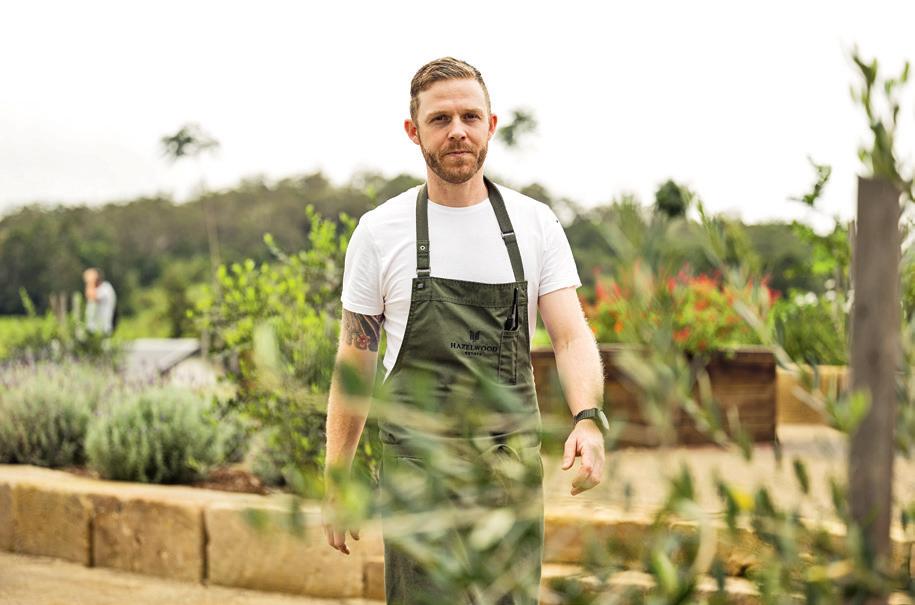
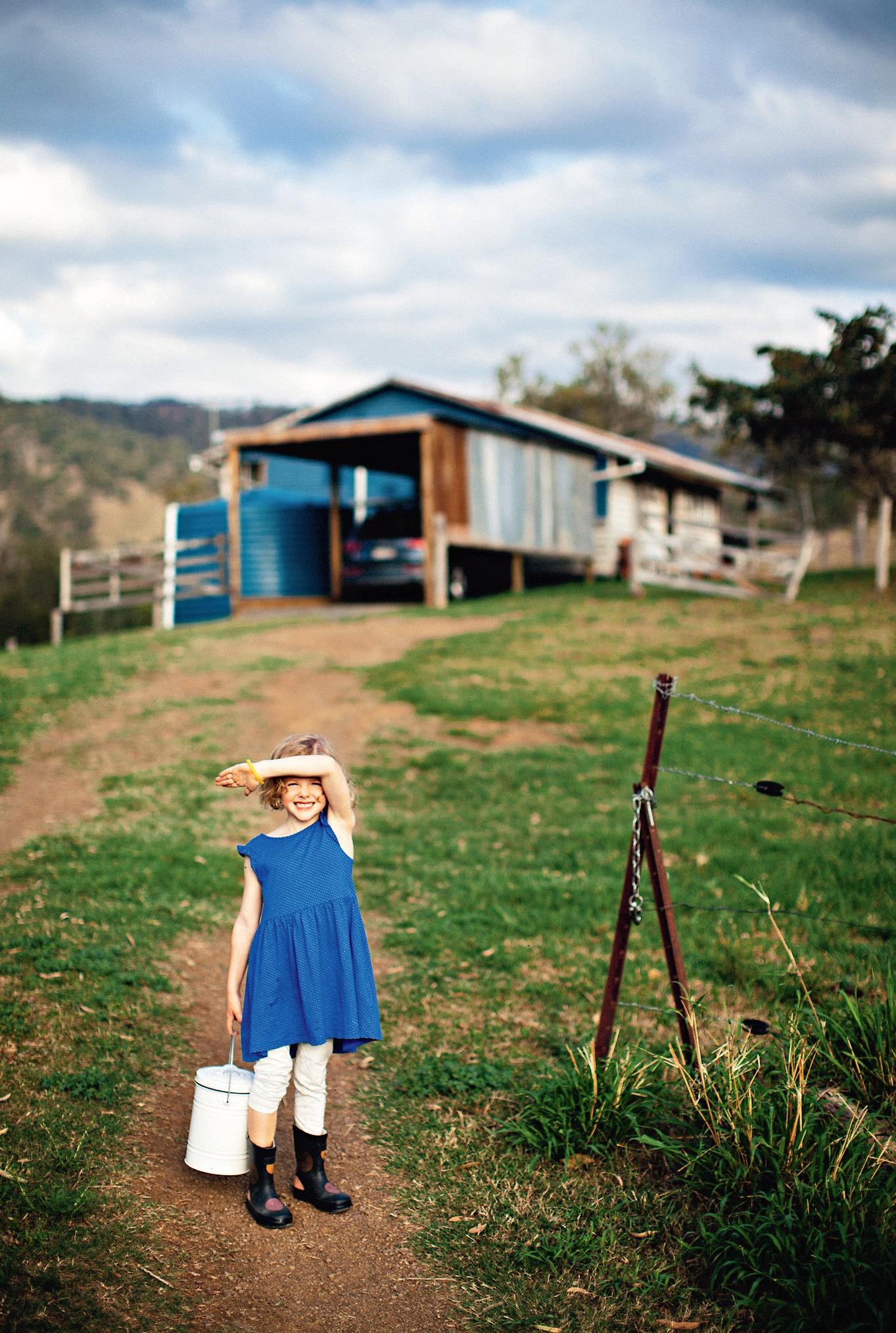
For the carrot cake
“This place is about an hourand-a-half each way from either Brisbane or the Gold Coast and the drive is stunning – you see all the rolling hills and the back of Lamington National Park; there are old wooden bridge crossings and awesome farms. Then you arrive at this café (scenicrimfarmshop.com.au) in Kalbar in these massive gardens. I take my two-year-old daughter here for an afternoon of carrot cake and smoothies.”
“Blume is a more high-level place to go for lunch or dinner (blumerestaurant.com.au). It’s about an hour from Brisbane in a place called Boonah, which used to be a sleepy country town but is taking off now. I’m good friends with the owner and head chef, Jack Stuart, who’s famous for his local crumbed mutton neck sanga with black garlic.”
the produce
“Tommerup’s farm in Kerry (tommerupsdairyfarm.com.au) has an open day once a month and they’ve won countless awards for their products. It’s a sixth-generation operation and it’s where I source the pork we serve. We get in whole pigs and butcher them onsite, using everything nose-to-tail. They also have
dairy cows and do beautiful handmade butter and crème fraîche.”
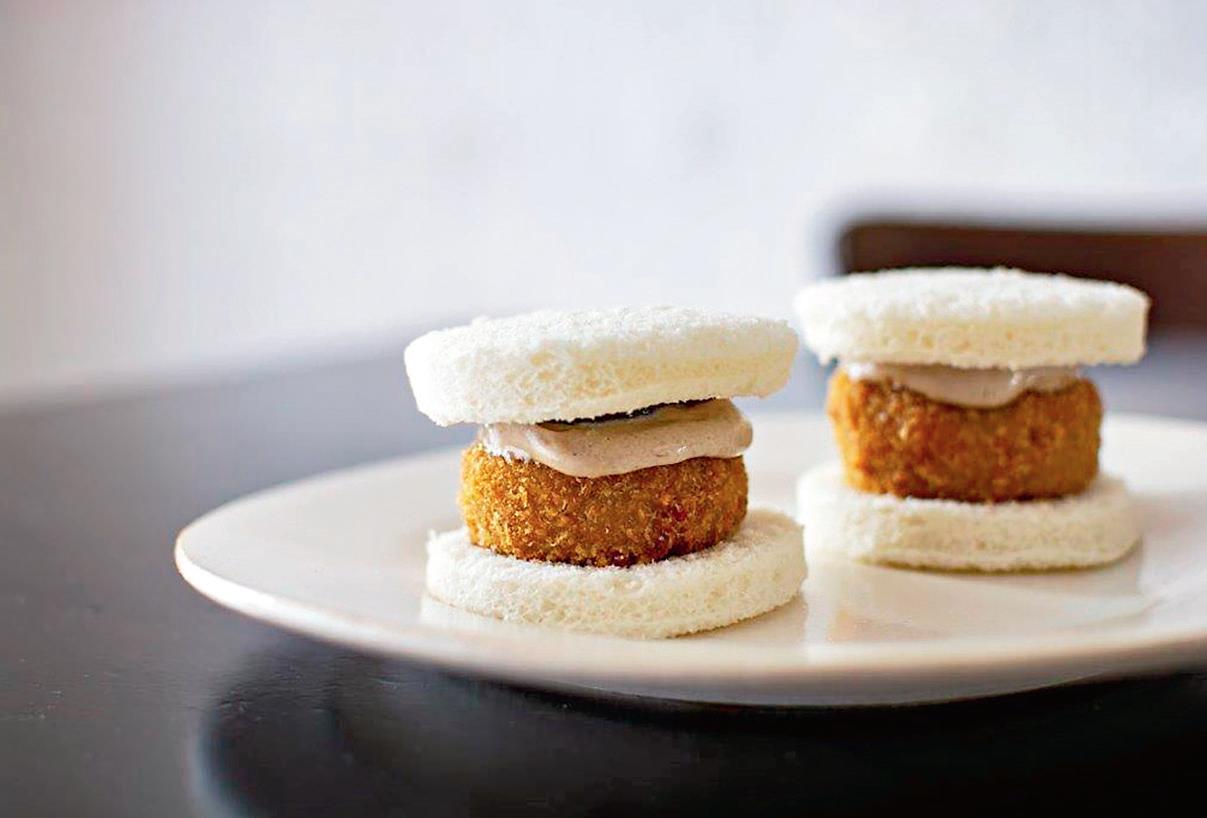
For a pie
“One of the best pie shops in South East Queensland. This café in Canungra (theoutpost cafe.com.au), about 20 minutes from our restaurant, has been around for generations. My chefs and I do wild foraging once a week and most times we start off with a pie. There’s one called the spicy buffalo chicken pie, which is made with blue cheese and is pretty special. There’s so much to do in the Scenic Rim –hiking and walking – so it’s good to get a pie before you head off.”
For the fetta cheese
“Camel meat is very strong – beautiful but strong. It’s only for certain people. But the cheese they make at this farm (summerlandcamels.com.au) in Harrisville is incredible. It’s really rich and creamy, not overly salty. We use it in our breakfast dishes at the restaurant.”
We know grenache and shiraz but what does mourvèdre add to a GSM blend? Mourvèdre adds punch and depth to the juiciness of grenache and the more aristocratic flavours of shiraz. It’s a bold but not brash, rich yet not heavy savoury red grape. Is it also bottled solo? Yes, we’re seeing varietal mourvèdre pop up more and more in its South Australian home ground of the Barossa and McLaren Vale, plus in newer regions such as Western Australia’s Great Southern. It’s a riff on the traditional blended GSM or the French equivalents, Côtes du Rhône and Châteauneuf-duPape. Mourvèdre also leads the way in Provence with its potent Bandol reds. Is it new to Australia? No, in fact some of the oldest vines in the country are mourvèdre. The Hewitson (left) is sourced from vines planted in 1853. The old-timers called it mataro and blended it with shiraz or cabernet sauvignon. So it’s a French grape? Actually, its origins are in Spain, where it’s known as monastrell. It seems that mourvèdre loves the sun… While the warm regions of SA dominate our plantings, the evolving climate means that mourvèdre (and grenache) are finding new homes in Victoria, NSW and WA. What food suits it best? A bold grape demands equally bold flavours – lamb kebabs, cassoulet, lasagne or anything off the barbecue. Vegetarian dishes, such as caponata and the Spanish escalavida, also fit the bill. What’s the price range? Expect to pay $25 to $50 and towards $100 for top-shelf drops.
Barossa Mataro
Fiona Donald aims to make a fruit-forward, easy-drinking mataro unsullied by oak and this deep purple, buoyant red oozes blackberry, plum and mulberry flavours followed by mild-mannered tannins.
Barossa Valley, SA / 2021 / $30
Andre Bondar sources his fruit from Willunga and crafts it like a pinot noir. The result is bright and breezy, in the style of a Spanish joven (young) monastrell, with raspberry, blueberry and a hint of star anise.
McLaren Vale, SA / 2021 / $35
The wunderkind of Spanish wine, Telmo Rodríguez discovers long-lost plots of old vines and reinterprets them in a modern style. Blackberry pastille, clove and violet greet the nose, with structural tannins on the finish.
Alicante, Spain / 2021 / $31
Dean Hewitson has championed local mourvèdre for more than 20 years, sourcing fruit from eight rows of old vines. Intense aromas of black fruits, clove and aniseed lead to an equally dense palate. The tannins will soften over time.
Barossa Valley, SA / 2019 / $90

Now’s the time to try the lesser-known red in GSM.
NEWLY RELEASED ALL-INCLUSIVE VOYAGES

Regent Seven Seas Cruises®’ luxurious ships explore more than 500 immersive destinations across the Mediterranean, Northern Europe, Asia, Alaska, Australia, New Zealand, South America, South Pacific and more.
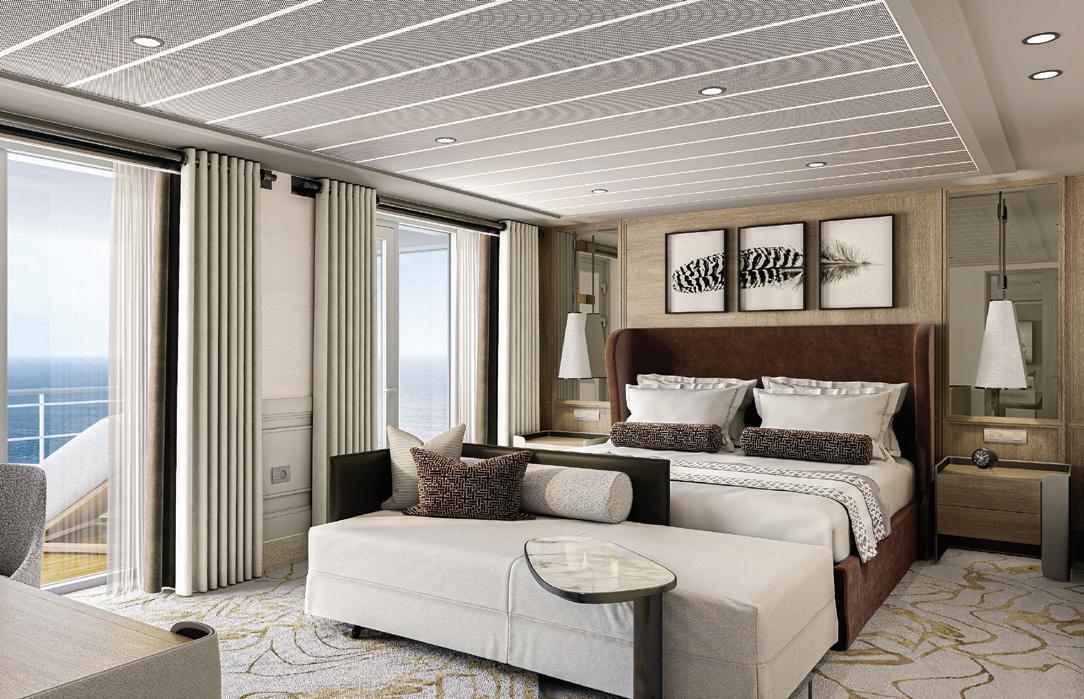

Experience all-inclusive luxury where every detail is taken care of, and a symphonic exploration of culinary pleasures alongside the unrivalled space and unmatched, personalised service found only aboard The World’s Most Luxurious Fleet™

Our new 2025-2026 Voyage Collection offers an extraordinary collection of sailings from March 2025 through to May 2026, and is our best and most exciting collection ever. This amazing portfolio features 164 new voyages, 124 overnight stays, five Grand Voyages and a completely new route for our 2026 World Cruise.

To stay at the forefront as the truly most inclusive, unrivalled cruise experience in the world, we are constantly enhancing our portfolio of sailings, introducing lesser-known destinations adding exciting new itineraries and adventures and topping it all off with some extra finishing touches of delight that are all included for our guests.
You name a destination, if it is fascinating, inspiring, beautiful, or iconic, we will be there. The thrillingly exciting mix of cultures across Asia, the vast landscapes of Africa, the astonishing glaciers and deep coastal waters of Alaska. They all feature in our beautiful itineraries.
Join us for An Unrivalled Experience™ with true all-inclusive luxury found aboard The World’s Most Luxurious Fleet™.
Reservations are now open so secure your dream suite today with a low 7.5% deposit.

included UNLIMITED SHORE EXCURSIONS | included PREMIUM BEVERAGES* | included PRE-PAID GRATUITIES included SPECIALITY RESTAURANTS | included VALET LAUNDRY SERVICE* | included UNLIMITED WIFI* included 1-NIGHT PRE-CRUISE HOTEL PACKAGE IN CONCIERGE SUITES & HIGHER* included 2, 3 OR 4-NIGHT LAND PROGRAMMES ON SELECT VOYAGES*
SERENE SPA & WELLNESS™ SEVEN SEAS GRANDEUR™ COMPASS ROSE SEVEN SEAS GRANDEUR™JEDDAH
JERUSALEM (HAIFA) SALALAH
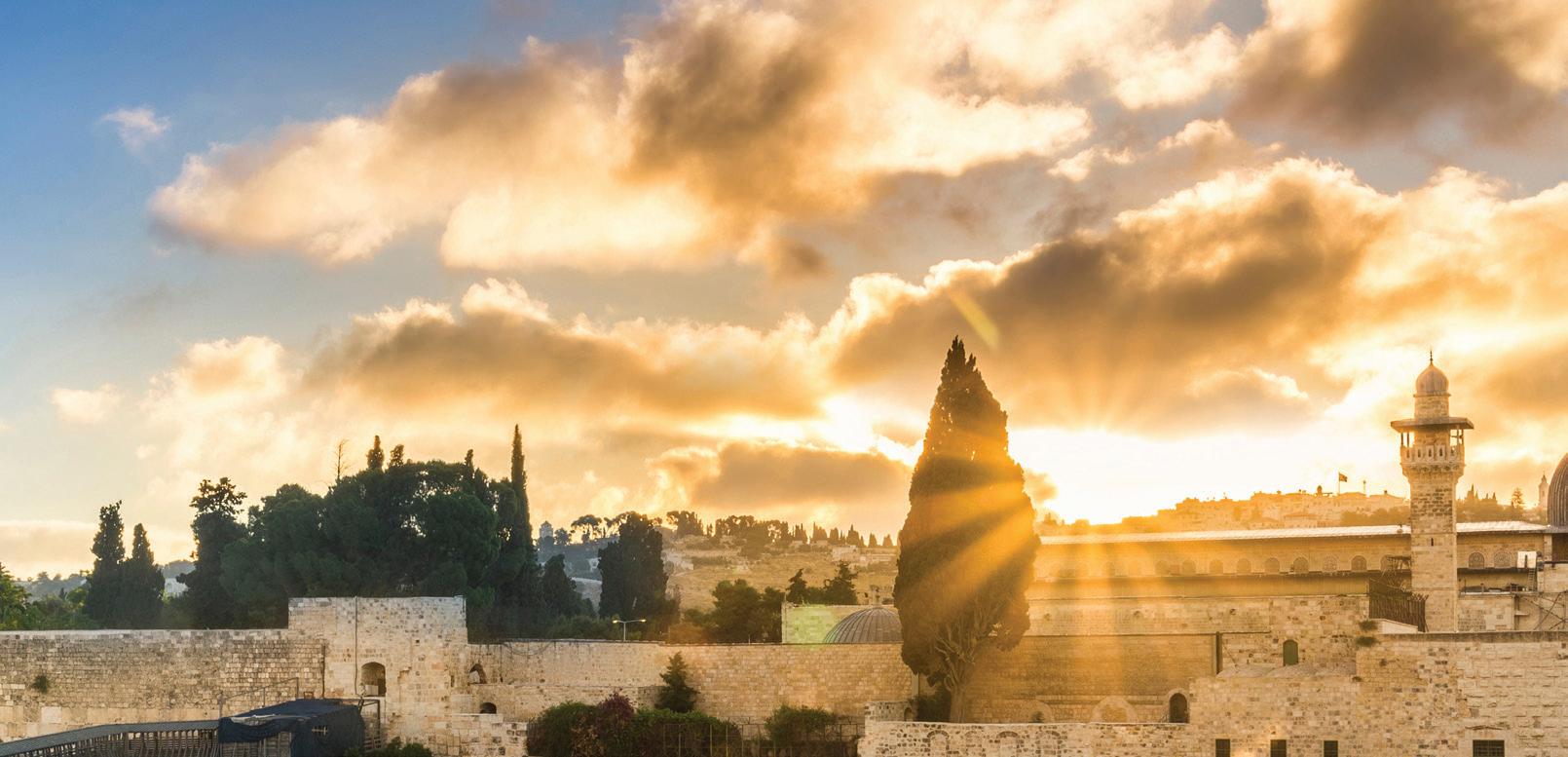
MUSCAT DOHA
Discover ancient civilisations on this journey along the historic crossroads between Arabia and Europe. Discover Dubai’s natural wonders of the Al Wadi Desert on one day, before enjoying a panoramic tour of the city.
Luxor allows plenty of time to explore what is often called the world’s greatest open-air museum, while in Ephesus our expert guides will show you parts of this UNESCO World Heritage site that are off-limits to most visitors. And the days in port are balanced with relaxing days at sea where you can take advantage of the spa or enjoy the many activities on board.

unforgettable memories and lifelong impressions in the storied lands
Sail into the romance of the Mediterranean and discover ancient worlds and cultural springs of wonder and beauty. Savour the fresh catch of the day with a pristinely aged vintage as you experience each colourful coast, from the stunning and enchanting Amalfi to the captivating history of Ephesus.
Gilded in lore, the historic shores of Northern Europe are full of real tales of embattled empires, heroic feats and cultural evolutions. Explore enchanting new ports in Iceland, Scandinavia, Estonia, Spain and more, engaging one beautiful locale after another.
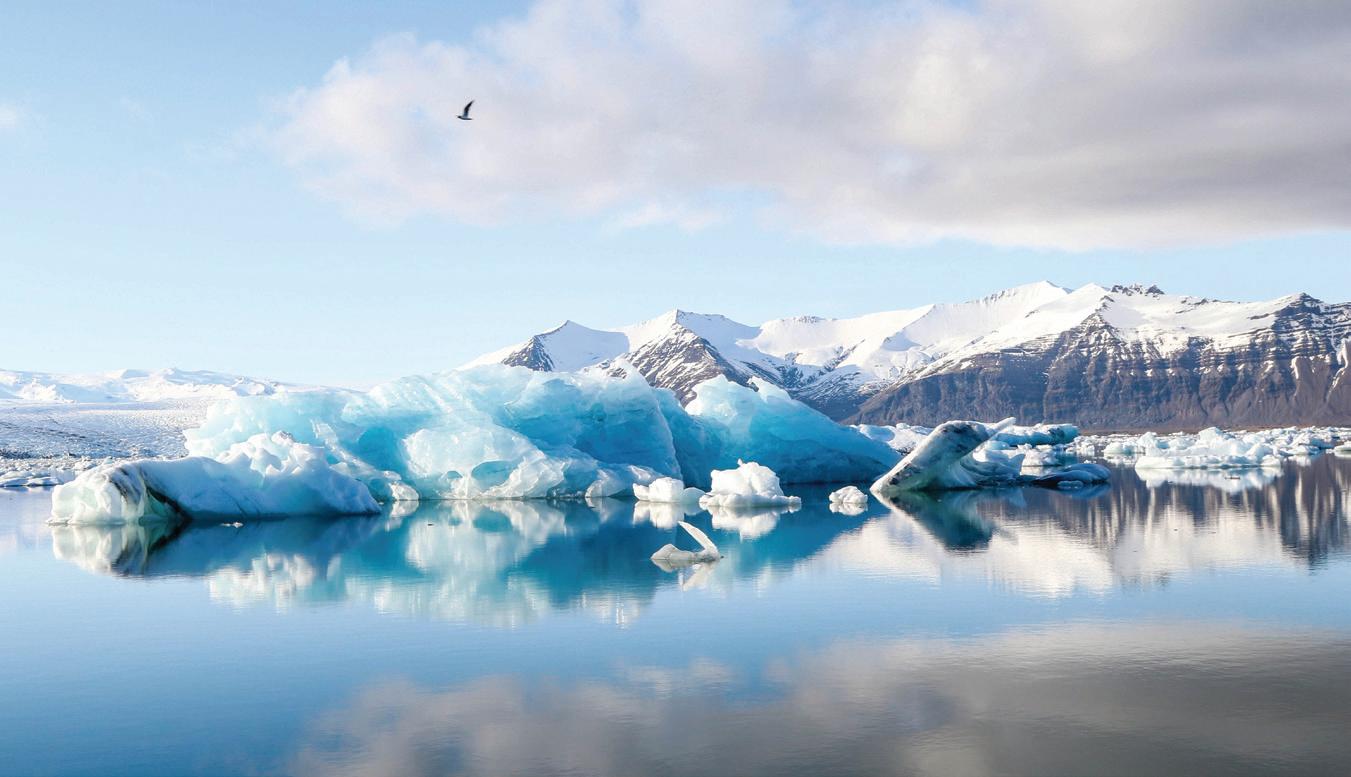
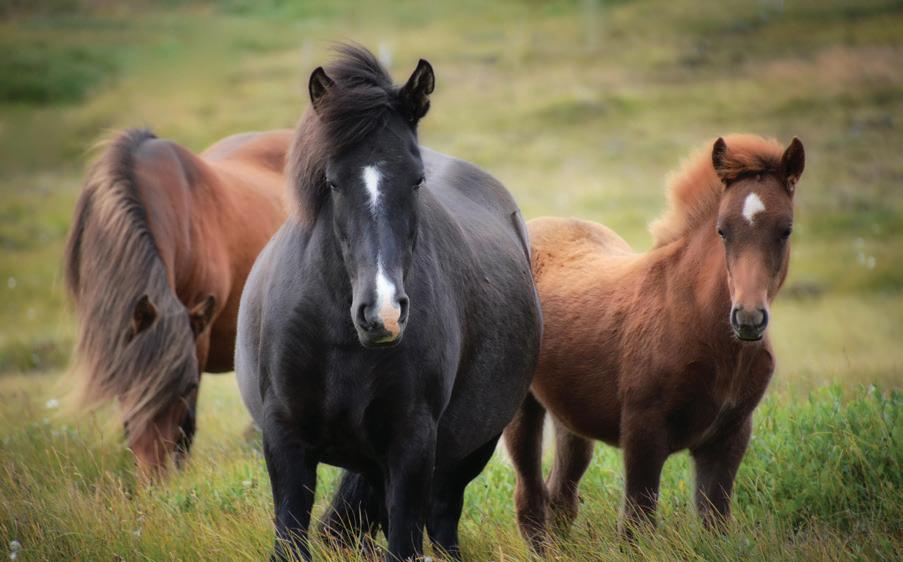
Iceland’s rugged terrain proffers glaciers, tranquil fjords, dramatic volcanoes and steaming geysers, and the Midnight Sun adds a magical, ethereal quality in the summer months. You might walk on a hardened lava field in Heimaey, relax in geothermally heated pools or visit Iceland’s tiniest town –Brekka. You will even have the opportunity to break new ground, with Siglufjordur, a brand new port for Regent, on the itinerary. A hiker’s paradise, it is surrounded by the fabled mountains of the Troll peninsula.
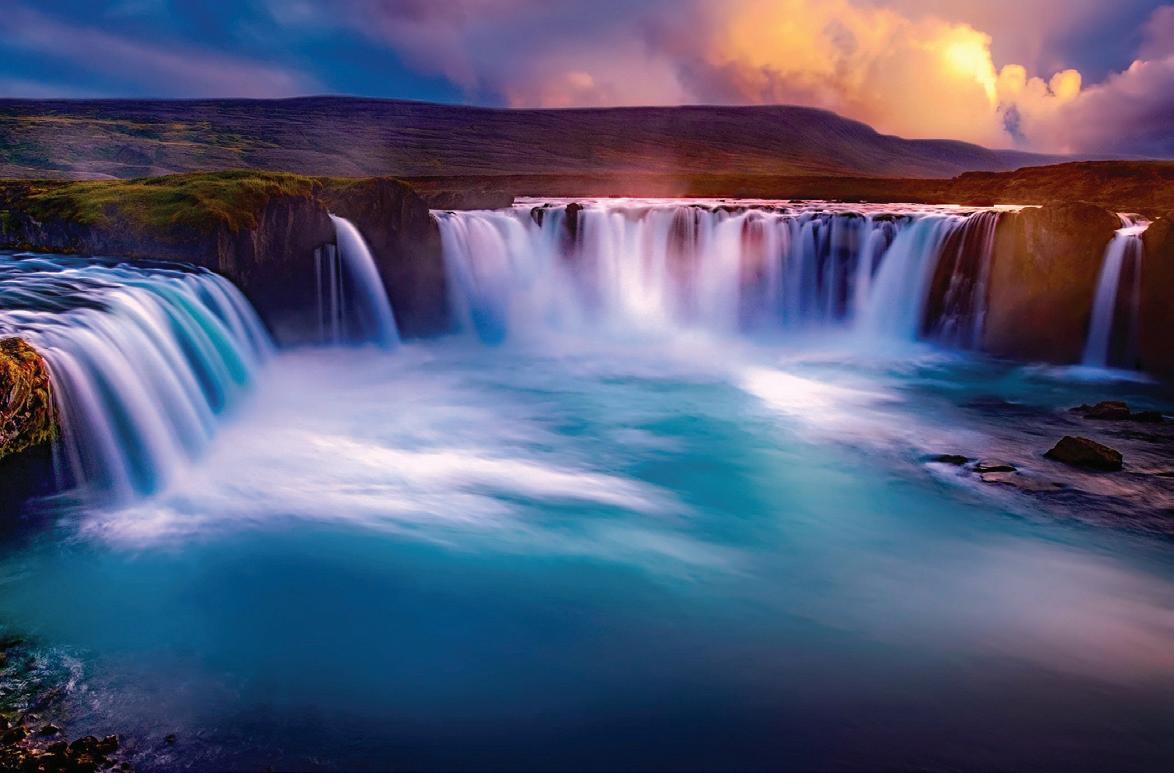
Greetings from Japan! You’re in for an amazing experience with this extended 14-night sailing adventure aboard Seven Seas Explorer®, which will take you on a journey through Japan, South Korea and China during the stunning sakura season, renowned for its breathtaking cherry blossoms. Starting and ending in bustling Tokyo, you can extend your cruise with an included 3-Night Land Programme to truly immerse yourself in the world’s most populous city and discover some of the most impressive sights in Japan.
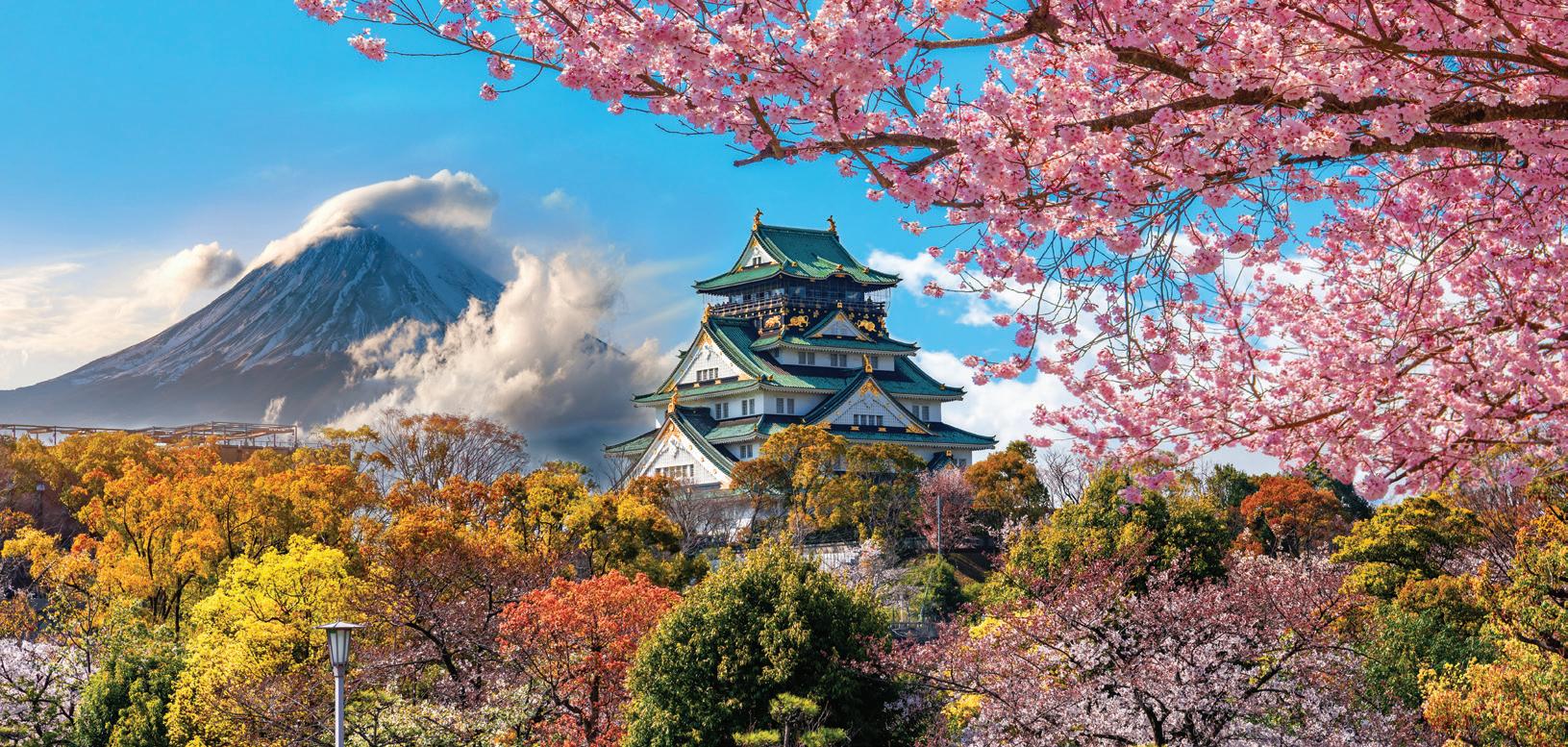
Discover a treasure trove of natural beauty on these serene sailings. ✛ INCLUDED 3-NIGHT
TOKYO - TO -

Intrigue calls to travellers like us, and Asia is home to an eclectic myriad of wonder. Ancient cultures are alive alongside innovative metropolises, while stunning landscapes and aromatic markets will captivate your attention and thrill your palate.
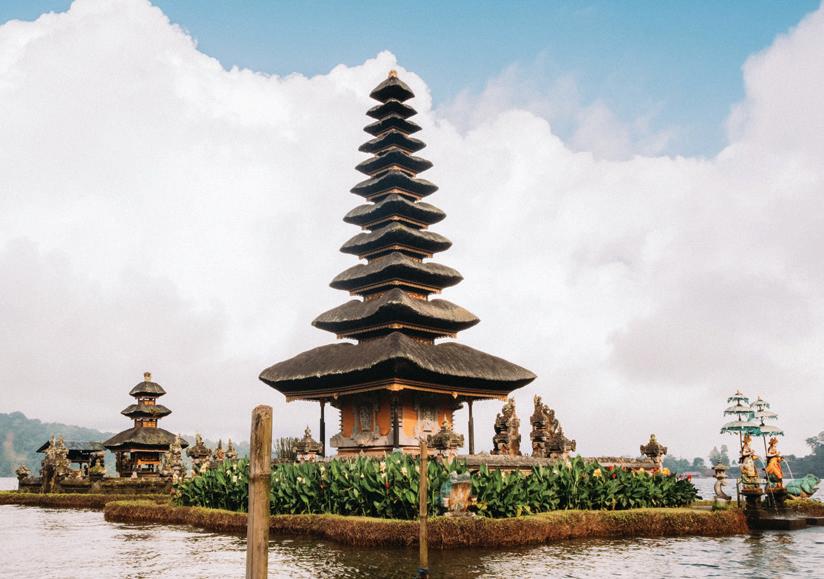
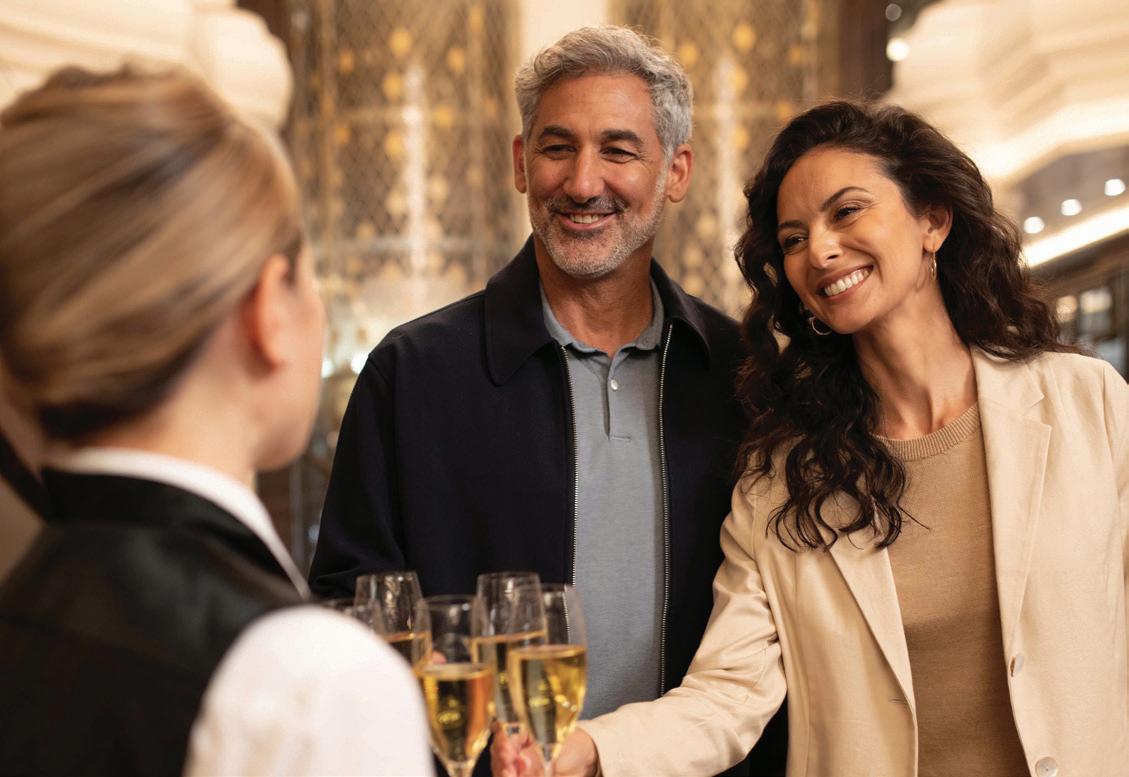
Closer to home, explore new and familiar gems in Australia, from its unique flora and fauna and sandy white beaches to lively cities and vibrant cultures.
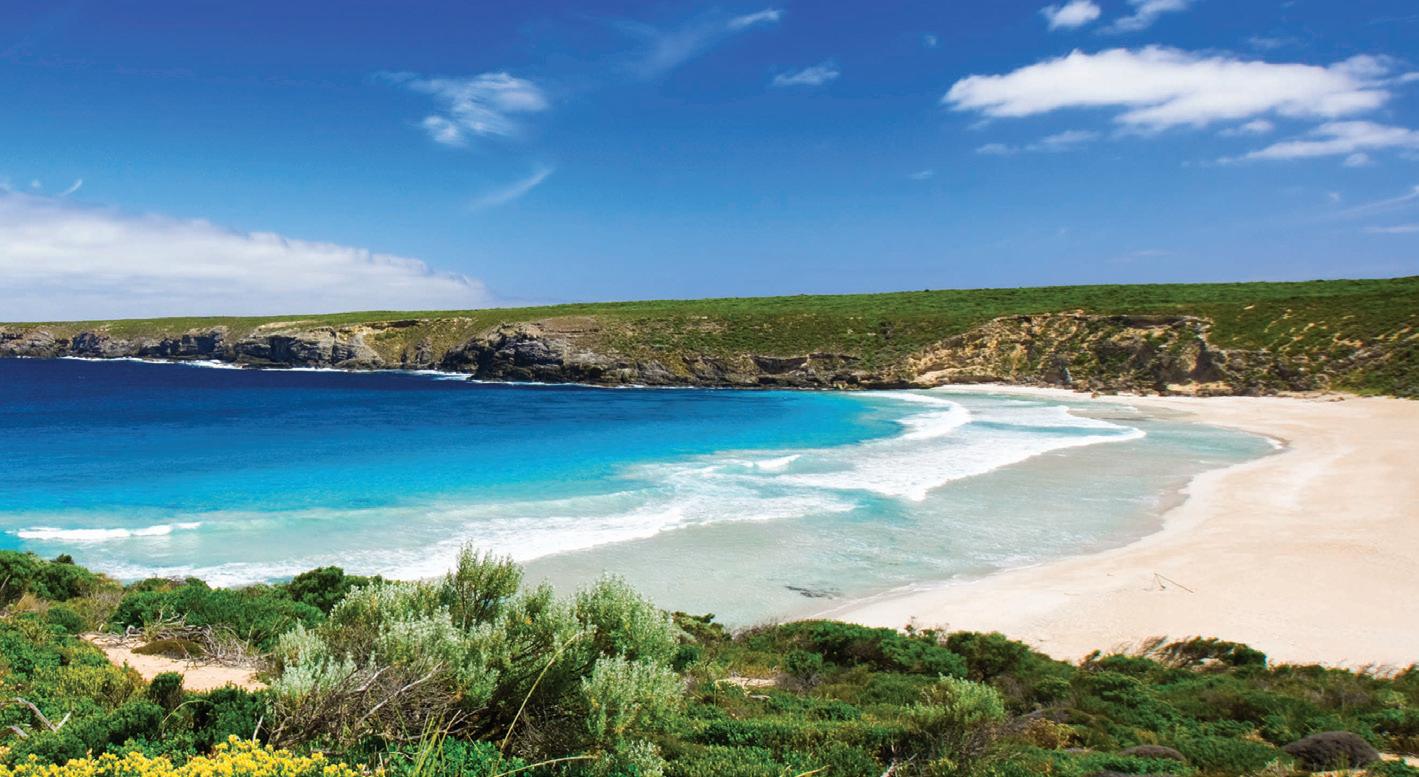
An included 3-night Land Programme and three new destinations grace this captivating itinerary. The first, Esperance, offers some incredible sights, from some of Australia’s whitest sands to a pink lake. Albany is your gateway to the bushwalking trails and natural wonders of Torndirrup National Park. Busselton completes the trio; boasting a long timber jetty, artisanal food, crafts and more. Perth and Geraldton bring more opportunities to experience Australia’s charms before Bali’s temples and lush landscapes beckon.


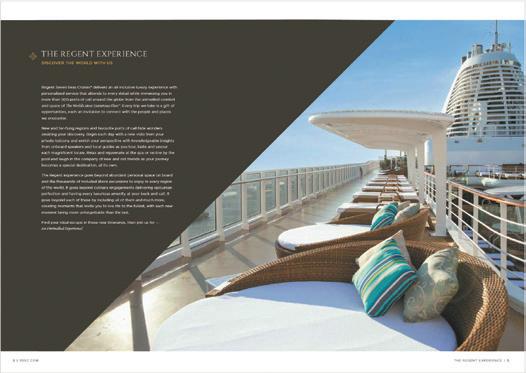
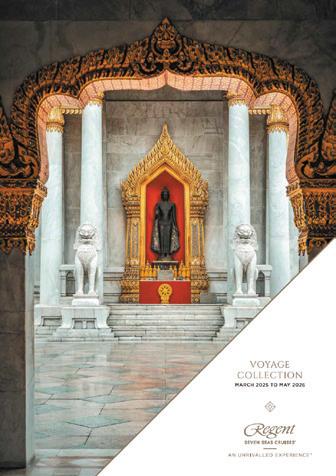

At a spiritual retreat in the Japanese countryside, Susan Horsburgh immerses herself in the country’s culture – under the tutelage of a kooky monk.
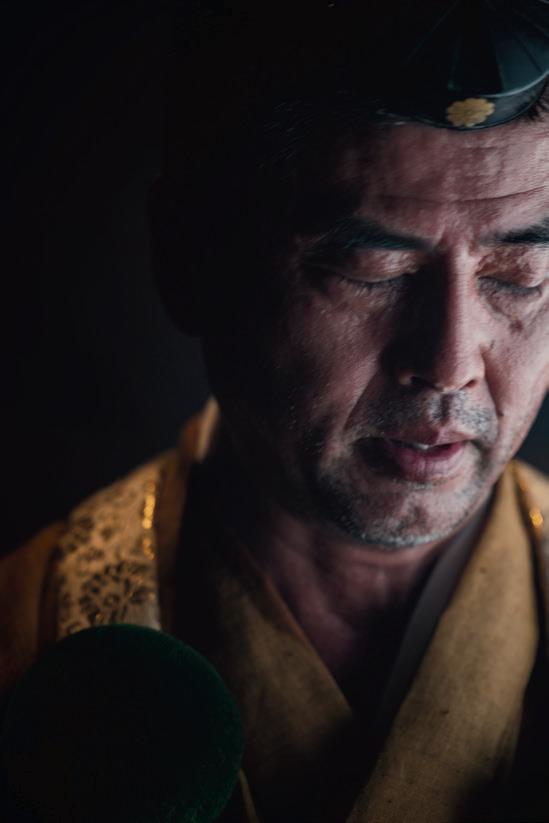 Photography by Kenji Kudo
Photography by Kenji Kudo

In the Nara countryside, surrounded by Japanese cypress trees, a mountain monk invites me into his small, sacred fire temple. It’s here that he chants every day before breakfast, kneeling in front of a statue of the Shugendō deity Zaō Gongen. “This is the cockpit where you fly into a different dimension – and I’m the pilot,” he says. “This is USS Enterprise and I’m Mr Spock.” With that, he tugs the tops of his ears skyward.
Tetsuji Matsubayashi is not your average monk. He’s a “crazy guy”. I know this because he tells me multiple times during our two-hour introductory chat. He’s also a proud entrepreneur with a penchant for using sci-fi analogies to make Eastern spiritualism more accessible to the Western tourist.
A decade ago, amid the rice paddies of Nara Prefecture’s Fukano village, about two hours’ drive from Kyoto, he created Sasayuri-Ann (stayjapan.jp), a luxury retreat for foreigners seeking a taste of Japanese culture. “The moment I saw this view, I felt very happy,” says the 63-year-old grandfather, who named Sasayuri-Ann after the native Japanese lily. “Physical Tetsuji said, ‘This is money time!’”
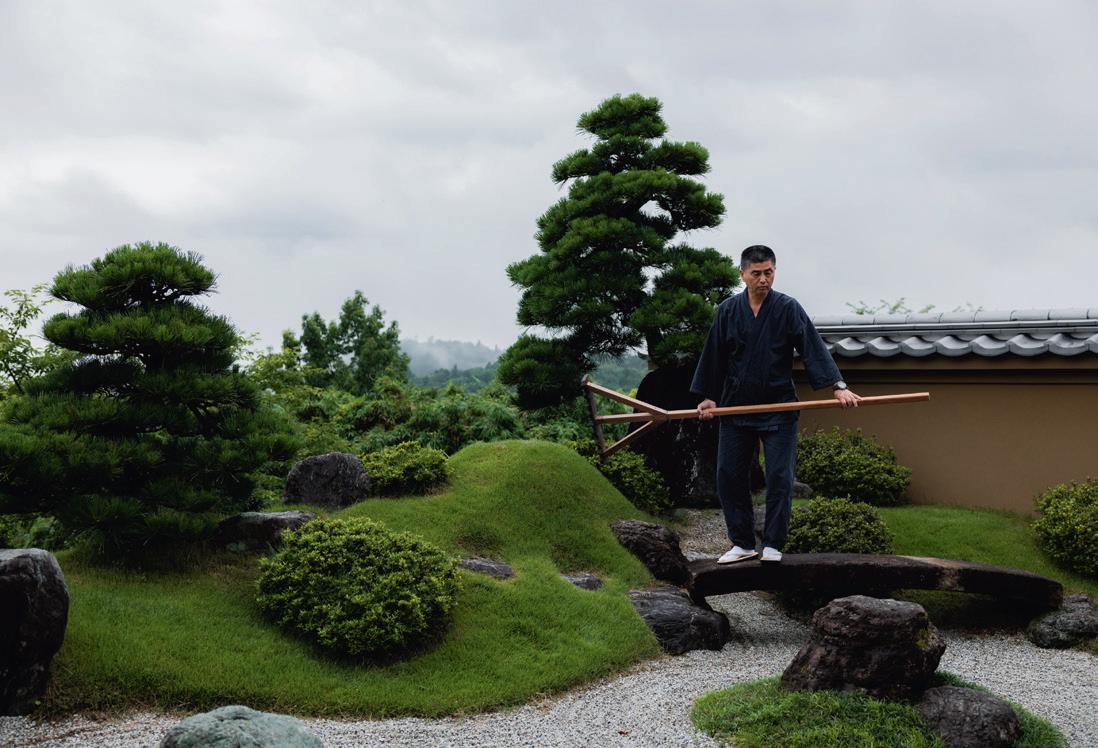
For a Zen Buddhist monk, business would be a no-go but Shugendō – a Buddhist-Shinto-Taoist combo – is a little looser. After our visit to Nara’s mammoth World Heritage-listed Kinpusenji Temple, we stop at a sake brewery and Matsubayashi tells me his sect is A-OK with alcohol.
Still, his faith is strong. His father died when he was eight and Matsubayashi has been on a quest for enlightenment ever since. He travelled to India to learn yoga as a young man and later started
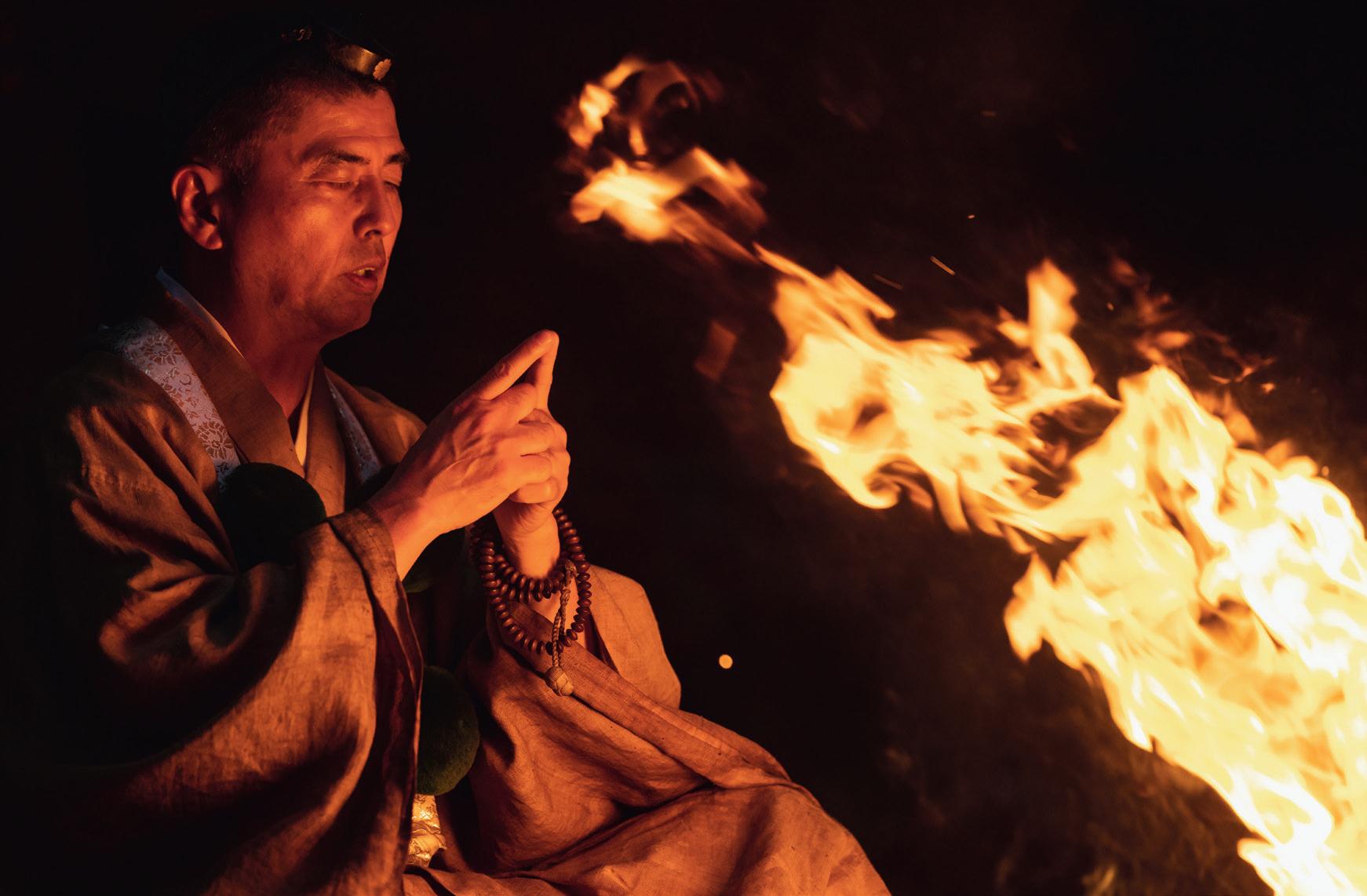
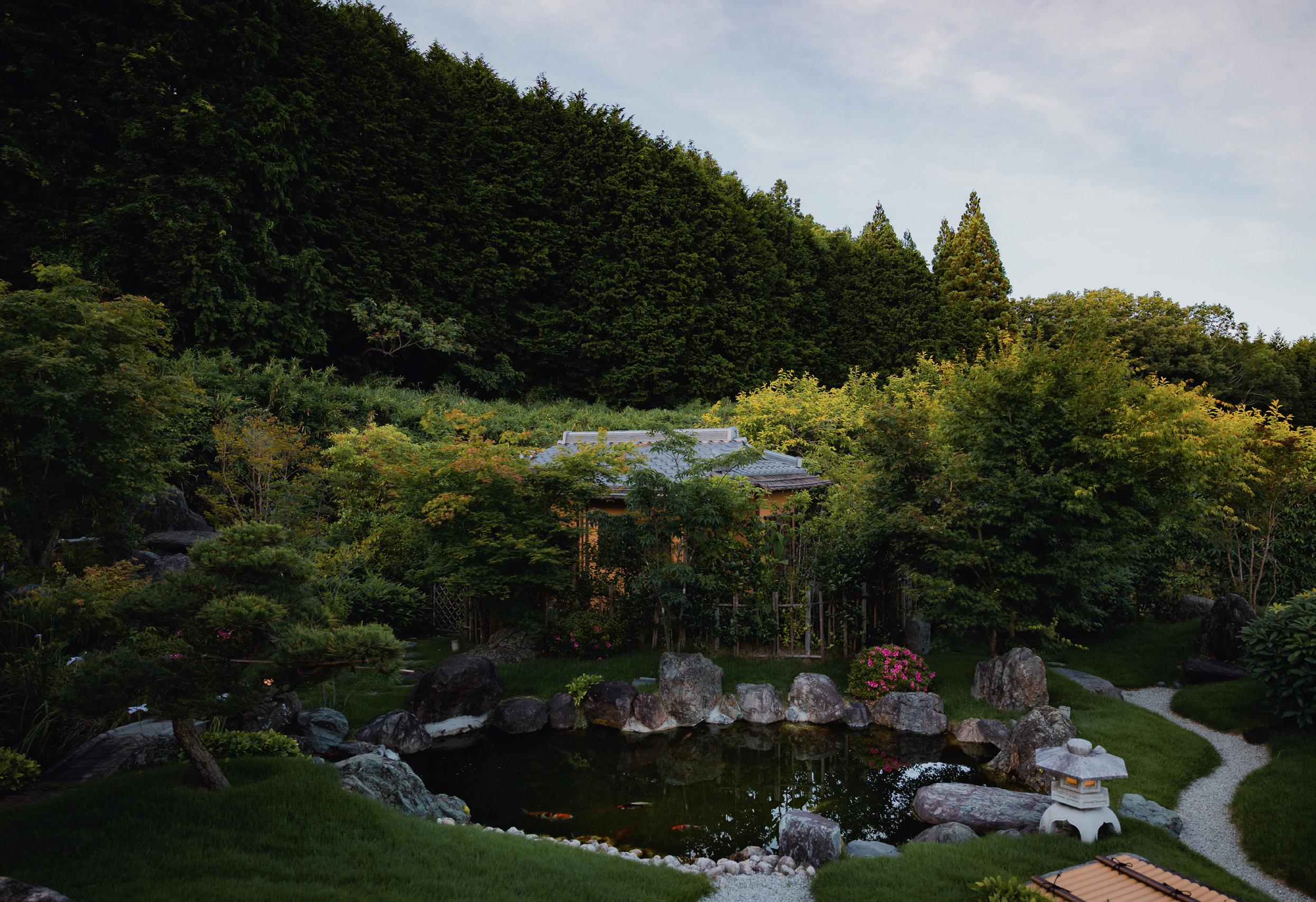

a successful trading company, before becoming a Yamabushi mountain monk two decades ago. Now he meditates for 90 minutes daily and fasts for three days every month. Weak with hunger, he then stands under the frigid nearby waterfalls to “purify” his mind and body, and performs a fire ceremony. When I ask what that involves, he tells me to use the QR code on a poster and watch the video.
“I’m a salesman,” he says, revelling in his kooky reputation and doing his best to bolster it. “If you go to Kyoto, there are many ryokan but no crazy guy. This is Japan – they want the monkey man. They want authentic culture and experiences.”
At Sasayuri-Ann’s two private villas, there is a laundry list of activities to try, from flower arrangement and Japanese drum lessons to pottery workshops and rice planting.
Matsubayashi describes his guests as “private jet people” –which explains the helipad (it’s a 50-minute chopper ride from Osaka’s Kansai International Airport). Stressed out of their minds, they arrive in couples and families, eager to nail this whole meditation caper in two days flat: “They ask me, ‘What’s the technique? Who is your guru?’ They want to know how to master it, to be a PhD.”
I may not be a private jet person but I do know stress: I have three teenage daughters. Any given day can involve weeping, door-slamming and the rueful questioning of my every life choice – so I’m up for two days of teen-free contemplation.
The purpose-built Villa Ozunu, which sleeps up to five people (two in Western-style single beds and three on futons in the tatami room upstairs), is a haven for quiet self-reflection, with its

karesansui rock garden, pond full of koi and round, neck-deep bathtub that overlooks pine forests and mountain peaks.
On the first morning, I wake up in my bamboo-lined bedroom, the dawn light filtered through paper screen windows, and head for the villa’s tatami living room, with a firepit in the centre and a thatched roof above. By the circular, east-facing window, I salute the rising sun and do an artless downward dog, while my guide, Yuko Ito, seamlessly moves from one yoga pose to the next. Behind her is a backdrop straight out of an ancient woodblock painting, all manicured bonsai trees and precisely raked pebbles.
After breakfast, Matsubayashi – in his signature short navy robe and pants, his hair a riot of salt-and-pepper spikes – whisks us away in his hybrid RAV4 to the Akame 48 Waterfalls, birthplace of the ninja and a sacred site for Yamabushi mountain monks. When we arrive, he figuratively knocks at the door of the forest by blowing his conch-shell trumpet, performing an elaborate routine of claps and finger clicks, asking for permission to enter. “It says, ‘Yes, please come in!’” Everything in the cosmos, he explains, has a consciousness and responds to our respect.
Wearing toe socks and zori (thongs), he sets a cracking pace up the trail, stopping sporadically to share insights. The rocky path hugs the Taki River, the icy water roaring over mossy volcanic rocks. All around are maple and wild cherry trees that flame red in autumn but spring, he says, is “paradise time”. We stop at a cave where there’s a figure of the eighth-century Buddhist monk and “brilliant guy” Kūkai. Matubayashi chants a rapid-fire prayer


















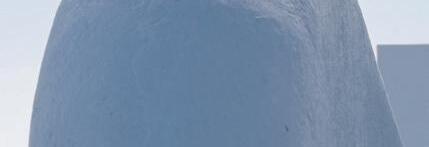










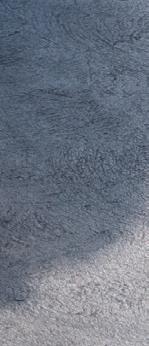



























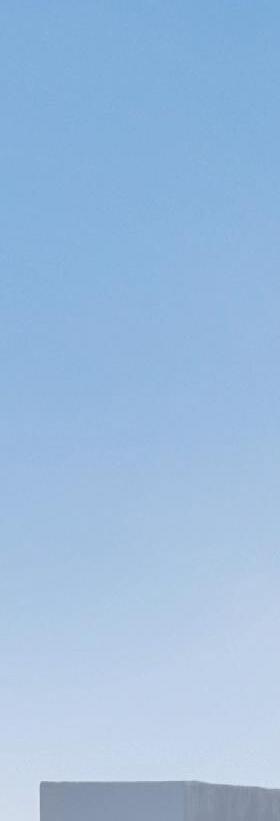


















You’ve nally landed in your happy place. Where years of dedication meet moments of pure abandon. On Seabourn, intimate ships with just 264-600 guests, all ocean-front suites, and nearly one team member for every guest converge to launch your largest possible life.
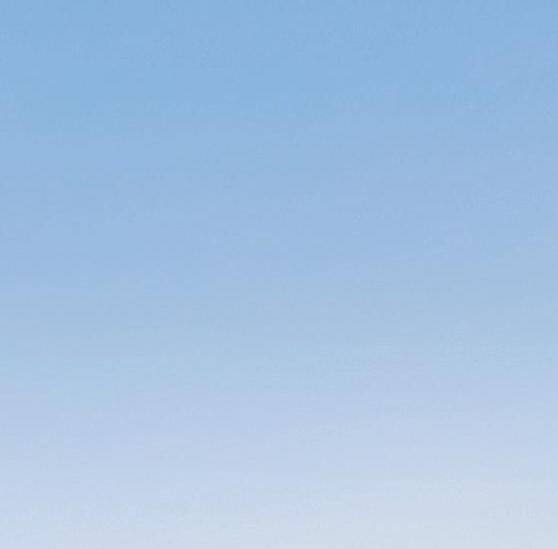




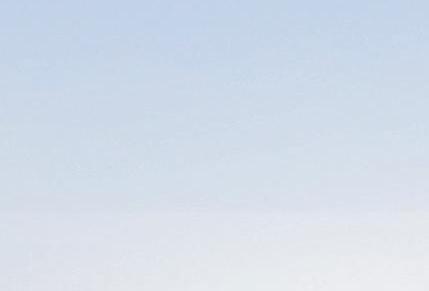
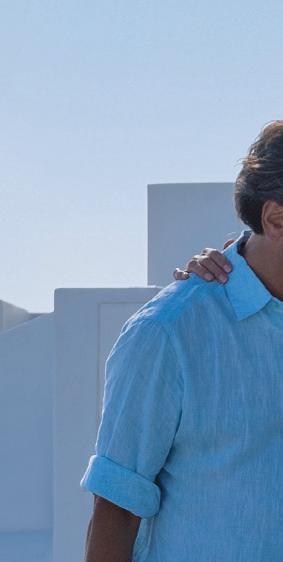


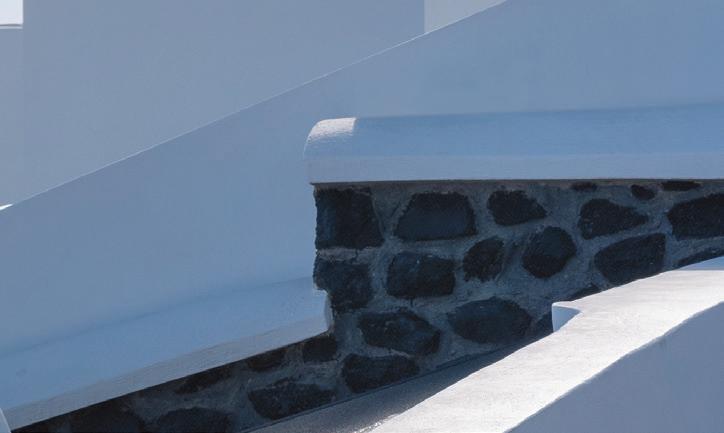
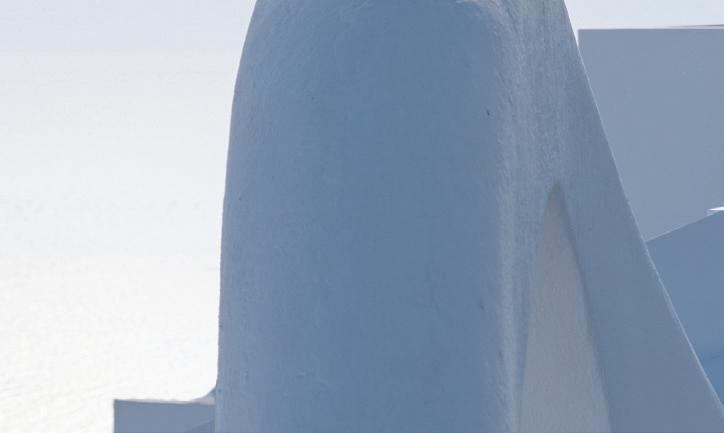


This is your moment


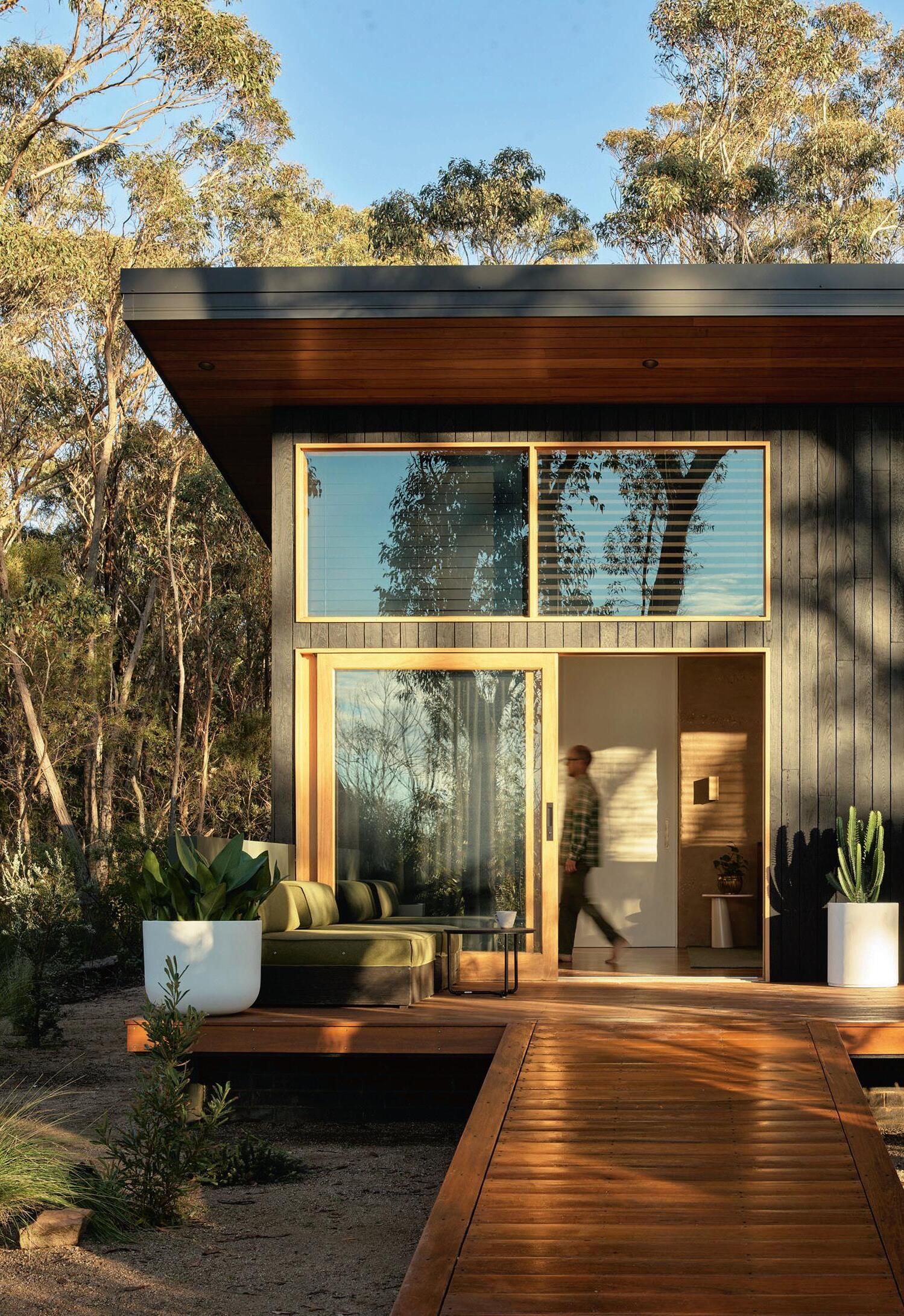

with his right palm outstretched, directing energy towards the statue. “It’s like a light sabre,” he says. “Star Wars!”
At Otome Falls, we pause for a standing meditation. He tells me to close my eyes and focus on the sound of the water. I soon become aware of the birdsong, the warmth of the sun, the sensation of my hands in my pockets. Meditation, he says, is a way to defrag the hard drive that is our brain. “Sit down for one hour and look inside yourself to realise you are not [just a] body.” You can stare at a flame, listen to a waterfall or focus on the breath but the key is to “concentrate the mind to prevent all other thoughts”.
That night, the local Iga beef – also known as ninja beef – puts me squarely back in my body: it’s the most tender, delicious meat I’ve tasted. As bamboo flute music plays in the background, Yuko and I join our hands in prayer, bow and say “ itadakimasu”, giving thanks to Buddha, nature and the people who made the meal possible. Seated on cushions around the villa’s sunken hearth, we dip the thinly sliced, marbled beef into a bubbling pot of seaweed broth. A 20-second swish and it's cooked. Long after I’m full, I shoehorn in more shabu-shabu until all the meat is gone, knowing I may never eat anything like this again.
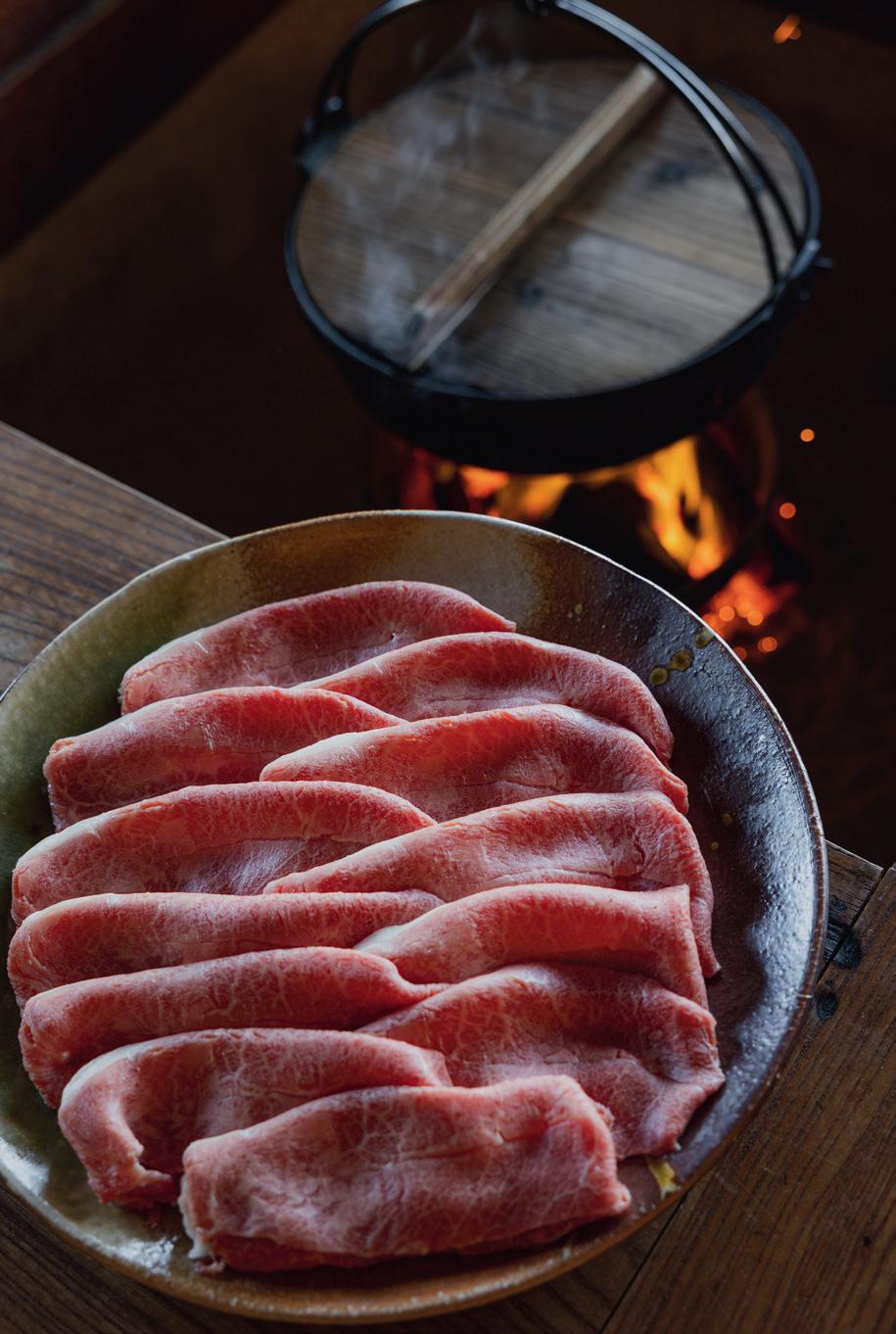
During our two days together, Matsubayashi shares complex theories about consciousness, hypersonic sounds and reincarnation. To the layperson, elements of his shamanic faith can seem esoteric and impenetrable but on the last night he distils his philosophy down to one central premise: appreciation of life. “It’s very simple,” he says. “Celebrate and be grateful.” A credo even this weary, teen-wrangling Westerner can live by.


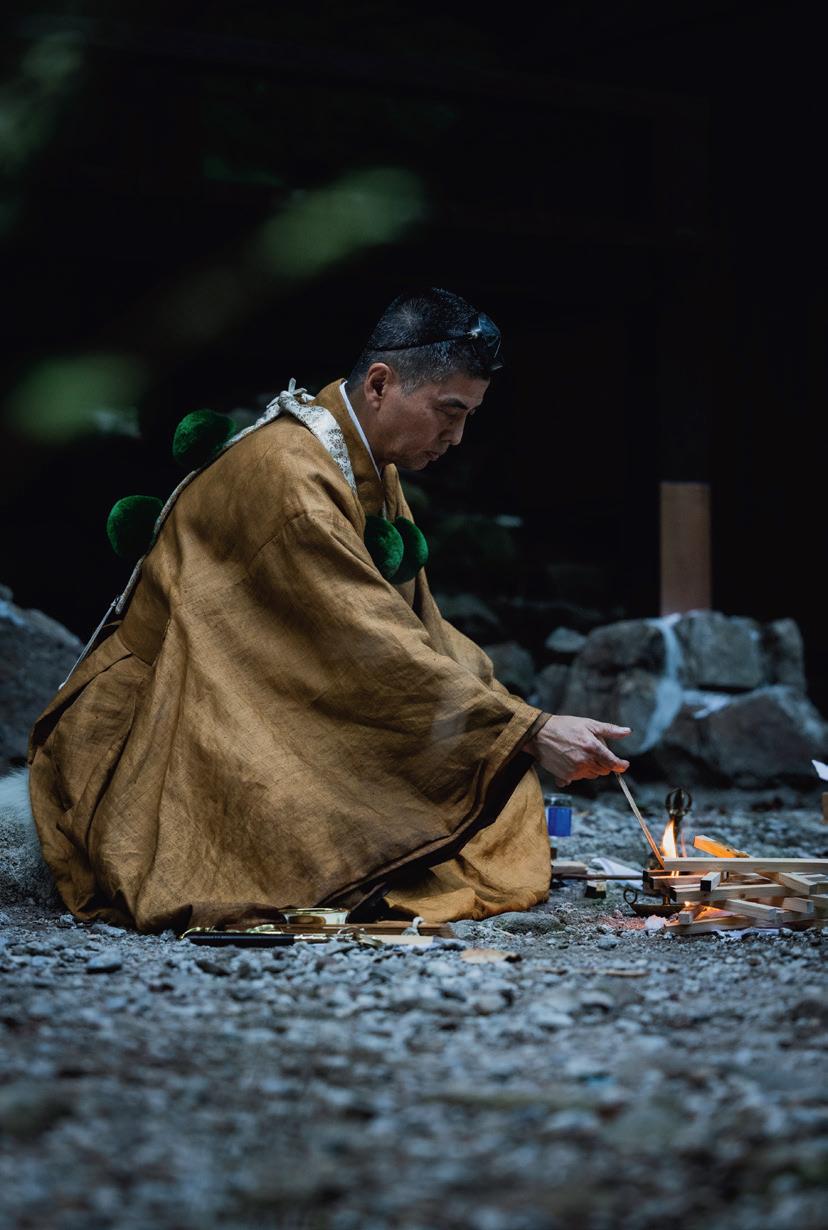
This Australian gallery is showcasing First Nations artists to the world – and it’s just touched down in New York City.
Presented by D’Lan Contemporary
For D’Lan Davidson, the power of Australian First Nations art runs deeper than visual expression – it’s intertwined with Country and place. In 2016, Davidson, an art consultant and dealer and former head of Australian Indigenous Art at Sotheby’s Australia, founded D’Lan Contemporary. The Melbourne gallery offered the chance to present First Nations art with a sense of context and sensitivity – and it’s shaped his direction ever since.
“I wanted D’Lan Contemporary to continue the success we had achieved at Sotheby’s but with more opportunity to offer the kind of individual service required for this critically important market,” says Davidson.
D’Lan Contemporary, which expanded into a larger space on Melbourne’s Exhibition Street in March 2021, has championed First Nations art in Australia since its launch. It regularly exhibits works by founding artists, including Emily Kame Kngwarreye, Rover Thomas, Mick Namarari

Tjapaltjarri, Paddy Bedford and John Mawurndjul, as well as contemporary artists like Doreen Reid Nakamarra, Naata Nungurrayi, Makinti Napanangka, Eubena Nampitjin, Carlene West and Daniel Walbidi.
But it is part of the gallery’s defining mission to advocate for First Nations art on the international stage. In January 2022, D’Lan Contemporary partnered with international gallery Gagosian to present works by the great
(Left to right) Kame Colour XI (1996) , Song of the Emu (1991) , Anooralya – My Story (1991) by Emily Kame Kngwarreye at D’Lan Contemporary MelbourneEmily Kame Kngwarreye at its Rue de Ponthieu gallery in Paris. Here, it featured 14 of her paintings including Untitled (Alhalkere) (1994), in which undulating lines of orange and red evoke land and sky.
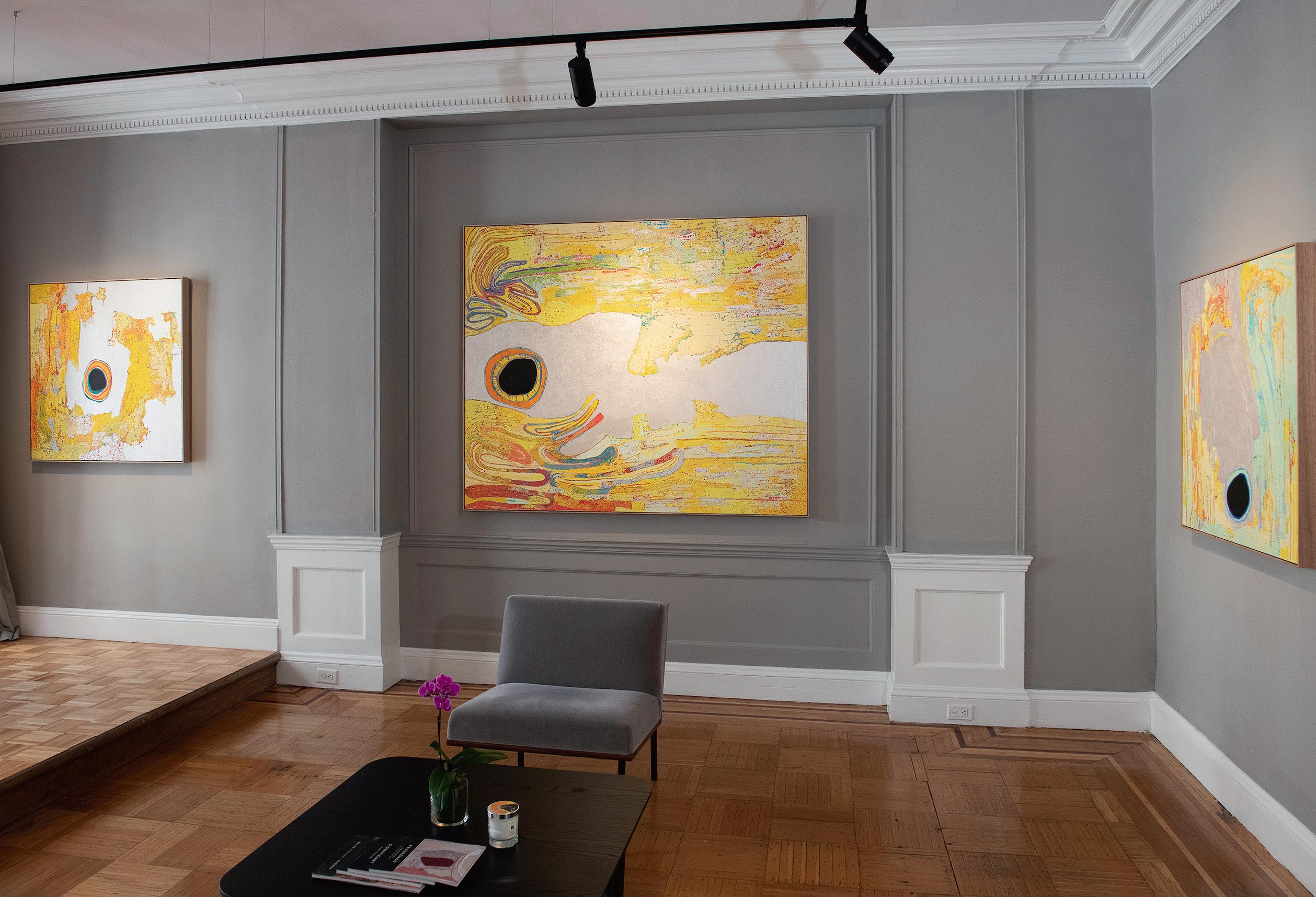
But Davidson didn’t want to stop there: he had his eye on New York. “Right before the pandemic, we put on an exhibition of Emily’s work in New York that was hugely successful.” This was the catalyst for him opening a branch of D’Lan Contemporary in New York. “The timing felt right. We announced we were moving to the Upper East Side and had multiple offers for book launches and community exhibitions.”
The New York gallery – an elegant space on 81st Street, a short walk from the Metropolitan Museum of Art – opened in May with a sold-out show of works by renowned artist Daniel Walbidi. The Yulparitja/Mangala artist from Western Australia’s Bidyadanga community translates the language of his Country, the Great Sandy Desert, into shimmering and deeply metaphysical explorations of shape, line and
form. “I don’t think we could sell out without people knowing who Daniel is. I knew there was something really special there.”
As for D’Lan Contemporary New York, the exhibition calendar is quickly filling. In July, the space will show the art of the Pila Nguru (Spinifex people) of Western Australia. “Then in October we’re going to have a promotion of the latest book by John Kean on the Papunya Tula movement,” says gallery manager Diane de Mascarel. “Next year, we’re going to collaborate with the community in the Buku-Larrŋgay Mulka Centre, of North-East Arnhem Land.”
In New York and beyond, the shifting political climate has stoked a growing desire to look beyond mainstream art history. “There is a genuine hunger to listen and learn from minority cultures,” explains Davidson. “The vision for D’Lan Contemporary New York being a private treaty space for works of Indigenous art has pivoted to an educational space. This fits right into our mantra. The idea of giving with no expectation of return.”
D’Lan Contemporary is not just about education. The gallery is equally committed to fostering an ethical marketplace, with a strong focus on impeccable provenance. In 2020, D’Lan Contemporary established the National Endowment for Indigenous Visual Arts (NEIVA), a fund that circulates a percentage of art sales profits back to communities. “It wasn’t until we made the commitment to pay 30 per cent of our profits back that our growth took off,” says Davidson.
For more information, visit dlancontemporary.com.au
(Left to right) Winpa (2022) , Winpa (2022) , Winpa (2019) by Daniel Walbidi at D’Lan Contemporary New York A new expedition camp in remote Tanzania is employing sensitive safari travel to aid conservation in East Africa.
A new expedition camp in remote Tanzania is employing sensitive safari travel to aid conservation in East Africa.
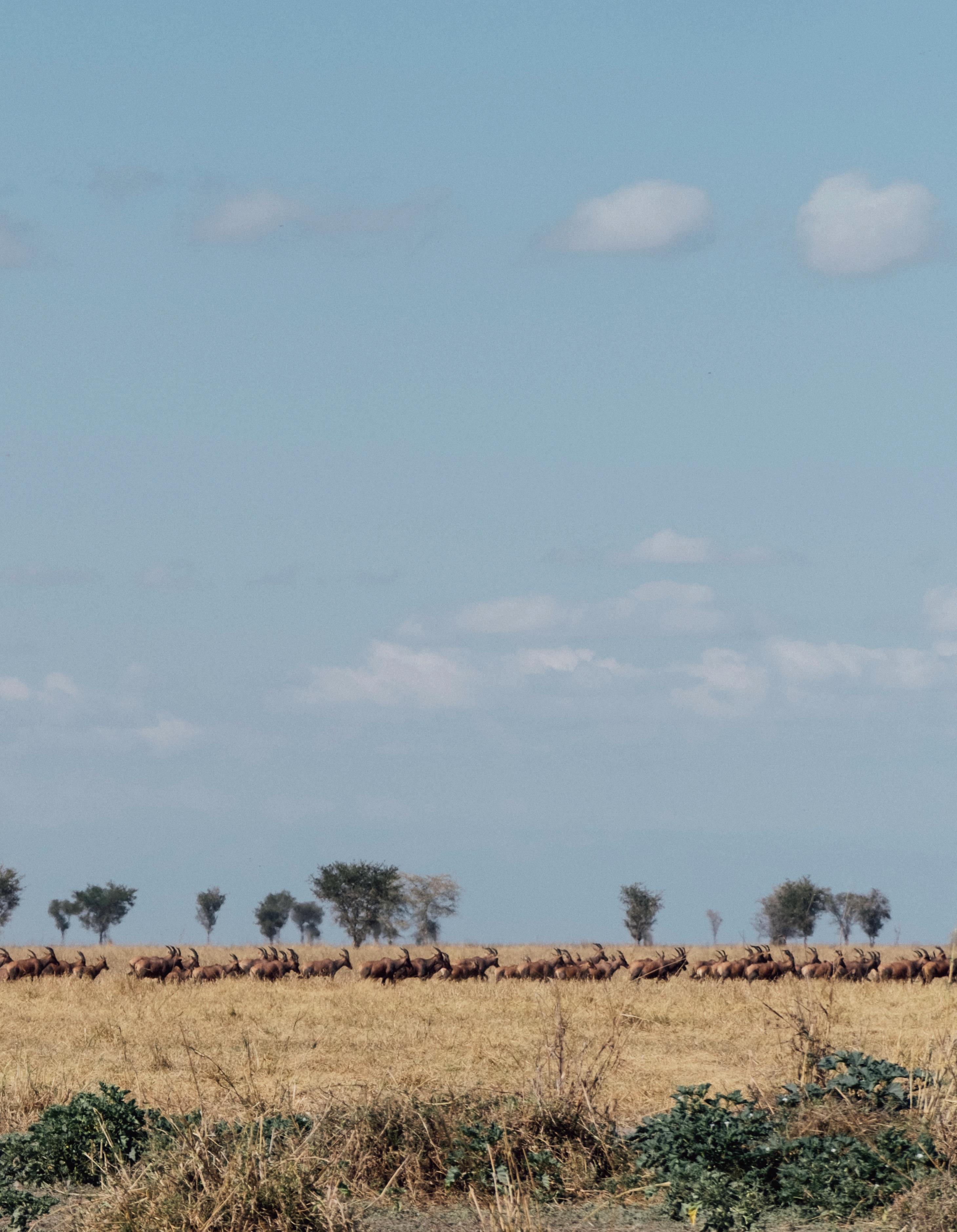 Photography by Greg Funnell
Photography by Greg Funnell
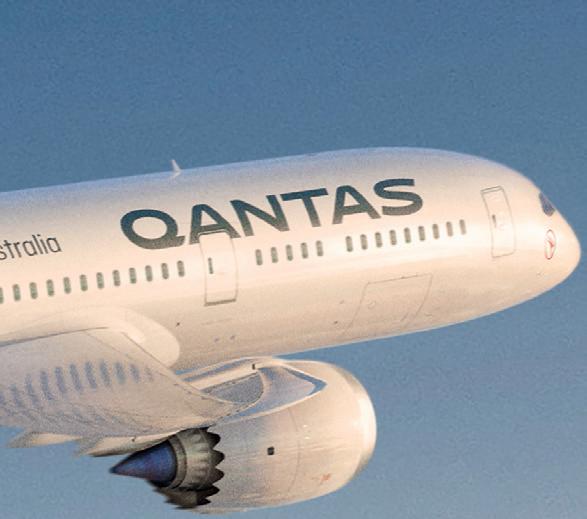




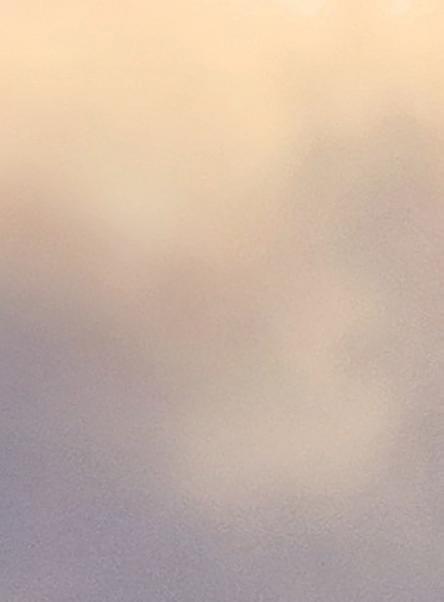
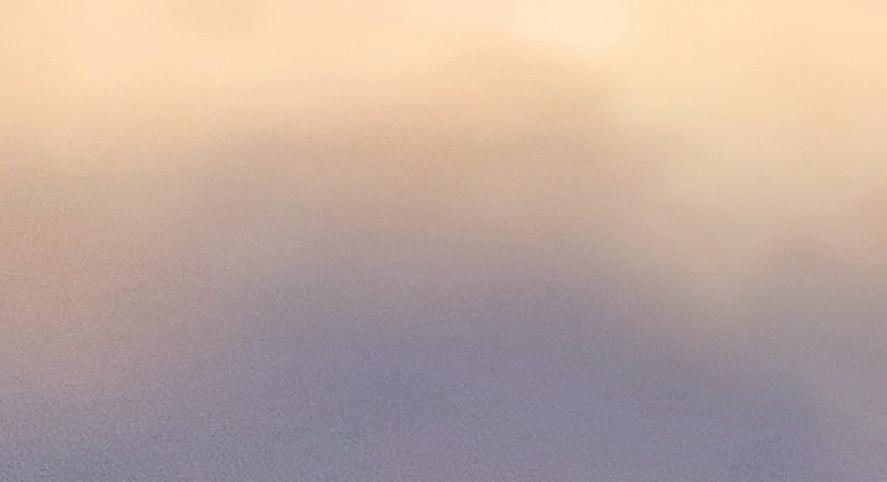


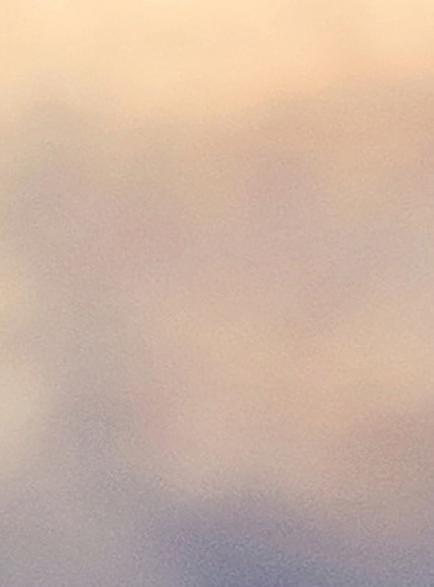




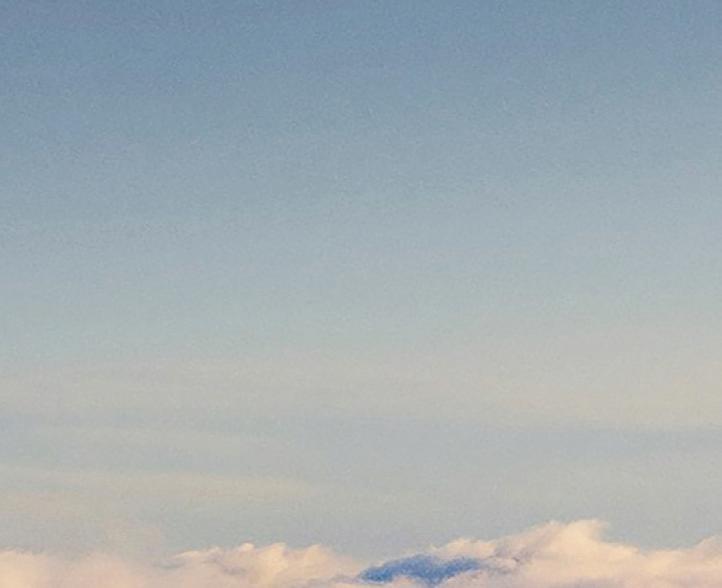



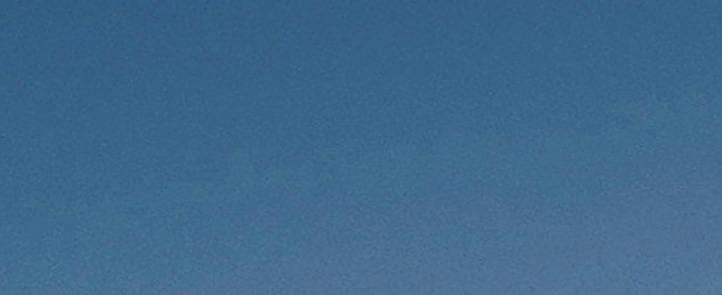

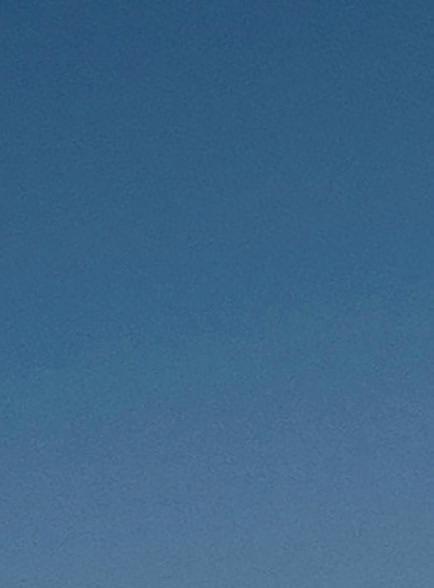
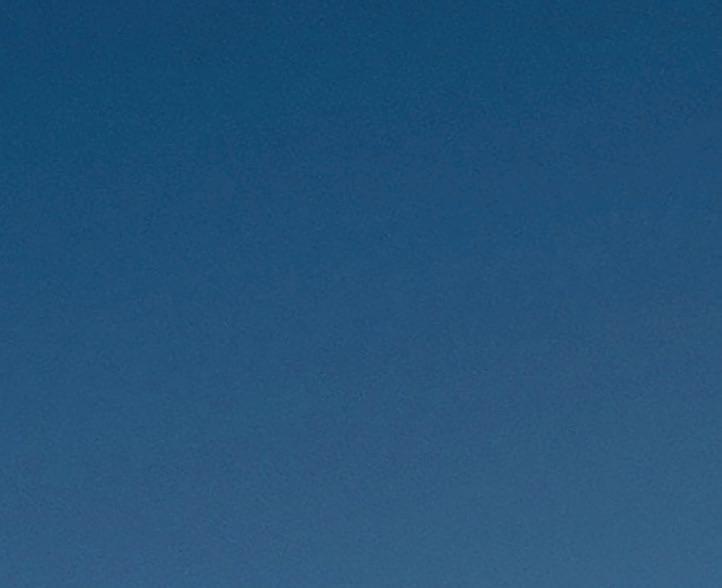




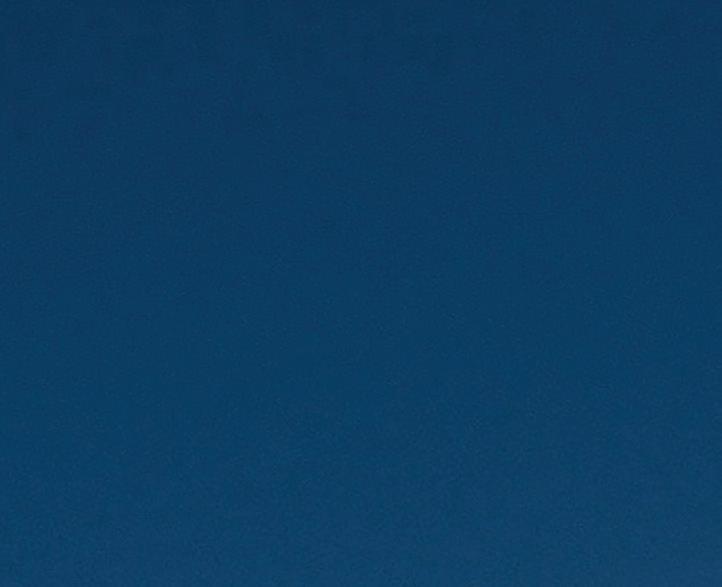
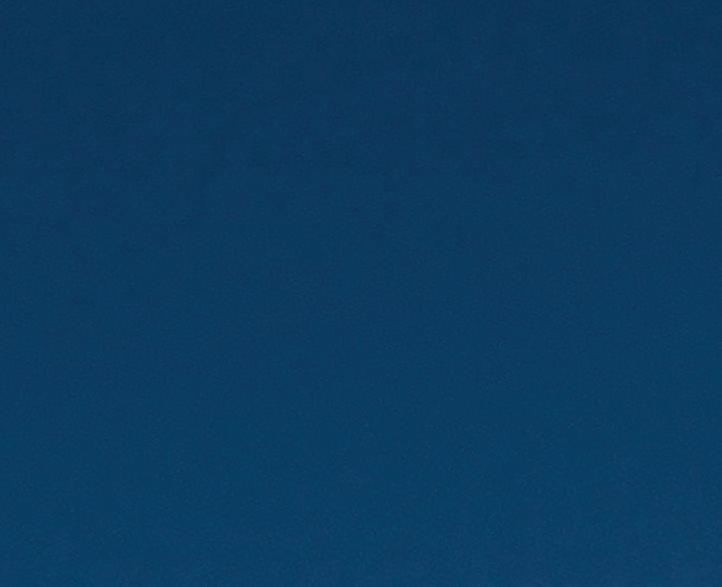
The road into Usangu Expedition Camp slices through the Miombo Woodlands, an autumnally beautiful (squint and it could be a Constable landscape) but inhospitable habitat extending over two million square kilometres, all the way to Angola. Nicknamed Tsetse Highway by the hardy construction crew who built it under relentless attack from biting flies, the track provides direct access to one of the last wildernesses in Tanzania and greater East Africa.
I’m one of the first visitors to make the journey, tucked safely inside one of Asilia Africa’s Gongo-mobiles, custom Land Rover hybrids fuelled by sugarcane. Through tsetse-proof screens I gaze on the muted greens of giant euphorbia, acacia and tamarind, the russet tones of bush willow and unspooling African vignettes as we move through the woodlands. A dust-storm of buffaloes blocks our path temporarily. A herd of elephants vanishes into the forest. A dry river-bed is dappled with sunlit giraffes. All a thrilling taste of what lies ahead.
Tanzania’s biodiversity is among the richest of any nation in Africa and the just-opened Usangu Camp provides ringside access to one of its unexplored wildernesses, the 6000-square-kilometre Usangu Wetlands.
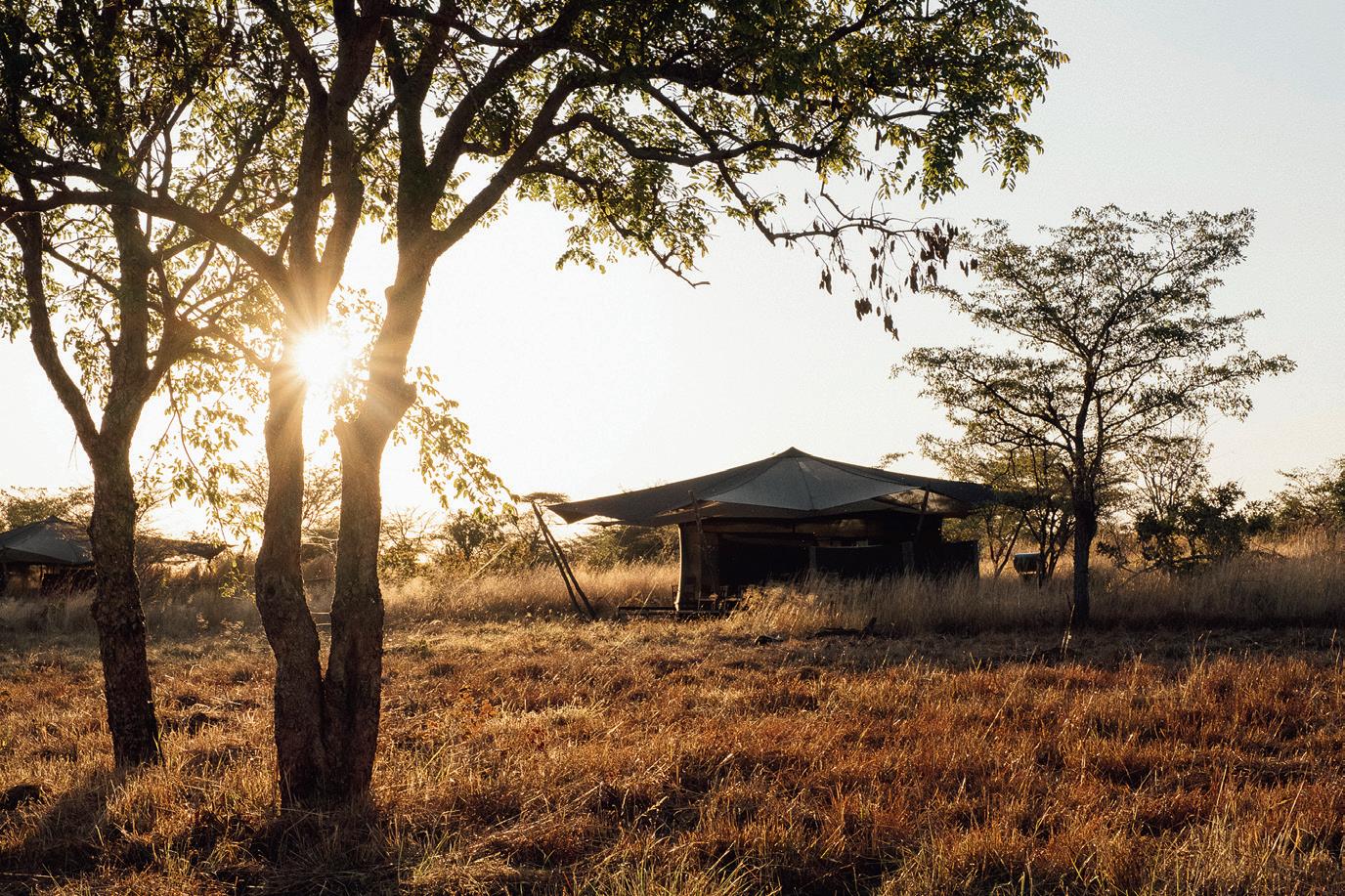
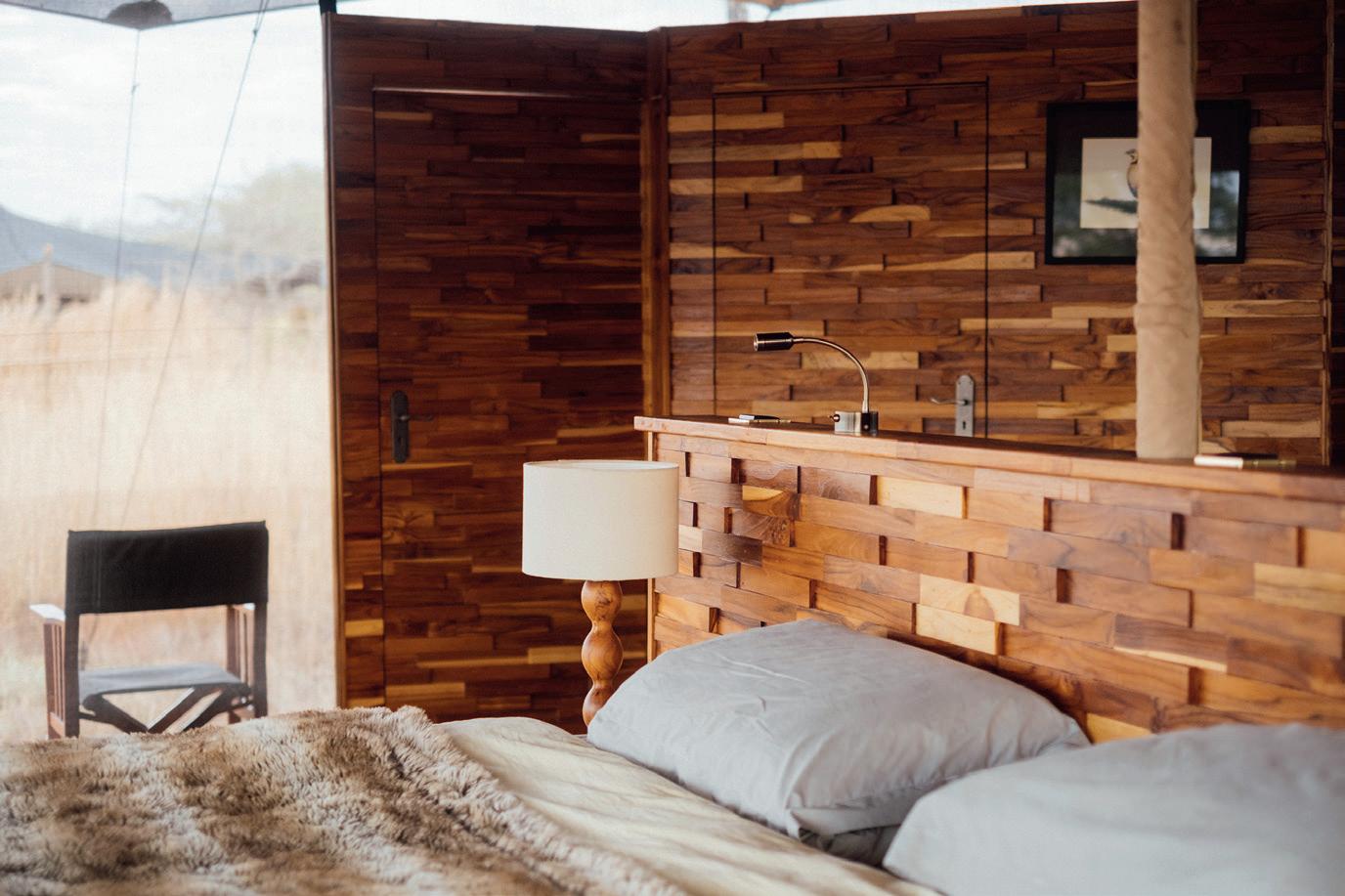
Open seasonally from June until the end of January, the camp is a collaboration between lodge operators Asilia Africa (asiliaafrica.com), British billionaire Sir Jim Ratcliffe and Tanzania’s peak wildlife research and national parks bodies. With Ratcliffe’s funding, Asilia’s conservation tourism credentials and the expertise of local authorities, the radical goal is to restore this critical habitat, chart its biodiversity and provide livelihoods for local villagers. At a time when some African safaris feel like carefully staged animal encounters, this is a chance to witness the cutting edge of continental wildlife conservation.
“Southern Tanzania is an amazing place but it is under threat,” says Ratcliffe. “The creation of a sustainable and ecologically friendly safari tourism business will both protect the wildlife and help the people of this amazing region.”
Usangu was annexed to central Ruaha, Tanzania’s second largest national park, in 2006 but for three decades before that it was open slather for hunters and poachers alike. Given its long-time inaccessibility and the fact that old habits die hard, it’s only now that poaching has been brought sufficiently under control to welcome travellers.
Beaming staff celebrate our arrival by singing, dancing and drumming us into a clearing of acacia and sickle bush beside the open-sided main lodge. Brandon Kemp, Asilia’s resourceful country manager, designed and built the camp in a style best described as repurposed poacher chic. Confiscated objects such as upturned dugout canoes are reimagined as a bar and coffee station. Fish traps and sun-bleached cattle skulls decorate terminalia wood pylons. Most ingenious of all, Kemp soldered the wheel rims of three poachers’ bicycles to create a rotating grill, the camp’s only kitchen, on which everything cooks over embers.
The accommodation here provides uncommon luxury on the edge of these isolated floodplains. The six ensuite
grassland tents are each 50 square metres, clad in gleaming teak and encased in spring-form screening that prevents bugs but preserves the epic views across the Great Ruaha River basin.
The intent is to immerse guests in the landscape without sacrificing comfort. Or security. One morning, staff inform me they had a lion sniffing around overnight. I’m only sorry I missed the excitement.
Usangu is quite the departure for Asilia, whose flagship property, Jabali Ridge, is a rockstar lodge five hours drive east of here, also in Ruaha National Park. This is the new model, explains Kemp. “It’s small. Its environmental footprint is appropriate. What we’ve done here is spent our money on conservation work, research work and cool gadgets rather than on the lodge
itself. Is it comfortable? Absolutely. And you’ll see that it’s enough.”
He’s right. The tents are super-cosy, campfire meals are a daily highlight and the 18 staff, predominantly recruited from local villages to provide guests with a direct connection to the place, are charming hosts.

When Anderson Pakomyus Mesilla started working at Jabali Ridge four years ago he knew no English. He taught himself, in part, by watching Barack Obama’s speeches on YouTube and now works proudly as a safari guide. His 98-year-old grandfather was raised in Usangu, surviving on “smoked hornbills and honey”, and often tells Anderson stories of how these wetlands were once swarming with wildlife.

Yes, you’ll take Manhattan but skipping New York’s four other boroughs would sell this city short. Head out of the island metropolis, where offbeat experiences and delicious detours await.
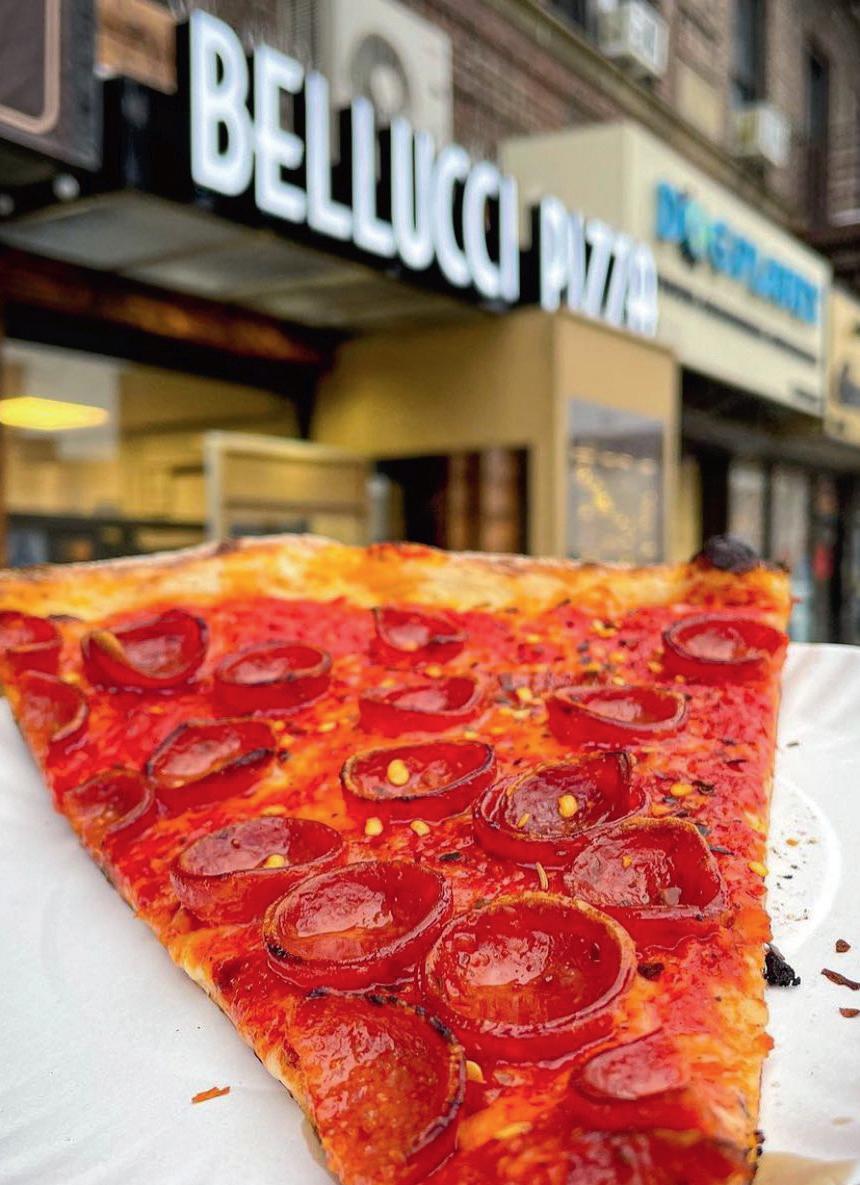
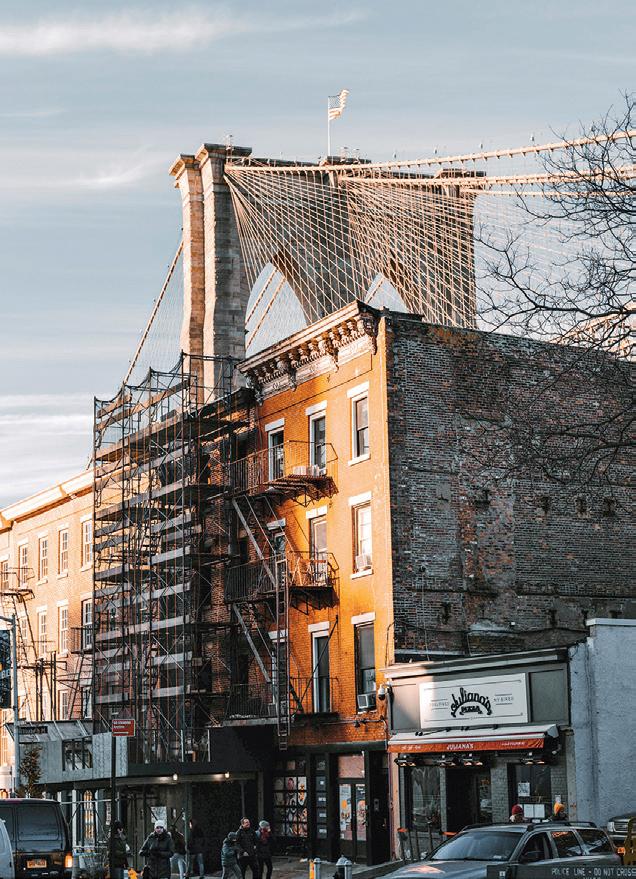
Brownstone-and-boutique neighbourhood Boerum Hill is one of Brooklyn’s prettiest and a saunter along Atlantic Avenue around the Hoyt Street intersection delivers a classic dose of village-vibe retail. Browse designer Meghan Kinney’s locally manufactured, sustainable clothing line at Meg before breezing into three80Atlantic, a lifestyle store selling naturally dyed clothing and rustic ceramics. Hit modern apothecary Jao Social Club for its line of multi-purpose balms, oils and creams and drop into Sterling Place for eclectic flea market and auction finds. Running out of shopping steam? Swing by the female-owned and -run neighbourhood spot Someday Bar to shoot the breeze with locals.
In bustling, multicultural Astoria, 30th Avenue is just crying out for a food crawl. Sample five different types of empanadas at Latin American hotspot Blend Astoria or grab a slice from Bellucci Pizza , a local joint committed to creating the perfect crust. Chase beer-battered spicy pickles with craft beer at Sweet Afton . This cosy bar features whimsical design touches by set decorator Kris Moran, a frequent collaborator on Wes Anderson’s movies. If you’re still peckish, Avenue Restobar serves up a Mediterranean-leaning menu for brunch, lunch or dinner.
As the story goes, hip-hop was born here on 11 August 1973 at a back-to-school party at 1520 Sedgwick Avenue. Mark its 50th anniversary by joining a Birthplace of Hip Hop journey with Hush Tours (private tours are also available). Guides are musicians and industry insiders who play music and drop cultural
wisdom on a bus tour taking in secret battle sites, historic clubs and the Graffiti Hall of Fame at 106th Street and Park Avenue. Consider it a crash course before the grand opening of the Universal Hip Hop Museum , set to be up and running in 2024.

Celebrate the rebellious life of photographer Alice Austen (1866 to 1952) in the waterfront Victorian Gothic cottage where she lived with her partner of more than 50 years, Gertrude Tate. Designated a national site of LGBTQ+ history in 2017, The Alice Austen House Museum showcases Austen’s boundarypushing work along with exhibitions of modern images. Take in views of Lower Manhattan from the grounds of her former home – parts

of which date from the 17th century – then stroll down Bay Street. Ralph’s Famous Italian Ices & Ice Creams offers a lemon granita made from a recipe unchanged since 1928, when Ralph Silvestro first began selling his wares from a Staten Island truck. For a spicier feast, make a beeline to Lakruwana for authentic Sri Lankan fare amid imported artefacts and elaborate décor.
Find out more at nyctourism.com
Presented by New York City Tourism + Conventions Brooklyn Queens Staten Island The BronxKemp assures me they still are. “It’s actually carrying a lot of biodiversity but it’s almost forgotten. It’s more like Botswana or the Masai Mara. It’s, ‘Game on! Animals flying out of trees!’”
I get a sense of this bounty during our morning tea stop on day two, when we’re mesmerised by a seemingly endless stampede of topi antelopes and the odd zebra. Hundreds, probably thousands of them; a super-herd.
There’s a lovely rhythm to days here. Predawn, we gather around the campfire where Boazi, Anodi, Ali and Salome ease us gently into the day with hot drinks and quiet voices while the sky blushes slowly to life. Evenings, aided by Bloody Marys and South African chenin blanc, are livelier affairs with good food and great conversation by the fire.
Besides morning and afternoon game drives, there are walking safaris, riverside brunches with bonus impalas and fish eagles, boating excursions on the hipporich Great Ruaha River and night drives catching animals with thermal-imaging cameras. We never see another vehicle; the nearest lodge is 60 kilometres away. Usangu’s conservation focus allows guests to assist with wildlife monitoring in a region so alien that not even government agencies know what’s there. They mark down big-cat (cheetah, leopard, lion) sightings on ID sheets, upload photos to the iNaturalist app, help set camera traps and liaise with zealous young scientists at the on-site Douglas Bell Eco Research Station (also the camp’s only wi-fi hub so quite a popular hangout).
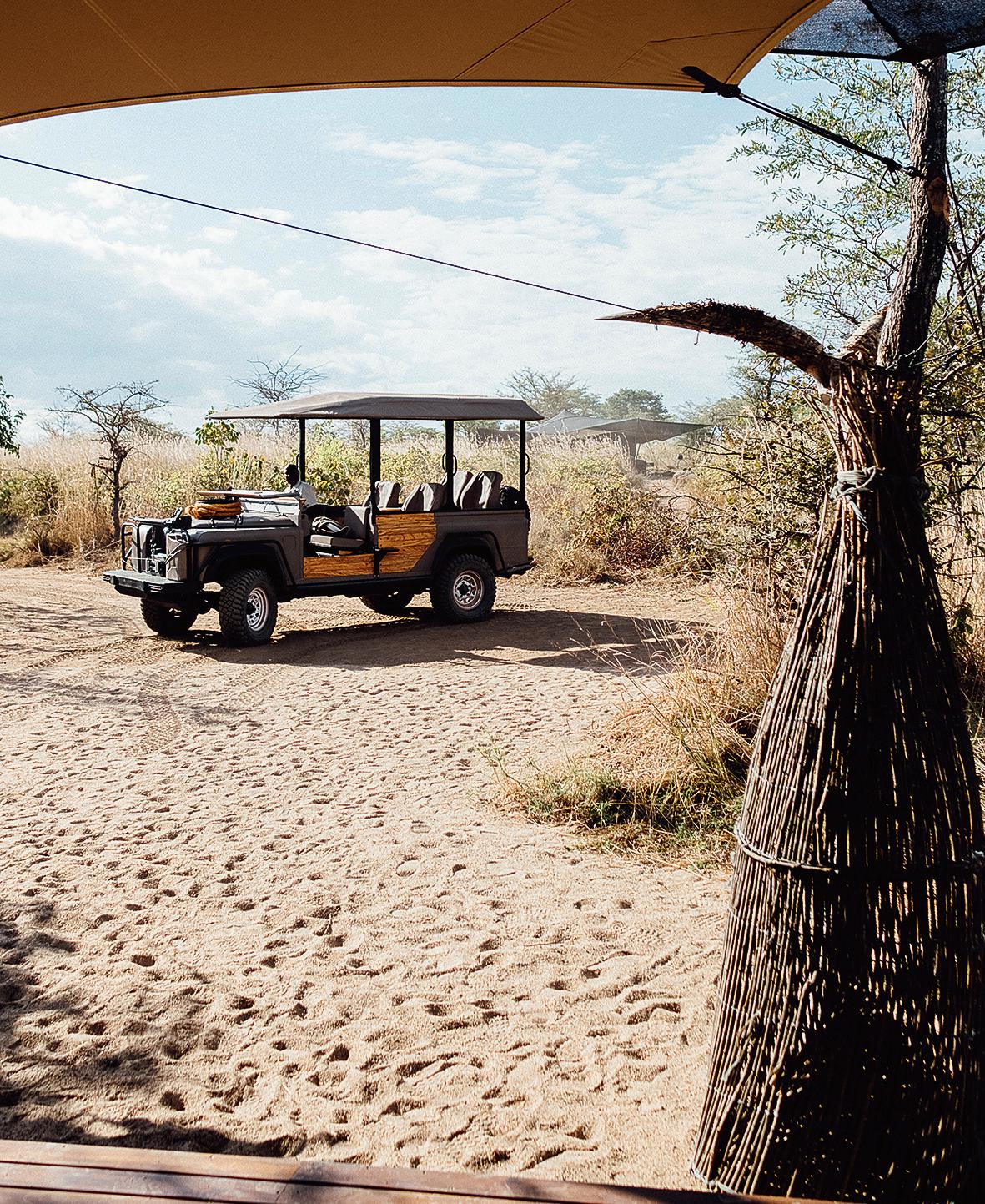

Though the local animals are still wary of humans, gradually, with each visit, they become more acclimatised. Anderson’s best sighting so far has been eight lions at a buffalo kill. And a pangolin wandering into camp during breakfast one day.
Helicopter pilot Hamish Rendall, who’s out here on anti-poaching duties, takes me up for an aerial view of the vast river delta. I immediately see how special Usangu is. We spot elephants mirrored on the river banks, feasting on reeds. Herds of sable, roan, topi and eland, the largest antelopes on earth, thundering across the terrain. Ostriches strutting about like they own the place. Hippos, reedbuck, giraffes, snowy carpets of egrets and herons and much more. I’ve never witnessed such abundance and diversity in one place. “What’s great to see is that there’s a lot of young and they’re all doing really well,” says Rendall. “Once we get these [illegal herders] out, the wildlife numbers are going to go absolutely crazy.”

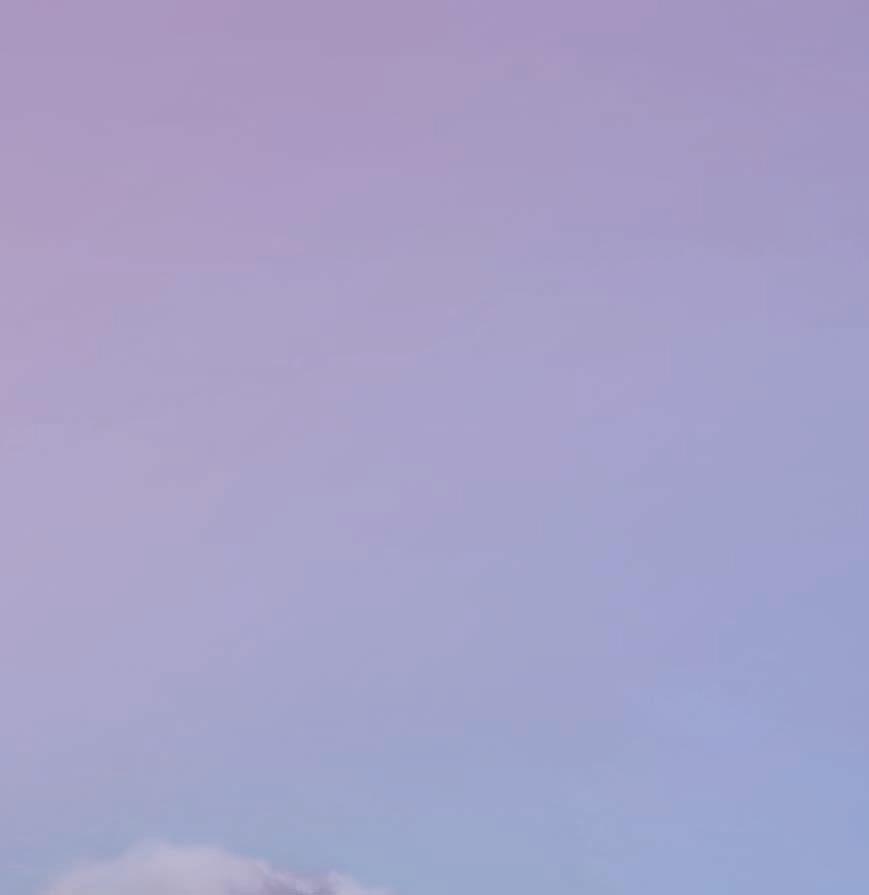
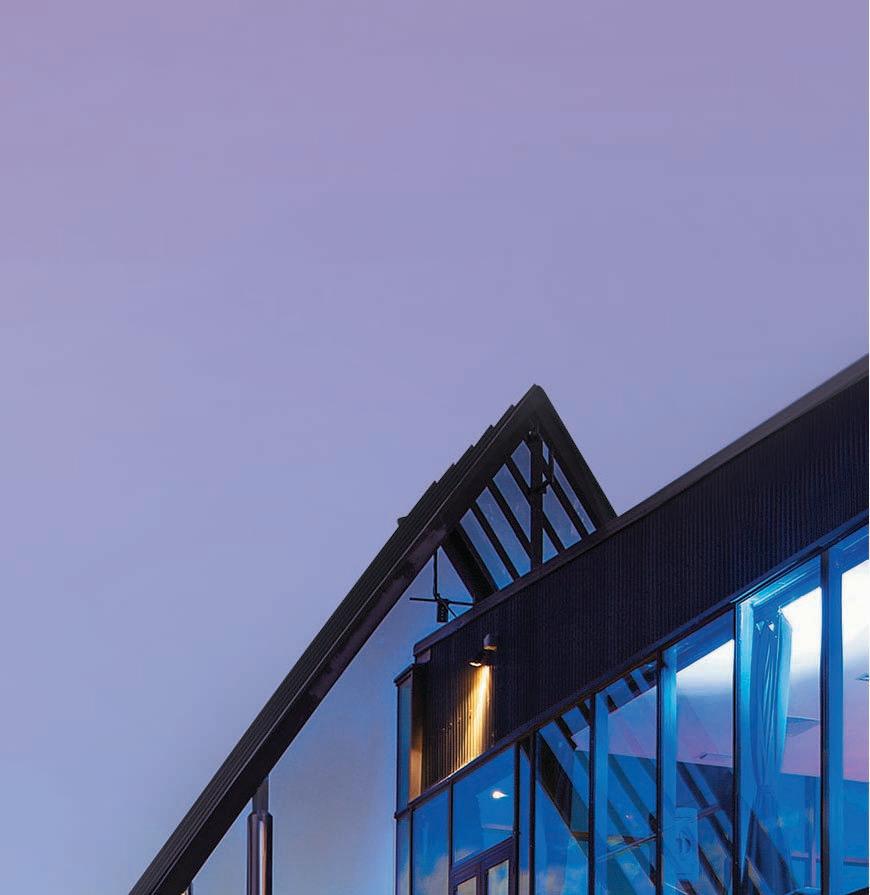
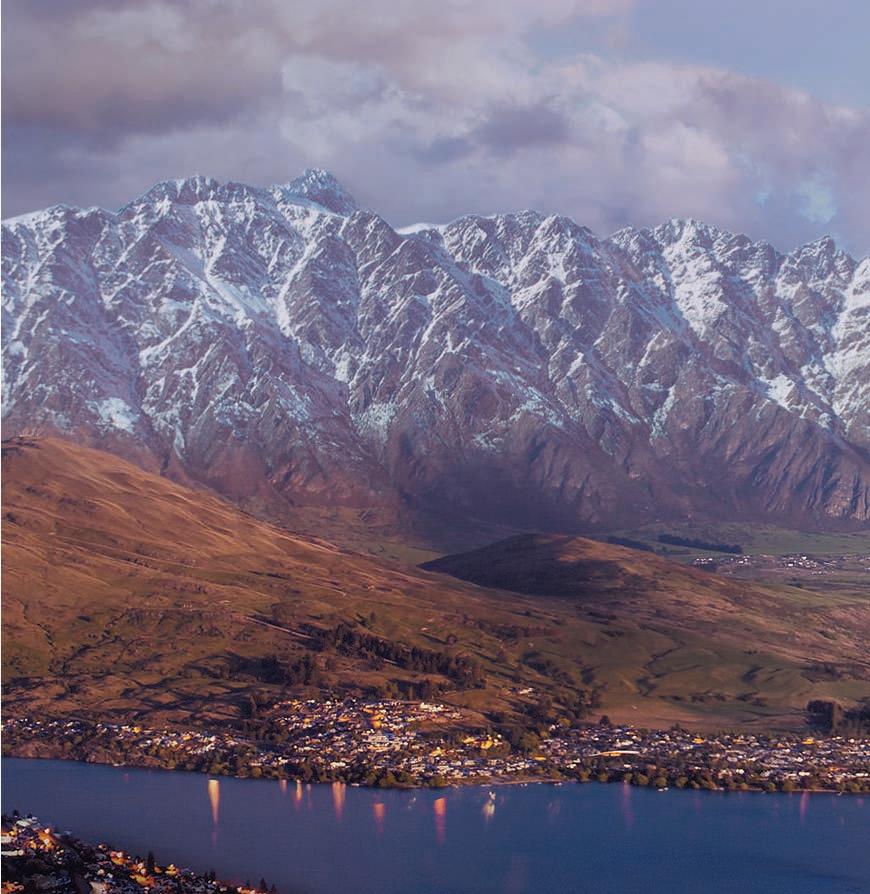


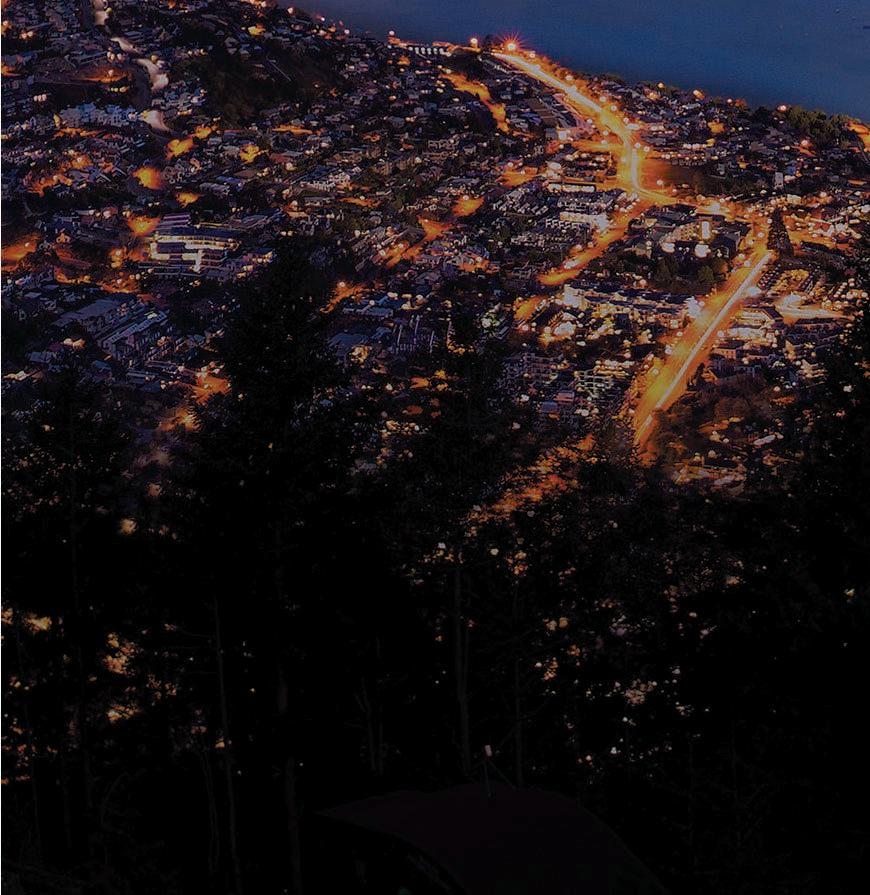

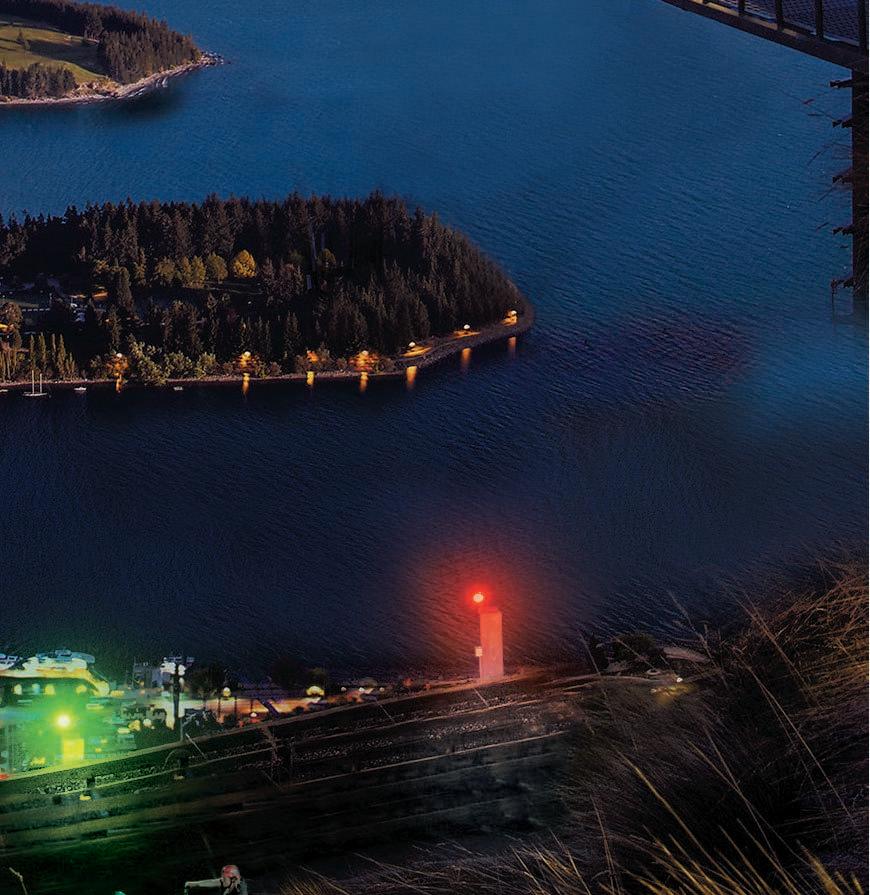

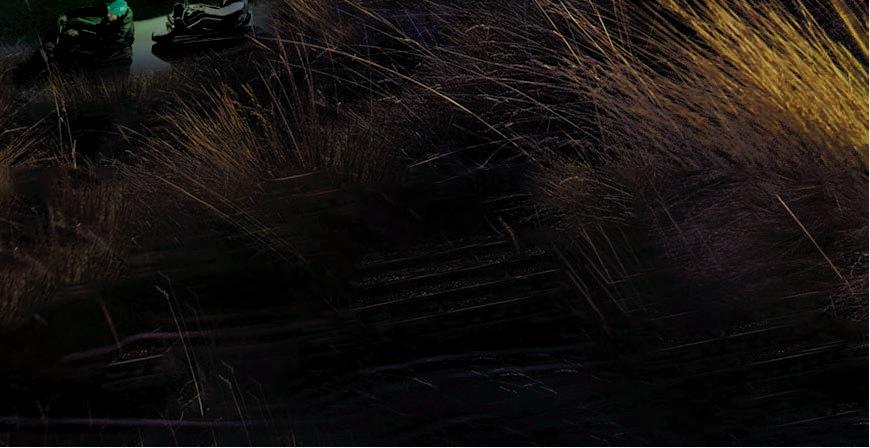
Hot sun, warm seas and tropical breezes. Taking it easy isn’t hard in Vanuatu, writes Faith Campbell.


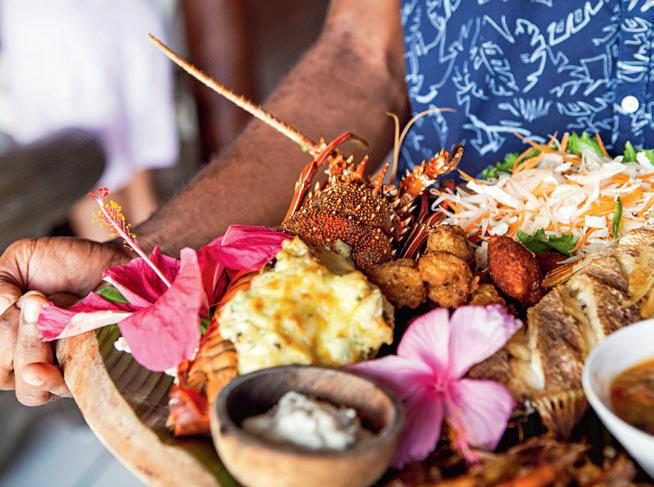


 (Above) Owners Brad and Lisa Gray, with their children, Montana and Zac, at Aore Island Resort
(Above) Owners Brad and Lisa Gray, with their children, Montana and Zac, at Aore Island Resort
Seventeen, eighteen, nineteen… Thirty. I drop my towel on the sand and take three more steps. At my feet, low waves slump to shore as if they’re too relaxed to crash. I wade out and dive in, the water warmer than the early morning breeze. A two-anda-half hour flight from Brisbane and 33 steps from bed, I wash away sleep and float with the current off the shore at Aore Island Resort (hotel.qantas.com.au/ aoreislandresort).
At breakfast in the open-air nakamal, where meals, cocktails and chilling out happen, the Queensland dad in front of me orders two of almost everything for his tween boys – jam and toast, papaya with muesli, juice, croissants, fruit platters and eggs. Ceiling fans fight the molassesthick heat and I feel the tickle of sweat at my back and temples. “Everything goes pretty slow here,” says Lisa Gray. The Australian bought the 52-guest property with her husband, Brad, in 2016 and the couple is still adjusting to the rhythm of their adopted home. “Vanuatu is like a different world but everything works out. Don’t try to control it and it’ll all be fine.”
I relinquish control and flop down in a cane chair to gaze at the calm sea. Later, I gingerly back into a hammock strung between beachside coconut palms. On another morning, I hear rain but in the time it takes to look up from my book the squall has passed and the sun’s back.
Waiting for Aore’s shuttle that makes the 10-minute passage to Espiritu Santo – the bigger neighbouring island with airport, shops and villages – four times a day, I dangle my legs off the jetty. Below, the coral and fish are aquarium-obvious.
“That big one gave me a shock when we were snorkelling under there,” says Derek, who’s here from New Zealand celebrating his 60th birthday with his partner, Cherie. “I looked up and saw teeth.” We watch together quietly until the boat arrives.
As we pull up to shore, Henry from Santo Heritage Tours (Luganville Bay, Espiritu Santo, +678 771 5786), wearing thongs and reflective sunnies, jumps up to meet me. The drive to Ri Ri Blue Hole takes about 20 minutes, along roads lined with homes, churches, chickens, coconut groves and schools, all barely holding back the vegetation that creeps over everything. “Most people in Vanuatu can speak eight languages, including French and English,” he tells me. “I can only speak three.”
Yano and Remy chat in a dialect I don’t understand as they paddle our canoe along the turquoise Mavutor River, so glassy I can see the sandy bottom and so still I can make out trees and sky on the surface. At the lazuline pool I float for 10 minutes in the cool, impossibly clear water, blue and green all around me but for the bright yellow canoe pulled up by the bank. Small birds scatter and swoop above, black butterflies bob by and all I can hear is birdsong, cicadas and my laconic guides laughing. On the return drive, Henry asks if there was anyone else at Ri Ri, one of the most popular blue holes on the island. When I tell him it was just me, he smiles in the rear-view mirror: “Good, good, good.”
I forget to wear shoes to dinner, which no-one notices, and in two days I eat two whole lobsters (because who wouldn’t?). The nakamal gets going as the sun fades – excellent local beef, fish and plenty of
coconut show up on the daily-changing menu – before everyone drifts off to villas on the beach and nestled among the hibiscus before 9pm. Glass louvres let fresh air in, fans whoosh it around, woven lamps throw golden light to read by and a thatched roof softens the sound of the tropical rain.
On Santo again, I clamber into the back of a ute and perch on a bench seat. “Do you drive like this where you’re from?” asks Henry’s colleague, Francis, with a wry smile. Driving the hour of dirt road to Mount Hope, where I’ll float down a river with Derek and Cherie, plus Chaz and Polly from England, is like riding in a rodeo. Francis points out huge banyan trees and others used to make canoes while I cling to my seat and my hat.
After exertion comes relief as I go first jumping off a rock with my reef shoes and life jacket on. The cold is a shock but soon feels normal for everyone except Francis, who is shivering. “I don’t like this cold! Find me, sun!”
Like ducklings, we paddle behind him through a narrow gorge, green with dewy moss and almost hidden from above by overhanging branches, palm fronds and foliage. “Keep right! Legs up,” he urges as we pick up pace and slip over gentle rapids. “Keep left!” He directs us under a rock ledge and the mini waterfall splashing from it. Tiny white butterflies fill the air, as if a confetti cannon just went off.
As I struggle clumsily to stay in the line, flapping my arms and rolling onto my tummy, Francis (still shivering) calls over his shoulder: “Stop swimming, float with the current. Just relax.”
Presented by Qantas Travel Money
Dine at a Michelin-starred restaurant in a grand Victorian building, soak up jazz
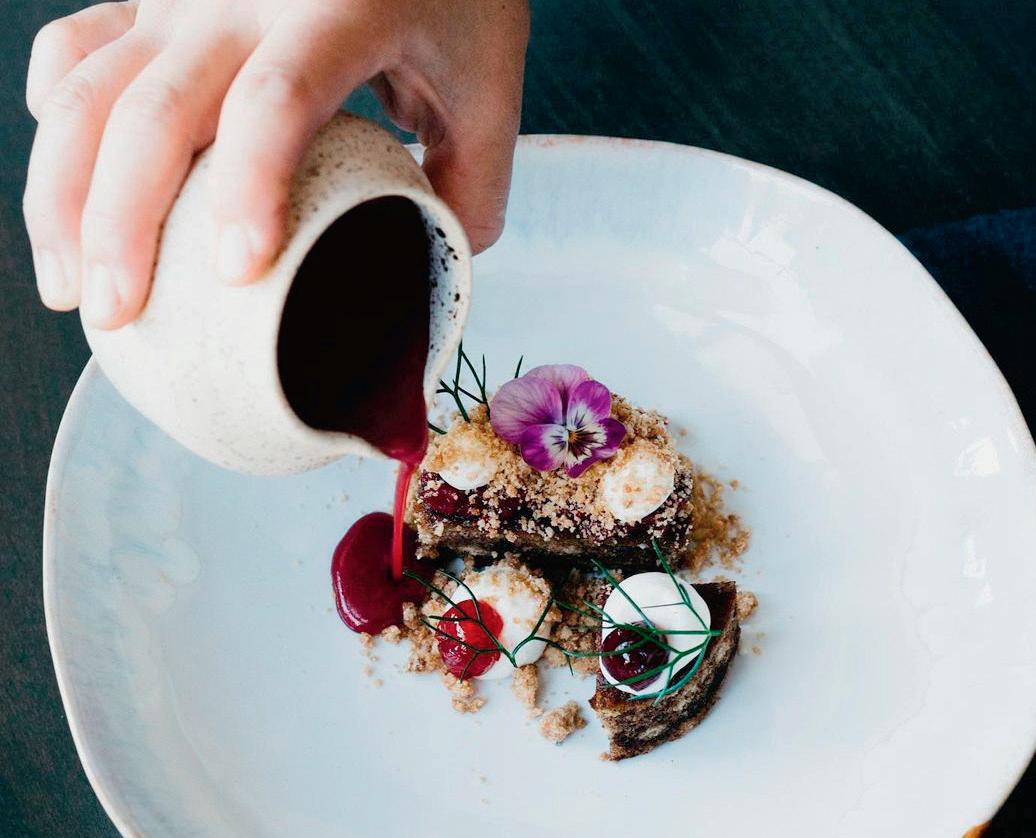
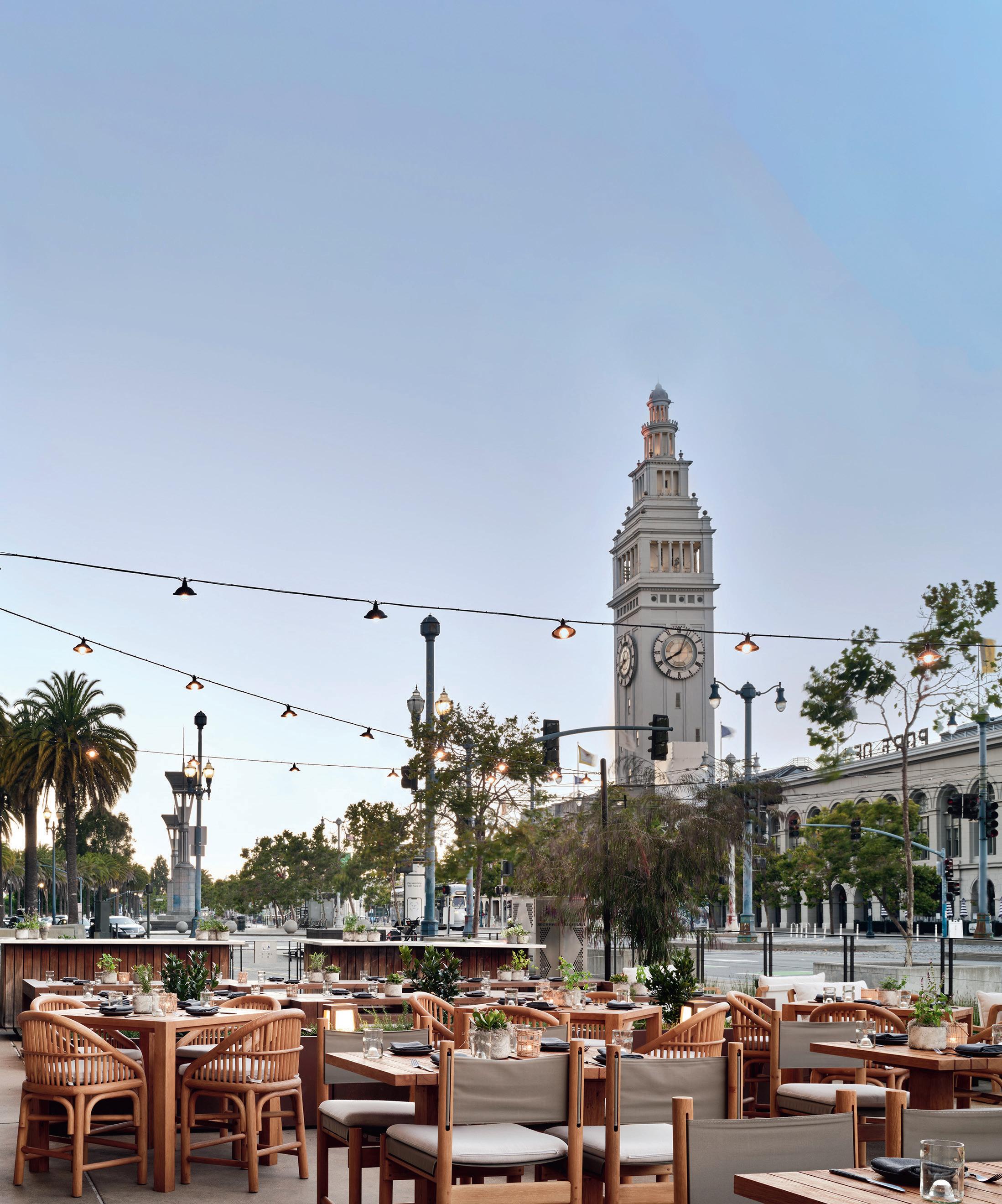
Located on San Francisco’s Embarcadero waterfront, 1 Hotel’s newest addition (hotel.qantas.com.au/1hotelsanfrancisco) is putting sustainability first while bringing its Northern Californian surroundings indoors. The 200-room hotel is decorated with native greenery and an earth-tone palette, with many of the furnishings made from reclaimed materials (such as elevator landings constructed with redwood lumber salvaged from a section of the original San Francisco Bay Bridge). Visit the on-site restaurant, Terrene, and nab a spot outdoors to enjoy dishes and cocktails made from the rooftop chef’s garden while taking in epic views of the iconic Ferry Building, which dates back to 1898.
A sumptuous renovation has seen Marlena (marlenarestaurant.com) cement itself as one of the city’s essential eating experiences. Husband-and-wife chef team David Fisher and Serena Chow Fisher serve up minimalist but moreish Michelin-starred Californian cuisine in a Victorian building in Bernal Heights, less than 10 minutes from the city centre. The prix fixe four-course menu changes daily according to the availability of local seasonal ingredients. Expect dishes like seared black cod with preserved artichokes, tarragon and pea or Glenn cherry and lemon yoghurt sponge with pistachio crumble and fresh ume.
Catch a secret line-up of the city’s best jazz musicians as the fog rolls in over the Bay. The Boathouse in Golden Gate Park transforms into the Lakehouse Jazz Airbnb Experience (airbnb.com.au/experiences) – an intimate venue playing the cool classics of Miles Davis and Chet Baker and contemporary fusions of Latin jazz, funk and Afro-influenced jams. Settle in and grab a beer or wine from the bar but BYO snacks if you’re feeling peckish.
Take off to San Francisco with Qantas Travel Money – the card that’s made for travel 1.
Did you know your Qantas Frequent Flyer card is also your prepaid Qantas Travel Money card? To activate it – or order a new one – visit qantastravelmoney.com
2. Set
View competitive exchange rates with the currency converter. Then buy up to 10 foreign currencies with easy, fee-free load options.4
3. Go!
You’re ready to go. Use your Qantas Travel Money card everywhere Mastercard® is accepted and earn Qantas Points on all your purchases.



Can former nomads find freedom again travelling with young kids? Bridget de Maine lets her little ones set the pace in Barcelona.
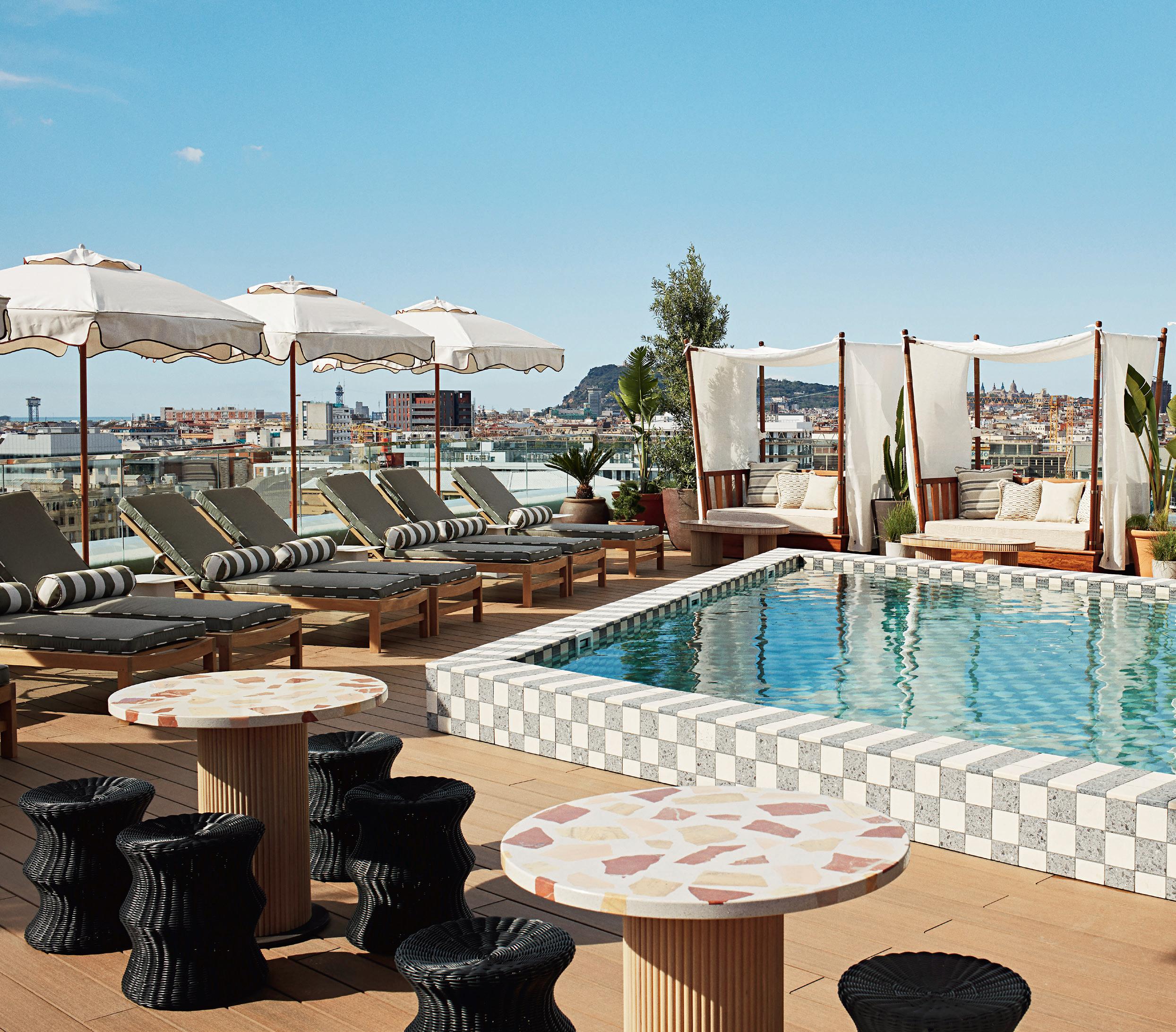 Photography by Raquel Guiu
Photography by Raquel Guiu
It is a truth universally acknowledged that a long-haul flight is infinitely longer for those travelling with children. Yet here we are, shifting our 18-month old son between our laps while our four-year-old daughter sprawls across an aisle seat. Of all the things Ben and I have done in our previous lives – hiked through the crevasses of Kyrgyzstan to yurts warmed by turd-fire; scrambled to the top of a Guatemalan volcano; flagged down an overnight bus bound for Aleppo – taking our two small children from Sydney to Barcelona currently seems the most ill-advised decision of the lot.
It’s a selfish pursuit, of course. When two of four family members would be satisfied with a trip to the zoo, this is our self-serving attempt to reclaim a sense of us. We’re after adventure. We’re after spontaneity, freedom, cheap wine… and we’ve decided to take two young kids to Barcelona to find it. What could possibly go wrong?

We check into The Hoxton, Poblenou (left; hotel.qantas.com.au/ thehoxtonpoblenou), an elegant jumble of vintage furniture and local art, just 15 minutes north of the Gothic Quarter by metro. Tiled in Catalan terracotta and furnished with a deep bathtub, dining area and kitchenette, there’s something for all of us in our “Homey” room – pink velvet couch bed for Delfina, a cushy cot with nappy pail for Atticus and, for us, medicinally strong coffee bags from local roastery Three Marks Coffee. Turns out families are as common here as designer sneakers. We pass prams in the ground-floor bodega (above), which is stocked with lo-fi wines and tinned fish, and even at the incredible Tope, the rooftop bar and Mexican eatery with an uninterrupted glimpse of La Sagrada Familia’s scaly spires. With a setup like this, staying in for the kids and their jet lag isn’t a hardship.
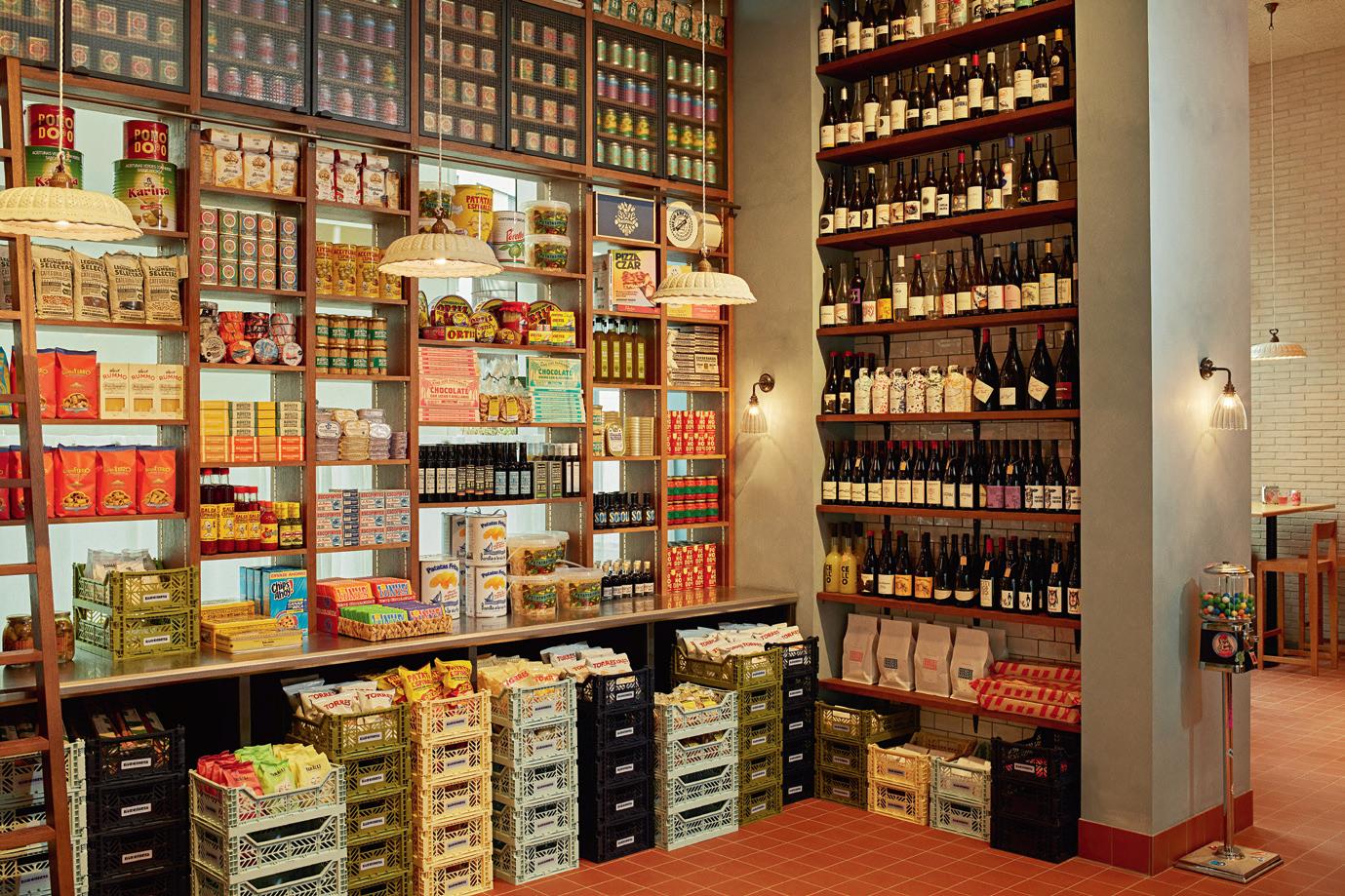

We go bold for our first outing, with a morning at Fundació Joan Miró (above; fmirobcn.org) near the lively neighbourhood of Poble Sec. We cut through the peaceful Parc de Montjuïc and as Atticus toddles compliantly and Delfi picks flowers, I briefly entertain the idea that we did something right. Upon entry (free for children under 15), the littlest is suddenly possessed by the necessity to move. He chases after Miró’s spherical sculptures, shouting “ball!” and readying his arms to collect them. Delfi allows only short pit stops at the hovering, cosmic dream of Painting (1925) and the celestial The gold of the azure (1967), a fit of scribbles and hot yellow. I regret everything.
Thankfully, the boxy, Rationalist building has pockets of outdoor space throughout. In these areas, the dynamic shifts. On one terrace, Atticus sits and quietly begins herding white pebbles into an imaginary pen. Delfi takes the existence of a gathering as an invitation to loudly deliver a self-composition, “The River Song”, to visitors taking pictures of the city below us. Away from the art, the absence of rules seems to calm them.
We sprint through the remaining collection and collapse in a quiet courtyard next to the museum café. There’s a circle of cushions, picture books, pencils and paper laid on the decking and the kids wordlessly invite themselves to enjoy it. Delfi scribbles on some cardboard. “This postcard’s for you, Mama!” she says, writing in hieroglyphics. We all sit, silently. Two minutes turn into 20. Ben and I order cortado after cortado, relaxing into the morning as expectations loosen their grip.
Poblenou’s incredible IDEAL Centre D’Arts Digitals (idealbarcelona.com) is a place that’s actually enjoyable for the whole family (free for kids under three). In between placards detailing Salvador Dalí’s fascination with theoretical physics, there are tablets set at reachable heights for virtual colouring. The kids soon gravitate towards a huge screen populated with crowds of surrealist eyes that fling around when you poke them. Finally, things they’re allowed to touch.
The main event is the projection room, where Dalí’s dizzying compositions spring to life on walls, floors and ceilings in a 30-minute loop. Delfi sits on a stool, stupefied, while Atticus is energised into chasing the projections around the delightfully hazard-free room. I’m also mesmerised by the live rendering, as the artist’s famous stilted elephants and melting clock faces liquify, pixelate, vaporise, collapse and split, like a dropped puzzle resolving itself.
,
Spaniards are notorious for their evening meals, which often stretch late into the night. After a few years of evenings that have stretched late into the night without our consent, we’d actually like to avoid “late into the night”, thanks. But when do we eat in a city of night owls?
At the Mercado de la Boqueria (boqueria.barcelona), the answer is: whenever. Folded into the narrow streets of the Gothic Quarter, this touristy knot of food stalls is an all-day affair so, at a totally unrespectable 5pm, we pull up stools at Bar Boqueria (below) and test the classics. The kids eat everything – the jamón, pan con tomate, even the pricey, salt-crusted anchovies – and we chalk up the spontaneous stall selection as a success. Other local favourites open earlier, too. On Sundays, El Born’s Eldiset (eldiset.com) opens at 6pm, securing us a second successful night of early evening grazing. The sizable list of low-intervention wines from Catalonia keeps us grown-ups happy (and the ubiquitous croquettes achieve the same for the kids).
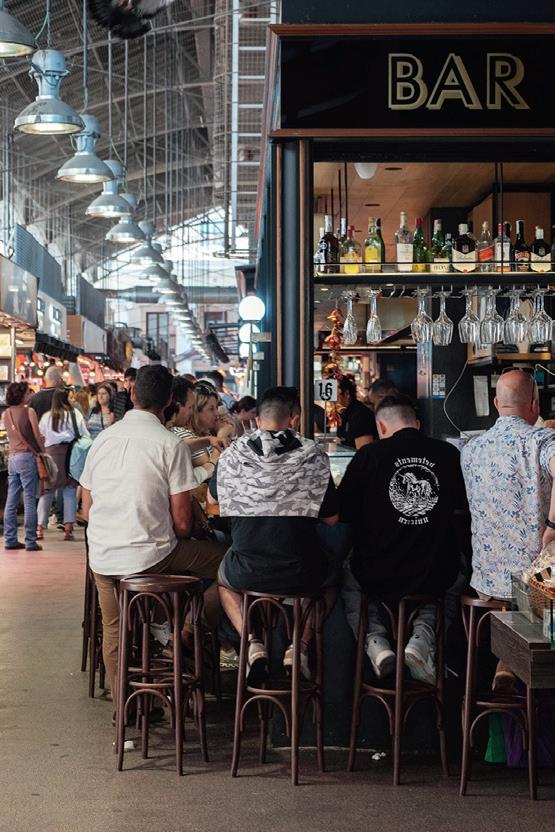
We didn’t plan on visiting Gaudí’s Casa Vicens (above; casavicens.org) but tickets for the wildly popular Sagrada Família are exhausted for the few days we’re in town. There’s only a trickle of people at this Modernist summer house (free for kids under 11) and I can’t understand why. It’s a thrilling collision of a Moorish-red exterior, florid ceilings and geometrically sliced shutters on a peaceful Gràcia street. With ice-creams in hand, we wind deeper into the neighbourhood, heading for the metro. The streets open into a plaza, walled by modern apartment blocks. It’s teeming with kids; there’s a tangle over a jungle gym, while some are pinging their soccer balls to parents. The spontaneous discovery takes me off guard. I’m soothed by the familiarity of the sight and thrilled by its unfamiliar setting. The kids fold into the crowd and we rest on a bench. Lingering on the unexpected is one of the gifts of travel and also happens to be a child’s specialty. Travelling with Delfi and Atticus forces Ben and me to pause in places that weren’t on our hit list. Our kids aren’t (always) obstacles to discovery – sometimes they’re facilitators.
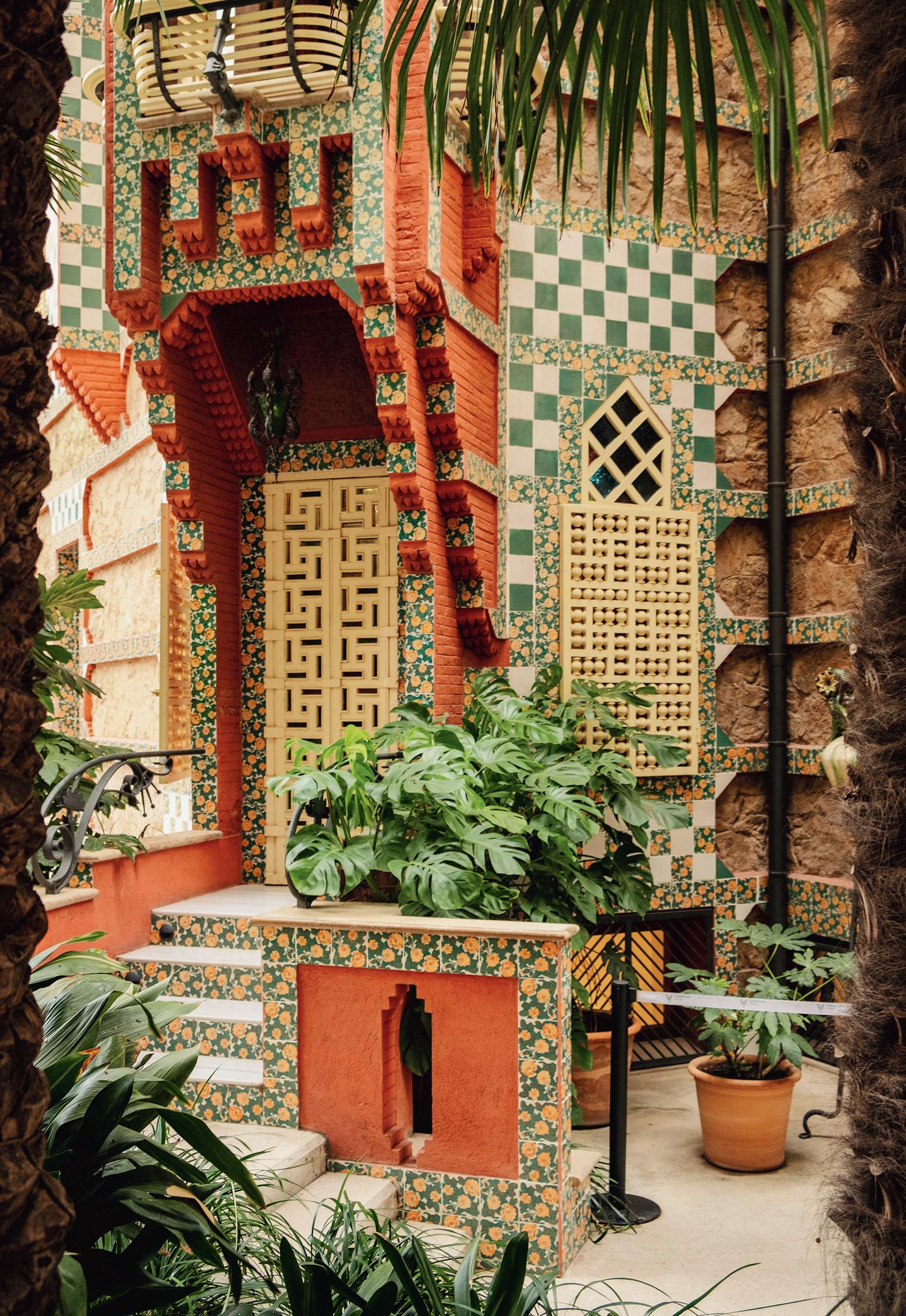
, you don’t have to eat at 10pm
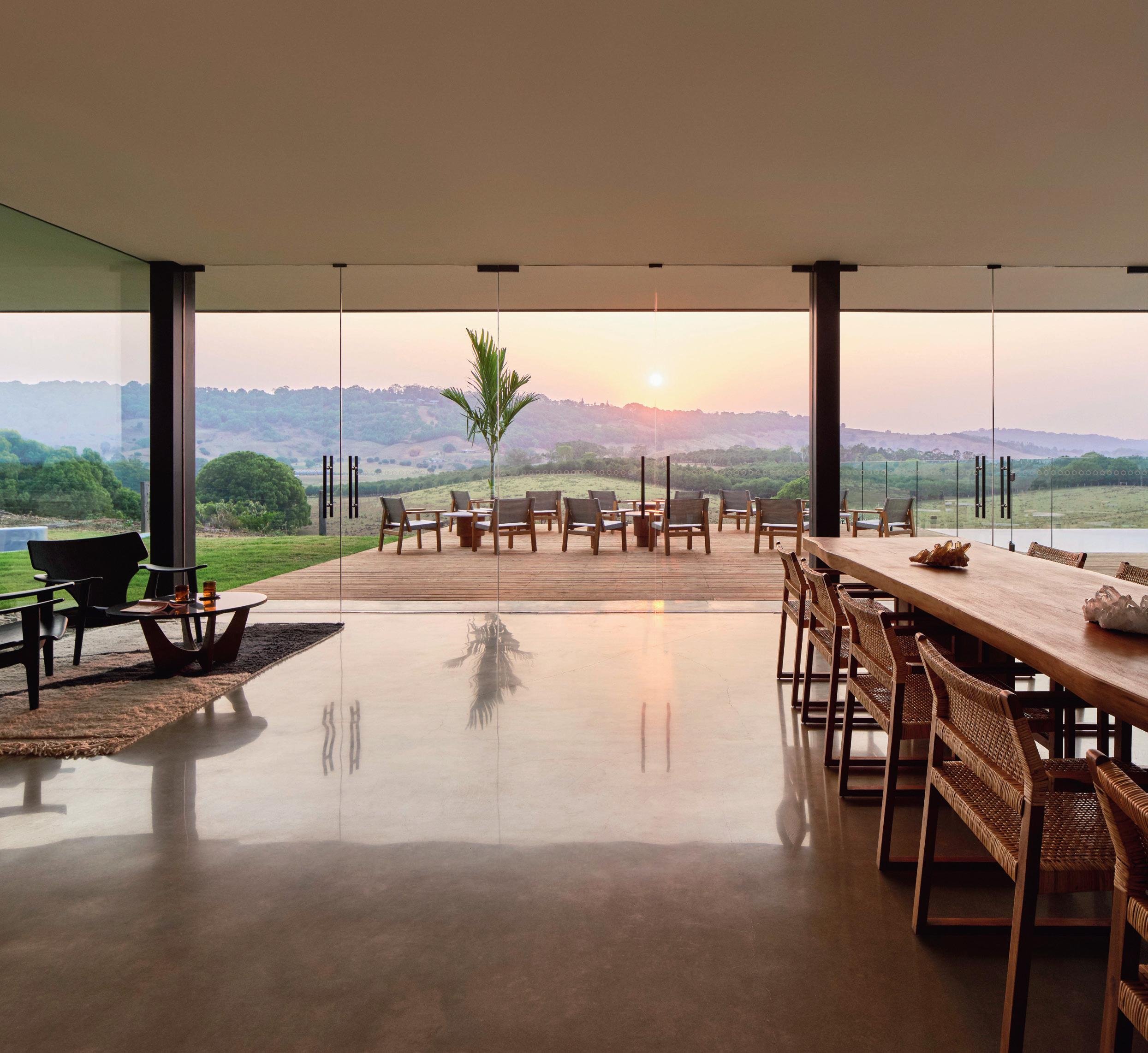
Whether it’s ditching your device or meditating in the mountains, a wellness getaway isn’t one size fits all. Di Webster finds options for whatever ails you.
You want… YOGA AND MEDITATION
To get a sense of what Soma Byron Bay (somabyron.com.au) is, it’s important to stress what it’s not. It’s not a fancy resort with a spa, a swim-up bar and morning yoga if you’re not too hungover; nor is it a field of tepees with herbal tinctures and uninhibited tribal dancing. It’s a stylish, purpose-built, well-considered sanctuary where exhausted bodies can heal, busy minds can dial down the noise and pretty much everybody can learn a new way to navigate life.
Set on nine hectares of rainforest in the Byron Bay hinterland, the eco-friendly retreat has 10 rooms (all with ensuites and views) in the main house, a separate tripleshare “forest abode”, a freshwater infinity pool, an infrared sauna, plus massage and
Ayurvedic treatment rooms. Plant-based meals are taken at a seven-metre-long communal dining table, stories are shared around a big firepit, and yoga and Vedic meditation are practised in a striking domed shala in the forest.

Soma was founded by mindfulness expert and meditation master teacher Gary Gorrow and his former student, Peter Ostick, a once-burned-out media and technology wunderkind who says he was literally saved by the process. Ostick joined forces with Gorrow (who is also an Ayurvedic health coach) and Soma was born.
Courses include detoxifying cleanses, intensive personal-growth retreats that are designed to “transform your career, business, health and life purpose” and a four-day program of yoga, movement and breathwork led by master teachers. The retreats have a non-residential option so you can stay somewhere else and still find peace at Soma.
Romello PereiraYou want… A TOTAL OVERHAUL
The transformation starts a week before you check in, when you switch to decaf and say farewell to your nightly vino. Heaven is no place for a detox headache.
Aro Hā (aro-ha.com), located in the sublime subalpine glacial valleys of Central Otago, 45 minutes from Queenstown on the South Island of New Zealand, is a high-end health retreat with lofty ambitions. The main one? To take you and your burned-out bundle of bad habits and turn you into a lean, strong, calm, clear-thinking and happy human in six days (or at least get you started then give you the roadmap).
While there’s a mix of soft and hard activities, it’s a program, to put it bluntly, that isn’t for wimps. There are hours of hiking in nature, strength-training sessions, cooking classes, yoga, infrared saunas, ice baths, silence and a daily deep-tissue massage.

If that sounds a bit intense, mindfulness practices are woven into every activity (in te reo Māori, aro ha loosely means “in the presence of divine breath”). Plantbased dining is communal, occasional periods of silence are encouraged and support is ever-present.
Bedrooms are comfortable without being massively luxe (two bedrooms have a connecting bathroom) but, frankly, you don’t spend a lot of time in them. Devices are discouraged although there is wi-fi and scant mobile reception. But who needs wi-fi in heaven?
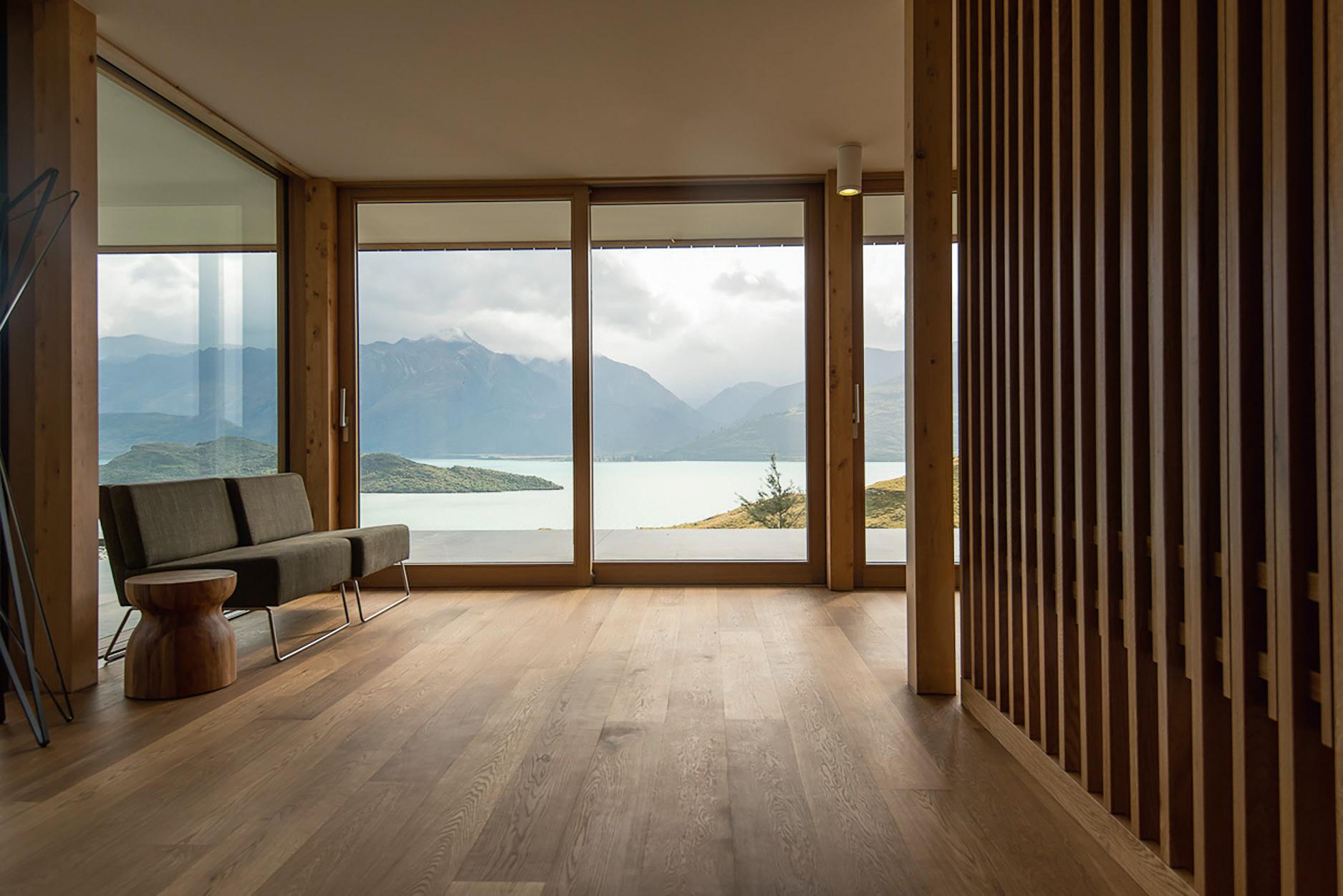
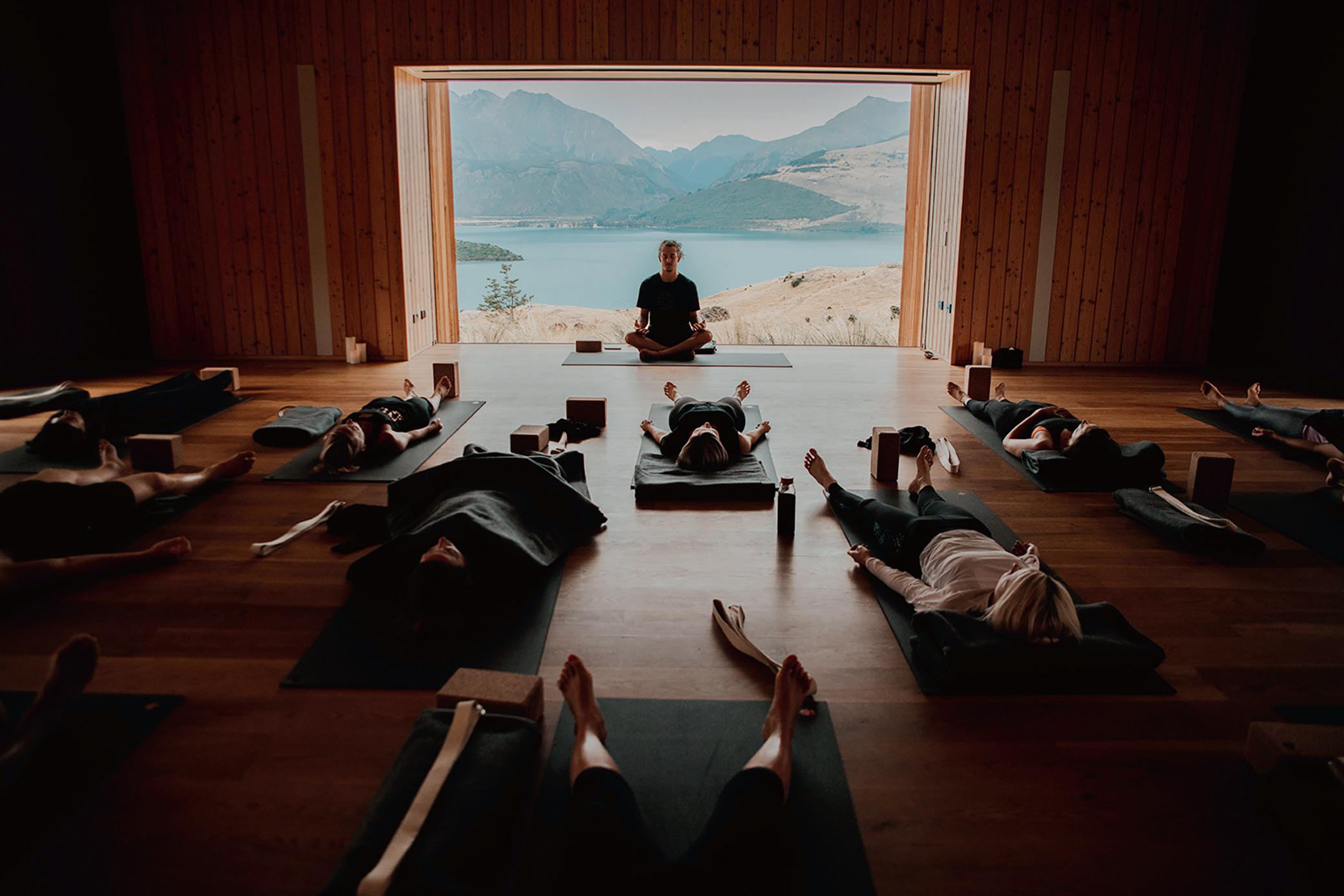

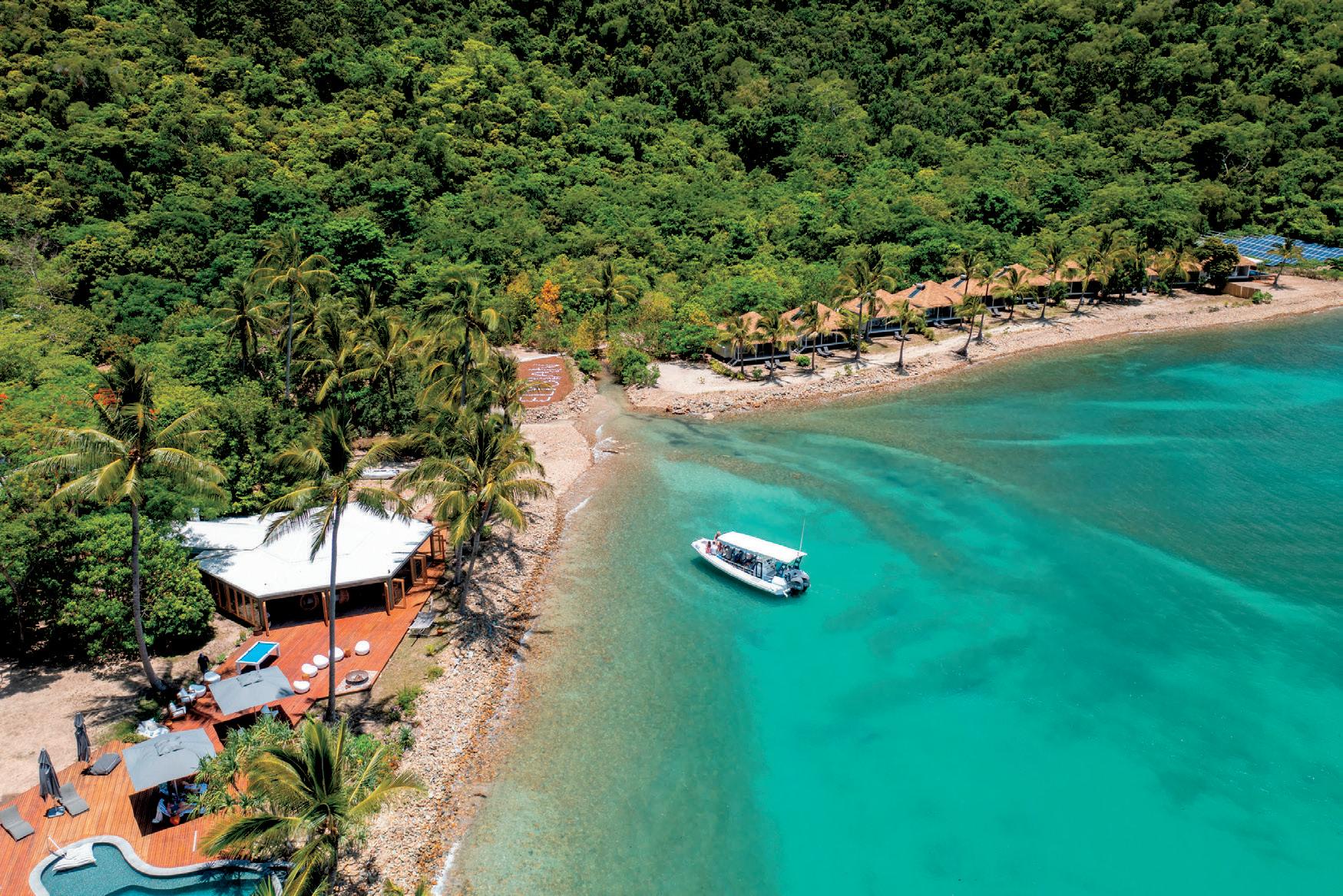

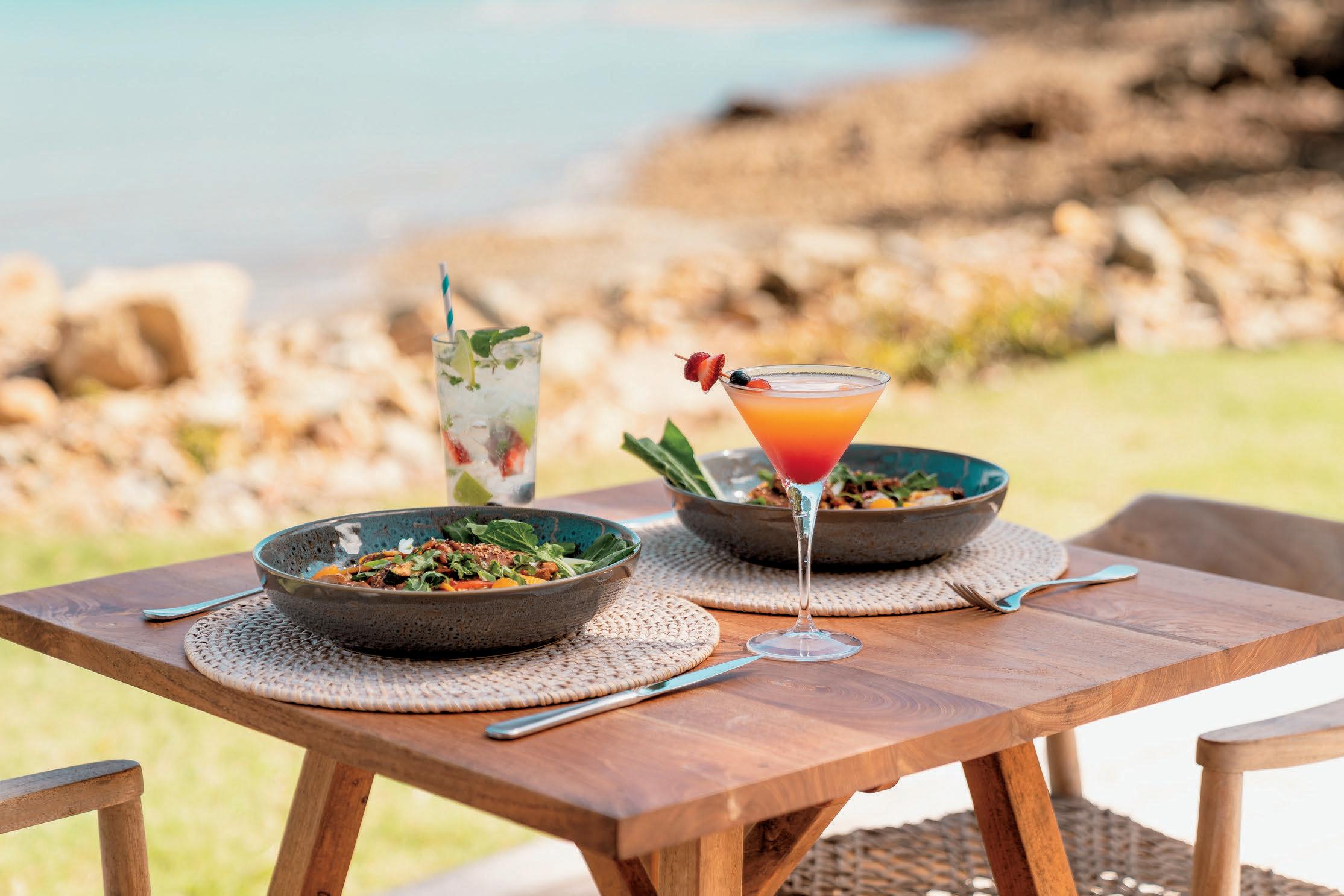
You want… TO DISCONNECT
Digital detox comes in a couple of flavours. There’s the one where you check into a ritzy facility and grimly hand over your phone. Then there’s the one imposed by splendid isolation. Eco Beach resort (which is closed during the wet season, November to April; hotel.qantas.com.au/ ecobeachbroome) in Western Australia’s opalescent Kimberley region sits in the latter camp.
There’s no wi-fi access and phone reception is dictated variously by your location in the resort, the weather (rarely an issue) and, according to the owners, even certain tides. But here’s the thing: perched on a vast, sunlit arc of sand that stretches down to the aquamarine Indian Ocean with a big sky set aflame by the sinking sun, you’ll find you don’t need much more.
Yep, Eco Beach, just over an hour south of Broome, is a glorious place to leave
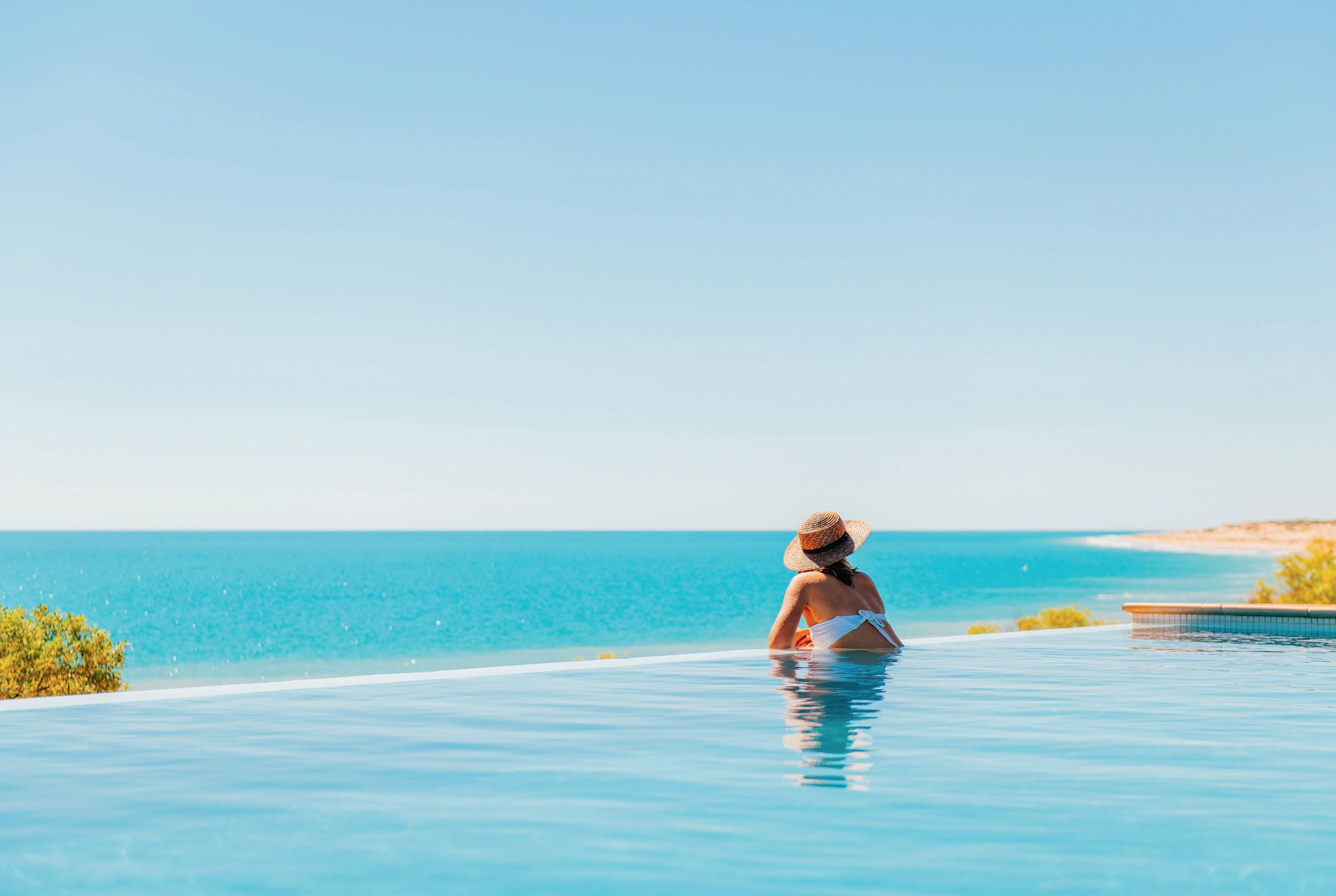
the world behind, with 30 safari-style tents (with private ensuites and balconies) and 25 villas peeping out from the sand dunes and coastal scrub. A pair of twobedroom self-contained beach houses hold prized position on the clifftop overlooking Cape Villaret.
Camp kitchens and barbecues are dotted around the grounds for communal use but if cooking is not your idea of a holiday, Jack’s Bar & Restaurant is right there poolside, with a café-style breakfast and lunch and a more sophisticated menu of locally sourced fare at night. A private dinner on the sand? Coming right up.
What to do when you can’t scroll? Maybe start the day with yoga, explore the coastline from a paddleboard or kayak, slather your body in therapeutic mangrove mud and enjoy a glass of sparkling while you’re waiting to rinse off in the bleached-turquoise sea. Take a self-guided bushwalk, haul in a trevally from the beach or simply lie in a hammock and read a book. Most importantly, relax. This one’s for you, not for Instagram.
You want… A PHYSICAL CHALLENGE
What’s your idea of a physically demanding holiday? If it’s trekking through rainforest in the shadow of majestic mountains and alongside mirrored lakes in the occasional company of fur seals or crested penguins, read on. If it’s punctuating the hike with a ride in a jet boat to an ancient forest and a helicopter flight over New Zealand’s Milford Sound – and ending each day with a delicious dinner, a fine Central Otago wine and a comfortable bed – welcome to the Hollyford Track.
This guided trek through the Hollyford Valley on the South Island is part excursion, part exertion and 100 per cent immersion
in the beauty and bounty of Fiordland. The Hollyford Wilderness Experience (hollyfordtrack.com) offers a four-day luxury guided tour of the track itself (including the jet boat and helicopter). Abercrombie & Kent (abercrombiekent. com.au) bookends its four-day itinerary with stays at The Rees Hotel on the shores of Lake Wakatipu near Queenstown, a cycling tour from the gold-rush village of Arrowtown to a winery in the Gibbston Valley and a day trek on a not-too-taxing section of the famous Routeburn Track – eight days all up.
Both the Hollyford Track and this section of the Routeburn – a trail originally used by Mãori for hunting and gathering and one of New Zealand’s Great Walks –require a “reasonable” level of fitness. The beauty of this break is that you can replenish your soul while you work your body.
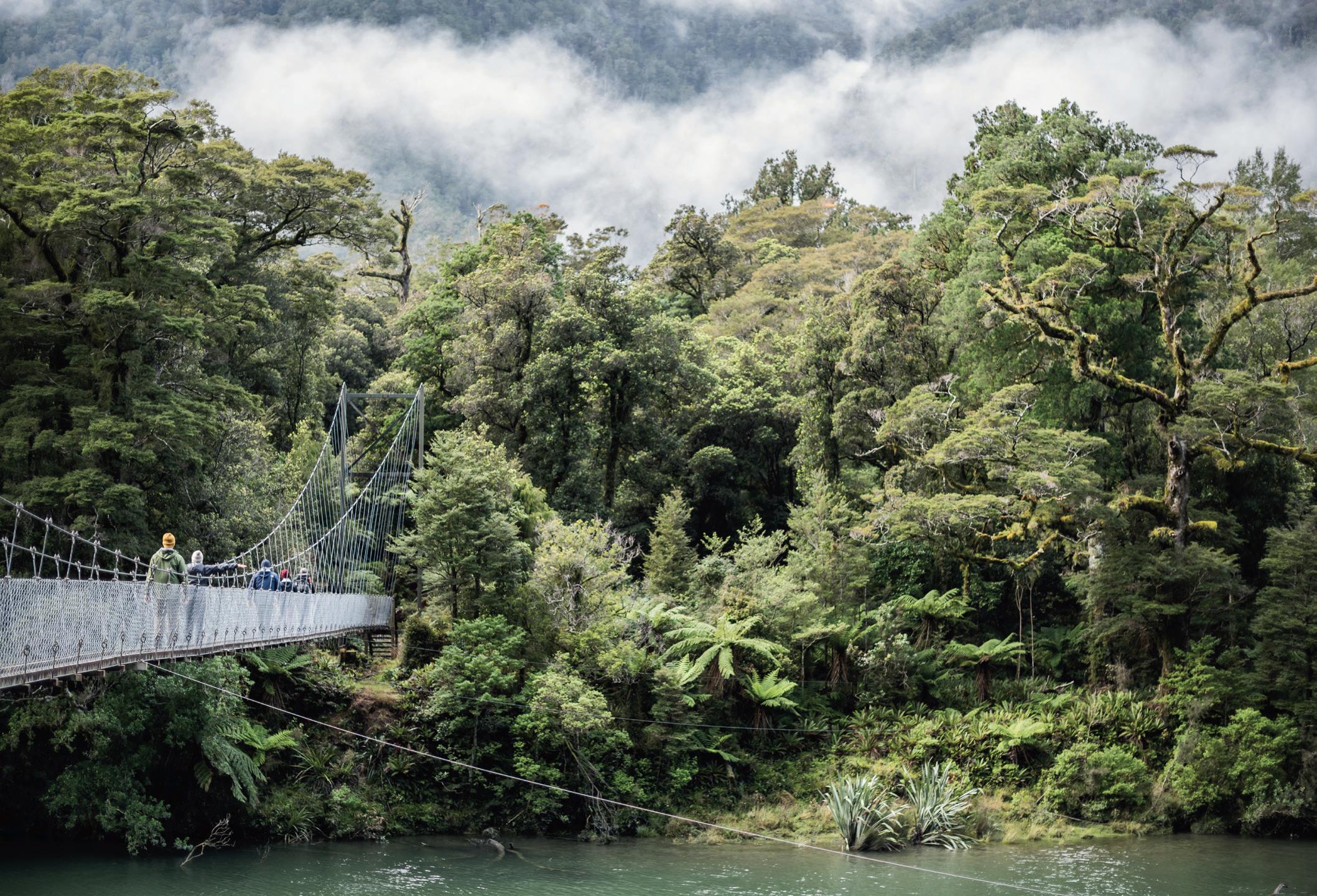
You want…
A weird – but also weirdly natural – thing happens when you struggle to get enough sleep. Tired, cranky and often desperate, by day you reach for the very stimulants that are likely keeping you awake at night: caffeine and high-energy foods. If breaking that toxic cycle was easy, we’d all be fresh-faced, focused, unflappable and have extremely long fuses. But it’s not that simple so the folks at Gwinganna Lifestyle Retreat (gwinganna.com) in the Gold Coast hinterland created the “Triple S” – Sleep, Sugar, Stress program.
There have been countless studies about the importance of a good night’s shut-eye (seven to nine hours for most of us) and all reached the same conclusion: we really need it. According to a 2021 report by the Australian Institute of Health and Welfare, nearly half of all Australian
1623752 2023-05-31T09:41:55+10:00
adults had at least two sleep-related problems. “Getting too much or too little sleep is associated with an increased risk of Type 2 diabetes, cardiovascular disease, coronary heart disease, obesity and death,” the report claimed.
Gwinganna’s five-night program not only includes seminars about the bad habits that affect your sleeping patterns – and the value of bedtime rituals – but
also a massage, a facial and delicious, organic, gluten-free meals (since the aim of this program is to calm the nervous system, caffeine and alcohol are no-nos). Add to that free time to relax and breathe and the naturally soporific effect of going to bed in the quiet comfort of a subtropical haven. By day six, you should be waking up to yourself (as distinct from the exhausted person you used to be).
There’s the spa, then there’s wellness by Sofitel. 12 Darling Drive, Sydney NSW 2000

Book your experience at sofitelsydneydarlingharbour.com



Embrace the latest wellness trends that offers an exquisite collection of luxury spa treatments while creating a sanctuary for health, wellness and fitness.
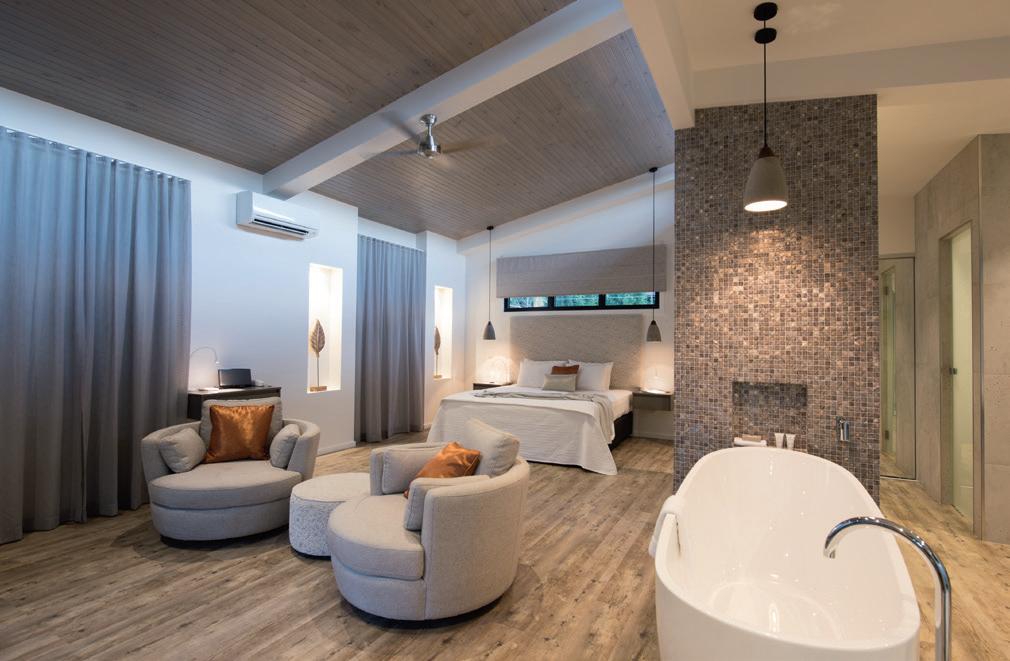
You want… TO CHILL OUT Peninsula Hot Springs (peninsulahotsprings. com) on Victoria’s Mornington Peninsula – the day spa that elevated the geothermal waters from indulgent to sublime – once suffered a fatal flaw: the word “day”. No matter how cleansed, refreshed, restored and utterly relaxed you were after a soak in the waters and a spa treatment, at some point in the day you had to leave. Not anymore.
A few years ago, 10 premium glamping tents with king beds, ensuite bathrooms and private decks sprang up amid the
calming surrounds of the hot springs, about 90 minutes from Melbourne. A stay in the “tents”, which have geothermally heated floors, a rain shower and walk-in ’robe, comes with some special privileges, including all on-site bathing (we’re talking more than 30 heated mineral pools), breakfast, yoga and a Wim Hof-inspired Fire and Ice wellness experience (don’t panic; everything is optional).
The pools you’re soaking in here contain naturally heated water springing from deep within the earth (not to be confused with artificially heated mineral springs). Reported health benefits include improved sleep, a reduction in arthritis symptoms, healthier skin and lower blood pressure. All of that while you’re doing absolutely nothing.
Ranging in temperature from 34°C to 42°C, the pools are linked by meandering walkways to a Turkish hammam steam bath and a reflexology path of thermally heated stones.

But back to the sleepover. A one-night stay could involve lolling about in your pick of the rock pools (with lunch delivered), an afternoon massage or facial (or both) at the spa, a nap on your day bed then dinner in your bathrobe at the Spa Dreaming Centre dining room (a super-greens salad or grass-fed ox cheek with a local Foxeys Hangout pinot noir, perhaps?).
Overnight stays come with access to the popular midnight bathing session so order a nightcap, slip into the pool, look up and count your lucky stars.
Dive into coastal towns, hit up inner-city enclaves or find a rural paradise. For 35 years, Quest Apartment Hotels has been introducing Australians to hidden corners of the country. Where will you go next?

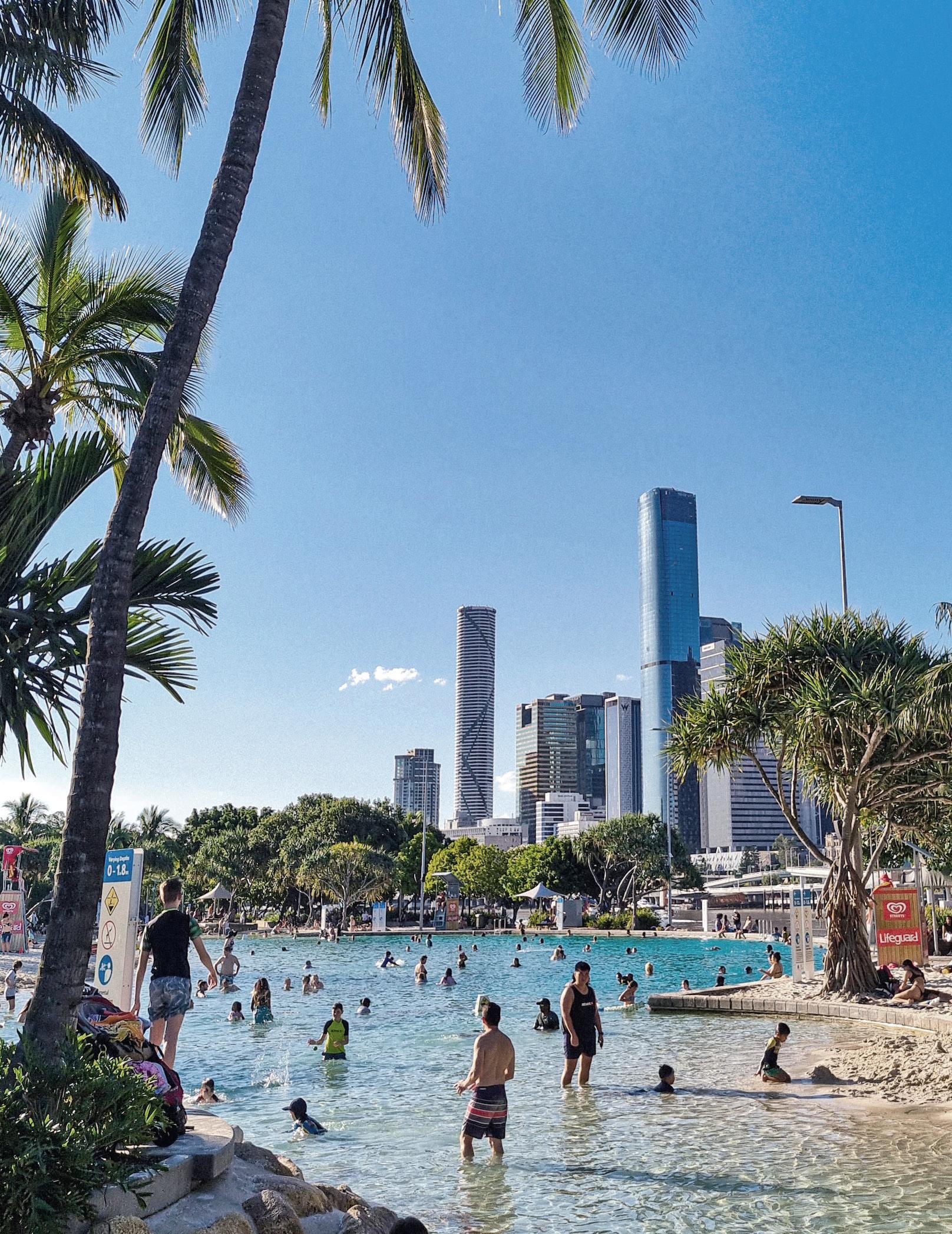

Lace up your walking shoes and discover the scenic trails around Sydney’s Northern Beaches including the North Head Sanctuary walking tracks and Manly to Dee Why trail. Mark Stanley, business owner of Quest Manly, which offers rooms with water views of Manly Cove Beach, recommends the Fairy Bower rockpool to cool off. “While you’re over that way, pop into The Boathouse Shelly Beach for a coffee or something stronger,” he says. Quest Manly is just across the street from the iconic ferry wharf and afternoons at Manly Wharf’s Hugos “simply never miss”, according to the hotelier. “The menu revolves around Italian flavours with seafood and it’s got a great wine list.”
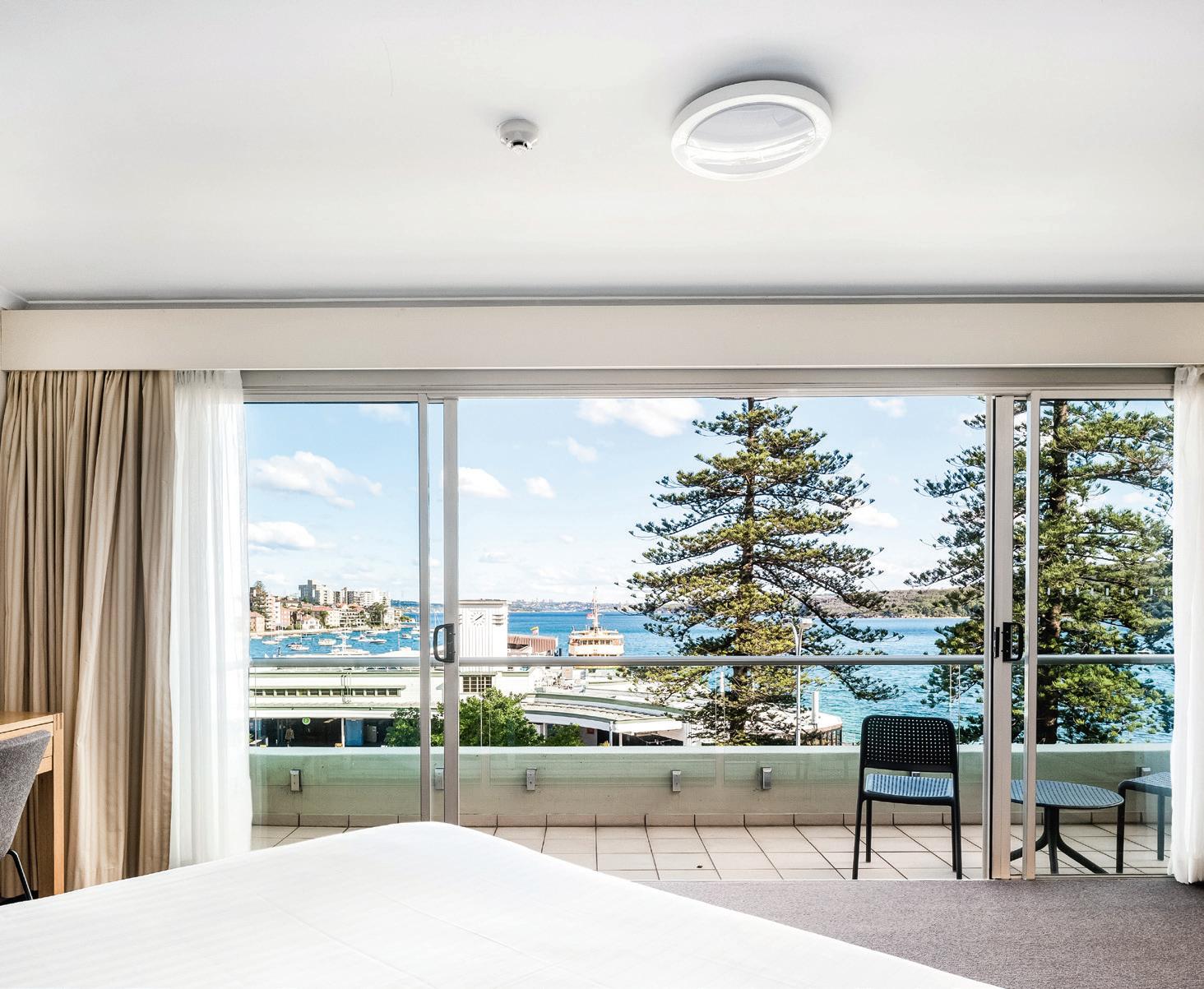
Although Melbourne is lauded for its laneways, Geelong – just over an hour’s drive south-west of the Victorian capital – has seen its urban environment transformed in recent years with the development of its own laneways. Here, you’ll find a barrel-aged Negroni at Prohibitionstyle speakeasy 18th Amendment Bar; a heady saké menu and Japanese fusion at Sober Ramen; and modern takes on Middle Eastern delicacies (such as the chermoula roasted chicken breast, almond hummus, leeks and preserved lemon) at The Arborist. Nearby, Quest Geelong offers studios and one-, twoand three-bedroom options and has easy access to the CBD’s laneways and waterfront restaurants as well as Western Beach for après-dinner walks.
Perth, WA
Sandwiched between the Swan River and trendy Northbridge, Perth’s CBD is compact, walkable and packed with cool bars (try basement-level Bobeche for mouthwatering cocktails), eclectic restaurants (Guy Grossi’s Garum serves renditions of Roman classics such as cacio e pepe) and family-friendly riverside precincts. Order coffee to go from Petition before a morning walk across the curved footbridge at Elizabeth Quay. From the comfort of Quest West End (Quest’s oldest property), it’s a leisurely three-minute walk to the RAC Arena and 15 minutes to Museum Boola Bardip.
More than 150 parks, filled with jacaranda and verdant plane trees, dot the Toowoomba region. Spend time among the blooms at the impressive Queens Park, a 25hectare green expanse in the heart of the city, then switch things up, weaving among heritage buildings on a Street Art Trail. Grab a pork, sage and apple sausage roll (and sauce) from cult favourite The Baker’s Duck before returning to Quest Toowoomba , which has rooms boasting views over the lush parklands.

Southbank, Melbourne, Vic
Home to the NGV, the Arts Centre, the Australian Music Vault and more, Melbourne’s Southbank is so packed with cultural institutions it’s a wonder there’s room for anything else. Get your bearings at the top of the 297-metre-tall Eureka Tower with views over the city then wander along the Yarra, stopping to bask in the sun from a deckchair at the stylish Boatbuilders Yard bar and café. As evening approaches, head to floating bar Ponyfish Island (only accessible via the stairs under Evan Walker Bridge) for a Pampelle Spritz. After taking in a show at the Melbourne Recital Centre, stroll the five minutes back to Quest Southbank – with a gym and sauna, it offers more than just a bed.
Presented by Quest Apartment HotelsGold Rush history is part of Rockhampton’s story. Explore heritage Victorian architecture en route to the Great Western Hotel for a steak lunch – this is cattle country and the beef is topnotch – before walking along the winding Fitzroy River to Quest Rockhampton, an apartment hotel that offers rooms with views to Mount Archer National Park. Before you skip town, stop in at the newly renovated Rockhampton Museum of Art to view the works of Australian artists, such as Sidney Nolan, Arthur Boyd and Judy Cassab.
Breakfast with a sparkling view of perfect waves may not be what comes to mind when you think of Melbourne Airport. “As soon as you walk into URBNSURF, you instantly feel your shoulders relax,” says Quest Melbourne Airport’s business owner Michael Canny of the surf park that offers the kind of waves surfers dream of. Dry off after a paddle and grab a mortadella toastie with tomato relish, pickles, cheddar and Dijon at the attached eatery Three Blue Ducks. Or head slightly further afield. “Arundel Farm Estate is the real secret,” says Canny of the Keilor Valley restaurant – a six-minute drive from Quest Melbourne Airport. “My picks include the gnocchi ragu or any of the woodfired pizzas.”
Palmerston – 20 kilometres south-east of Darwin – is the Northern Territory’s secondlargest city and an ideal base for exploring the region’s wonders including Kakadu National Park. At the centre of things is Quest Palmerston which features 84 light-filled serviced apartments and is just a two-minute walk from Palmerston Market, where food stalls, live entertainment and handicrafts jostle for space every Friday night during the dry season. To really unwind, play a round at the Palmerston Golf & Country Club or take a picnic to tranquil Sanctuary Lakes Park.
With the Swan River on its doorstep and Perth Zoo and Kings Park within strolling distance, East Perth offers a hit of nature in the city. Walk the riverfront and take a table at The Point Rooftop Bar to wind down over a dozen oysters and a glass of sparkling. Just a couple of streets back from the water, Quest East Perth’s location puts it within a short walk from Queens Garden and Whipper Snapper Distillery where you can try American-style moonshine and whiskey before heading back to one of the 128 contemporary apartments tucked behind a charming heritage façade.

Go beyond the skyscrapers of North Sydney and spend an afternoon exploring Wendy Whiteley’s Secret Garden on the Lavender Bay waterfront, taking in the beauty of Sydney Harbour on the Cremorne Point Walk and visiting Nutcote, the one-time home of beloved children’s author May Gibbs. Check into Quest North Sydney to extend your stay and seek out the French fare at Loulou Bistro, Boulangerie & Traiteur, which serves batards by day and steak frites au poivre by night.
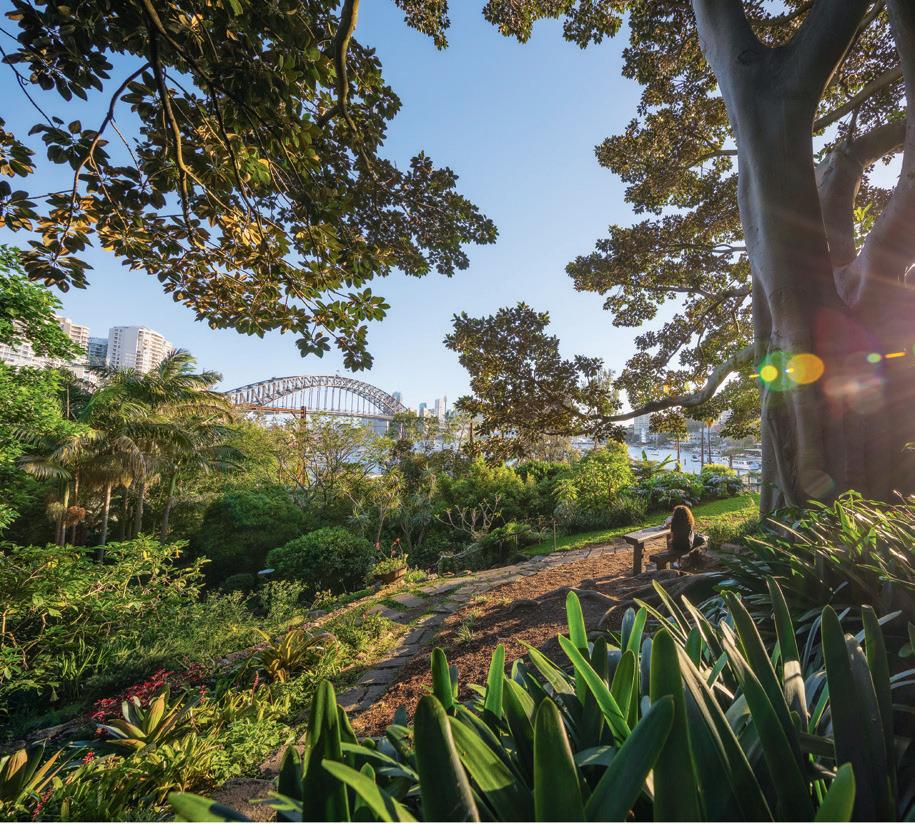
Mackay’s Pioneer Valley is carpeted in sugar cane which butts up against Australia’s longest stretch of subtropical rainforest at Eungella National Park. The city is warm year round, with an average high of 22°C in winter and 30°C in summer, making its small centre eminently walkable. From Quest Mackay on Gordon – a stylish stay with on-site pool – you’re two blocks from Woodman’s Axe café for a batch brew and twice-baked almond croissant. Every Wednesday from 6.30am to 10.30am, there’s a farmers’ market at Bluewater Quay. Or head to 9th Lane Grind café for its market-day special. As the day warms, drop by Bluewater Lagoon, with its three tiers of lagoon pools, to cool off right in the city centre.
Make the most of the maritime region and explore the river by boat or kayak through a 10,000-year-old mangrove forest. “You might see the bottlenose dolphins that call the Port River home,” says Daniel O’Hare, the business owner of Quest Port Adelaide, which offers rooms with balcony views of the water. Back on dry land, the region has seen a surge in exciting dining options. “We often recommend stopping for a drink at Pirate Life Brewing,” says O’Hare. “Set in a historic converted woolshed, there are 24 brews on tap – including the Hazy IPA – and a massive beer garden area with a DJ and pinball machines.”
The beachside suburb of Cronulla was once synonymous with Chiko Rolls thanks to the 1970s novel Puberty Blues but now the vibe is decidedly coastal chic. Just under a onehour drive south of Sydney, it’s all coastal walks (try the Cronulla to Botany Bay 13-kilometre track), stretches of sand and picnic-perfect bays. Snack on coconut hotcakes with fresh blueberries, pomegranate and passionfruit curd at Blackwood Pantry or have a lunchtime feast at CC Babcoq, which elevates the humble roast chicken with a secret sauce. Quest Cronulla Beach – with an outdoor swimming pool, spa and sauna – is positioned within walking distance of the North Cronulla rock pool and some of Sydney’s best surf breaks.
Just north of Melbourne’s CBD, Collingwood plays host to hole-in-the-wall cafés, quirky diners and late-night hotspots. Power up with black coffee at Aunty Peg’s roastery and café (a milk-free zone), browse eclectic artworks at Lamington Drive Gallery and pick up one-of-a-kind homewares, books and trinkets at Happy Valley Shop. Hungry? Jump on board Easey’s, a train carriage perched atop a five-storey building where the burgers are great and the views are even better. Make Quest Collingwood on Wellington Street your base. The apartment hotel features 83 modern one-, twoand three-bedroom options and a restaurant chargeback service.

TRAWL THROUGH HARBOURSIDE MARKETS
Hobart, Tas
Fish and chips from Flippers on Constitution Dock is a quintessential Hobart experience, as is a scallop pie from Jackman & McRoss and hopping on the ferry to get eyes on the alt-art of MONA. Quest Savoy is a boutique stay that offers 21 years of local hospitality within its 31 rooms, footsteps from the Tasmanian Museum and Art Gallery and a 10-minute stroll to Salamanca Place. The latter was a one-time sailors’ hangout that’s now home to art galleries, whisky bars and a famous Saturday market stocked with handmade chocolate, cheese, woolly jumpers and baked goods.
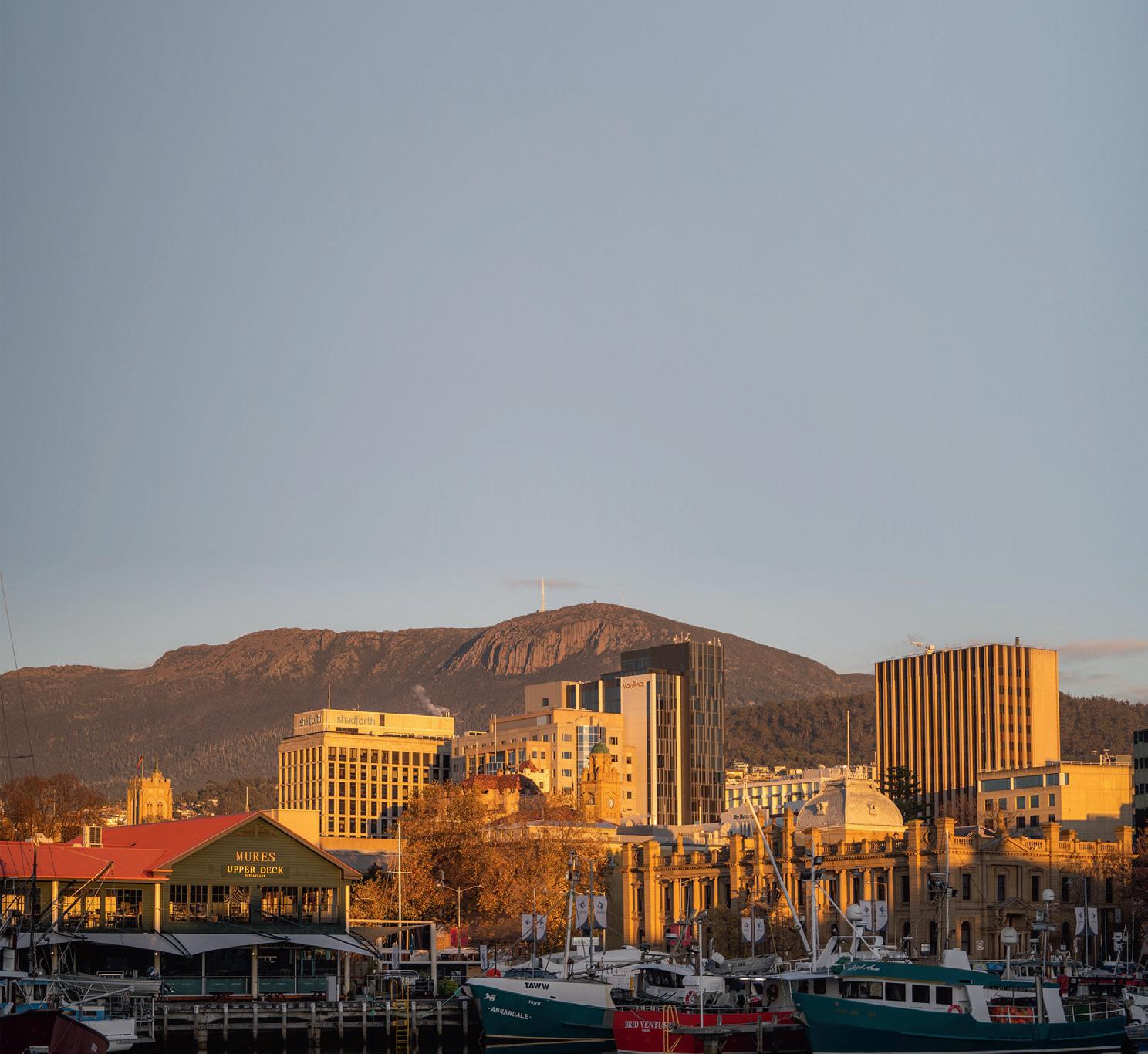 Presented by Quest Apartment Hotels
Presented by Quest Apartment Hotels
“Lake Burley Griffin has so much to offer,” says Quest Canberra City Walk business owner Fahim Malik. “Hire a paddle boat or take a GoBoat [an electric picnic boat] out onto the lake.” Walk down to Via Dolce for an Italian pastry, coffee or gelato before heading to the National Arboretum Canberra. It’s home to the National Bonsai and Penjing collection and more than 44,000 rare and endangered trees. “It’s a mosaic of living forests and gardens offering spectacular views across the city in one direction and the Brindabella mountains in the other.”

Shepparton, Vic
Olive groves, dairies, orchards and vineyards dot the Goulburn Valley – a food bowl where the riches are put to great use in Shepparton’s burgeoning restaurant scene. Wake up at Quest Shepparton – conveniently nestled in the heart of the town and with Lake Victoria nearby – and begin the day with coffee at Noble Monks before picking up buttery croissants and perfectly chewy bagels at Higgins Bakery. Wander the Shepparton streets, appreciating public art such as Adnate’s portraits of First Nations elders, before treating yourself to oysters with chive and garlic oil or choux pastry with parmesan custard at The Teller Collective.
St Leonards, NSW
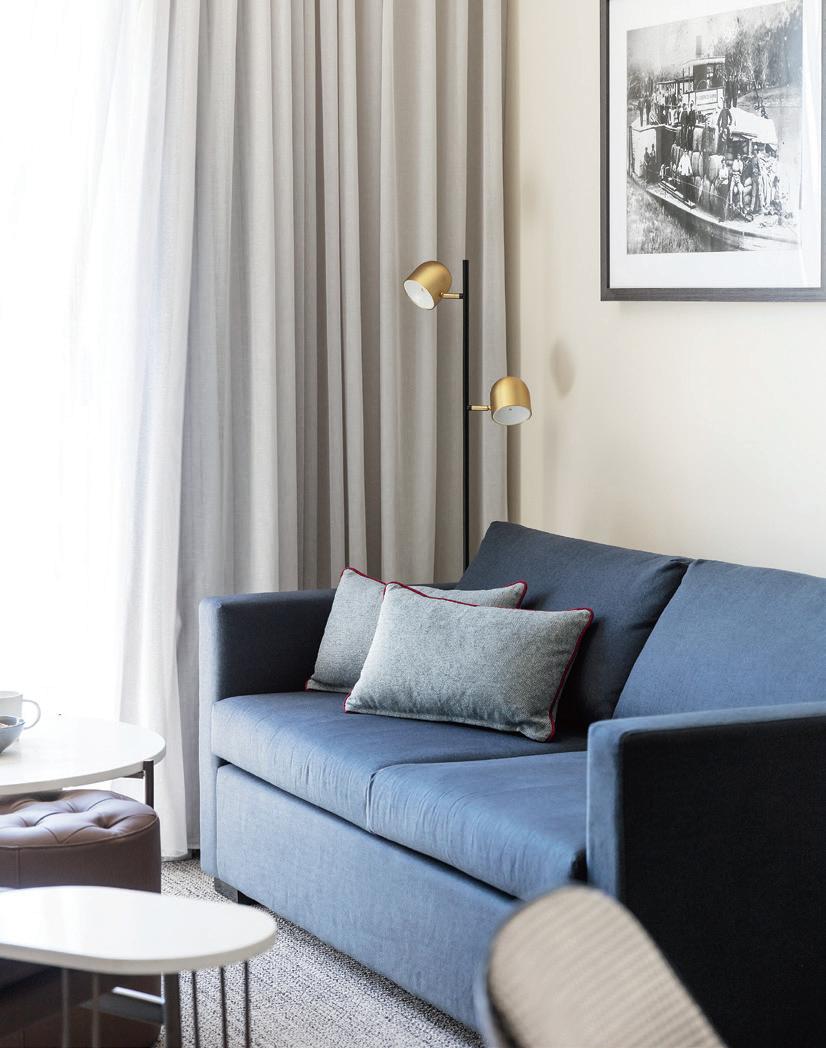
Just eight kilometres north of Sydney’s CBD, you’ll find the bustling hub of St Leonards. Here, locals get their morning caffeine fix at Flying Egg, picnic at Newlands Park and dine at Josh Niland’s renowned seafood eatery Petermen, where the Murray cod chorizo is a must-try. Check into Quest St Leonards for one of its 79 spacious serviced apartments (each fitted with a kitchen or kitchenette) and you’ll be within walking distance of a pacy reformer Pilates class at Pilates360 and St Leonards train station, where it’s only five stops to the city.
With street performers, bars, cafés and markets, the compact city of Fremantle, less than a 30-minute drive from Perth, is always evolving. Like all good cities, it’s best navigated on two wheels – hire a bike from Port City Cycles and pedal around town, stopping for coffee at Third Wheel then a lunch of satay and gado gado at Suku. Pull up outside Vin Populi come sundown for fine local wines and handmade pasta, such as gnocchetti with sardines and lobster tagliolini. Stay over at Quest Fremantle, which has a choice of studio, one-, and two-bedroom apartments and offers easy access to the ferry for quick trips to glorious Rottnest Island.
Echuca, Vic
With the meandering Murray as its companion, Echuca, located at the junction of the Murray and Campaspe rivers, is relaxed to the max. You’ll feel it when gliding downriver on a historic paddlesteamer (the PS Adelaide was built in 1866), stand-up paddleboarding to birdsong in the early morning or walking the Banyula Forest Loop riverside hiking trail. Lodge at Quest Echuca on the banks of the Murray in the centre of town and hit The American Hotel for hot chicken wings before joining the Port After Dark Tour for a peek into the secrets and legends of Echuca’s past.
The north-east Melbourne suburb of Ivanhoe is home to some of the city’s finest cafés and patisseries. Off Heidelberg Road, the area’s main arterial, is favourite DOCASA and newcomer All Are Welcome, where you can pick up a “loaded” focaccia of sage-marinated mushroom and leek with goat’s cheese. In the heart of the neighbourhood is Quest Ivanhoe which has studios as well as one- and two-bedroom options that come with separate lounge and dining areas. From there you have choices. A massage or revitalising facial at Relinque Urban Retreat & Spa? A glass of sangiovese at Vinoshis? Or perhaps a scoop of pistachio ice-cream at Boca Gelato?
Tamworth, NSW
It’s the country-music capital of Australia, with the Big Golden Guitar and the Australian Country Music Hall of Fame to prove it. But Tamworth – a five-hour drive northwest of Sydney – is about more than just music, offering cool cafés, art galleries and stylish boutiques. Stop at Gusto for espresso and ricotta pancakes before browsing local fashion at The Other Shop. Stay the night at Quest Tamworth, where all 40 rooms come with private balconies, and make use of the EV charging stations. Don’t miss the Weswal Gallery to see local art and artisan ceramics.
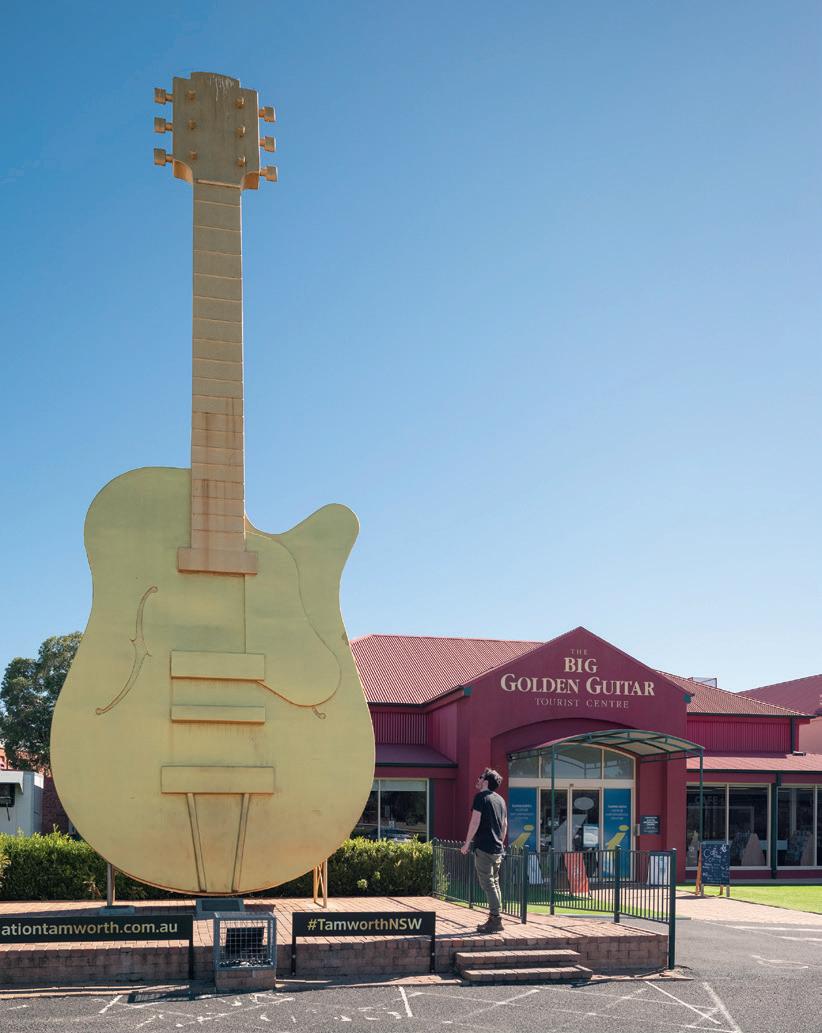
The Gong is a mix of barefoot bohemian, urban cool and university town youthfulness. Here, where the mountains meet the sea, adventurous types can have their pick of activities – cross the swaying suspension bridge amid tree ferns on the Minnamurra Rainforest Walk, learn to surf at Corrimal Beach or launch yourself off Bald Hill on a hang-gliding expedition with Hangglide Oz. Closer to ground, Quest Wollongong offers one- and two-bedroom apartments, just blocks away from City Beach and the CBD’s bar scene. Make stops at The Prince for a Sloe Mover (sloe gin, citrus and chilli) and Mia Mia for Pet Nat accompanied by Sicilian olives and anchovies, en route to His Boy Elroy, where the burgers are American but the vibe is pure Wollongong cool.
Lakes, Vic
The north-western Melbourne suburb of Taylors Lakes is built on the foundations of ancient volcanic ground. “At the Organ Pipes National Park you can park on top of the old volcano and walk into the river valley to see the basalt columns that resemble organ pipes,” says Gazal Kamali, business owner of nearby Quest Watergardens , the newest Quest Apartment Hotel in the country, which is fitted with a gym and guest laundry. After hiking the trails, refuel at Cedar Bakery in Watergardens. “They make their breads and pastries in-house and serve amazing coffees,” says Kamali. “It’s the place to go for a sit-down Lebanese meal.”
Newcastle, NSW
Sure, there’s jumping into the sandstone Bogey Hole, surfing at Nobbys Beach and swimming laps in Soldiers Baths but beyond Newcastle’s aquatic delights is a storied city. Take The Lock-Up, a former gaol turned arts space, or Darby Street, where hundreds of indie boutiques can be found, including Blackbird Corner, where you can pick up only-in-Newy gift cards, accessories and screen-printed T-shirts. A sunset stroll along the Honeysuckle foreshore should end in a sundowner at Honeysuckle Social (try a No Filter – a spritz of aperol, bitter lemon, sparkling wine and mint). Quest Newcastle is just a few steps from the waterfront and has 65 modern apartments, including one-, two- and three-bedroom options and a local restaurant chargeback service at some venues.
 Presented by Quest Apartment Hotels
Presented by Quest Apartment Hotels
The preened Gold Coast suburb of Robina offers boutique shopping and superb restaurants. Don’t miss Motto Motto for modern Japanese and create-your-own ramen or Zone Bowling (the kids will love it). Pack your clubs and book a cart for 18 holes at the Greg Normandesigned Glades Golf Club. Make the most of the Gold Coast at Quest Robina with its heated outdoor pool and pet-friendly rooms. From here it’s a 10-minute drive to the golden sands of Miami Beach and 30 minutes to all the major theme parks.
Albion is the hidden gem of Brisbane’s inner north-east. It’s a five-minute drive from the centre of James Street – arguably the city’s best retail precinct, with boutiques like Dion Lee and Aje – and footsteps from the Lores Bunney Riverwalk. “It’s a gorgeous run along the river and is a local favourite,” says Roberto Salicio, business owner of Quest Breakfast Creek , a contemporary, petfriendly apartment hotel close to the CBD. For those who are thirsty, Granddad Jack’s Distillery is the place. “It’s a gin distillery but the cocktails are the highlight for me.” Salicio recommends trying the Not So Tom Collins (Penny Vodka, butterfly pea syrup, lemon juice and blossom tonic).
Alice Springs is the gateway to the centre of Australia. Here, it’s easy to skip over the red sands to Uluru for a day trip by car or guided tour. Our pick? An early-morning hot air ballooning experience with Outback Ballooning. With Quest Alice Springs as your base (it features 68 spacious serviced apartments and an on-site pool to cool off), you’re a stroll away from popular eateries like Page 27 for a quinoa and cranberry salad or Uncles Tavern for a genuine pub experience. Stop in to the Araluen Arts Centre to check out local artists from the region.
The town of Griffith, located a six-hour drive west of Sydney, is filled with orchards like Catania Fruit Salad Farm, where you can tour the farm and pick fresh fruit as you go. There are also wineries, such as De Bortoli and Calabria Family Wines (try the Elisabetta Durif from the latter). Quest Griffith houses 68 serviced apartments just off the city’s main strip and is close to charming eateries that showcase the area’s proud Italian heritage. These include La Scala, with its thin-crust prosciutto and rocket pizza, or Zecca, where the modern, seasonally focused menu changes daily.
Situated between Richmond and the CBD, the heritage exterior of Quest East Melbourne is matched by 39 spacious Art Deco-style serviced apartments in one of Melbourne’s oldest precincts. Pick up brunch from Bedggood & Co to enjoy in the heritage-listed 26-hectare Fitzroy Gardens, which contains The Scarred Tree, used by the First Nations people in the area for the creation of canoes, shelters, shields and more. Catch a game of AFL at the neighbouring MCG or book a table at Di Stasio Citta for an old-school Italian lunch of risotto Milanese and saltimbocca alla Romana (veal, prosciutto, sage and white wine).
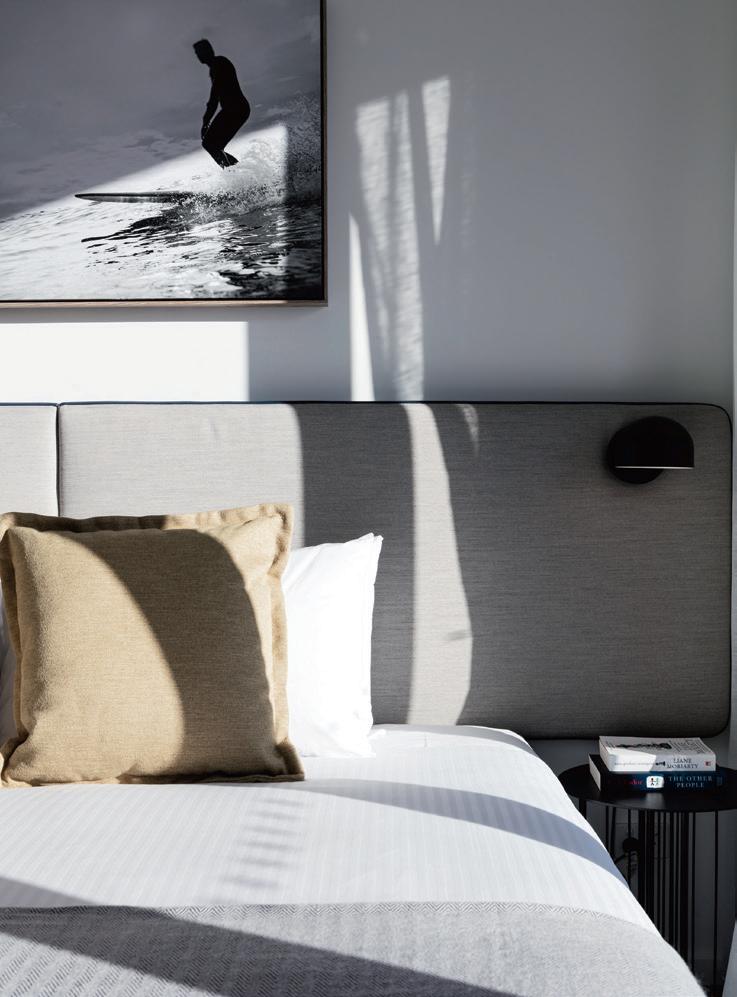
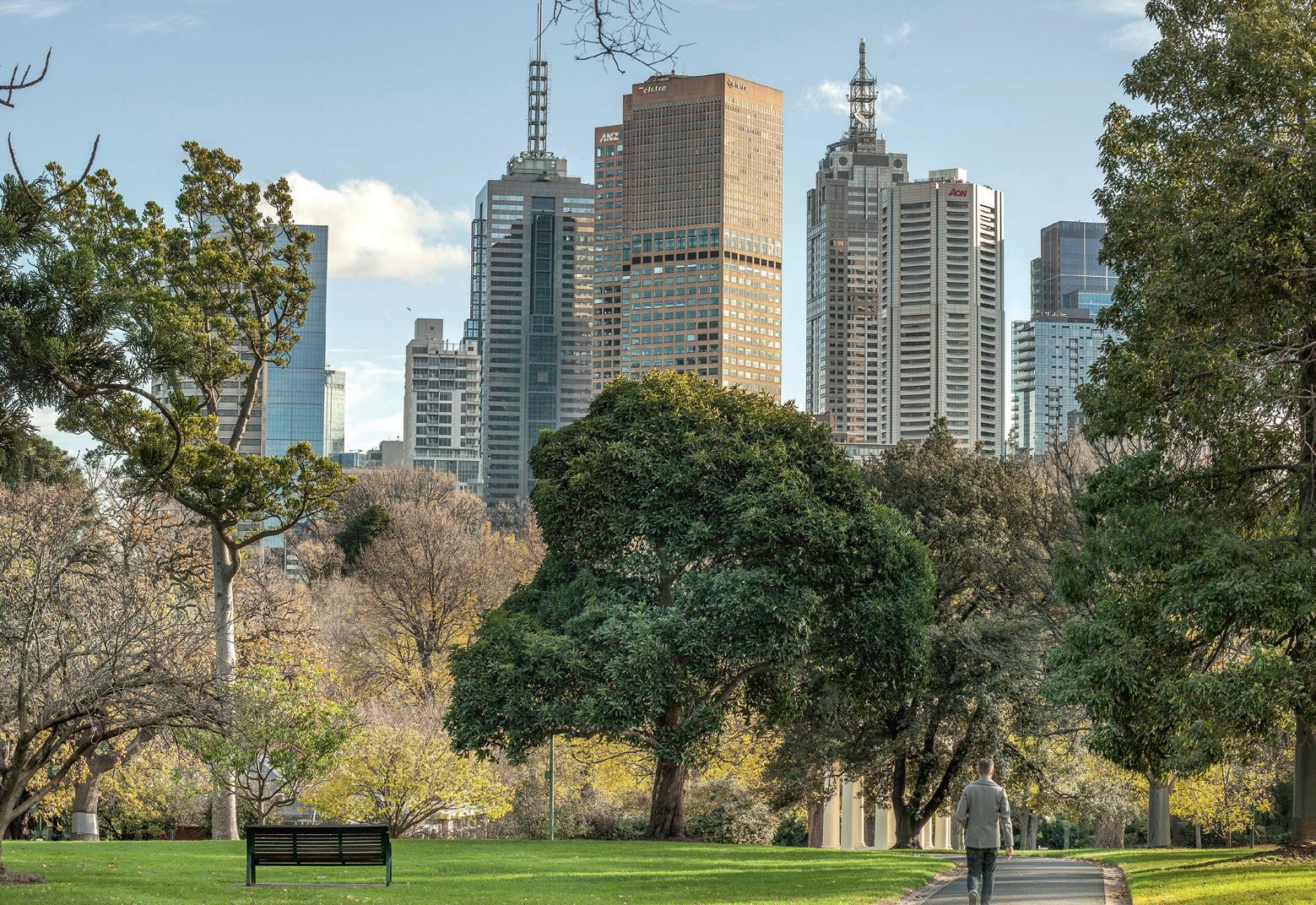
Wodonga, Vic
You can’t talk about Wodonga without mentioning Albury – the two cities are just a 10-minute drive apart. The New South Wales and Victorian border towns are split by the Murray River, which is best explored on the water, naturally. Murray River Canoe Hire features trips that run from 90 minutes to four days (if you have the stamina). Rest up at Quest Wodonga – in your choice of one-, two- and three-bedroom apartments – and refuel at the Goods Shed, a traditional Aussie pub with cold beer, chicken schnitzel and country music. Grab a latte from Blind Freddy’s Café and take the 10-minute drive to the Murray Art Museum Albury for a dose of contemporary art with plenty of workshops for the kids.
Portland, Vic
Portland is Victoria’s oldest European settlement and is located on the far south-west coast of the state, just over four hours drive from Melbourne. Its jewel is the sea and visitors flock here for whale watching and catching a glimpse of the fur seal colony from Cape Bridgewater.
To kickstart the day, pick up coffee from The Lido Larder en route to the vintage Foreshore Portland Cable Tram – the depot is a 15-minute walk from Quest Portland , which offers 49 spacious apartment-style rooms and on-site swimming pool. Then hop on at will, visiting the Powerhouse Museum, the Portland Maritime Discovery Centre and the Portland Botanic Garden. Grab dinner from the upmarket Clock by the Bay, serving dishes such as lamb rump with butternut squash and chimichurri.
The City of Churches has had a culinary rebranding. Stay in Adelaide CBD’s stylish Quest on Franklin – offering serviced apartments as big as three bedrooms, valet dry-cleaning and room service powered by Menulog – and use it as your base to explore the city. Want to eat out? Grab a stool at Nearly Bar for a selection of South Australianfocused wines paired with a snackdriven menu (get the white beans in olive oil with burnt lemon and spice) or try Umaii – a Japanese izakaya plating bluefin tuna nori bites. Walk it off by finding the 110 public murals organised by Fringe Street Art Explosion and the city.
Perth’s CBD, the city’s airport and the wineries of the Swan Valley are all an easy commute from Ascot. But you’ll want to explore the immediate area, too. “Ascot Racecourse is a popular destination for many of our guests,” says Quest Perth Ascot ’s business owner Arshan Bhathena. “The excitement of race day creates a buzz unlike any other.” The hotel is located a short walk from the track, with each Studio Executive Apartment featuring a balcony. Across a narrow bridge from Ascot, Kuljak Island is an oasis that features grassy parklands and a walking track.


Ballarat, Vic
Never mind Ballarat’s gilded Gold Rush past; the city is booming and the restaurant scene is white-hot. Don’t miss the playful pink walls of Ragazzone and the selection of delicious fare served on pink crockery. Head up to Ellington’s Wine Bar & Rooftop to sample regional wines and shoestring fries with truffle or go down a laneway to Hop Temple for craft beer or Renard (for a Martini brought to your velvet banquette). Quest Ballarat Station was once the Loreto College and is now a charming building with 53 stylish rooms and an on-site gym.
LGBTQIA+ FRIENDLY
QUEST RECOGNISE THE IMPORTANCE OF DOING BETTER AND ARE ACTIVELY PURSUING INITIATIVES THAT FOSTER POSITIVE CHANGE.



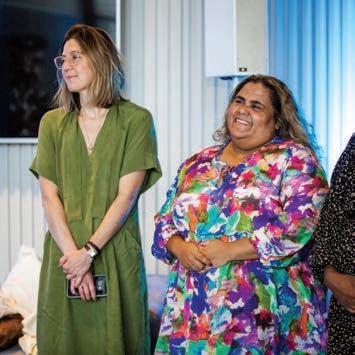
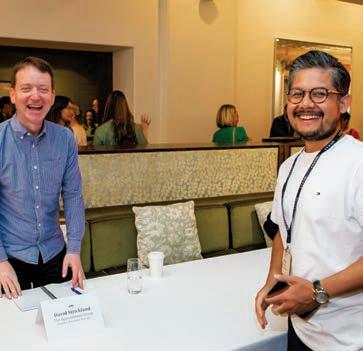
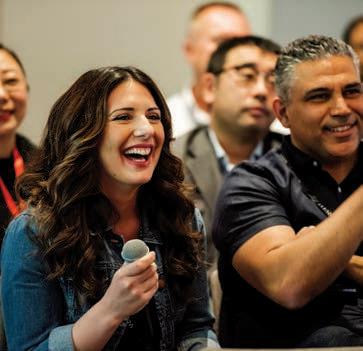
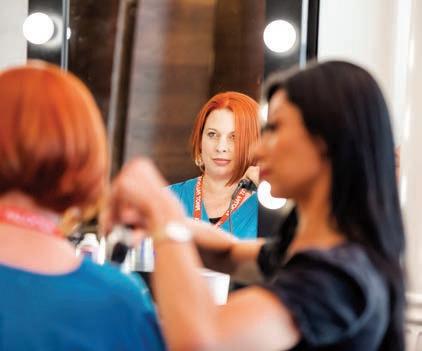



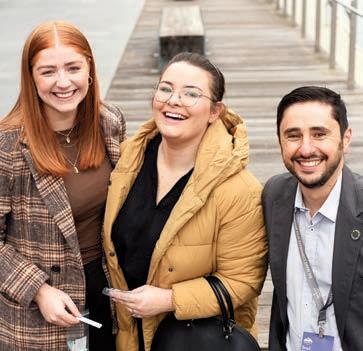
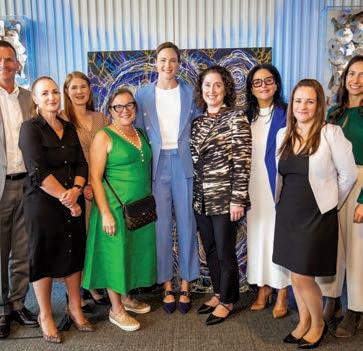


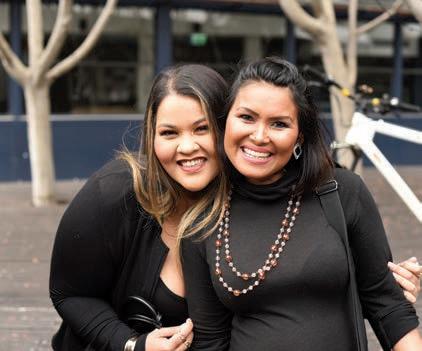

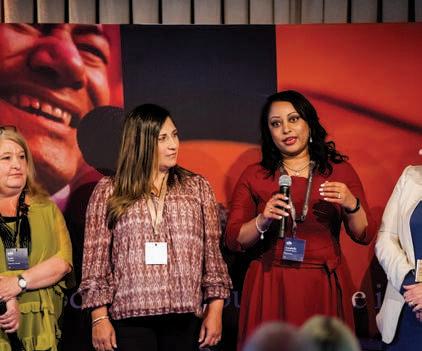
Discover Quest’s 35 moments of doing better.
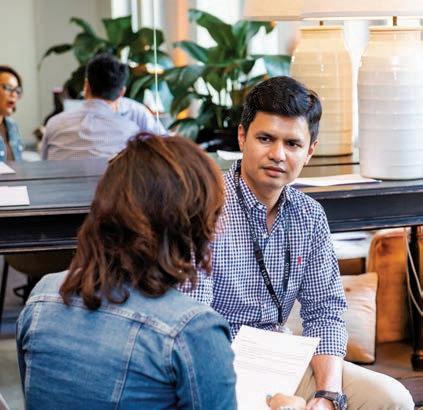
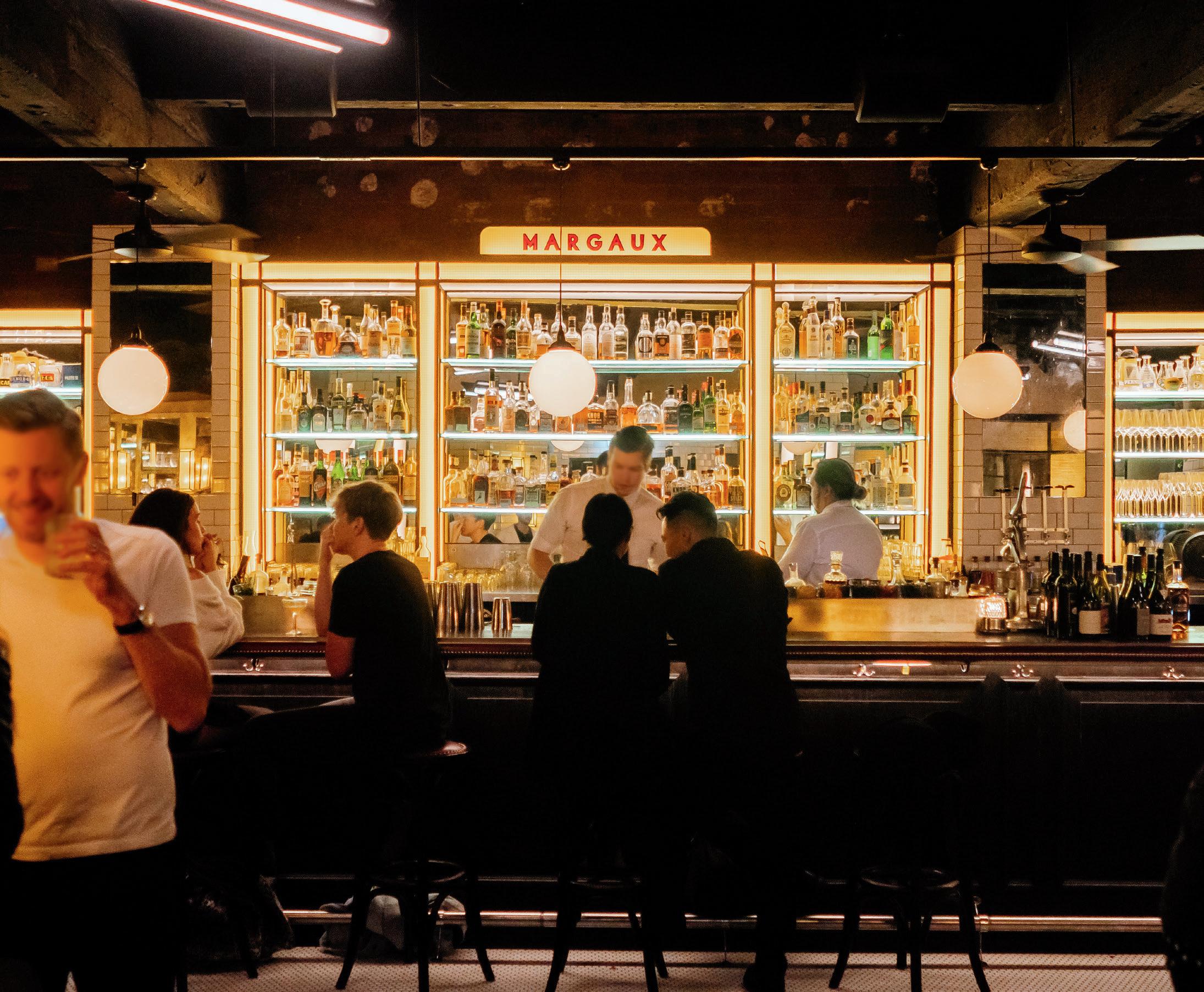
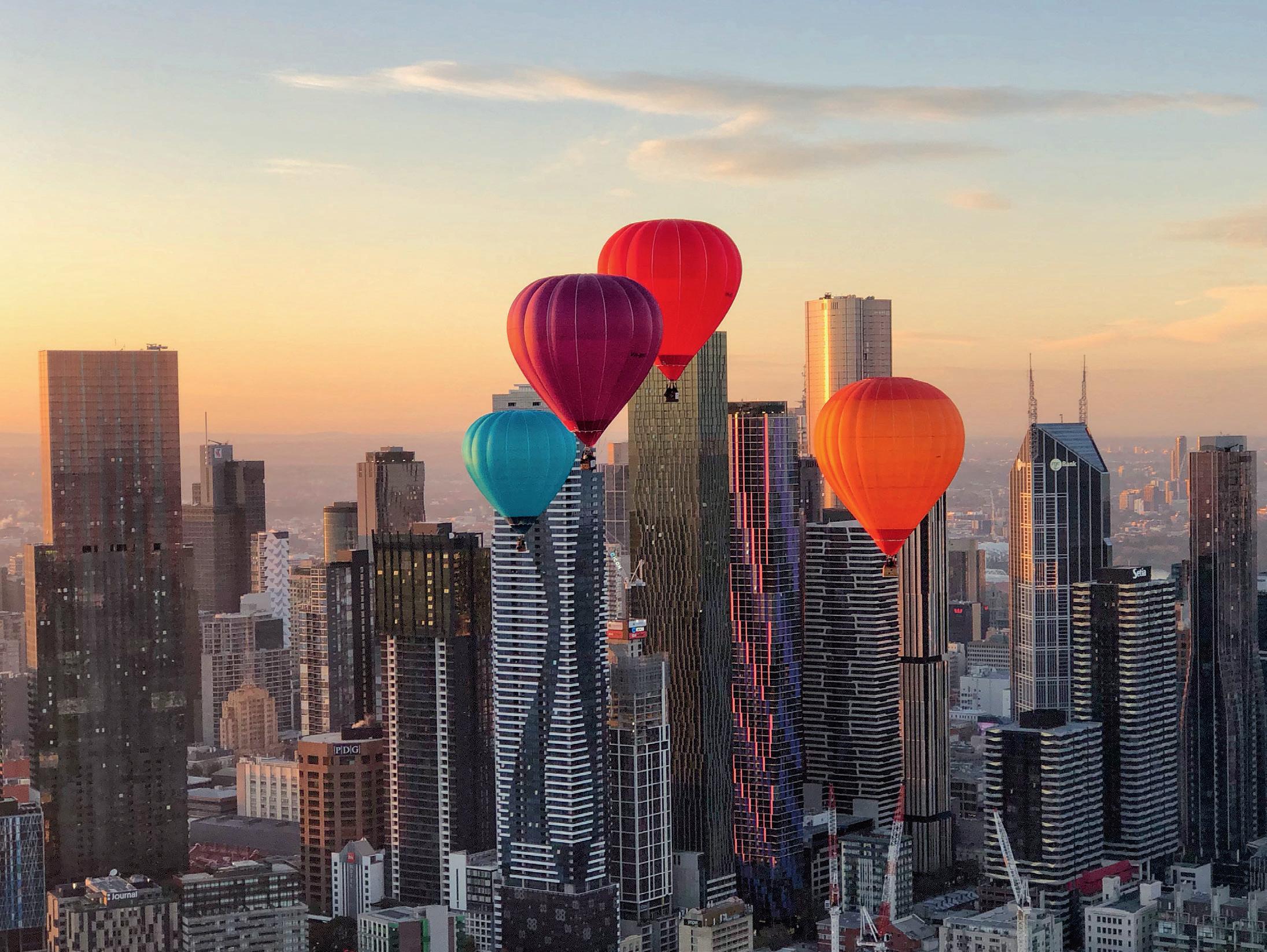
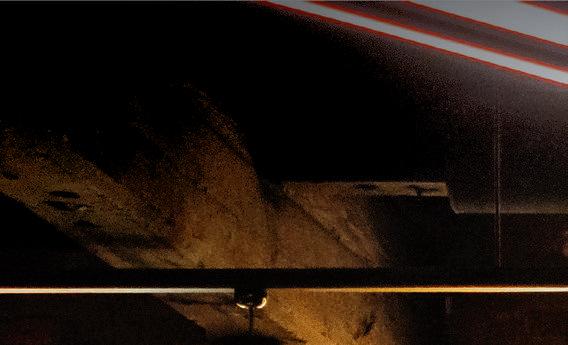


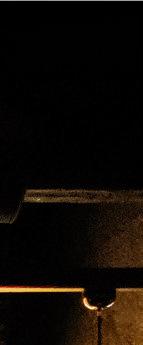


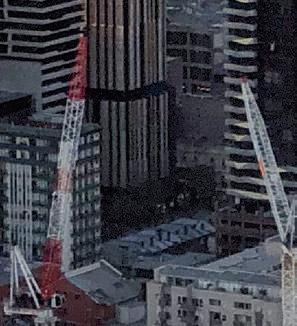




















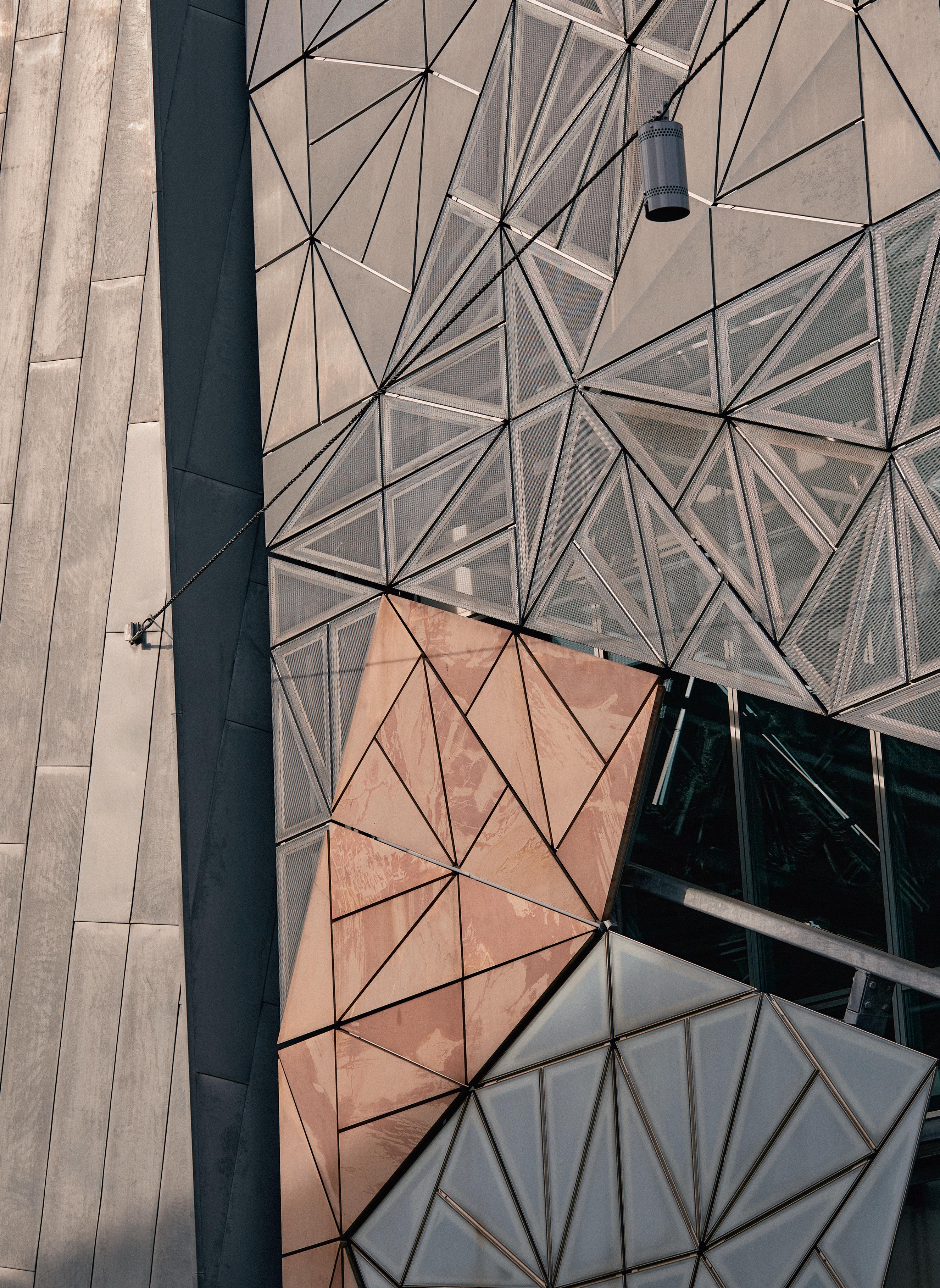



Victoria is very much the sum of its parts, with old and new jostling for attention and a surprisingly diverse range of experiences across our smallest mainland state. Start in Melbourne, its vibrant cultural capital, then explore one or all of the flourishing regions in easy striking distance (and ideal for indulgent winter escapes).
By Kendall Hill Photography by Emily WeavingWhere to stay? Check into the brandnew Ritz-Carlton, Melbourne (hotel.qantas. com.au/theritzcarltonmelbourne), Australia’s tallest hotel.
Smith Street, a two-kilometre-long retail strip straddling the city-edge suburbs of Collingwood and Fitzroy, was named the world’s coolest street by Time Out in 2021. If anything, its groove has only deepened since then.
There’s a democratic mix of thrift and vintage shops along with noteworthy eating addresses here. Order the raspberry soufflé at Scott Pickett’s Gallic-leaning Smith St Bistrot (smithstbistrot.com.au), try modern Middle Eastern at the northern outpost of Shane Delia’s Maha (mahanorth. com.au) or tuck into a crusty banh mi at N. Lee Bakery Cafe (nleebakery.com.au).
THE CENTRE OF THINGS
Melbourne’s city centre has bounced back from pandemic lockdowns with renewed vigour. All that pent-up energy has seen bars, restaurants and hotels open with unprecedented frequency in recent months, the newcomers sitting comfortably alongside firm favourites.
The city’s laneways harbour its tastiest secrets. Mod-Filipino sensation Serai (seraikitchen.com.au) marries Australian ingredients (such as kangaroo and kingfish) with Malay-Chinese-Spanish recipes and a woodfired grill on Racing Club Lane.
Recent arrival Alt (altpastabar.com.au) is an artisan pasta bar of uncommon tastes – try the abalone pappardelle with seaweed – while Myrtle Wine Bar (myrtlewinebar. com.au) champions native ingredients and sustainable wine producers.
For all-out glamour there’s Gimlet at Cavendish House (gimlet.melbourne), Andrew McConnell’s exalted bar and dining room. But the CBD is also the spot to sample a broad range of cuisines, from Penang street food at Lulu’s Char Koay Teow (@luluckt) to peppery beef-filled samsa buns at Dolan Uyghur Cuisine (dolanuyghurcuisine.com.au).
The cooler months are all about culture and cocooning. This year, the Winter Masterpieces series at the National Gallery of Victoria (until October; ngv.vic.gov.au) showcases the works of French postImpressionist painter Pierre Bonnard. Smaller galleries, such as Neon Parc (neonparc.com.au), lurk throughout the city, best discovered on specialist art tours such as Walk-to-Art (walktoart.com.au).
Hollywood-born hotel chain The Standard (standardhotels.com) is set to debut a 127-room property just off Smith Street later this year. Until then, bunk down at Veriu (hotel.qantas.com.au/veriu collingwood), a 95-room mod-industrial hotel with a heated pool and dress-circle access to Melbourne’s coolest quarter.
Right next door is Collingwood Yards (collingwoodyards.org), an old tech college reborn as a cutting-edge, not-for-profit contemporary arts precinct. It’s home to artists’ studios, migrant and First Nations social enterprises and Hope Street Radio (hopestradio.community), where young gun Ellie Bouhadana serves sophisticated soul food and natural wines alongside a livestreamed radio station.
Cool bars are very Collingwood. Indulge at Above Board (aboveboardbar.com), a hidden 16-seater serving deliciously original cocktails such as the HSL – a bold blend of blackberry liqueur, absinthe and Amaro Montenegro. Or drop by craft brewery and terrific Thai diner Molly Rose (mollyrosebrewing.com).

In recent years, Lygon Street, Melbourne’s Little Italy, became a cliché of itself with streetside touts and rip-off restaurants. But new blood and fresh ideas have transformed the inner-city suburb into a much more diverse – and diverting – destination.
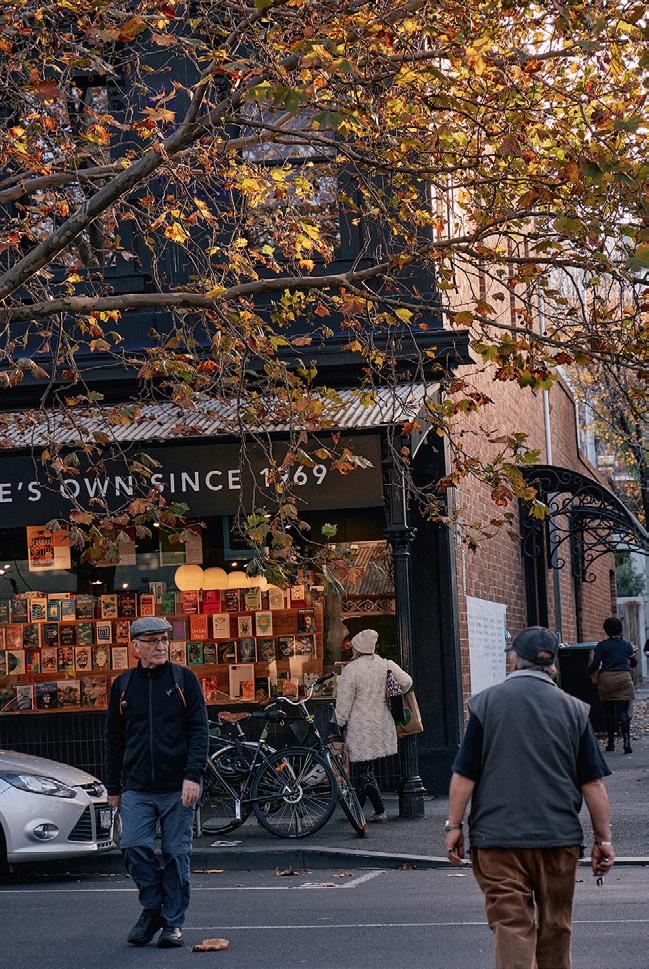
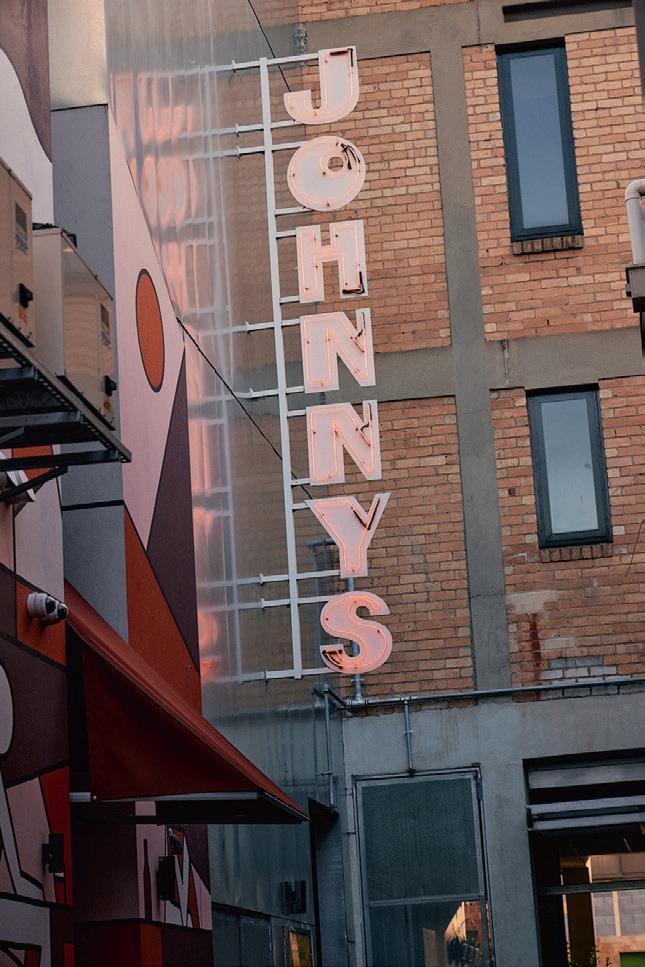

Stalwart King and Godfree (kingandgodfree. com) is a gleaming corner store that’s equal parts deli, grocer, bottle shop and classic osteria. Its rooftop bar, Johnny’s Green Room , serves sharp cocktails, hearty burgers and fried chicken from Thursday to Sunday from noon.
Landmark addresses, such as the circa-1952 University Cafe (universitycafe. com.au), cater to the faithful with pasta and pizza, while more recent arrival Lagoon Dining (lagoondining.com) brings mod-Chinese flavours (salted fish fried rice, soy-braised spatchcock) and new-wave wines. Favourite local customs include
browsing the paperbacks at Readings bookstore (Melbourne is a UNESCO City of Literature, after all; readings.com.au), indulging in coffee and pastries at Brunetti (brunetticlassico.com.au) and hitting the historic The Lincoln (hotellincoln.com.au) for progressive pub food (steak tartare, shiitake mushroom croquettes) and a winning wine list.
Carlton’s rich urban fabric extends to landmarks such as the World Heritage-listed Royal Exhibition Building and the modernist Melbourne Museum (museumsvictoria.com.au), both set in the picnic-friendly Carlton Gardens. You can also explore the historic University of Melbourne campus and its idiosyncratic Ian Potter Museum of Art (unimelb.edu.au).
Spring-fed by more than 100 natural aquifers, Victoria’s Central Highlands area is the undisputed spa capital of Australia. The effervescent villages of Daylesford and Hepburn Springs, 90 minutes’ drive north-west of Melbourne, guarantee good living with a rich gastronomy scene and wellness any way you like it.
The Edwardian-era Hepburn Bathhouse & Spa (hepburnbathhouse.com) remains the region’s most popular place to soak but the myriad relaxation options available include Shizuka Ryokan (shizuka.com.au) for more intimate rituals and minimalist accommodation, and Samadhi Retreat (samadhiretreat.com.au) for multi-night “transformational” stays.
Once the stress levels have been soothed, hit the culinary circuit at the likes of Bar Merenda (barmerenda.com.au) on central Howe Street, where Andy Ainsworth and Clare O’Flynn tap the thriving local farming community and nearby winemakers to create a truly unique regional enoteca. A short walk away, Beppe (beppe.com.au) channels the area’s Swiss-Italian heritage in its handmade pastas and pizzas.
Local winemaker Owen Latta and his wife, Jen, operate Winespeake Cellar + Deli (winespeake.com.au), an outstanding regional bottle shop, while Dave Gill and Jessica Holmes pour their craft beers alongside whiskies, cocktails and cracking snacks at the Daylesford Brewing Co (daylesfordbrewingco.com.au).
Check in at 43-room Hotel Bellinzona (hotel.qantas.com.au/hotelbellinzona), which was opened by early settlers in 1903 and now caters to weekenders and conference travellers, with two onsite restaurants and views across Wombat State Forest. For special occasions, you can’t beat Lake House (hotel.qantas.com.au/ lakehousedaylesford) for its nine-room spa, 34 premium lakeside studios and suites, and sublime restaurant that’s been a decades-long labour of love for chef Alla Wolf-Tasker.
Melbourne’s favourite coastal playground is a fusion of fashionable beach resorts and charming backwaters, with refined restaurants, farmyards and vineyards galore.
After the hour-long drive from the city, reward yourself with a long lunch at Tedesca Osteria (tedesca.com.au), Brigitte Hafner’s generous agriturismo in central Red Hill (tip: book well ahead for tables and lodgings). Or visit the outstanding cellar door restaurant Ten Minutes by Tractor (tenminutesbytractor.com.au), to indulge in a five-course dégustation menu beside the chardonnay vines.
With more than 60 cellar doors across the peninsula, picking highlights is fraught. But the likes of Polperro (polperrowines. com.au), Montalto (montalto.com.au) and Pt. Leo Estate (ptleoestate.com.au) combine bold architecture with views, great food and wine – the latter two have extensive sculpture parks. Polperro also
operates lively restaurant and bar Many Little (manylittle.com.au), which serves lavish Sri Lankan thalis and cocktails.
Carve out some time to drop into Dromana Habitat (dromanahabitat.com.au) – a collection of more than a dozen makers, food producers, distillers and brewers – to pick up gifts for the gang back home. Then bathe in the peninsula’s restorative geothermal waters at luxe newcomer Alba (albathermalsprings. com.au), with its spring-fed bushland baths, 22-room spa and Thyme restaurant catered by acclaimed Melbourne chef Karen Martini.
And for the best beds? It’s hard to go past Jackalope (hotel.qantas.com.au/ jackalope), the avant-garde art hotel and working winery with 44 designer rooms and excellent eating at vineyard bistro Rare Hare. Located at the posher tip of the peninsula, the 108-room InterContinental Sorrento Mornington Peninsula (hotel. qantas.com.au/intercontinentalsorrento) has various drinking and dining options, plus a pool deck above Port Phillip Bay.
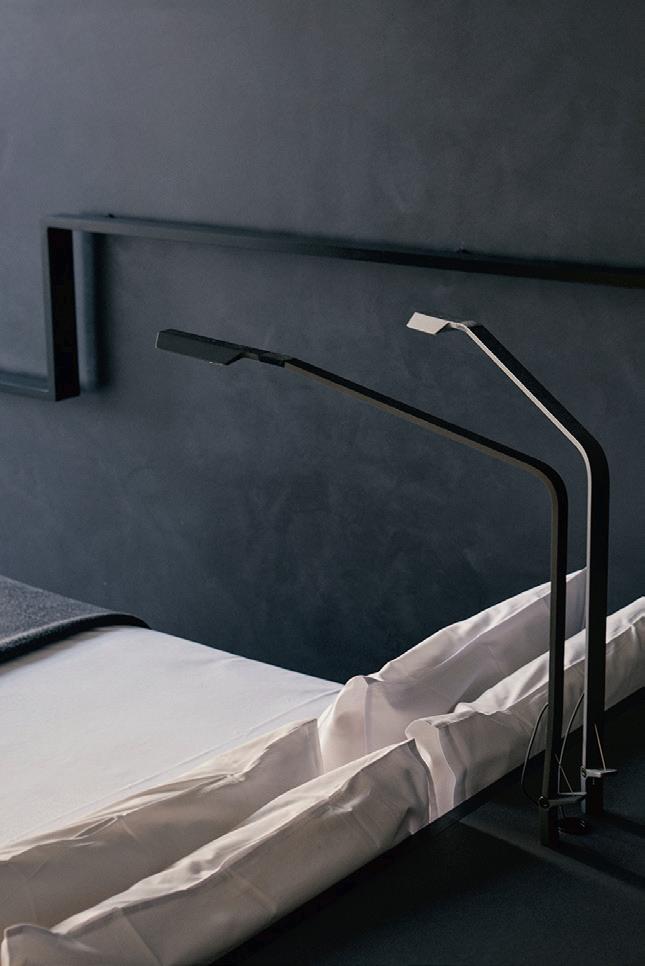
In a state blessed with exceptional country escapes, the Yarra Valley is the most accessible from Melbourne (less than an hour’s drive from the CBD) and one of its most popular – as much for the neat European landscapes as for the fine wines and food.
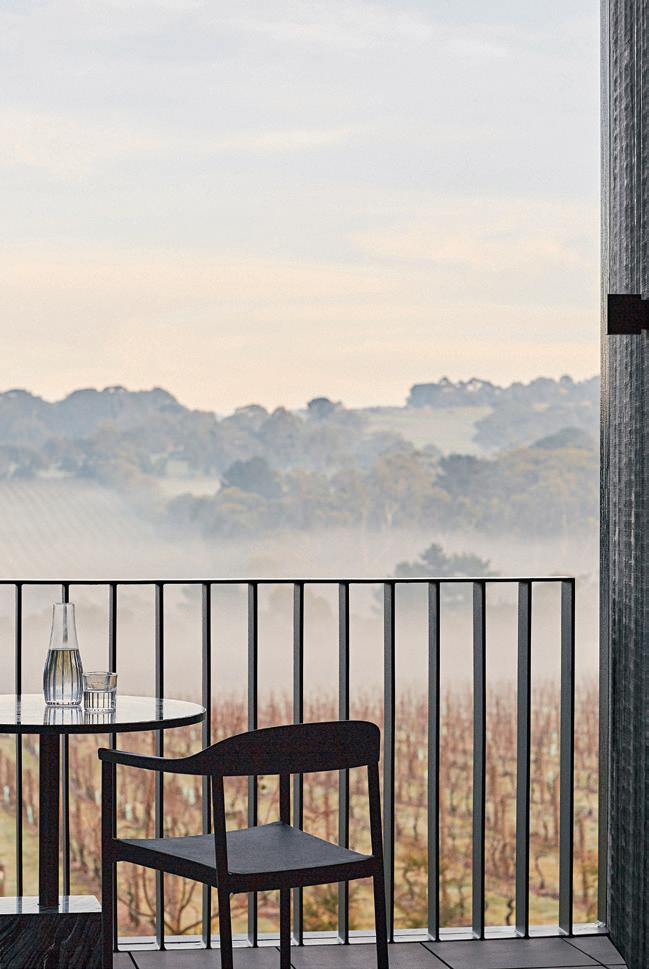
Get your bearings in the rural village of Healesville, its main street equipped with all the essentials – the sophisticated Cheesemonger Sophie (@cheesemonger sophie); the fancy Barrique Wine Store (barrique.com.au); and the fragrant spice outlet, Gewúrzhaus (gewurzhaus.com.au). There’s also gin and honey to taste at The Laneway (thelanewayhealesville.com.au), which multitasks as a café with North and South American street food.
The nearby industrial estate is full of surprises, from the almost theme-park
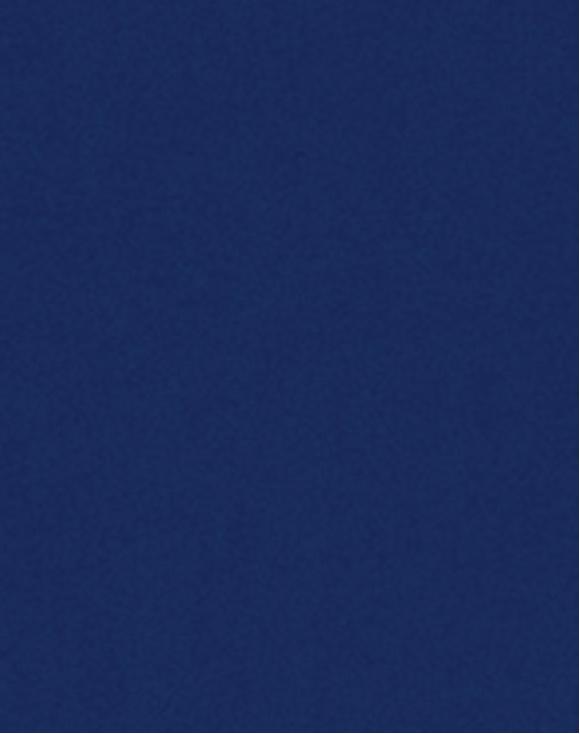


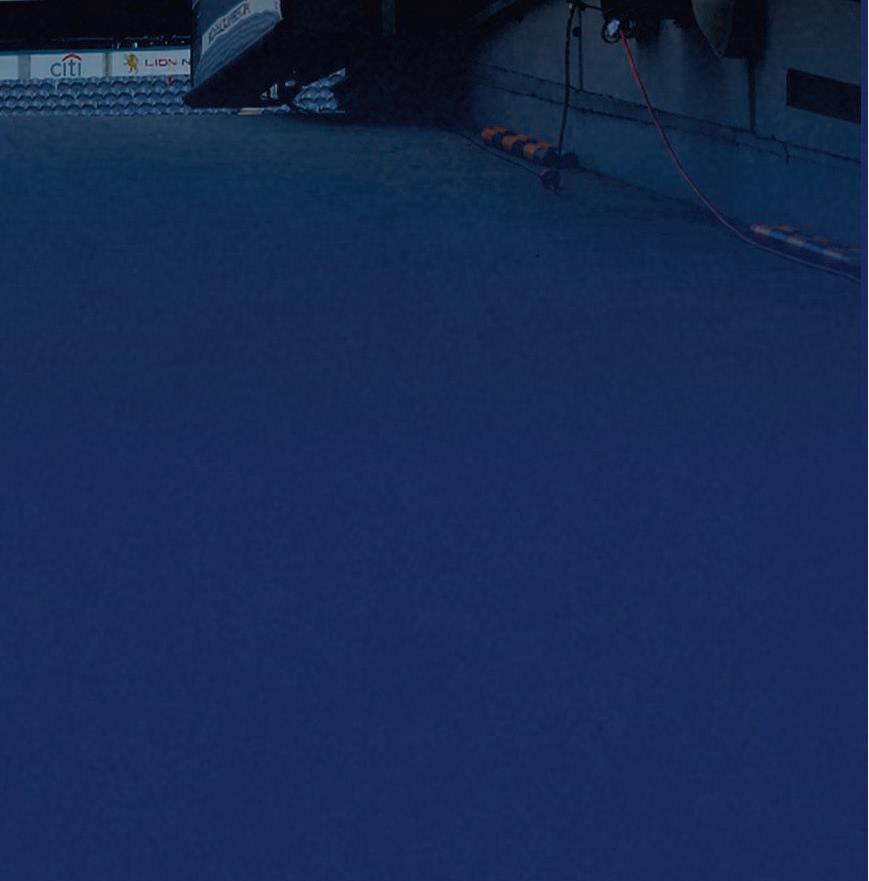

Immerse yourself in an MCG tour, before dining in the Committee Room by Grossi. There is no better way to experience the MCG than with a guided tour, followed by lunch in Melbourne's best kept secret.
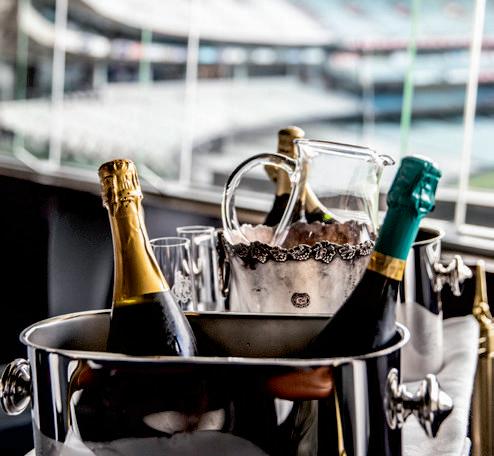

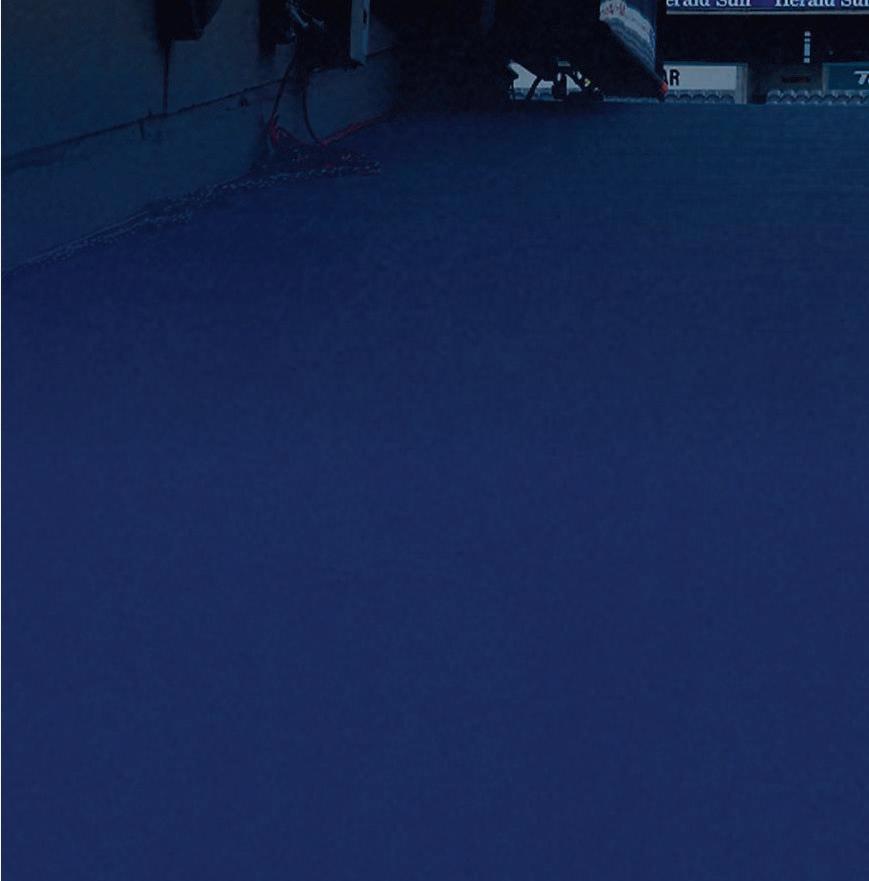


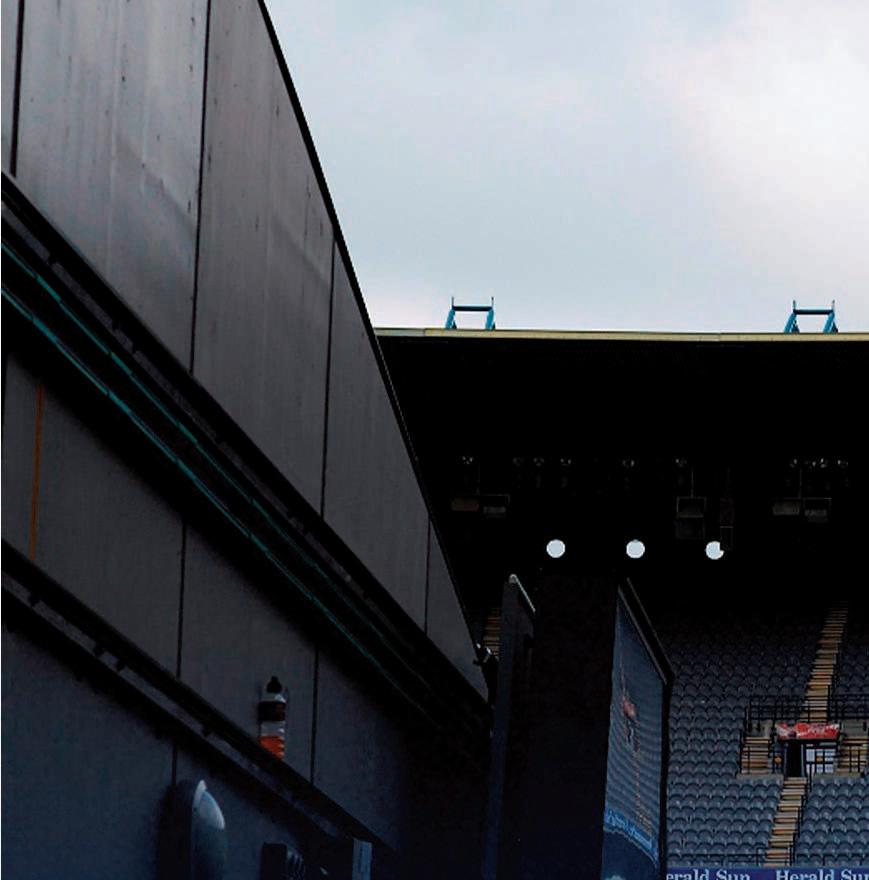

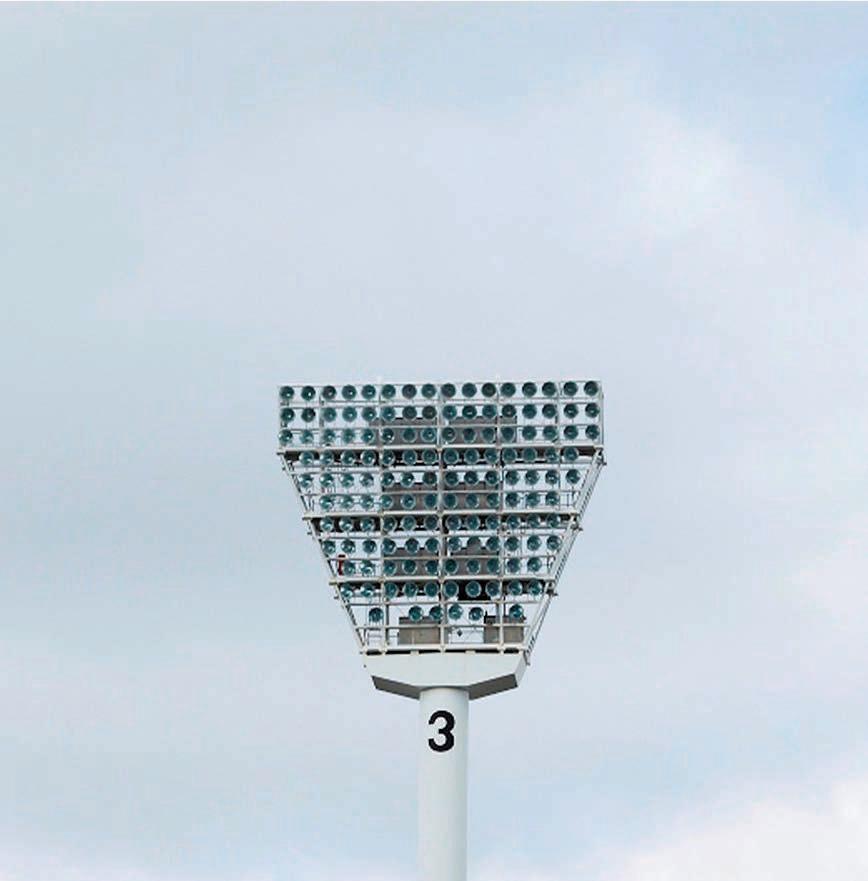

The Committee Room by Grossi is a celebration of traditional Italian family recipes, a tribute to the European lunch clubs of old. Open for lunch, Tuesday - Friday from 12pm.
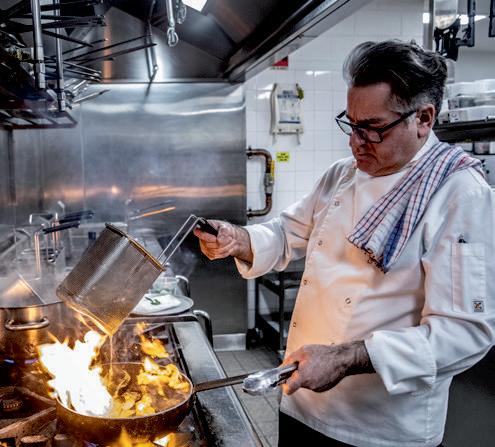
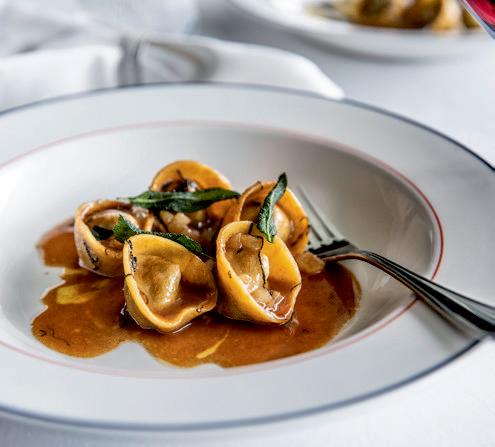
extravagance of the new HQ for Four Pillars Gin (fourpillarsgin.com) to hip winemakers such as Jayden Ong (jaydenong.com) and Payten and Jones (pj.wine), where “edgy” wines are served in a tasting room-cumstreet art gallery. Other tenants of note include craft producer Watts River Brewing (wattsriverbrewing.com.au) and No.7 (no7healesville.com), a working winery and restaurant serving lo-fi wines from near and far alongside Mexican food. Of the valley’s many top wineries, tick off Tarrawarra Estate (tarrawarra.com.au),
with its parkland setting, private gallery of modern art, distinctive wines and hatted restaurant. Then head to picturesque Oakridge (oakridgewines.com.au), where chef Aaron Brodie serves hyperlocal plates matched with an impressive library of estate wines. Both wineries excel at the Yarra Valley’s signature grape styles, chardonnay and pinot noir (at Oakridge, the single-block wines under the 862 label are the finest drops).
Bed down at Kangaroo Ridge Retreat (kangarooridge.com.au), a collection of
cosy, adults-only cabins with mountain and valley views. Or take a pause at Meletos (meletos.com), a Tuscan-style farmhouse with 23 bedrooms and onsite restaurant.
Beyond the Gold Rush grandeur of 19th-century streetscapes you’ll find a thriving cultural life, recognised in 2019 when it was inducted into UNESCO’s global network of creative cities.

There’s plenty of character and quirk lurking in Victoria’s third-largest city, which hosts an annual celebration in autumn of beards and moustaches, along with a communal bike ride in tweed ( ballaratheritagefestival.com.au).
Key cultural events include the biennial Ballarat International Foto Biennale (from 26 August; ballaratfoto.org), plus festivals that celebrate beer (February) and begonias (March). The Art Gallery of Ballarat (artgalleryofballarat.com.au), the oldest and largest regional gallery in Australia, is well worth a visit for its progressive presentations of Australian collections.
Check into the new Hotel Vera (hotelballarat.com.au), a reimagined boom-time mansion on central Sturt Street. Art and design inform its seven colourful suites, while 14-seat restaurant Underbar by Derek Boath, alumnus of New York’s Per Sé, features dégustations that fuse local produce with Japanese culinary techniques (don’t miss the spanner crab chawanmushi).
In the former home of Underbar, on Doveton Street, Pencilmark Wine Room (pencilmark.com.au) is an elegant affair of grazing platters, preserved fish and more than 100 hand-picked drops. Mr Jones (mrjonesdining.com.au) caters to curious palates with its Thai-influenced, mod-Asian menu (the naem mok –fermented pork sausage – is next-level).
If you’re arriving by train (90 minutes from Melbourne), stop at The Goods Shed (thegoodsshedballarat.com.au), an 1863
One of Melbourne’s most exciting shopping precincts offers local designers and one-of-a-kind boutiques.

Bustling with shoppers and lined with heritage buildings, High Street Armadale has emerged as a fashion paradise. Located in Melbourne’s south-east, the elegant boulevard is lined with established Australian boutiques such as Scanlan Theodore, Dion Lee and Zimmermann But alongside the big-name flagships, cool cafés and restaurants are stores you won’t find anywhere else.
Pop into Matilda Life and discover its Australian-made merino wool coats and accessories, while over at Banded Together, which was started by Dana Burrows with one perfect white shirt, you’ll find buttery leather trench coats, cashmere sweaters and silk tank tops.
At the gallery-like L’Eclisse , handmade Italian heels are displayed as if they’re art. The Curated focuses on high-quality
outerwear and layering pieces, including an oh-so-soft camel cashmere coat. Once a roving pop-up boutique, Désordre stocks a considered selection of wow-factor pieces from labels such as Khaite, Christopher Esber and Nagnata. Commonry specialises in carefully fitted items in luxe fabrics spanning sizes 8 to 22 and at Deadly Ponies , you’re likely to find your next favourite bag.
Eye St . – a High Street exclusive – is the place for edgy designer eyewear from brands including Linda Farrow, Garret Light and Balmain Paris, while hip homegrown jewellery label Kitte stocks sparkling pieces designed to wear forever.
With 81 fashion stores to visit along High Street, you won’t be short on options. Wear comfy shoes – and make a pit stop at Lune Croissanterie for one of their famous pastries.
Where is High Street Armadale? Armadale is roughly 10 kilometres south-east of Melbourne’s CBD.
How to get there Hop off Tram Route 6 at Stop 43 and you’ll be in the midst of High Street’s high-end stores. Armadale is also serviced by the Frankston train line.
Plan your trip to High Street Armadale at highstreetarmadale.com.au
 Presented by High Street Armadale Shopping Precinct
Presented by High Street Armadale Shopping Precinct
bluestone warehouse next door to the station that’s soon to house a gin distillery, dumpling joint and Nolan’s, an all-day diner.
Two of Victoria’s more underrated – and oldest – wine regions, the Goulburn Valley and Rutherglen, are just a few hours from the city. Make the pilgrimage and be rewarded with fine dining, historic villages and alpine landscapes.
Start your exploration in the gourmet hub of Milawa, home to circa-1889 Brown Brothers (brownbrothers.com.au). Sample some of its 60 varietals but be sure to dine there, too: chef Bodee Price’s multi-course feasts are dictated by what’s fresh daily from the garden and might include cucumber with cod roe or lamb backstrap with carrot-top pistou.
Also in Milawa: Italian-style wines and a striking cellar door inspired by the region’s early tobacco kilns at Sam Miranda (sammiranda.com.au); delicious tastings at Milawa Cheese Co. (milawacheese.com.au); and boutique stays at the freshly madeover, 40-room Lancemore Milawa (hotel.qantas. com.au/lancemoremilawa), with views to the Buffalo Range, cosy communal spaces plus the onsite bar and restaurant, Merlot.
This 243-kilometre scenic drive in Victoria’s south-west has become a byword for the wild beauty and freedom of the Australian coastline. But its natural drama is well matched with man-made comforts.

The photogenic Gold Rush-era town of Beechworth, where Ned Kelly was briefly imprisoned, is 25 minutes east of Milawa and worth the drive for the famous Beechworth Bakery (beechworthbakery.com.au), where you’ll have to make a tough call between a pie or breakfast, which is served all day. There’s also great dining at The Ox and Hound (oxandhound.com.au), a city-smart bistro in a heritage shopfront. Then there’s the two-hatted Provenance Restaurant (theprovenance.com.au), where Michael Ryan brings his twin passions – Japan and the local region – to bear on 18-dish set menus of unexpected pleasures, such as clam dashi or grilled beef with smoked miso butter.
In the underrated and increasingly experimental wine region of Rutherglen, you’ll find signature muscat and durif alongside emerging European varietals, including marsanne and fiano at Jones Winery (joneswinery.com.au), along with zesty alvarinho at Stanton & Killeen (stantonandkilleen.com.au). The rather grand All Saints Estate (allsaintswine.com. au) is a heritage-listed castle beside the Murray River, where you can savour muscat inside the new cellar door and mod-Oz dishes at Kin restaurant. Sister property Mount Ophir Estate (mountophirestate. com.au), on the fringe of Rutherglen, has a range of accommodation, from a two-person French Provincial tower to the six-bedroom Picker’s Cottage.
Consider starting back-to-front, driving inland to Warrnambool (three hours from Melbourne) then setting a leisurely course for the GOR, which begins 10 minutes east at Allansford. Continue to the Bay of Islands Coastal Park (parks.vic.gov.au) to admire an arresting collection of limestone stacks rising from the Southern Ocean that’s arguably more impressive than the 12 Apostles – and less touristy. Take to the air with 12 Apostles Helicopters (12apostleshelicopters.com.au) for a fresh perspective on the coastline.
Make a brief detour to the dairy town of Timboon, a gourmet pocket boasting artisan treats at Timboon Fine Ice Cream (@timboonicecream), farmhouse cheeses at Schulz Organic Creamery & Café (schulzorganiccreamery.com.au) and award-winning whiskies at the Railway Shed Distillery (timboondistillery.com.au).
For the freshest catch, the Apollo Bay Fishermen’s Co-op (apollobayfishcoop.com. au) is the last of its kind on the south-west coast. Enjoy a seafood platter al fresco at tables overlooking the Southern Ocean.
Keep your eyes peeled for koalas on the winding drive east to the surfing mecca of Lorne, where the 145-year-old Lorne Hotel (merivale.com) has one- and two-bedroom accommodation plus a branch of Sydney dining sensation Totti’s . The seafoodforward menu – smoked albacore tuna, crumbed King George whiting – suits the views across Louttit Bay.
There’s a distinct Greek accent to this section of coast thanks to the Talimanidis family, the pioneers behind Lorne’s Ipsos (ipsosrestaurant.com.au) and, up the road at Airey’s Inlet, the family-friendly A La Grecque (alagrecque.com.au). Both excel at long, lively lunches.





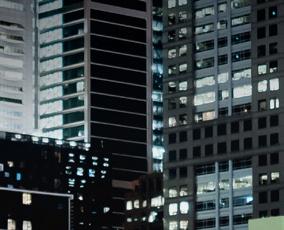
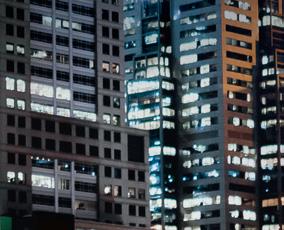
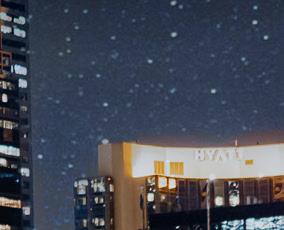
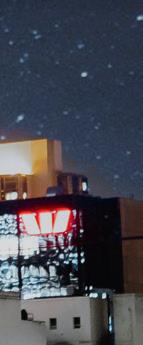


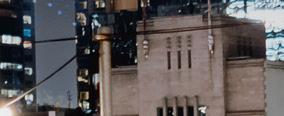

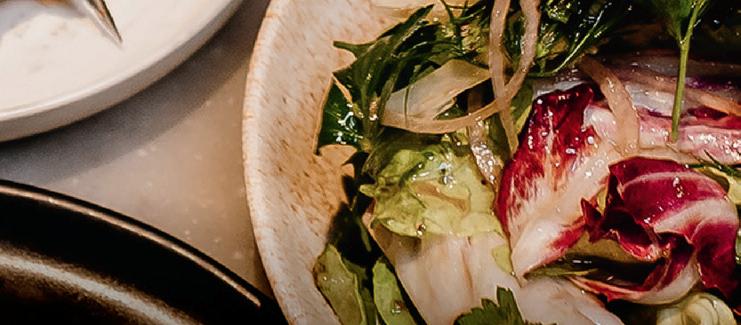

























Melbourne loves stepping out in winter splendour. But as a visit to its vibrant fashion hubs reveals, you don’t have to paint it black (well, unless you want to).
Hankering for an arty fix?

Blockbusters and exclusive exhibitions fill Melbourne’s calendar this winter.
It’s always game on in Melbourne. The sporting capital of Australia likes to make things easy, with its world-renowned sports precinct on the edge of the CBD.

Celebrate female and gender-busting trailblazers across 120 years of film at ACMI’s Goddess: Power, Glamour, Rebellion (right) and enjoy more than 100 works by one of the 20th century’s most celebrated French artists in Pierre Bonnard: Designed by India Mahdavi at the NGV, part of Melbourne Winter Masterpieces 2023. Returning to Melbourne, Broadway hit production Moulin Rouge! The Musical will have you swooning to the tale of courtesan Satine and her ill-fated love triangle. Staged at the grand Regent Theatre, it features a powerhouse collection of pop hits and captivating stage design. Melbourne Museum’s Fantastic Beasts: The Wonder of Nature combines fascinating specimens from London’s Natural History Museum with artefacts of the Harry Potter wizarding world to celebrate the planet’s most extraordinary creatures and their incredible survival abilities.

The national women’s football team, the Matildas, take on France in a friendly match at Docklands’ Marvel Stadium on 14 July, a curtain-raiser to the FIFA Women’s World Cup six days later. Expect more fireworks when Australia’s Wallabies take on New Zealand’s All Blacks in rugby union’s Bledisloe Cup on 29 July at the MCG (left). Catching an AFL game at the ’G is a must – just add a pie – or visit the ground on a non-game day for a behind-the-scenes tour.
The historic heart of the city’s rag trade, Flinders Lane in the CBD (left), remains a fashionforward hotspot starring the quirky sophistication of local labels such as Alpha60 and Tiffany Treloar. High Street Armadale in the city’s south-east has become a style-lover’s paradise, while Chapel Street’s hip Prahran and Windsor end is the go-to for bowerbirds seeking vintage treasures at boutiques including Chapel Street Bazaar and Shag
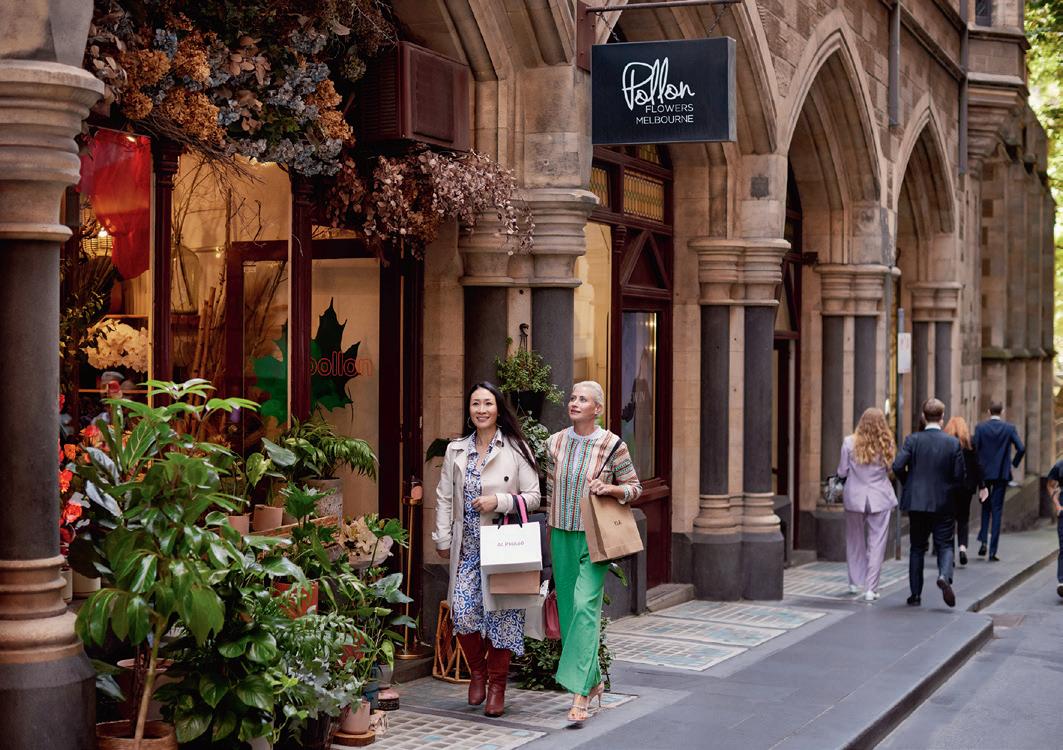
Warm up with the fiery Laotian fare (including a brilliant duck laap) of acclaimed chef Thi Le at Richmond’s Jeow or pay Federation Square favourite Hero a visit for Karen Martini’s soul-affirming Mediterranean food (right), including ricotta gnocchi in tomato sugo with stracciatella. It’s always a good time for champagne and oysters – or the full French prix fixe menu – at Hemingway’s Wine Room , particularly when it’s game day at the MCG, which is just across the road.
Rooftop cocktails. Avant-garde exhibitions. The culture capital is abuzz with new dining and shopping destinations, as well as blockbuster sporting and arts events. Choose your own winter adventure.
At Chapel Street’s South Yarra end, the fashion crowd flock to Beverly, a 24th-floor all-weather rooftop where Cali-chic style meets a menu of lobster cannoli and mac ’n’ cheese croquettes with truffled gouda. The freshly energised precinct also hosts modern Japanese restaurant Yūgen , serving sashimi platters in a moody basement. Harvie in Armadale has turned an Art Deco landmark into a buzzing venue with a clocktower rooftop deck that’s perfect for a sunset spritz.
Theatrics move to the dining room at New Nordic restaurant Freyja , where the Gothic splendour of a heritage Collins Street building is sympatico with artistically presented dishes. At Federation Square, Victoria by Farmer’s Daughters brings modern flair to regional produce (try the potato rösti with cured Bass Strait scallop). For a quick pit stop, arts precinct sandwich shop Olmate’s will fortify you with Italian meatball subs and locally roasted Reverence coffee.
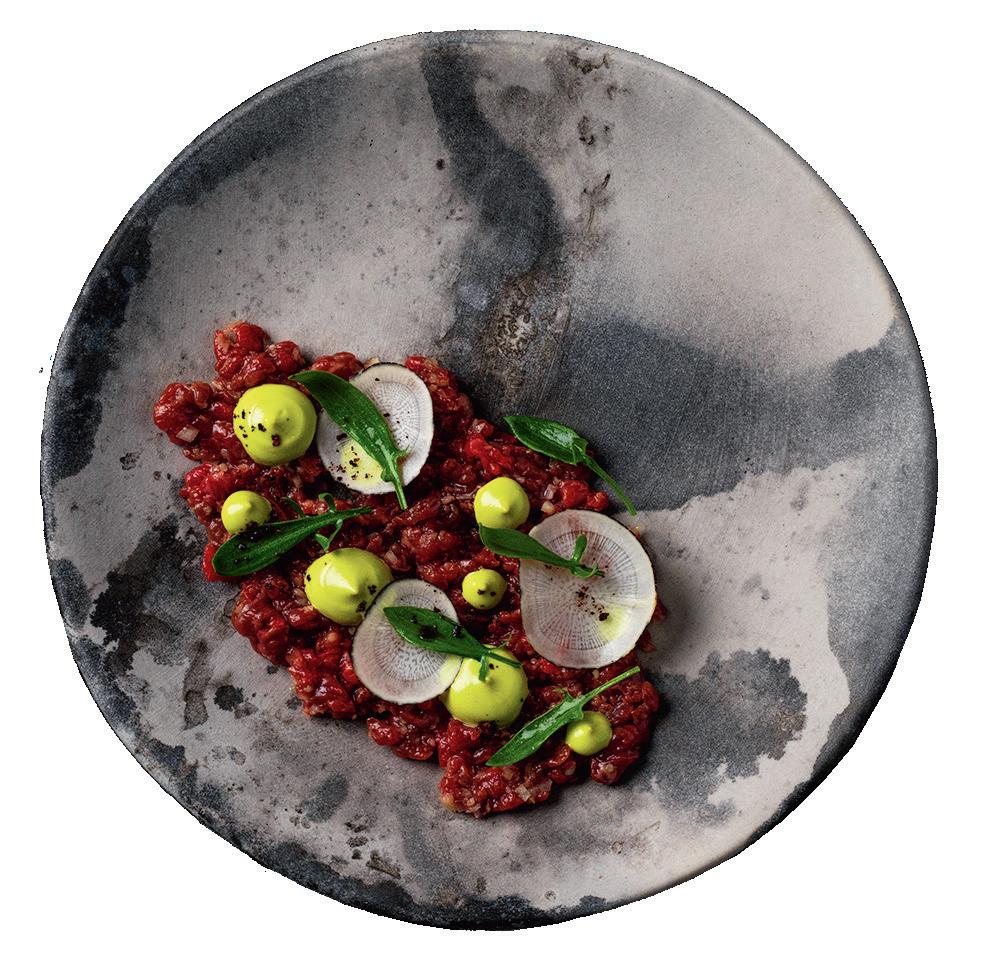
STAY
Midway between South Yarra and the city, the newly refurbished Royce Hotel (above) delivers Roaring Twenties extravagance in the green heart of St Kilda Road. On the cusp of the CBD’s shopping delights, the AC Hotel Melbourne Southbank has elevated views of the city’s southside.

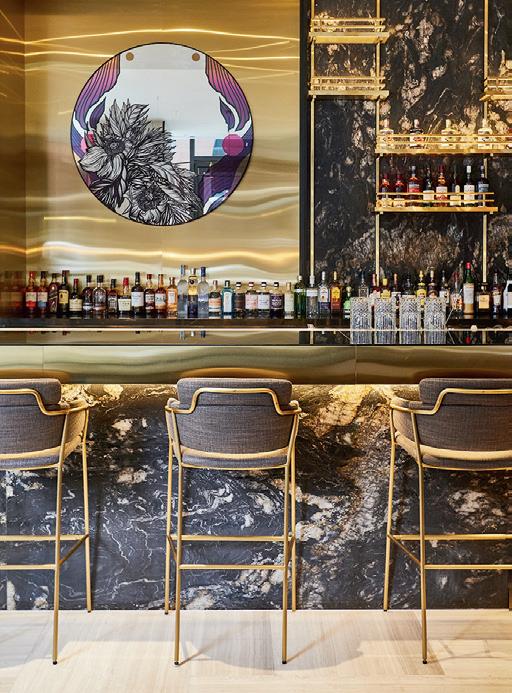

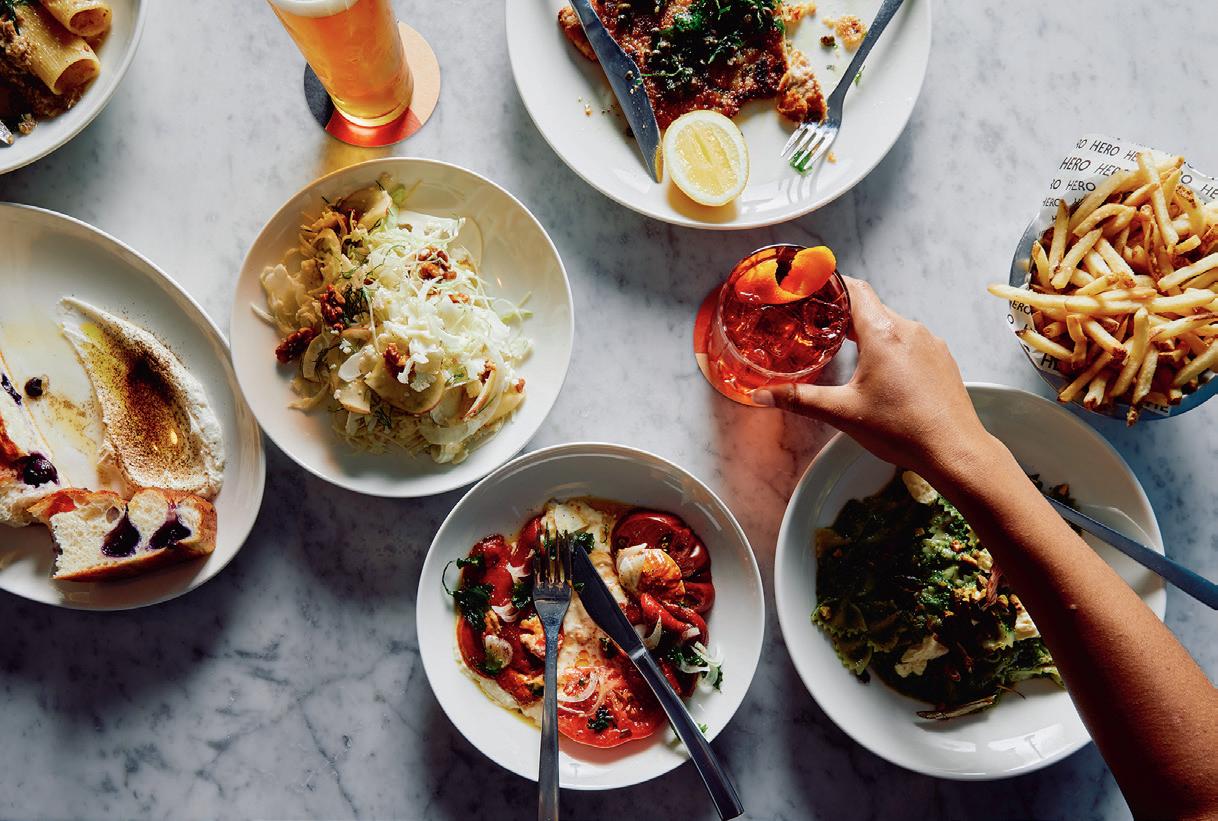
The jewel in the emerging West Side Place precinct at the CBD’s southern end, Dorsett Melbourne (left) debuted its 316 chic Mid-century guest rooms and suites in April this year. Laneway haunt voco Melbourne Central is a vertical oasis with fantastic city views, including from the broad outdoor terrace at its Blacksmith Bar & Grill
STAY
Hip Richmond newcomer

The Motley (right) is just a few minutes drive from the MCG and Rod Laver Arena and sports a great ground-floor restaurant, Ms Parker, where breakfast gets a boost with dukkah-sprinkled nduja baked eggs. Le Méridien sparkles at the top of Bourke Street with its Mid-century design and fabulous rooftop pool.
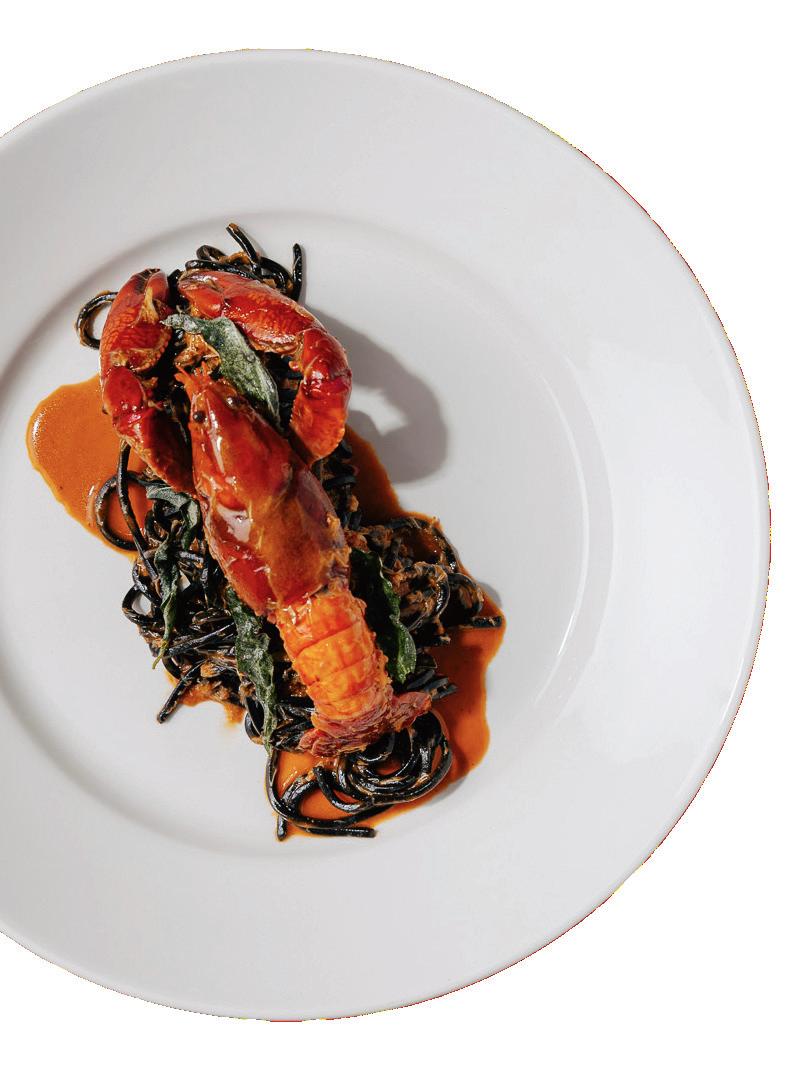








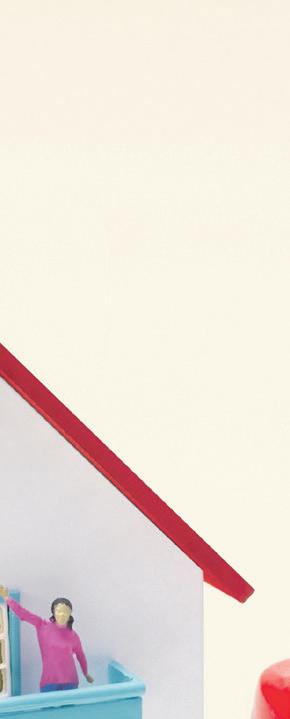



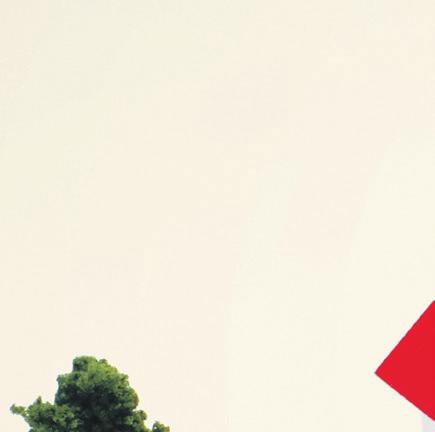
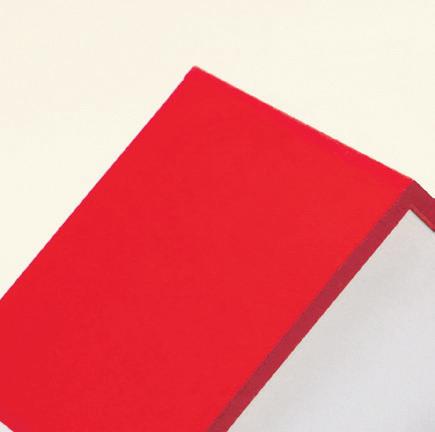

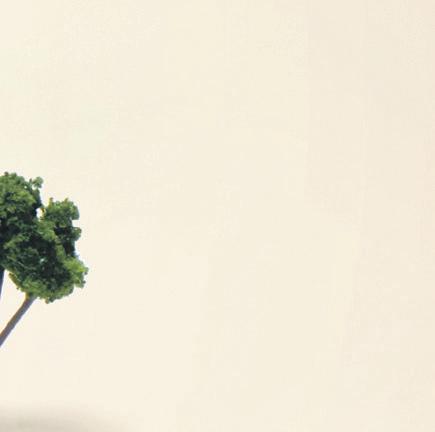
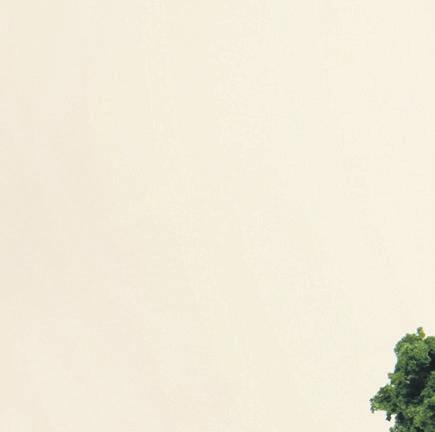

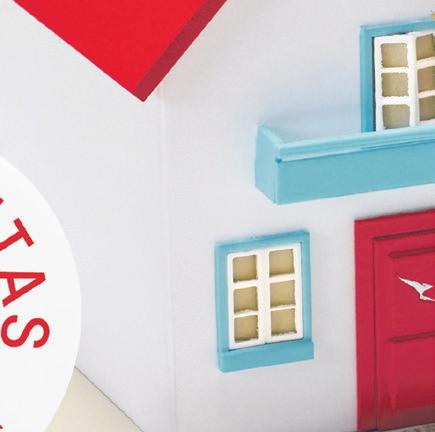
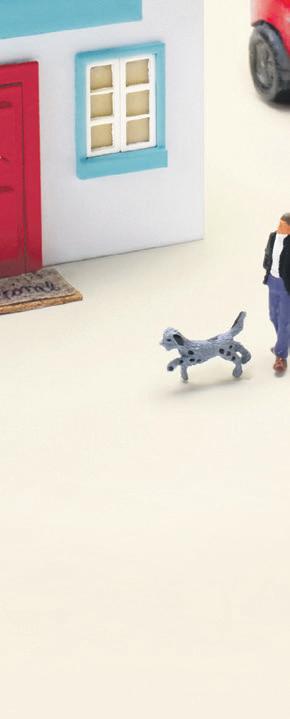


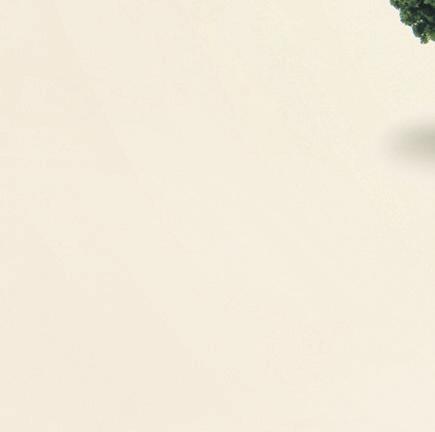
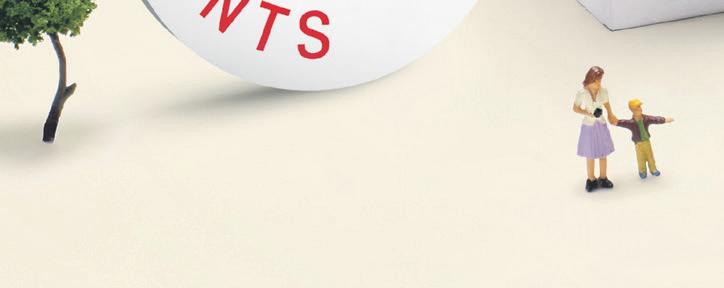















Book in to this high-style hotel on Portugal’s coast
132 How an Italian castle was given a fresh identity
140 The wellies that went from royalty to Glastonbury

There’s a distinctive light in Melides that lures artists to the small village on Portugal’s Alentejo coast, a 90-minute drive south of Lisbon. “The light is particularly good at the end of the day when the sun starts fading,” says French luxury shoe designer Christian Louboutin. “It streams through the bay windows of Vermelho and hits the marble bar inlaid with silver leaf, giving it a beautiful depth.”
Crafted by artisans in Seville, Spain, the bar is among the highlights of Vermelho (hotel.qantas.com.au/vermelhomelides), a 13-room boutique hotel Louboutin opened in Melides in March. “It has not been imagined as a hotel,” he says. “It’s more like an extension of my place, a grand maison d’amis [large guesthouse] to host people from all over the world as though they were my guests.”
A new build on a hill where goats and sheep graze among pine and olive trees, the stay is imbued with a sense of place thanks to the work of craftspeople from the Iberian peninsula. The large wooden doors were carved by Spanish carpenters, while the floors are laid with locally made tiles in emerald-green and Louboutin’s signature red (vermelho means “red” in Portuguese).
“I’m particularly proud of the façade ornaments by Italian sculptor Giuseppe Ducrot and the suites hand-painted by my long-time friend, illustrator Konstantin Kakanias,” says the designer, whose sustainability efforts extend to water reducers in bathrooms and geothermal heating and cooling. The property also provides employment for local villagers and growers, whose produce appears on the plate at Xtian, the on-site Portuguese restaurant.
“We’ve also created a committee with some local people to protect this unique ecosystem,” says Louboutin, who wants to ensure the spirit of Melides is unchanged. “The village remains authentic. Rice fields are still cultivated traditionally, they’ve preserved the lagoon and there’s a bird reserve. Everything is slower and softer here. It might be hard for some of us to accept but if you manage to slow down, it’s absolute bliss.”
A boutique hotel in a fishing village offers a refined taste of local life.


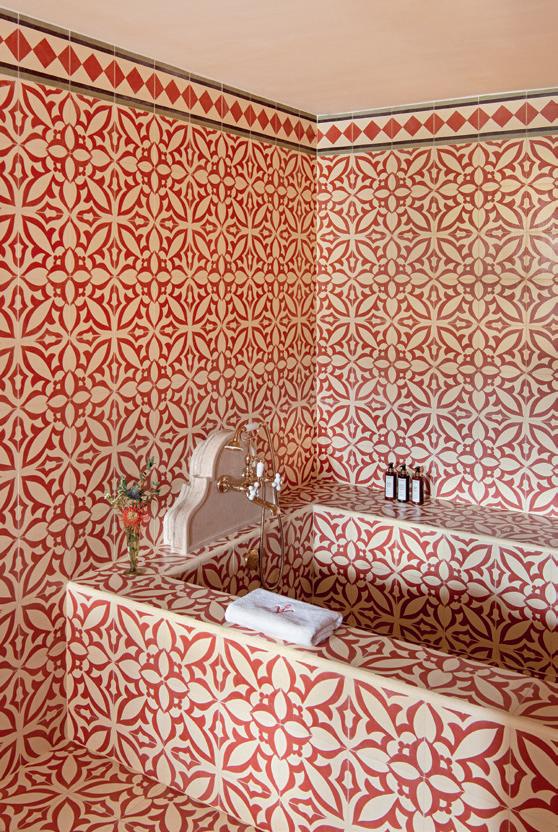

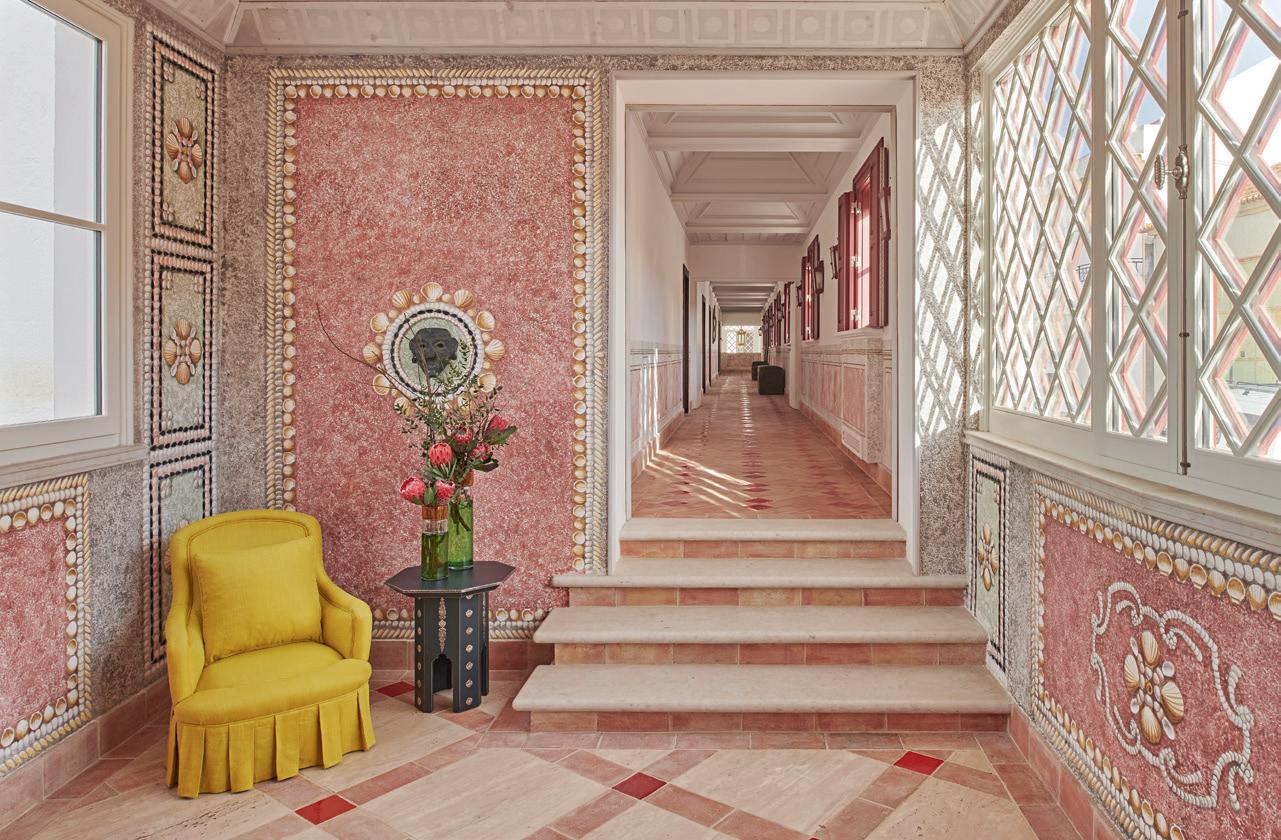
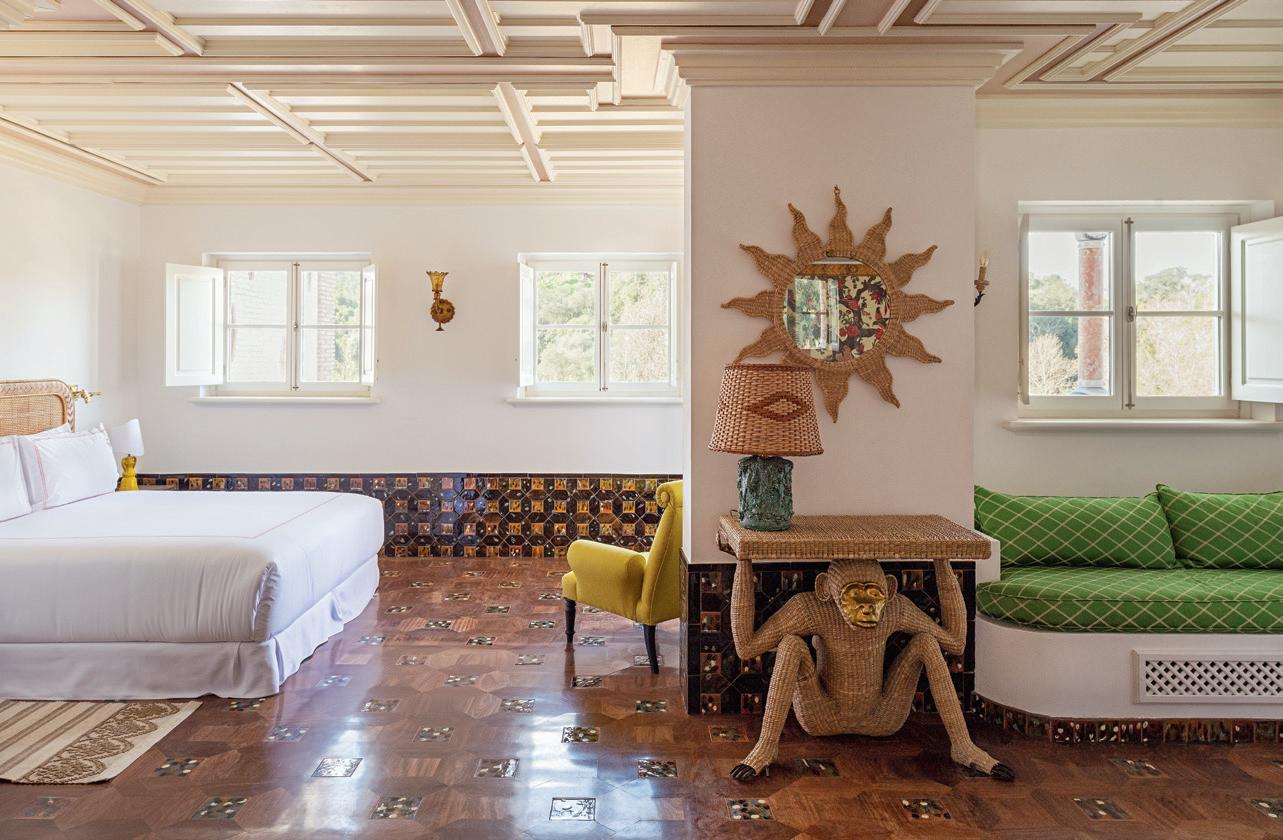

Combining the personal and political through sculptures, this artist explores Country and body image in his work.
Alfred Lowe makes sure his ceramics don’t hold water. It’s a political move, he says, aimed at those who collect Aboriginal art purely to signal that they’re First Nations allies. “Part of me makes them non-functional so they can’t be put in someone’s house, used for flowers and forgotten about. It’s a deliberate piece of art, not a vase.”
The 27-year-old Arrernte artist started working with ceramics two years ago, after burning out post-pandemic as a support officer for the Aboriginal Health Council of South Australia. “A lot of the things that make COVID dangerous in communities are povertybased – overcrowding in houses, no access to water to wash your hands. All of these very simple fixes were being ignored. I ended up taking extended leave from that job and fell into the APY Collective. I never made a conscious decision to become an artist.”
The son of an artist and a musician and raised with 12 older siblings in Alice Springs, Lowe remembers peering over the fence as a five-year-old to watch his neighbour, famed artist Clifford Possum, paint in his backyard. “I was just fascinated by it.” Living opposite the Araluen Arts Centre, Lowe would go in to use the water bubbler and marvel at the paintings of Albert Namatjira.
Now a resident artist at Adelaide’s APY Studio, he draws on the Central Desert landscape for the surface of his works, while the form examines body image. “I’m quite a big person and when you’re big and queer and Aboriginal, you find that you’re often shrinking yourself and dimming your light so I want to create forms that reject that. These forms are big and clunky and misshapen but they own the space they’re in.”
Exhibited at:
APY Gallery, Adelaide, Melbourne and Sydney; Sabbia Gallery, Sydney; Sydney Contemporary 2022; Museum and Art Gallery of the Northern Territory, Darwin
Breakthrough moment: Showing at Sydney Contemporary last year. “It’s this meeting of Australia’s best artists so being able to show in the same space and seeing my work hold up to that standard was unbelievable.”
What the experts say: “Alfred has embedded himself in an Anangu art community where history, tradition, ambition and innovation complement and compete. In his work, it manifests in large-scale organic forms often interrupted by high colour or bold lines to create something contemporary and unique.”
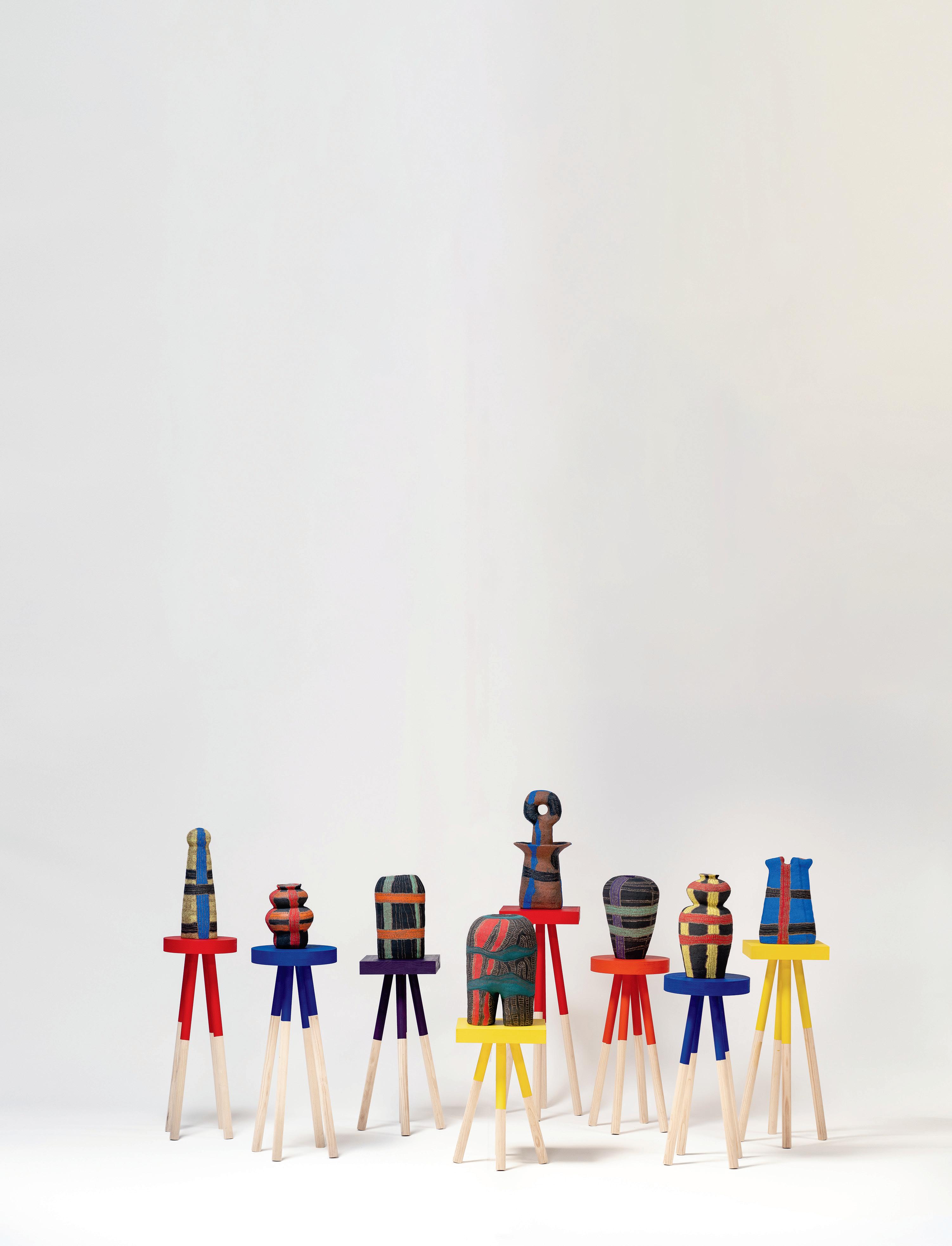 – Bruce Johnson McLean, Head Curator, First Nations Art, NGA
– Bruce Johnson McLean, Head Curator, First Nations Art, NGA
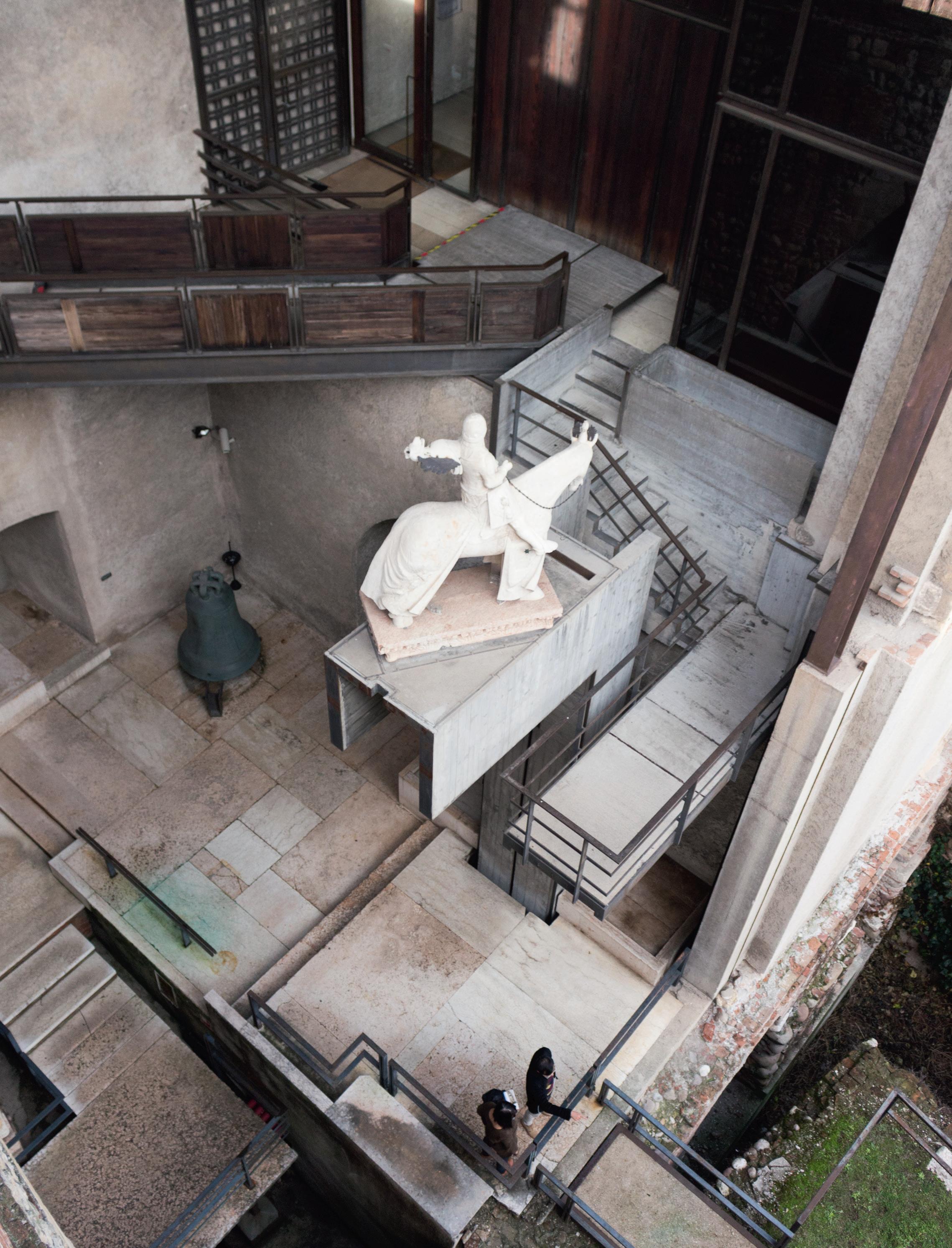
Foundations
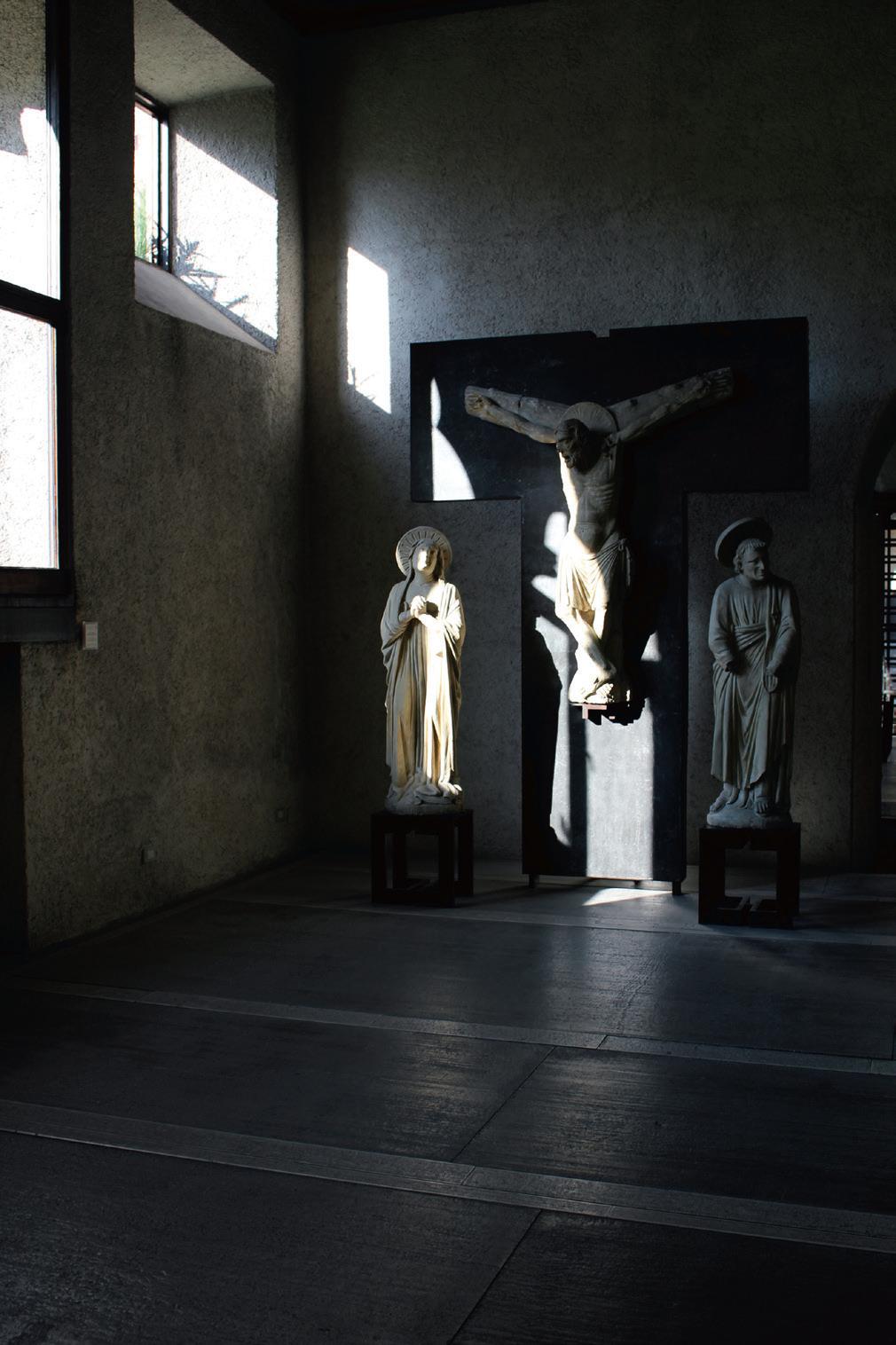
A medieval castle transformed into a museum is the benchmark for reimagining historic buildings, says architect Brian Zulaikha.
I went to see Castelvecchio on a holiday to Italy in 1984. Somebody said I should go so I did. Then I went again and again and again. It’s an easy journey from Venice, which I visit every second year or so. Castelvecchio was once a grand castle on the banks of the river in Verona. It’s been redesigned about five times and Italian architect Carlo Scarpa was commissioned in 1957 to reimagine the building as a museum.
A staircase in the barracks, built during Napoleon’s rule, was demolished. Scarpa convinced museum director Licisco Magagnato that it was necessary to create a new link between buildings then remodelled it as a ground-floor gallery. The remodel also made way for housing Cangrande, a statue of the equestrian Lord of Verona and one of the most significant objects in the museum’s collection.
You can walk along the ramparts and see the river and the city beyond. Scarpa created these beautiful steps, which take you on a journey around the site to the Cangrande. I read that the statue was meant to be seen from one vantage point but Scarpa created a void behind it and a number of viewing platforms so you can see it from below, above, all sorts of angles. It’s an interesting way to display it.
It was the first time I’d come across an architect who wasn’t afraid to touch a historic building. Scarpa showed that while the original fabric had to maintain its identity, his new work could be given equal voice. In the courtyard, he created steel bridges. If he’d made them from timber, which they would have done in the 14th century, it would have been softer and more in symphony with the original building but it wouldn’t have had the same impact.
I go to a lot of galleries but I don’t know anything about the art here. I’ve taken lots of photographs but most of them show the display cabinets. I look at the way the pieces are supported, which is a very architectural thing. And the windows are recessed so they produce subtle pools of light in the spaces. I fell in love with the way he displays the Gothic paintings and sculptures.
Brian Zulhaika is a founding partner of Sydney-based architectural practice Tonkin Zulaikha Greer (tzg.com.au), which was involved in the recent upgrade of the Sydney Opera House. He is committed to sustainable design and has been national president of the Australian Institute of Architects.
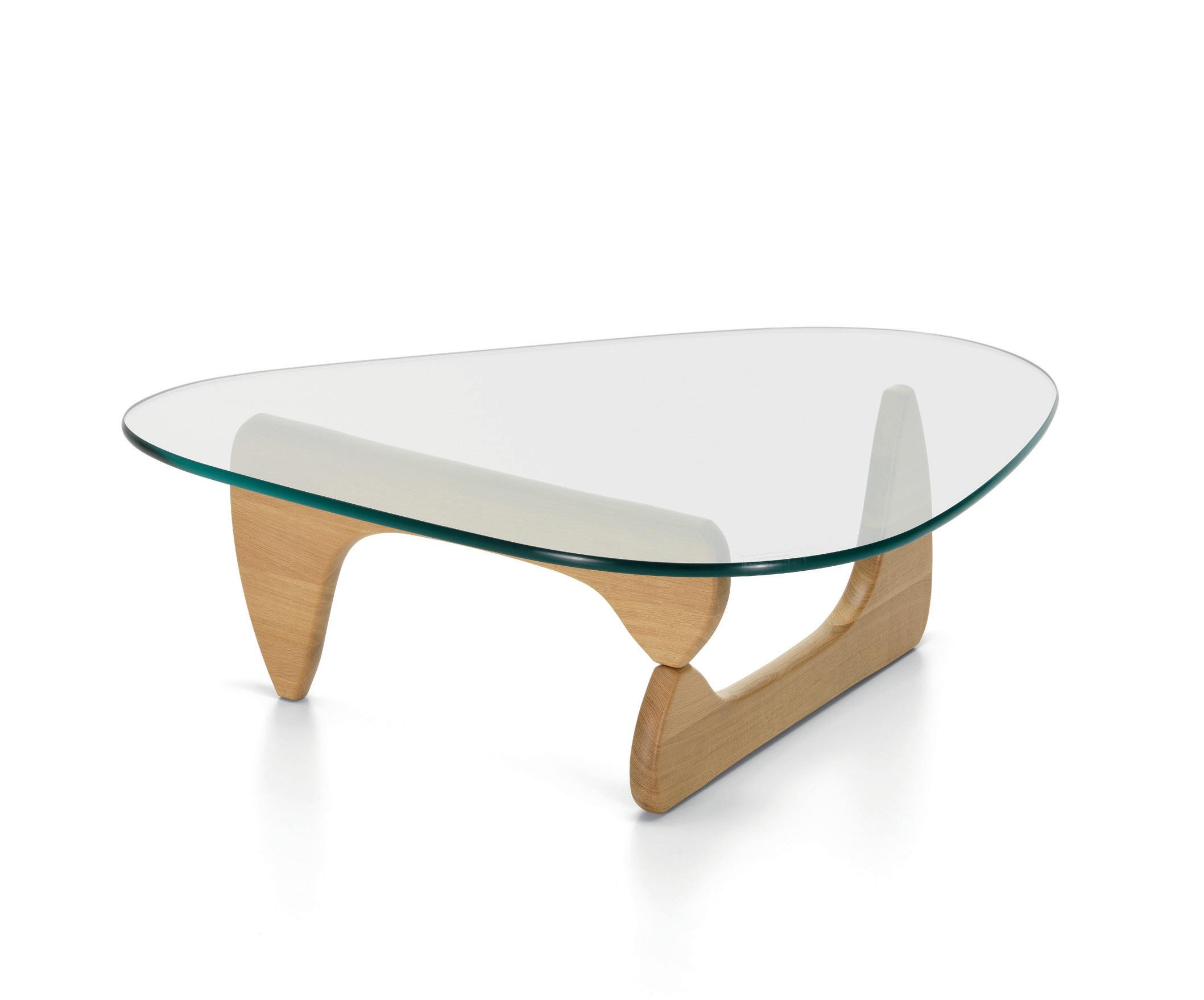
A triumph of form and function, this piece is one of the most loved – and copied – examples of Mid-century Modern design.
Japanese-American artist and industrial designer Isamu Noguchi famously declared that “everything is sculpture” and his most popular creation is almost more abstract artwork than coffee table: a curved three-sided slab of glass atop two biomorphic interlocking wooden legs. In fact, when American manufacturer Herman Miller debuted the design in 1947, the catalogue described it as “sculpture for use”.
Fast forward to the early 2010s and cheeky design blog F*** Your Noguchi Coffee Table, which called out decorating trends that had hit maximum mainstream popularity, such as antlers and fiddle-leaf figs. The blog’s title exemplified the Noguchi table’s universal appeal – and the number of knock-offs. “It’s a victim of its own success,” says interior designer Lauren Li, founding director of Melbourne studio Sisällä.
The charismatic Noguchi was born in 1904. A one-time studio assistant of sculptor Constantin Brancusi, he was influenced by Modernism and abstraction in the 1920s and ’30s but refused to be pigeon-holed. “I do not wish to belong to any school. I’m always learning, always discovering.” Inspired by Zen gardens and Surrealism, Noguchi turned his designer’s eye to everything from public squares and playgrounds to stage sets for Martha Graham, bronze busts for wealthy clients and his much-loved Akari paper lamps. But this coffee table was his favourite furniture piece and has been in continuous production since its reissue in 1984.
Distributed in Australia by Vitra, a genuine Noguchi is priced from $5360 at Living Edge (livingedge.com.au) – and the designer’s signature on the glass proves it’s the real thing. An off-beat blend of form and function, it’s an injection of art into the everyday.


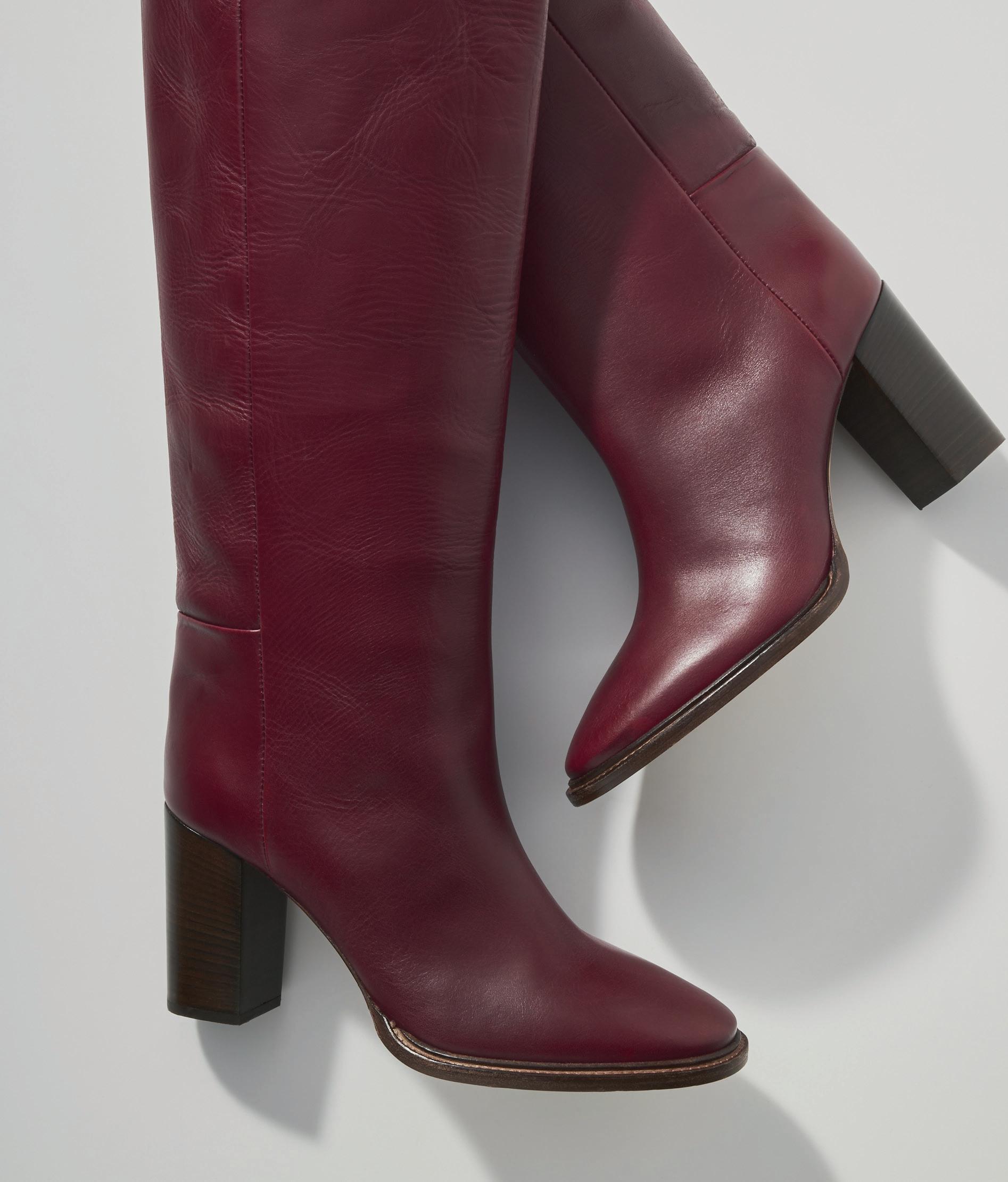
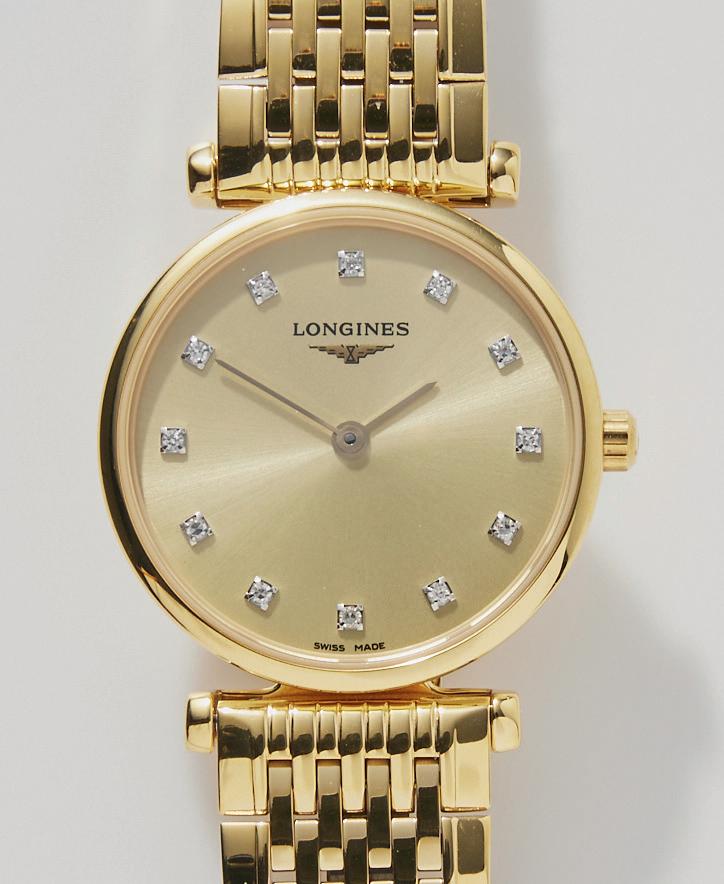



Editor’s note: “Function meets fashion” is a term truly embodied in this wardrobe mainstay. Doublebreasted, belted and made from water-repellent cotton-blend gabardine with waterproof-flap pockets, adjustable cuff tabs and a central rear vent, it’s your new trusty travel companion. The colour-blocking in khaki, tan and beige is just icing on the coat.

Wear it with: This is an outer layer so the flattering oversized cut means there’s room for chunkier knits or a jacket and dress underneath. The generous proportions extend to the mid-shin length, which should nicely meet your knee-high block-heeled boots. Stealth jewels in gold will lend the coat’s ’70s undertones a note of 2023 sophistication.
Price: $1625 / au.maxmara.com
The piece: Weekend Max Mara Canasta trench coatEditor’s note: The modern-day man bag is held to high standards: not only must it pass the style test, it needs to be comfortable when slung across the body, offer multiple pockets for interior organisation and fit a laptop. Add a compelling colour and we may have found the GOAT.

Wear it with: Did we mention it should also seamlessly span work to weekend wear? Save your hoodies and sneakers for the gym and keep to the classics with this bag: tailored trousers, loafers, a bookish sweater and
lightweight slimline trench coat that will accommodate a long cross-body strap without feeling constricted. Easy is the aim here.
Price: $1095 / coachaustralia.com
The piece: Coach Tabby Messenger 40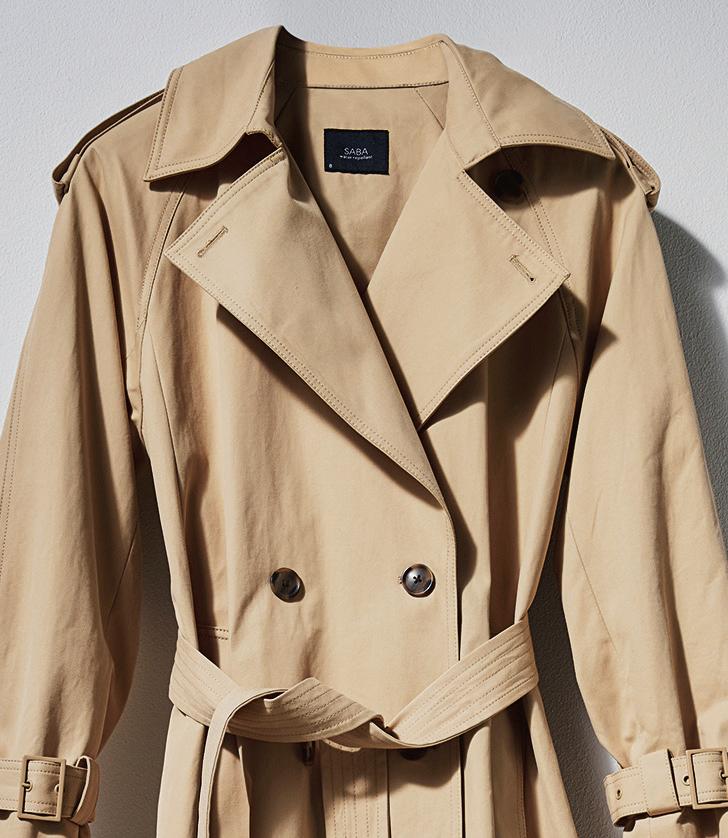
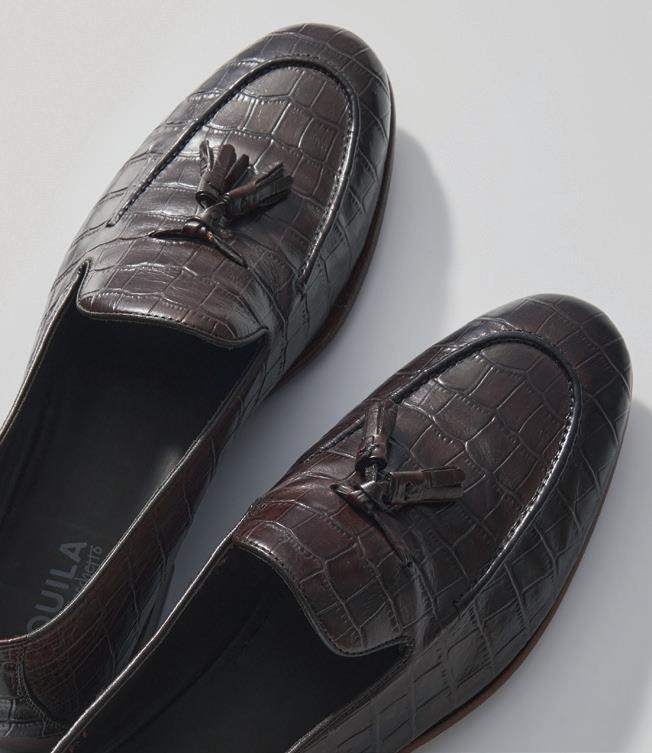

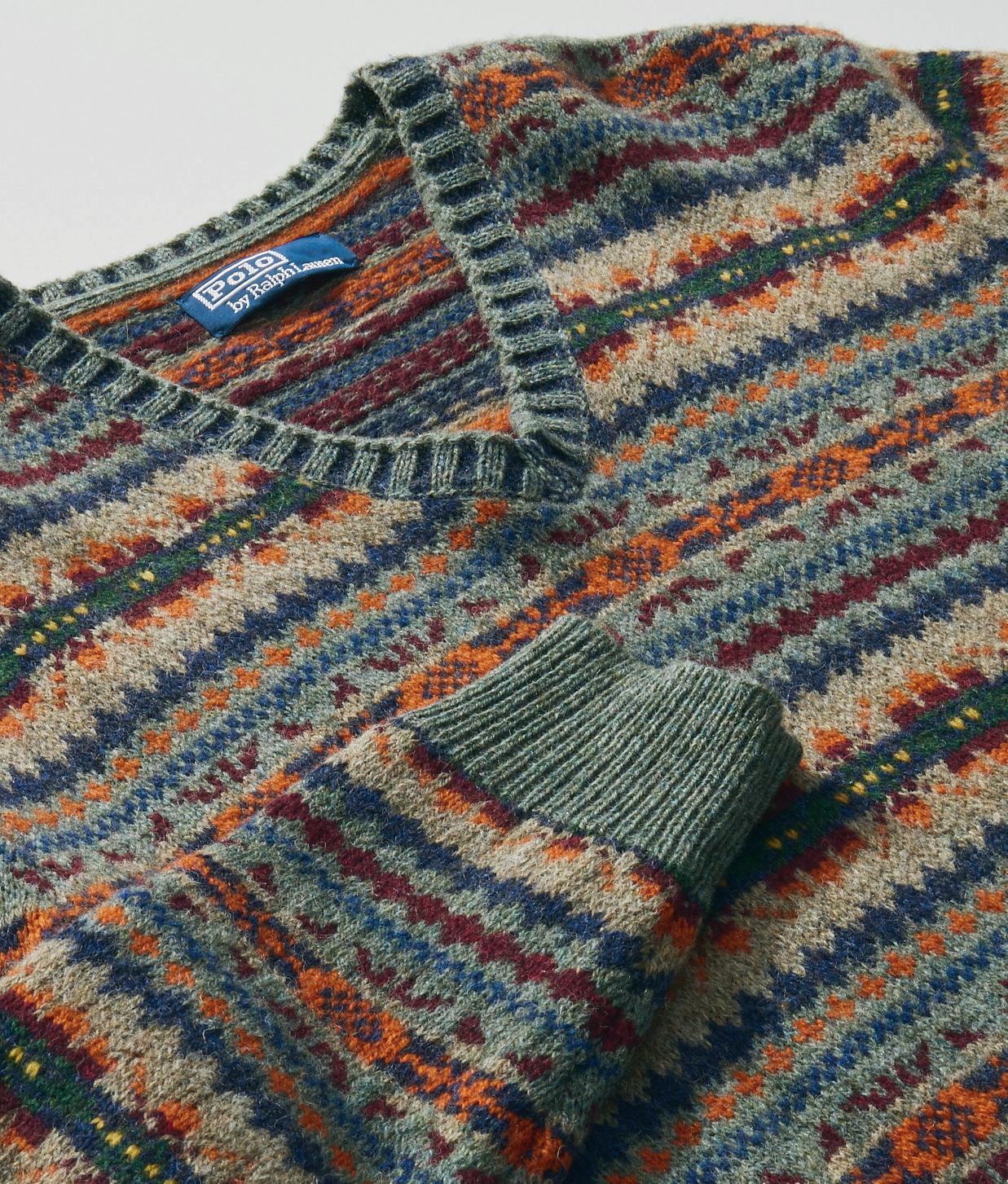
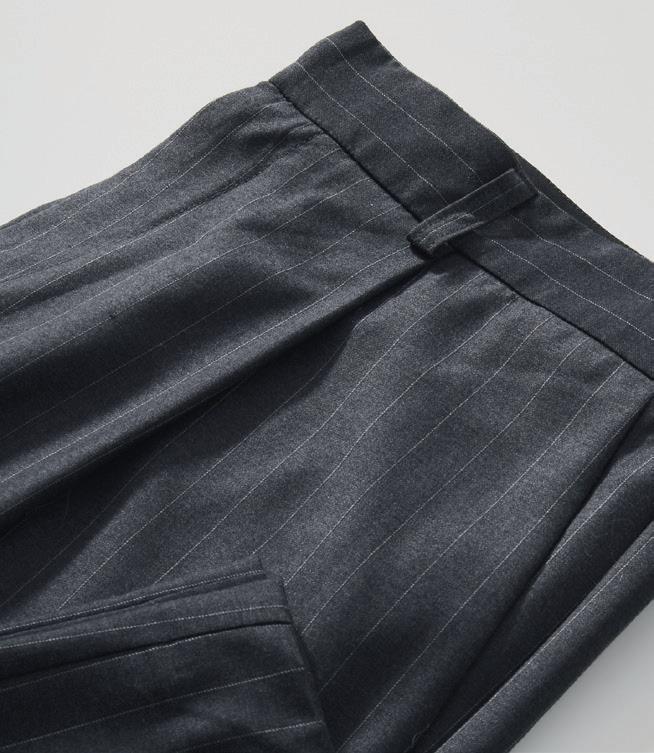

They recall childhood memories of jumping in puddles and answer to many names: rain boots, gumboots, galoshes and wellies – short for wellingtons. That last one has a distinct line of ancestry, thanks to Arthur Wellesley, the first Duke of Wellington (and later British prime minister). In the early 1800s, Wellesley asked his shoemaker, George Hoby of St James’s Street, London, to make him a pair of leather boots that were shorter than hessians, a common boot style of the time. Wellesley wanted something more comfortable to wear with the tighter-fitting trousers that had just come into style. The resulting boots were dubbed wellingtons, a name that later rubbed off on versions made of rubber.
In 1856, the North British Rubber Company was the first in Britain to produce rubber boots; after several changes of owner, the firm became Hunter Boot Ltd. When World War I broke out, Hunter was commissioned to provide more than one million pairs of boots for soldiers fighting in the trenches and it was enlisted again for World War II.
Hunter has long supplied the British royal family and has
received two royal warrants, in 1977 from the Duke of Edinburgh and in 1986 from Queen Elizabeth. The latter wore hers traipsing about Balmoral, hunting and, on occasion, touring. But it was when Lady Diana Spencer was photographed in olive knee-high boots in 1981 that demand was really sparked among the middle and upper classes. The next year the satirical Official Sloane Ranger Handbook stated: “London Sloanes sprout green wellies in wet weather like a plague of frogs.” In 2012, Catherine, Princess of Wales (then Duchess of Cambridge), decamped to another brand, posh French line Le Chameau, which did not go unnoticed by the British press, with The Telegraph asking, “Will Kate kick off a war of the wellies?”
It took supermodel Kate Moss wearing Hunter boots to the Glastonbury Festival in 2005 to take the brand from stuffy English outerwear to must-have fashion footwear. Moss teamed her pair with tiny shorts and a waistcoat. In the years since, fellow Brits, including actor Kate Winslet and designer Stella McCartney, have also been spotted in Hunters.
These star sightings elevated the humble rubber boot more broadly and luxury brands, including Chanel, Burberry and Bottega Veneta, created their own versions. Those with a sense of whimsy can look forward to the revival of the 1980s-era frog-faced rubber clogs from a collaboration between Wellipets and JW Anderson. After all, it’s not just kids who want to jump in puddles.
Once reserved for English gentry, the rubber boots made the move to the feet of celebrities at music festivals.

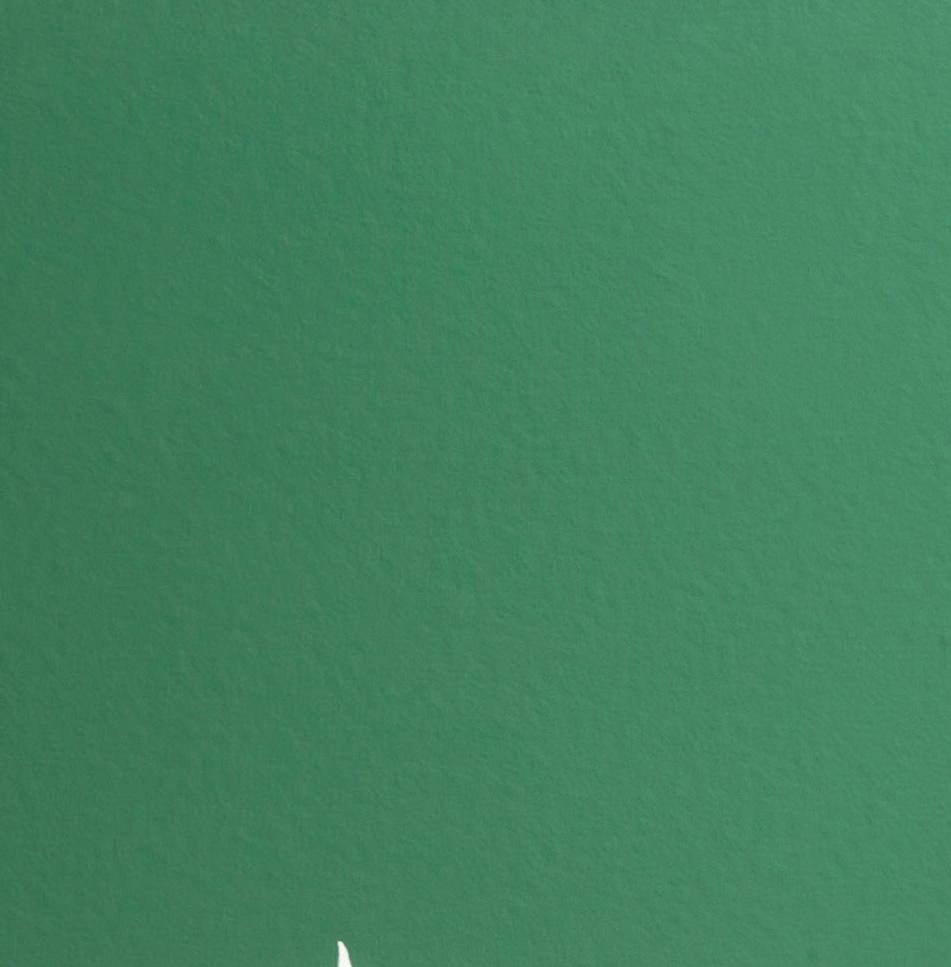
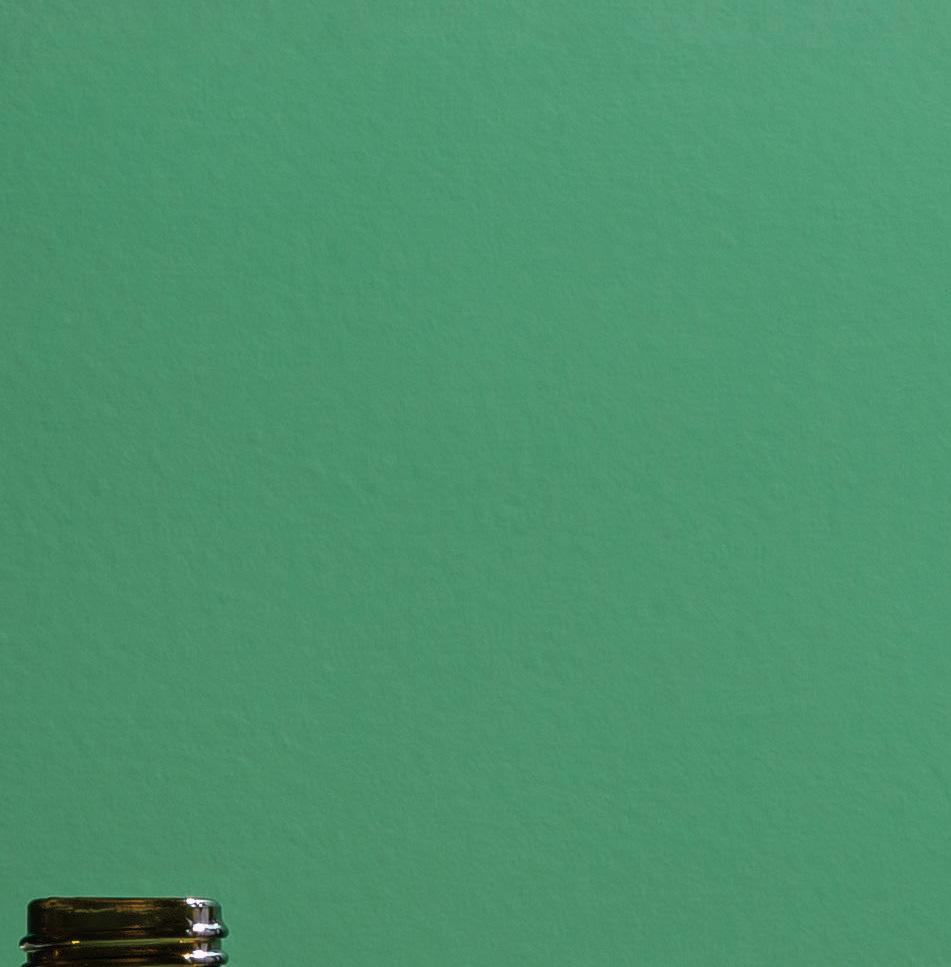


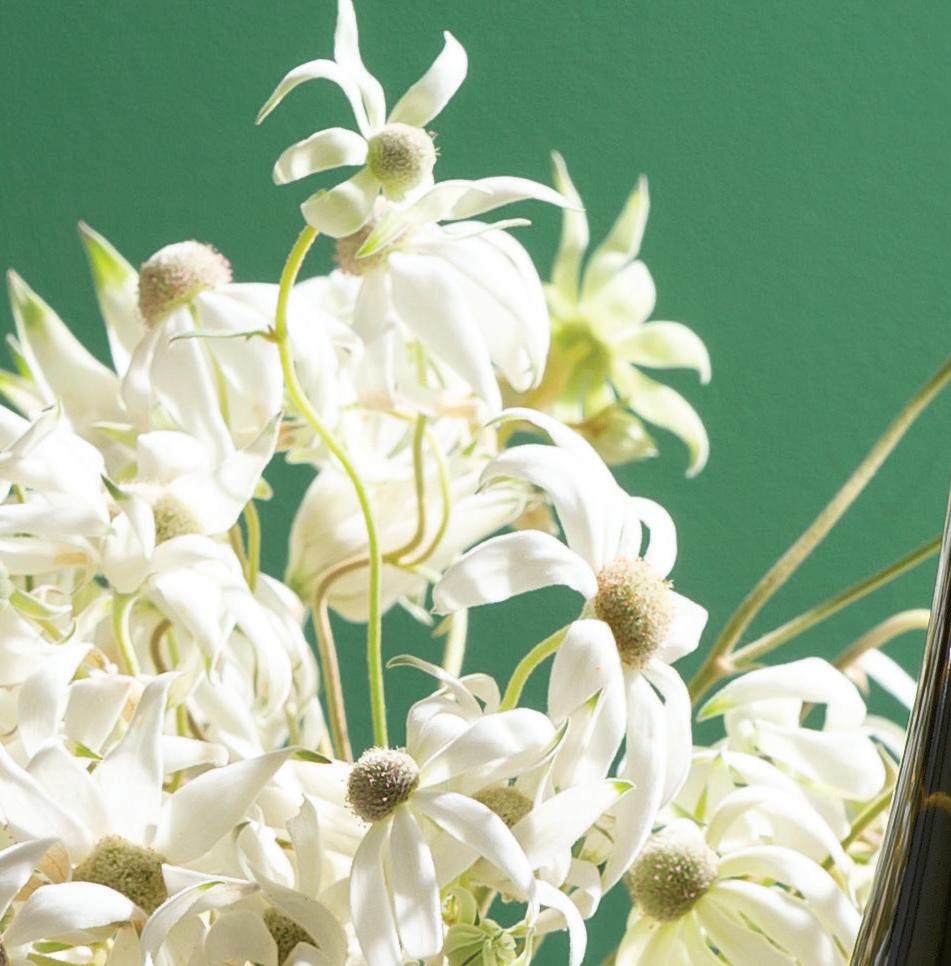
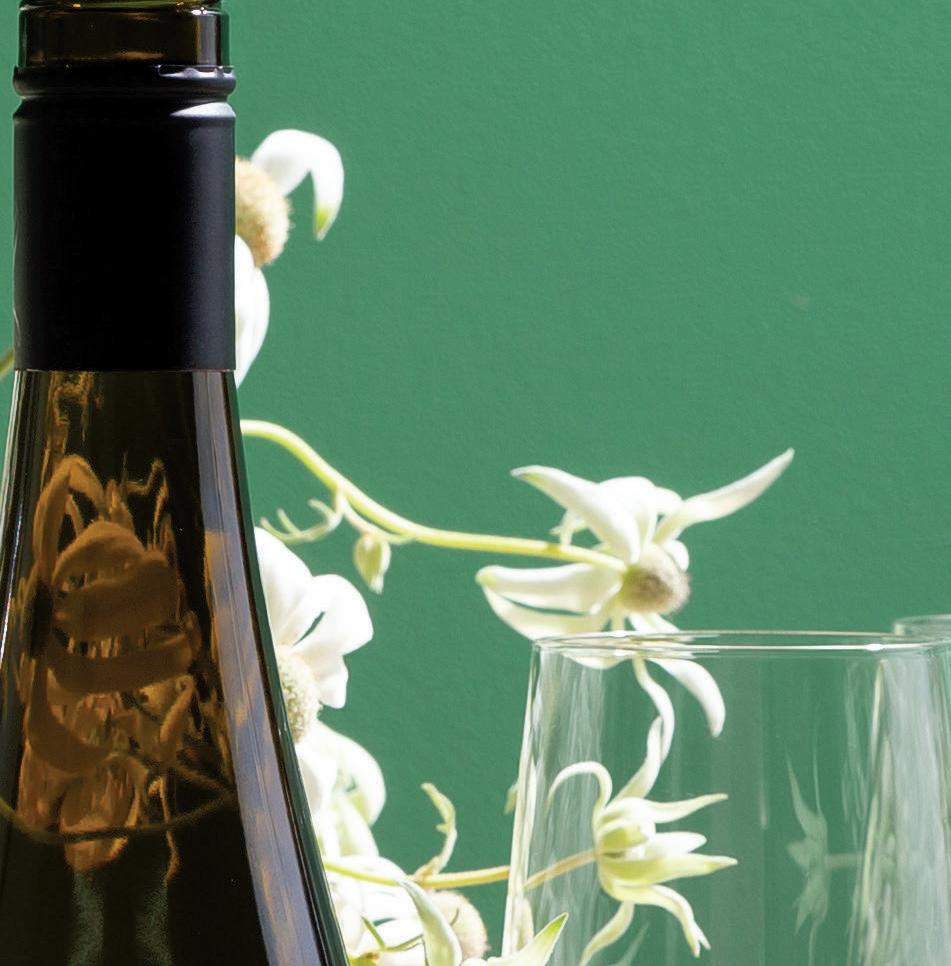






Discover how have streamlined end-to-end procurement processes to achieve������������������������ mitigate�����������accelerate its ESG initiatives with First Nations suppliers.
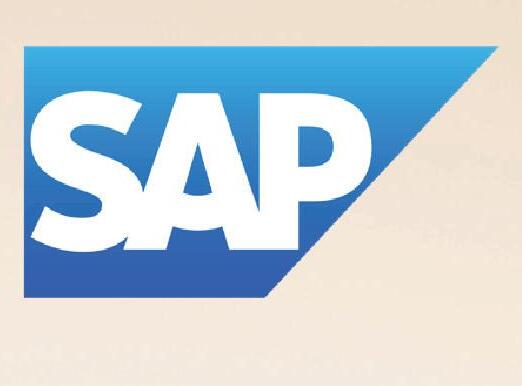
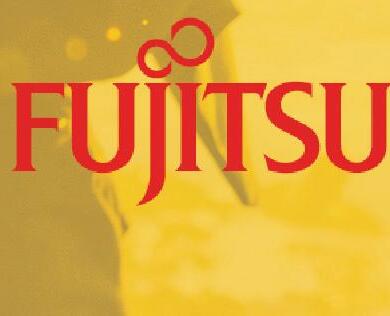



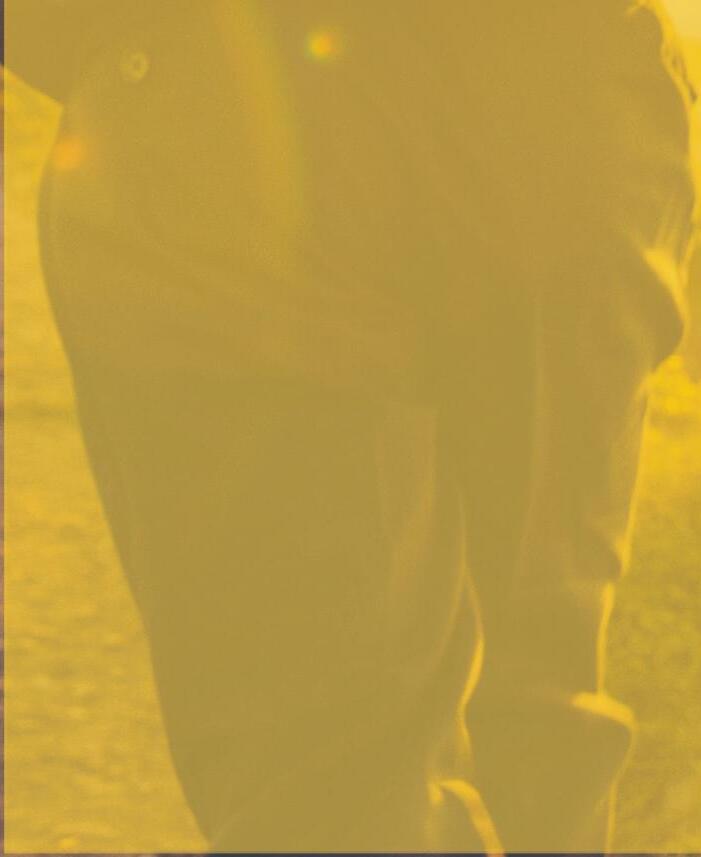

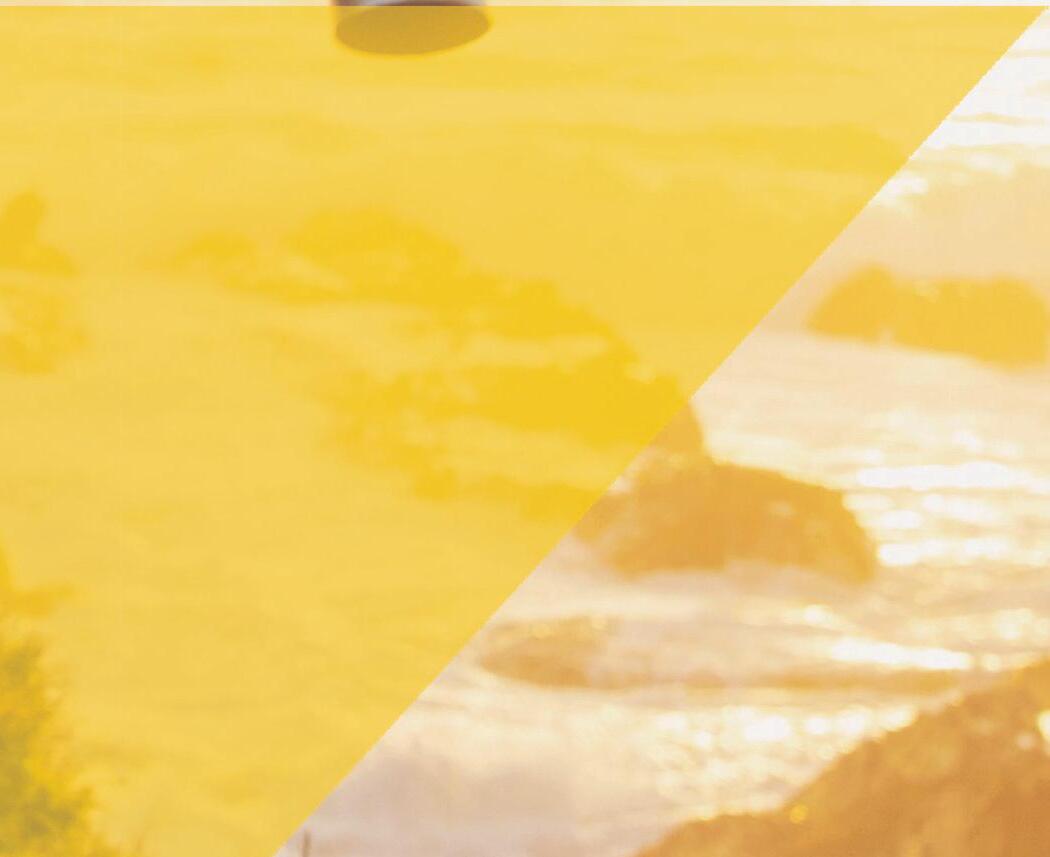


For high-level leaders looking for a competitive advantage in a dramatically altered business landscape, specialist consultants can bring a different and, at times, downright unorthodox point of view.
By Deborah TarrantEvery day, corporate leaders are facing a fast-moving range of high-pressure challenges. Inflation, digital disruption and escalating geopolitical risks head the list of “signals amid the noise” that McKinsey & Company research has identified for CEOs and executive leaders to wrangle in 2023. Knowing what matters is harder than ever.
Difficult times call for alternative approaches. To find clarity and resilience in a world of confounding change, the true problemsolvers seek out alternatives and look beyond the bounds of traditional advisers, coaches and consultants.
Meet some of the unconventional game-changers who are helping corporate leaders to maximise their performance and feel better about life.
Who: Rory Warnock
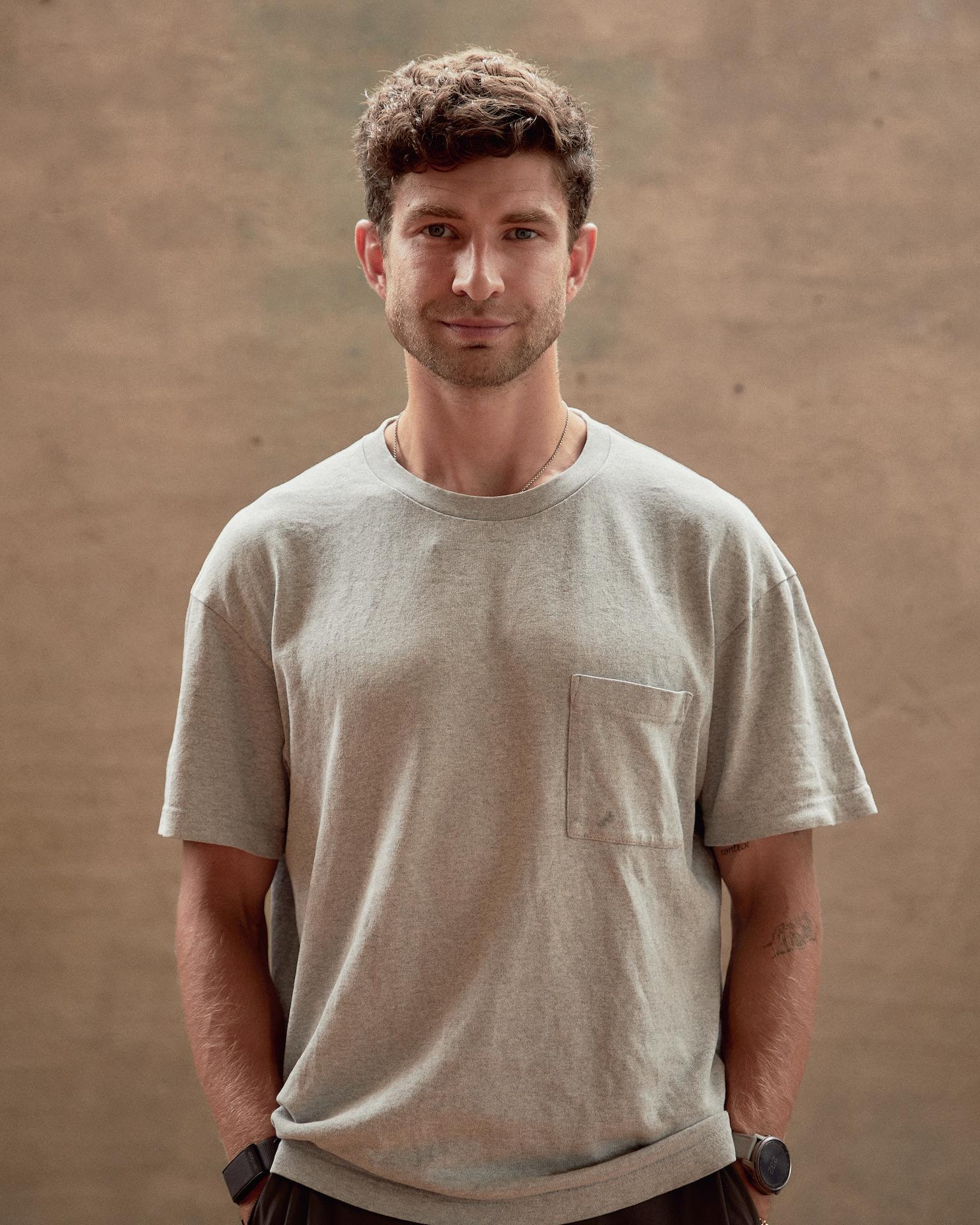
What: Breathwork specialist
Philosophy: Focusing on breath can change the way you feel and behave.
Conscious breathing or breathwork helped Scottish-born strength and conditioning graduate Rory Warnock to turn his life around.
In 2017, one year into a corporate career in consumer goods sales in London, Warnock was on an active quest to improve his mental health after being prescribed medication for anxiety and depression. Then someone suggested he take a breathwork class. “I thought it sounded ridiculous but I like to keep an open mind.”
The result was a profound experience. “I felt joyful, euphoric, loved, loving, free. I was smiling and crying – and I was hooked,” recalls Warnock, who then set out to research the science of how breath
connects with human physiology, in particular the nervous system.
He discovered that the secret to keeping calm or feeling more alive, clear thinking, sharp focus, sleeping soundly and, ultimately, optimal performance and resilience, was literally under his nose. “By breathing in specific rhythms and rates, you can change the way you feel, act and behave.”
Within a year of trying breathwork, Warnock didn’t need antidepressants any longer. And his discovery was uncannily well-timed. When he arrived in Australia in March 2020, a pandemic-induced awareness of mental health was about to unfold. As it turns out, he had the ideal therapy.
Warnock now lives in Bondi and shares his knowledge one-on-one with executives and professionals, runs corporate coaching sessions for small groups or large (sometimes 500 online) and is a soughtafter keynote speaker. Employees at the Australian Securities Exchange, Google, Amazon and Uber, among many others, have learnt the benefits of his conscious breathing techniques.
Stress is the most common reason people check in with him, says Warnock. After all, studies show IQ and decisionmaking slide when we are stressed.
Group sessions often coincide with the need to alleviate year-end pressures, while he works weekly on the stress thresholds of several highly placed Macquarie and Deutsche bankers in individual 90-minute sessions. At law firm Ashurst, Warnock is part of the cognitive performance team.
Far from being a load of hot air, slow, deep breathing can improve both physical and mental health by increasing diaphragm function and oxygen delivery to body tissues. Done right, it changes brainwaves from alpha to beta so you can move into a more creative state of flow, he says. “The beauty of breathwork is that you have access to it 24/7. Once you’ve learnt it, you can do two minutes on the commute, five minutes before a big meeting or pitch and 10 minutes before bed. The benefits are immediate.”
Plus, it’s pretty well risk-free. You can breathe dysfunctionally, though. Short, shallow, audible breaths through the mouth into the upper chest translate into less oxygen for your tissues and can also change your facial structure, he warns.
Recently, Warnock completed his first ultramarathon and has clocked up 100 kilometres through the Blue Mountains, west of Sydney, and 200 kilometres in Chile’s Atacama Desert. He’s also won a 45-kilometre race around the Snowy Mountains’ Lake Crackenback, in four hours and six minutes. His hidden advantage? Nasal breathing.
careers of big-name athletes in the United States 25 years ago and saw the impact of fame and athletic success (extrinsic goals) on young lives that often went off the rails. What dawned on him was the importance for everyone to understand their intrinsic motivations first and that notion underpins his philosophy today.
“Nike’s competitive advantage was storytelling – just do it, live strong. To be a good storyteller, you need to know your own story first. Most athletes don’t. Most of us don’t. That took me on a journey about authenticity, vulnerability as a strength and connecting with yourself before you connect with the outside world.”
Crowe’s message is like a mantra. “You need to be a human being before you can be a human doing.” It’s a concept he delivered when he returned to Australia after the 2000 Olympics and set up a management consultancy, working with CEOs and others who often asked for personal leadership guidance.

While the essence of his core message is more nuanced, it carried through when he worked with the Richmond Football Club in 2016 and the Australian cricket team in the wake of its notorious “sandpapergate” ball-tampering scandal in 2018. It helped Ash Barty to achieve her greatest extrinsic goal, winning the Australian Open, before retiring with her sights on more important intrinsic life matters.
Ask Ben Crowe about his point of difference in the executive coaching space and he looks confused. “I don’t know. I don’t come from an executive coaching background and I don’t know the difference between a coach and a mentor.”
That said, the former global sports marketing director at Nike has earned such a good reputation worldwide as the mindset coach to executives and sports stars, including Ash Barty, Stephanie Gilmour and Dylan Alcott, there’s a queue of 1000-plus people seeking his services. Many more if you count those who sign up for his Mojo Mindset course online.
What’s the excitement about? A sprint through his background shows embryonic ideas for Crowe began as he managed the
The big five extrinsic motivations that sabotage us all, says Crowe, are money, materialism, corporate or career status, social status and craving recognition from others – “obsessing and caring what they think about me rather than what I think about myself”. The great universal underminer is FOPO – fear of other people’s opinions.
Most of his clients are trying to figure out what they want out of life or leadership. “Everyone in the world is looking for the same two things – confidence and happiness.” His advice is to steadfastly focus on what we can control.
“When we redefine success from an intrinsic point of view, we can still chase extrinsic goals. We just don’t want to define success by whether we get there or not. Enjoy the process. That way we don’t have to wait to be successful or happy.”
The idea of leaders applying emotional intelligence (EI) and empathy is not new but Dr Kirstin Ferguson, researcher and non-executive director at PEXA and Envato, captured a moment in time with her second book, Head & Heart: The Art of Modern Leadership.

While American psychologist Daniel Goleman highlighted the power of EI more than 25 years ago, Head & Heart debuted in the top 10 of Australian non-fiction books in January. Since then Ferguson’s been on the world stage with top business thinkers Jim Collins and Adam Grant. And she’s just sold the English-language global rights to United States publisher BerrettKoehler, with a September launch planned.
How did she capture the zeitgeist? Did COVID convince leaders to wear their hearts on their sleeves? Certainly, the pandemic brought heart-based skills to the fore. “Leaders used to think of their teams as one collective – you fitted in or you didn’t,” she says. Now there’s an expectation, generationally and postCOVID, to consider individuals and the best way to lead that person. “It takes far more work and many leaders are feeling lost,” says Ferguson, who metes out her leadership smarts one-on-one to just a few CEOs of large organisations these days.
The catalyst for her recent success, she says, is in coalescing a range of hard-tomaster topics for leaders, from humility and self-awareness to courage and empathy – the heart skills that come with subsets of psychological safety and vulnerability. She topped those with fresh research that defined head and heart qualities and showed her clients the way forward.
The modern leader, such as former New Zealand Prime Minister Jacinda Ardern, Ukraine President Volodymyr Zelenskyy and Microsoft CEO Satya Nadella, knows they need to lead with both their head and their heart but it’s a fine calibration, explains Ferguson.
“A lot of leaders find it difficult to allow empathy out. These are not soft skills. It’s comparatively easy to lead with your head – that’s what we’ve been rewarded for in our jobs. Most of us are pretty good at it.”
But, she says, “to be a humble leader, to be self-aware of the impact you’re
Who: Dr Kirstin Ferguson What: Leadership expert
Philosophy: Know when to open your heart at work
having on others, to be courageous and stand up for what you believe in, even in the face of pressure not to – unless you’re a confident leader, it can be quite terrifying.”
Ferguson helps leaders to unlock what it means to lead with the heart. “We work on scenarios or they talk about upcoming events.” A common area is overcoming their fear of not knowing all the answers and asking others for their ideas.
“If you can find the confidence and courage and know when to lead with your heart, you’ll be a much better leader in all aspects of your life. It takes some reassurance. It takes a workplace that rewards that kind of leadership as well.” Increasingly, she believes it is the future of leadership.
To be a humble leader, to be selfaware of the impact you’re having on others, to be courageous and stand up for what you believe in can be quite terrifying.
Who:
Andrew May
What: Transformation specialist
Philosophy:
Increasing leadership capacity requires mastering the brain and body.
The most intriguing aspect of Andrew May’s coaching philosophy is that he debunks the concept of work-life balance. “It’s a crock of garbage – it sets people up for failure,” insists the former exercise physiologist who counts Commonwealth Bank chief Matt Comyn, IAG CEO Nick Hawkins and Compass Group chief commercial officer Shelley Roberts among his many clients. “If you’re the CEO of a publicly listed company, a startup or an entrepreneur and you want balance – wrong job! You need to be prepared for the trade-off.”
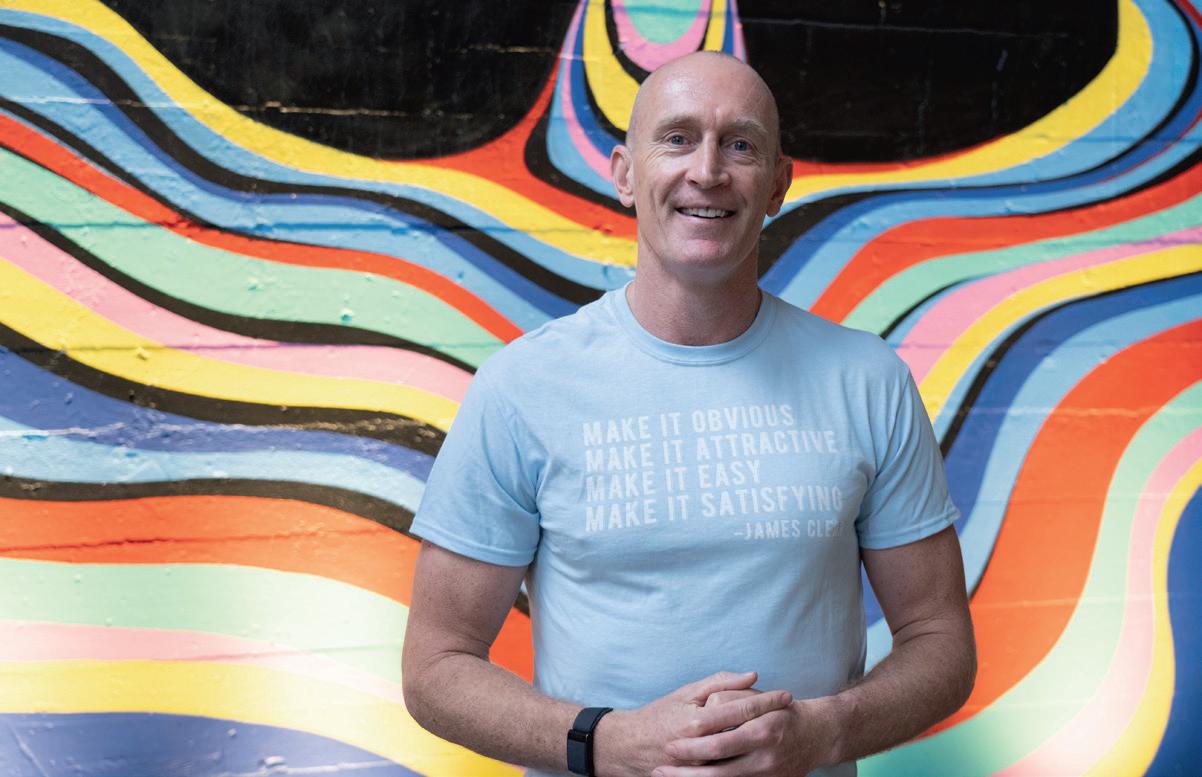
May teaches people “how to work really hard for periods and how to downregulate, control the inner dialogue and set up frameworks so they don’t end up burnt out, divorced and their kids hating them in 10 years time”.
Leadership capacity is May’s specialty. That involves helping clients to establish sustainable operating rhythms that factor in peak work demands, such as intense quarterly reporting periods, and relaxing school holidays. Essential to the process is protecting time, boosting energy and powering up the ability to focus attention. There’s a strong physical backbone to his work. He calls it “hard fun”.
I teach people how to work really hard for periods and how to down-regulate, control the inner dialogue and set up frameworks so they don’t end up burnt out.
His unconventional “inside out” approach makes executives “match fit” to run the business. It leans into the 1970s biopsychosocial model created by psychiatrist Dr George L. Engel, which explores the links between physiological and psychological pathways and socioenvironmental factors (think culture and relationships). May mixes in personal experience from his 25 years in sport, a stint in a professional services firm, a marriage break-up when his children were young, bouts with cancer and near-bankruptcy.
Clients, who pay him $15,000 for a twoto-three-month period, tend to be wellinformed super-performers or those with a “Bunsen burner on their backside” because they have just been promoted or are about to take on a new role. Either way, they need to be ready for May’s rigour, which starts with a thorough analysis.
Working with stress and resilience researcher Dr Tom Buckley at Sydney University, May gives his clients swathes of metrics and KPIs on their body, drawn from wearable tech – each person is required to wear a heart monitor for 48 hours – and blood tests. “From the tech we can see how much of their day is spent in stress or the sympathetic nervous system, how well they sleep and their biological age. Our goal is for clients to be five years younger biologically, to give them the capacity to run at a high level.”
What follows is a prescribed exercise and dietary program – cutting out sugar, alcohol in moderation and eating the right macronutrients – with monitoring via a dashboard, then a mix of mental skills and energy management training.
If the going gets too tough, there’s an exit strategy. May and his clients agree at the outset that they can sack each other. But many of them have stuck with him long-term. “Life changes – you might land a global role and need to learn about your body clock and the suprachiasmatic nucleus [the region of the brain that regulates most circadian rhythms in the body],” he says. “It’s not like you get all this info and suddenly you’re ‘performed’.”
With in-depth consultation and a targeted solution, Fujitsu has invested more than $4 million with First Nations businesses.
For global digital transformation company Fujitsu, supporting First Nations businesses is essential to its plans for a more diverse future. The company has enacted its Innovate Reconciliation Action Plan (RAP) – a multifaceted program focused on greater involvement, consultation and procurement of Information and Communication Technology products and services from First Nations businesses.
“Being an inclusive business means everyone can deliver on Fujitsu’s purpose,” says Fujitsu APAC CEO Graeme Beardsell. “Incorporating the knowledge and cultures of First Nations people takes us forward on the journey to an inclusive and sustainable world.”
A challenge that Fujitsu faced was how to better support its people to engage with First Nations-owned suppliers. To achieve this, Fujitsu implemented SAP Ariba, a spendmanagement and customer-database solution to improve visibility of its First Nations suppliers and therefore ensure a diverse supply chain.
Nicole Forrester, APAC vice president, Purpose, People and Culture, at Fujitsu, says SAP Ariba is supporting Fujitsu’s commitment to long-term First Nations engagement.
“The implementation of the SAP Ariba solution has enabled us to create a platform to promote a more inclusive and diverse supply chain, with a particular focus on centralising procurement processes and making the inclusive spend with First Nations-owned suppliers easier for our business,” she says.

Since integrating the new technology, Fujitsu has been able to build a dedicated dashboard to capture its spend with First Nations suppliers, as well as create an internal buying channel directly linked to those businesses to boost the engagement and visibility of their products.
“We will continue to leverage SAP Ariba to ensure we embed a sustainable procurement approach as we continue to scale up our engagements with our First Nations-owned suppliers,” says Payam Rahimi, APAC head of procurement at Fujitsu.
To help design and implement the sourcing dashboard, Fujitsu consulted with its key First Nations partner, Indigenous Defence and Infrastructure Consortium (iDiC), which develops First Nations businesses across Australia and provides over 500 services. The deployment of the SAP Ariba solution has supported Fujitsu’s
commitment to inclusive and representative procurement. Since then the company’s spend with First Nations suppliers has increased from $200,000 to more than $4 million.
Adam Goodes, Adnyamathanha and Narungga man and chief executive of the iDiC, says the consortium is proud to be Fujitsu’s key First Nations partner. “Our partnership with Fujitsu and the implementation of the SAP Ariba guided-buying system will provide longterm support and opportunities through the connection of the Australian Indigenous business sector,” says the former AFL star.
“Our engagement with Fujitsu is proof of its commitment to working with Indigenous businesses as a meaningful partner. It’s not just a box-ticking or tokenistic gesture.”
Reimagine procurement and supply chain with insight. Visit SAP.com
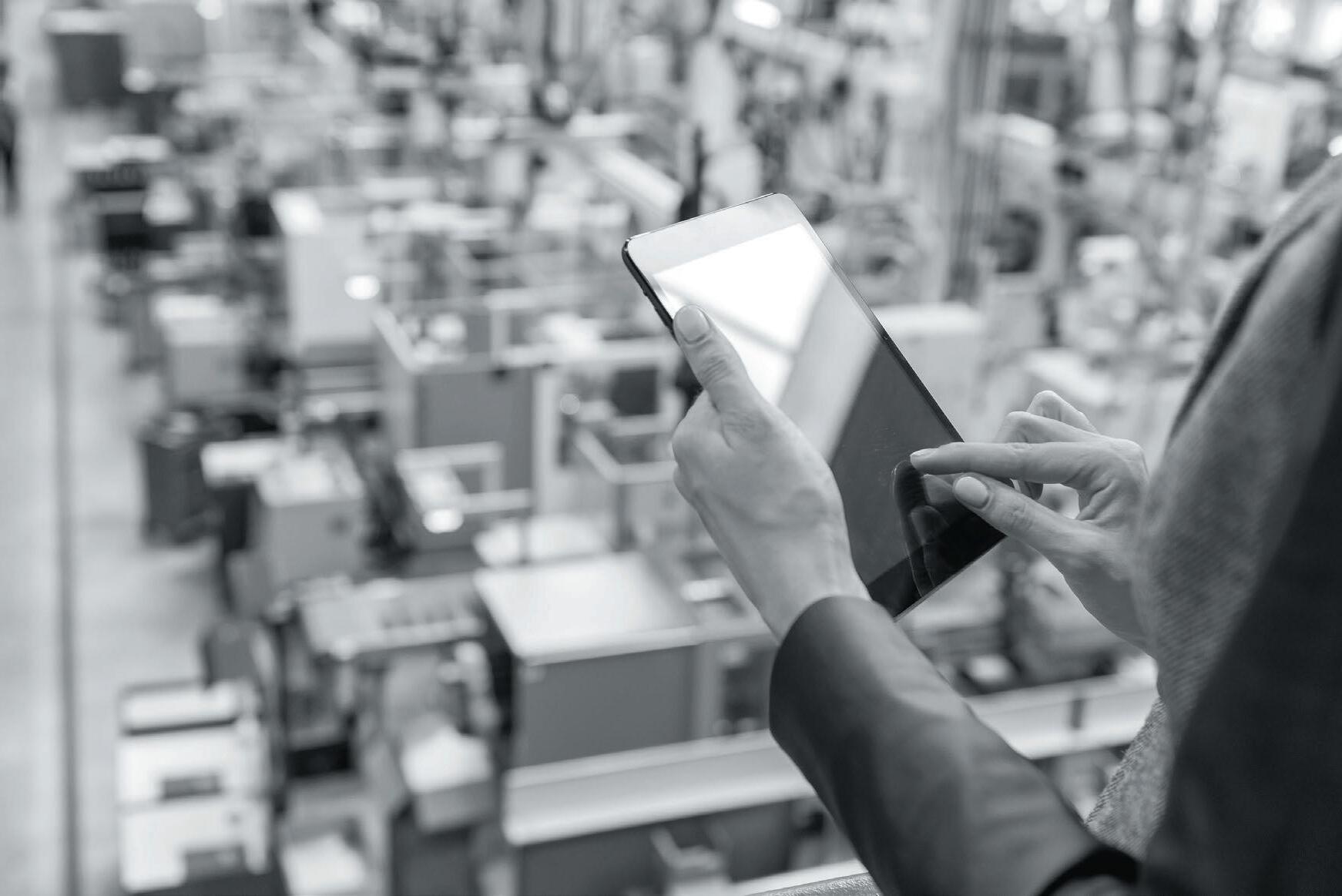
The
CareerTrackers CEO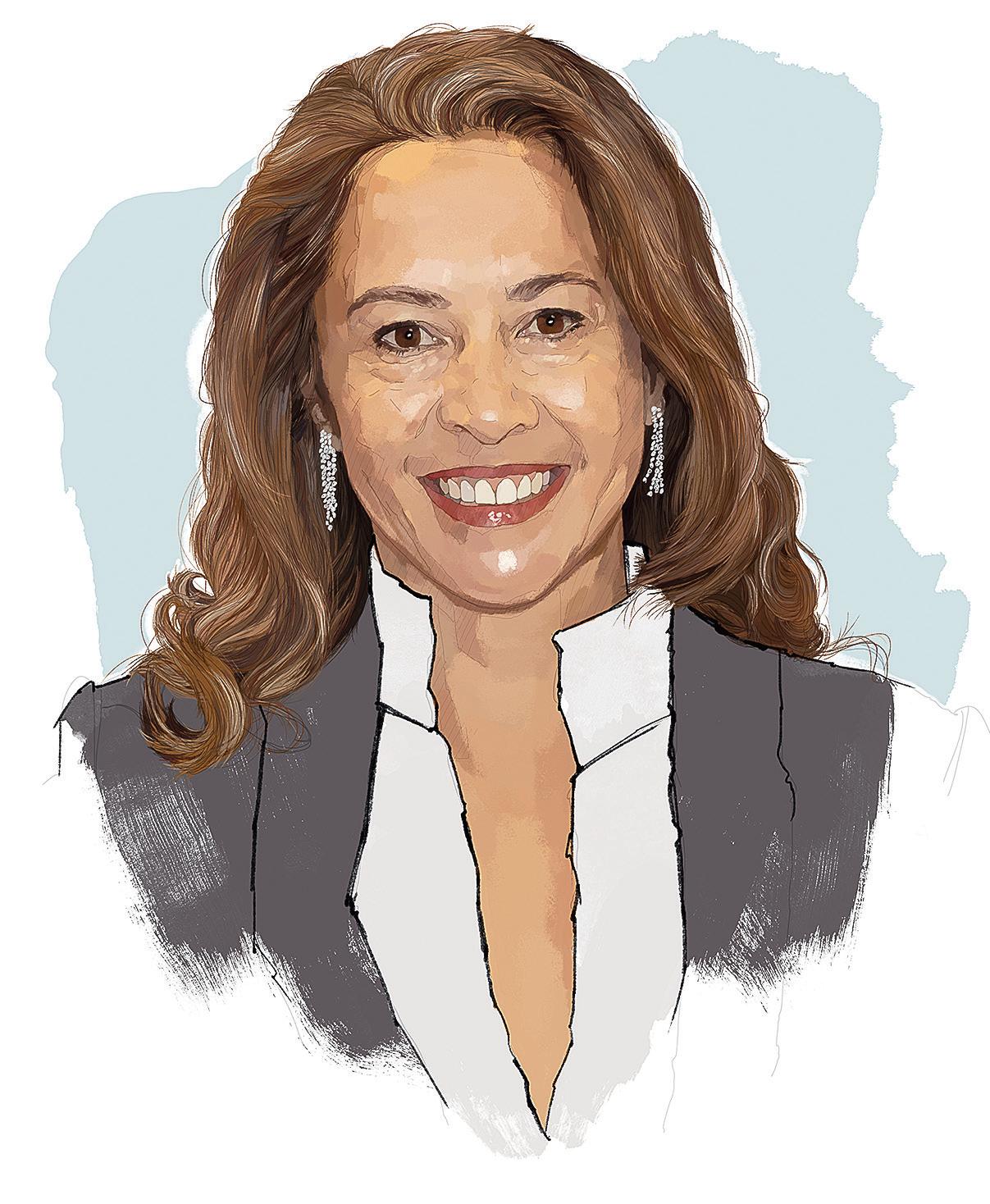
is a Kamilaroi woman with Chinese heritage who’s dealt with racism and bias throughout her career. But she remains optimistic.
Director, client relationships, Arrilla Indigenous Consulting; senior manager, PwC’s Indigenous Consulting; director, Aboriginal outcomes, NSW Department of Family and Community Services
How do you define good leadership?
I’ve been fortunate to learn from some amazing Aboriginal leaders, who have taught me about the importance of service. Leadership is not a top-down exercise and should always be for a greater good, unselfish and without ego.
That sounds wonderful but also hard.
If you think about leadership, it’s different for a woman than it is for a man. From a racially marginalised position, it’s different again. There are multiple layers.
You’ve told me you learnt more lessons working within Aboriginal affairs than outside it. Why?
Sometimes you’re not going with the flow – you’re swimming upstream. It can be difficult because you’re dealing with bias in the workplace as well as your daily job.
Presumably it’s given you a lot of resilience?
Yes, but sometimes you have to rest. It can be really hard going and there have been a few times in my career when I’ve walked away because I wasn’t having the impact.
CareerTrackers organises internships for First Nations university students at some of our biggest companies. You’ve been CEO for 18 months now. Is it a place where you’ve felt more optimistic?
Yes. Justice and community services are very different environments but, by and large, education is empowering and employment is empowering.
One statistic suggests a third of Aboriginal and Torres Strait Islander university students don’t make it to graduation. Is that right?
Retention is a big issue for Aboriginal tertiary students. The CareerTrackers program assists by connecting the world of work and study. Our experience is that students who join the program early in their degree do better at their studies because they’ve made that leap into the workplace early. Then they can grow their skills each year with the same employment partner.
Can you tell me about the ripple effect you see at CareerTrackers?
Family is everything, ultimately. While Indigenous families and communities across the nation have differences in culture, languages and experiences, there’s a lot of commonality and one of those things is the importance of community, belonging and sharing. That sharing extends to success and achievement. The saying goes, “You can’t be what you can’t see.” Conversely the opposite is also true, “You can be what you can see.”
There’s something powerful about someone coming back into the community and sharing that success, isn’t there? We have an alumni of 1100, which is the largest professional network of Aboriginal and Torres Strait Islander people in the country. There’s a strong desire by our alumni to give back in some way, shape or form.
First Nations people make up just over 3 per cent of the population but have traditionally been under-represented in the workplace. Are we seeing a change now? Is there momentum?
The reconciliation movement has been beneficial because it’s created greater consciousness about how Aboriginal people have been excluded from education and employment. People have gotten very good at doing “entry level” – like what we’re doing – but we need to do more if we’re going to see change.
What sort of heavy lifting do you think corporate Australia should do?
I would like to see corporate Australia think broadly about what Aboriginal employment success actually is. Is it just success that you achieve within your workplace or are you talking about broader societal success and what that means for the communities in which we have a footprint? I don’t think corporates are ready to have that conversation yet.
It feels sometimes as though companies tick off the Reconciliation Action Plan requirements and then think they’re done. We’ve got great employment partners, like Herbert Smith Freehills. As a legal firm, perhaps they have that lens because they understand the impact that the legal system has had on Aboriginal people and that’s part of their “why”. I think there’s a willingness but some of our corporate partners don’t quite know what it takes to support career development for Aboriginal and Torres Strait Islander people.
What does it take?
Well, I don’t think we’ve asked enough questions. There’s a bit of a void. I want to work with our partners to fill that void and support the career life cycle. Closing gaps and parity are only part of where we want to be. Why can’t we be like the AFL or NRL? If there were no Aboriginal people in those codes, the
game would be very different. They make up 12 to 15 per cent of players – that’s amazing for a population of only 3 per cent – because they’ve had the right opportunities and the right coaching and the right environments. Who’s to say that’s not possible for the workplace?
Is there an issue with the way corporate Australia tends to engage with First Nations people?
I’ve been really impressed by their contribution to embracing Aboriginal employees. But there is a bit of fear. A lot of people don’t know any Aboriginal people and that fear comes from a lack of understanding and that leads to a lack of confidence and then feeling a level of discomfort. It’s important for corporate partners to work through that discomfort.
It’s knowing what to do with that discomfort, isn’t it?
It’s okay to not get it right. But when companies haven’t got their “why” straight, they might think, “Oh, we’ll hire Aboriginal people – that will fix it.” No. We want students to go into your workplaces and learn and get valuable, meaningful workplace experiences. They’re not there to educate you. If they do, that’s great but that shouldn’t be an obligation. They’re not there to solve a representation or a competency issue within a workplace. Our people will vote with their feet if they feel that’s the case or if they feel tokenistic.
What would you consider your greatest strength as a leader?
Empowering others to do well and wanting them to succeed. I also like to think I bring a sense of humour to the workplace – sometimes you need to do that as well.
And what would you say is your biggest gap?
I suspect here are many unsaid and unwritten things I just don’t know. Would my experience or progression have been different if I’d gone to the “right” school, if I’d been a man, if I’d been white? I’ll never know. Sometimes I’ve felt that workplaces weren’t designed for people like me. There have been times when I’ve felt expectations drop and assumptions rise when I walk into the room. I’ve had to navigate that and learn to back myself more than other people would back me.
When it’s so personal all the time, how do you switch off?
You don’t really. The racism is really tough. Having people around you who you can lean on and who understand where you’re coming from is important. Having non-Aboriginal people around is important, too.
How do you look after your own mental health?
I’m pretty mentally resilient. I get a lot of strength from my racial identity, which is also Chinese. I can lean in to being Chinese and it’s easy – it’s an easy place for me to rest. And I’m really optimistic, despite it all.
What advice would you give a brand-new CEO?
Use the first few months to get the lay of the land as much and as quickly as possible so you can make the most of opportunities as well as defend actions. Have some people around you who can support you during your first 12 months. And [laughs] don’t go on holidays for a little while.
08:00
I walk my daughters [aged seven and five] to school and get up to speed on all their news, learn some songs, then go back home for my motorbike. It’s a 25-minute ride to the office, listening to Vox Media’s Pivot podcast recap the latest tech industry news. Pivot is, of course, heavily US-focused but I work in an American company. In France, I talk with startups every week. I need to understand the politics and dynamics of every market region.
09:00
At the office, I read The Business of Fashion, Women’s Wear Daily and Vogue Business. I’m looking for opportunities. There wasn’t a global head of luxury at Snap when I joined seven years ago. When I opened the Paris office, Snap’s first non-English-speaking office, there were just three of us and we created our own roles and responsibilities. I’ve carved out that niche of luxury and pushed this role to be tailored for me. You have to make your own space wherever you go.

09:30
Monday morning meeting. We’ve moved from a fully remote model to teams being in the office 80 per cent of the time. We have so much [internal] research that’s proven the positive impact of working together, not just on productivity but on life balance, mental health. That sense of belonging – a fun, inclusive, creative culture – is what you’re losing by being somewhere else.
11:00
Client meeting. We work with Gucci, Dior, Prada. Tomorrow, I travel to Geneva to meet with watchmakers. A decade ago, luxury brands were looking at online as something incremental; 96 per cent of their sales were in stores. Then social media changed the way people discover and consume products. BCG research says 75 per cent of luxury buyers will be millennials and Gen Z by 2026. These are the core of Snapchat.
12:45
Lunch meeting with a client. If it’s spring or summer, I like to go to LouLou because it has a terrace looking out to the Louvre. Café Lapérouse at Hôtel de la Marine is beautiful as well. Then there’s the delicious Japanese restaurant,
As the global head of luxury at Snap, Geoffrey Perez spends his Paris workdays submerged in fashion, augmented reality and generational sensibilities.
Orient Extrême, near Avenue Montaigne, where most of my clients are.
Seven years ago, luxury brands on the platform were focused on building brand equity over time. Today, they’re building augmented reality commerce. On average, more than 250 million Snapchat users engage with augmented reality every day. We started try-ons with make-up; the face was a pretty easy-use case. Then we moved to sneakers, watches, jewellery, bags. If you look at Deloitte research, by 2025, nearly 75 per cent of the global population will have frequent interaction with augmented reality, meaning daily or weekly.
15:00
Emails. Lots of informal chats because I know most of my team’s clients, their expectations. I feel I own that piece.
Gen Z and Gen Alpha [those born from 2010] expect much more from brands: sustainability, recycling, reuse, repair. Gen Z also looks to co-create with brands;
they like to be involved in campaigns and projects. For a luxury brand, it’s no longer just, “Like it or not, this is what we do and it’s very expensive.” They’re listening.
16:00
Every two weeks, my team has Council. We share what we have in our minds and souls, work-related or not. You don’t have to speak. You can skip the session. [But] when you can reflect on others’ frustrations, challenges and wins, it makes you more empathetic and it brings people closer. I feel this is making us much more human in our daily work.
17:00
Catch up with HQ in Los Angeles, engaging with people on the product and engineering side, to share feedback from clients. Luxury brands bring a different eye to quality, rendering and fitting. They help us bridge the gap between the real product and the digital. It’s an infinite loop.
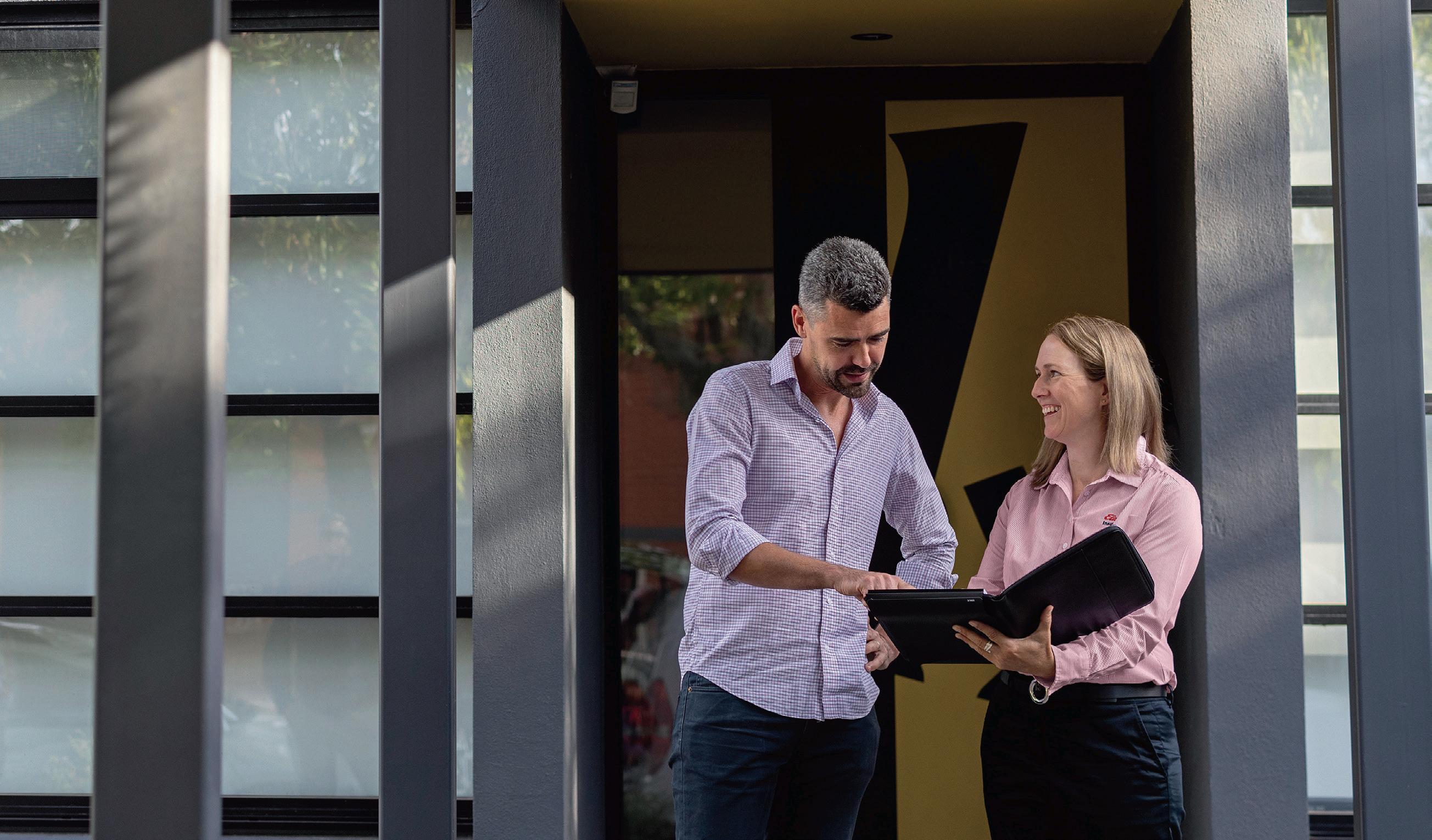
19:00
Home. I try not to work again until my daughters are in bed and I’ve had dinner and a pleasant time with my wife [Ornella Perez, chief experience officer of luxury secondhand startup Monogram].
22:30
Something that keeps me up at night, in a good way, is ARES: AR Enterprise Services, the venture we announced in March that does Snapchat technology outside of Snapchat. More and more, you’re going to be able to directly try on something on X, Y and Z websites instead of having to go back to Snapchat.
If we want to democratise AR, we can’t only do it on Snapchat. You might have seen interactive AR mirrors in stores. We’ve been investing in augmented reality glasses, the Spectacles. The Spectacles will be used in education, training, gaming and entertainment but Snapchat is putting them to use in bricks-and-mortar retail stores first.
Presented by Qantas Business Rewards
This year, decade-old Australian natural foods startup Raw C will turn over $30 million. Founder Scott Mendelsohn is now in full flight building his export market through the power of in-person collaboration.
Scott Mendelsohn calls himself “head coconut” but that underplays his idea to import pure coconut water from Asia, packaged in cartons to satisfy the growing Aussie thirst for convenient, natural products. “I was drinking lots of coconuts when I was living in China,” says the founder of Raw C, who spent about eight months in Asia working in the promotional apparel trade.
When he returned to Australia in 2012 and was casting about for his next career move, a lightbulb flashed. “I’d seen a coconut water brand in the US that had added sugar and decided I could do something better,” he says.
From humble beginnings selling boxes of Raw C from the boot of his car, Mendelsohn now employs a team of 11 and says the business will turn over $30 million this year, distributing
more than 1000 containers of product across Australia, New Zealand, the Middle East, South Africa and the United States.
Mendelsohn built his brand from a standing start with no experience in the FMCG industry but says he learnt by being there “at the coconut face” – a crucial leg-up made possible by smarter business travel.
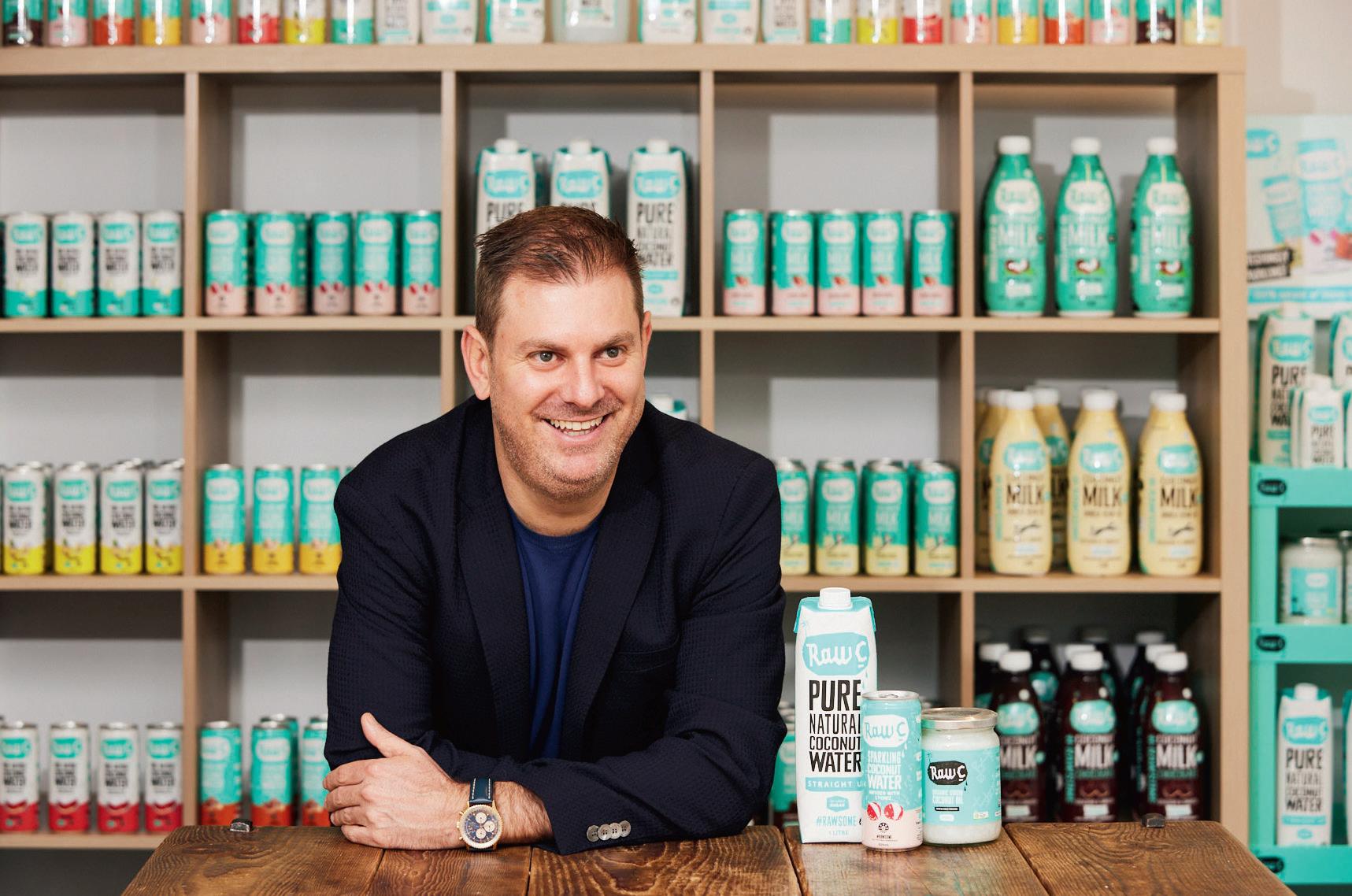
“In the early days, I was flying back and forth to Asia a lot, scoping out farmers and factories. Today, all our coconut water is sourced and packaged in Vietnam – it’s better quality
and a more visible supply chain. Singapore is also a frequent route for me. I’ve been going to the massive FHA Food & Beverage trade show there since we launched. This year, Raw C exhibited for the first time and it was exciting to discover there’s a lot of interest from customers in Asia. You can’t build a business without strong relationships with customers and suppliers, and being on the ground is also the only way to test the market and see for yourself what others are doing. Travel and the ability to earn and use Qantas Points is essential. As a Qantas Business Rewards member, I earn points twice – for the business and myself –by adding our ABN when booking flights and hotels. I also use my American Express Qantas Business Rewards Card to pay for the flights so the points Raw C earns from flying are tripled.”
“Raw C is now in all the majors and most of the independent supermarkets across Australia. I still go to all the big meetings in person and make a point of visiting our smaller retailers, too. My national channel manager is based in Tasmania and he flies all over to see retailers and distributors for face-to-face meetings. It’s super-important. I don’t like negotiating over video calls – it’s in-person meetings that have landed our biggest customers. Our team book all their flights through our Qantas Business Rewards account to earn points for the business as well as for themselves. Those on the road in company cars have BP Plus fuel cards linked to our Qantas Business Rewards and book their stays through Qantas Hotels. Earning points on everyday business expenses helps us save on future trips. It all adds up.”
“Flying to visit retailers and distributors is core to our business and also handy for earning lots of extra Qantas Points for future trips,” says Mendelsohn.


“I wouldn’t say I’m a grand master of earning points yet but I do focus on it – it has big benefits for the business.”
“I fly to the US regularly to see what’s trending in natural and organic food and beverages –from packaging to marketing, branding, ingredients and flavours. After the main expo, I stay on to check out local retailers to see what products are popular and get inspiration for new products. This year, I stayed in LA for a month to study the market and appoint a partner for our launch in Southern California. I’m a Platinum One Qantas Frequent Flyer and at LAX, coming home, I got a surprise upgrade from Business to First. It was a much-appreciated reward and came at the end of a few busy weeks. Knowing the dates for these trade show trips ahead of time, I watch for Business specials or double-status credit offers. As soon as they pop up, I book through Qantas Business Rewards.”
“Off the back of the success of Raw C, I’ve started investing in other Australian FMCG businesses. Orange is one of Australia’s great food bowls and I fly out there on the QantasLink Dash 8 to check out opportunities; I’ve done eight trips in the past couple of years. The Qantas regional network lets me get around to check things out in person. Orange is a super-quick flight from Sydney and spares me a four-hour drive so it saves time and money. We always look for ways to earn points for the business to offset the cost of our flights. As a Qantas Business Rewards member we earn extra points when we shop at Qantas Wine. Later this year, I’m taking all of our staff on a teambuilding trip as a reward for achieving our profit target and I’ll be booking through Qantas Hotels to earn more Qantas Points for our business.”
As a Qantas Business Rewards member, your business earns Qantas Points on flights, hotels and everyday business expenses on the ground.* You can redeem these points on a range of rewards, including flight upgrades, office tech or wine for your next staff event.
Your business earns up to 40 Qantas Points for every 100 points your traveller earns every time they fly for work.* Simply add your business’s ABN and the traveller’s Frequent Flyer number when you book.
Turn expenses into Qantas Points with over 50 partners across a wide range of business services, including fuel, travel, credit card spend and more.*
Use your points to save on flights and upgrades directly from your Qantas Business Rewards account or transfer them to any Qantas Frequent Flyer account to redeem on hotels, car hire, wine or office tech from Qantas Marketplace.#
This forward-thinking telehealth company, developed within the CSIRO, overcomes geographic challenges to make medical services more accessible.
Founders
Dr Silvia Pfeiffer (below), 55; Nathan Oehlman, 38
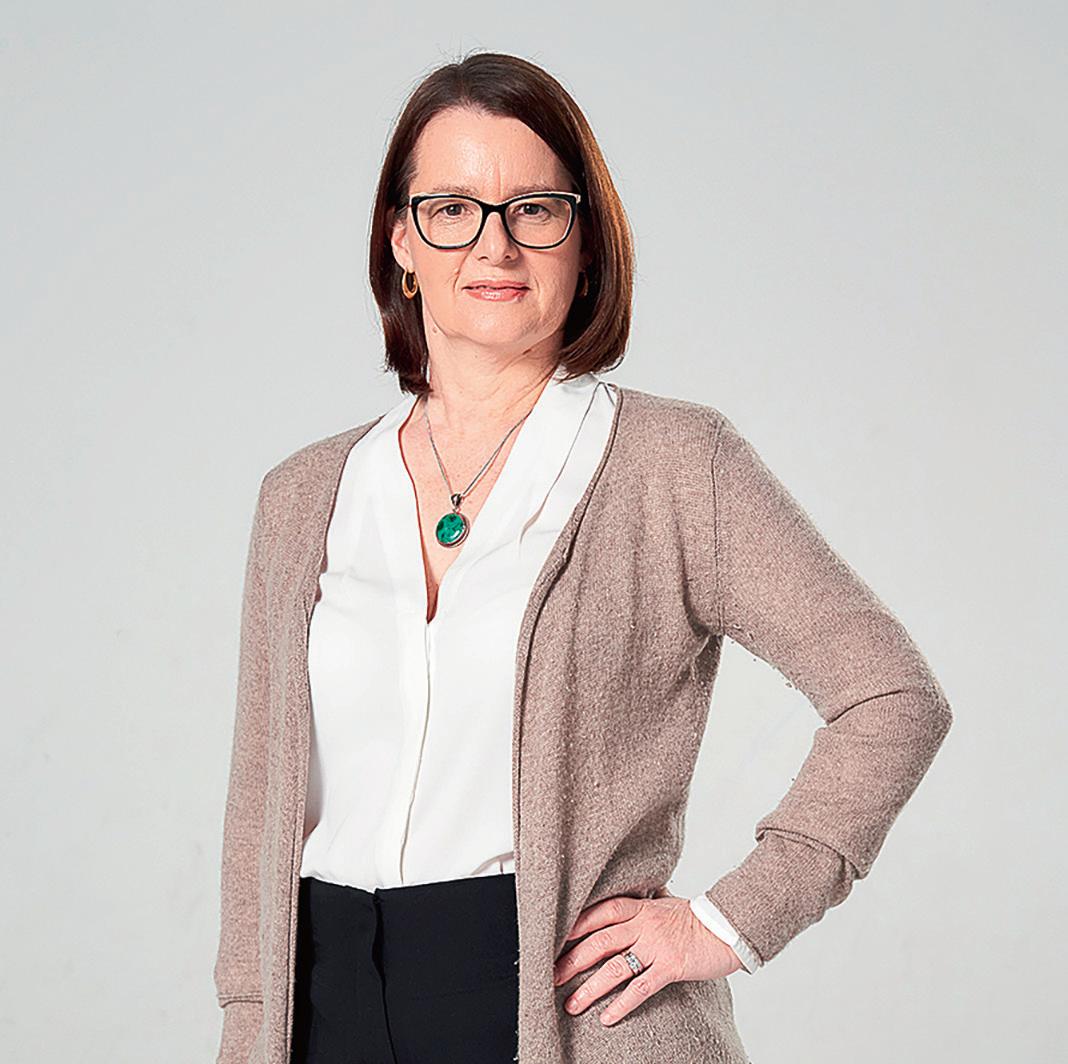
First customer
Royal Far West School speech and language pathologists, 2015
Staff
54
Investors
CSIRO/NICTA, EVP, Main Sequence Ventures, Medical Angels, Giant Leap Fund
Headquarters
Sydney, with offices in Brisbane and Delaware in the United States
Market valuation
Not disclosed
Where did the idea come from? Back in 2015, computer scientist Pfeiffer was part of a CSIRO team working on “video technology in a web browser, applying it to healthcare as the key use case”. It began as research about virtual critical care for remote patients but Pfeiffer aimed to take it further. “I wanted to give patients the ability to talk to clinicians no matter where they were – at home, in an ambulance, in a hospital, wherever they needed access to care. We wanted to have a platform for them to reach a clinician and to help with the digital transformation of healthcare.”
How did it get off the ground? Before being spun out from CSIRO as a commercial venture in 2018, Coviu’s first real-world test was with Royal Far West, a charity that works to improve health outcomes for regional and remote kids. Coviu supported a project where speech and language pathologists developed a program to work with children via telehealth, using the computer to deliver gamified interactive exercises as if they were together in one room. “It’s all about clinicians being able to ‘operate at the top of their licence’, as it’s known. We’re supporting them to give the best quality care, virtually.”
Significant breakthrough? Coviu has partnered with 2M Language Services, a medical translation company. “It provides interpreters who understand health language and translate that in a video call. They can be brought onto a call within two minutes.” This is especially valuable in emergency departments. “It makes a real difference with the accuracy of diagnosis and the patients’ understanding of what they need to do. Family members often try to interpret but they might not understand the technical terms, which can be a real risk for the patient and the clinician.” This telehealth-plus-interpreter service is increasingly useful as virtual emergency departments grow in number and community favour.
What is it? Coviu – pronounced “co-view”, short for “collaborative viewing” – is telehealth software. “We refer to it as a measurementbased virtual-care platform, helping clinicians deliver highquality care online,” says CEO Dr Silvia Pfeiffer. Coviu has moved beyond the video call hook-up that we’re all now familiar with and offers a range of more than 50 specialist apps, assessment questionnaires, AI-based diagnostics and even access to real-time translators.
What’s next? “The future of healthcare will be digital but change takes a long time.” A service must have an item number to be eligible for refund, whether from public or private insurance. Medicare reimbursements for telehealth consultations were approved during COVID, at first temporarily then permanently. “Once reimbursements are approved, things move very fast.” As Coviu enters the United States market, reimbursements are available there for virtual patient monitoring, using devices such as a pulse oximeter. “We don’t have reimbursements for anything like that in Australia, even though I talk about it all the time. We’re about 10 years behind the US and Europe from a digital therapeutics point of view. Now we’ve done telehealth, my guess is the other steps will come in the next five to 10 years.”
coviu.com
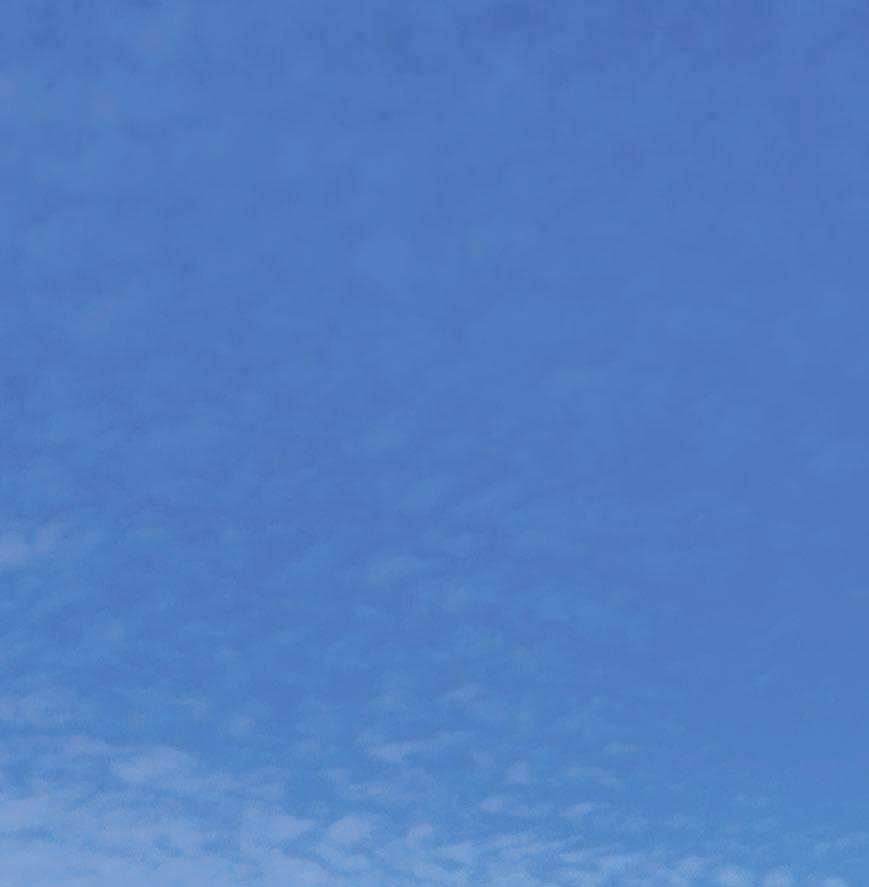
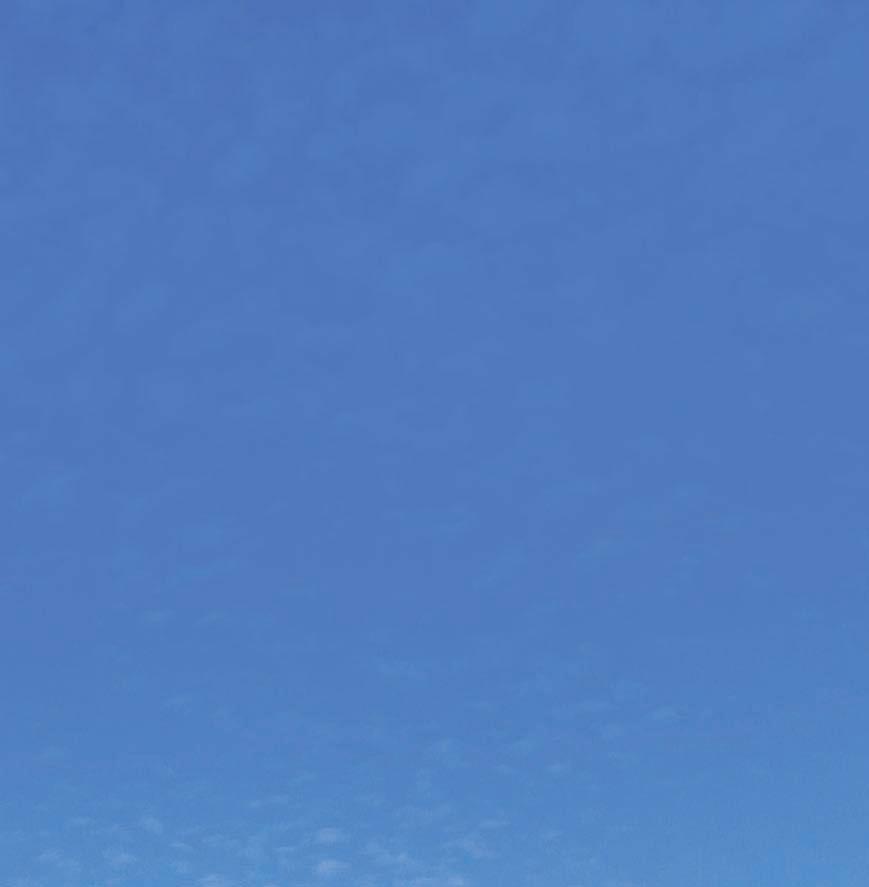
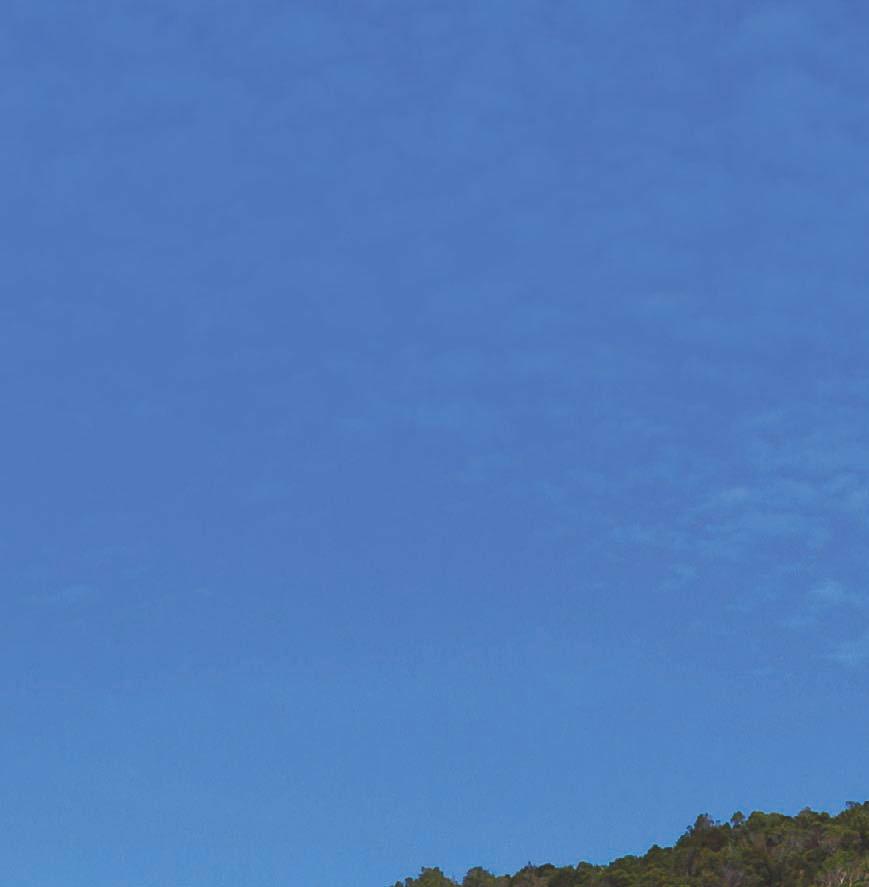








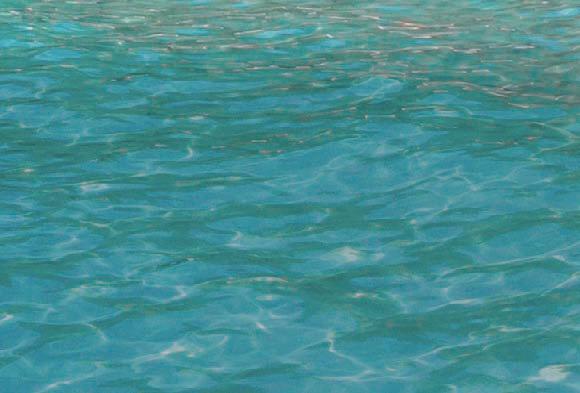

“Digital solutions, if approached well, will help a business make their product or deliver their service better, faster and more economically,” says Tamara Ogilvie, who facilitates digital innovation in SMEs from within CSIRO’s SME Connect group. “As a business owner, the competitors that will keep your future self awake at night are those who’ve nailed it.”
Cloud-based analytics, AI, robotics: Industry 4.0 or the Fourth Industrial Revolution is here. While almost every Australian company is coping with rising costs, skills shortages or supply chain issues, opportunity knocks for SMEs with a new wave of integrated software and hardware solutions available via subscription. This means businesses that don’t have in-house technology expertise can access sophisticated tech, start small and scale their subscription as they grow.
Skincare provider TBH (The Biofilm Hack) is the brainchild of Rachael Wilde, who acquired the patent for a scientifically developed acne treatment and turned it into a range of products, launching TBH with her mum, Bridget Mitchell, in 2020. Their very small company – with a total of five employees – was plagued by variations in fulfilment needs. Averaging 80 to 100 ecommerce orders a day, they were often bowled over by Black Friday sales or Afterpay Day sales, which saw everybody on staff, plus casuals, picking and packing late into the night.
“We were spending way too much time rostering casual packers,” says Mitchell, who says the work of administering wages and superannuation for a constantly changing workforce was unsustainable. In looking for a third-party logistics provider, they came across Workit Spaces, coworking facilities that include access to warehousing, loading docks, forklifts for product handling and a sophisticated fulfilment service, SKUtopia.
SKU stands for Stock Keeping Unit, a unique inventory number, which allows robots to find specific products (every size, colour and material variation has its own SKU) in warehouses and select them to fulfil orders. SKUtopia integrates inventory control and customer communications with automated picking and cut-to-fit packaging, shipping to anywhere. A soonto-launch fleet of electric last-mile delivery vehicles will service greater Sydney, Melbourne and Brisbane.
TBH moved in to Workit in 2022 and has handed its warehousing and fulfilment over to SKUtopia. “We’re only a month in,” says Mitchell, “and we’re at least cost neutral, with the potential to save.” Adds Wilde: “As the business scales, the cost efficiencies are there. We’ve set ourselves up, without incurring extra cost, with a pathway to efficient growth.”
Multifaceted communications platforms, once known as “call-centre AI”, are another category of digital product now available
MA:JU:23:QA
Leveraging third-party software and hardware solutions could be the path to a new digital frontier.
by subscription to big and small companies. “Historically, small businesses typically had an on-premises phone system,” says Gerard D’Onofrio, area vice president, ANZ, for comms platform Dialpad. “Or they’d issue mobile devices to their staff.” Add a provider to manage chat online and another to do SMS to customers and lines can get tangled. Dialpad streamlines all of that into one platform, plus it records and transcribes calls, providing note taking for salespeople who need to keep track of multiple conversations each day.
For Stratton Finance, a 25-year-old business that brokers loans for people and companies to buy moving assets, such as cars, caravans and farm machinery, Dialpad offers visibility over the number, duration and quality of calls, and creates a consistent customer experience.
With more than 200 sales staff across Australia and 20 to 30 lender partners, “we have about 40,000 combined inbound and outbound calls a month,” says Stratton’s chief technology officer, Chin Hui Yeo, who oversaw the integration of Dialpad into its sales force operations.
After a year, the company has seen greater customer engagement. New salespeople reach a high level of product familiarity, competence and success rates within two months instead of the previous three to six months. And employees are able to do their jobs from anywhere that has an internet connection.
For many engineers, Snowy 2.0 is an irresistible opportunity to be a part of an infrastructure project that’s set to power our nation into the future.

Civil engineer Nabin Gyawali was drawn to Snowy 2.0 – Australia’s largest committed renewable energy project – because of the many engineering firsts the project was achieving. And since joining Future Generation Joint Venture, he’s also been able to find the right work-life balance.
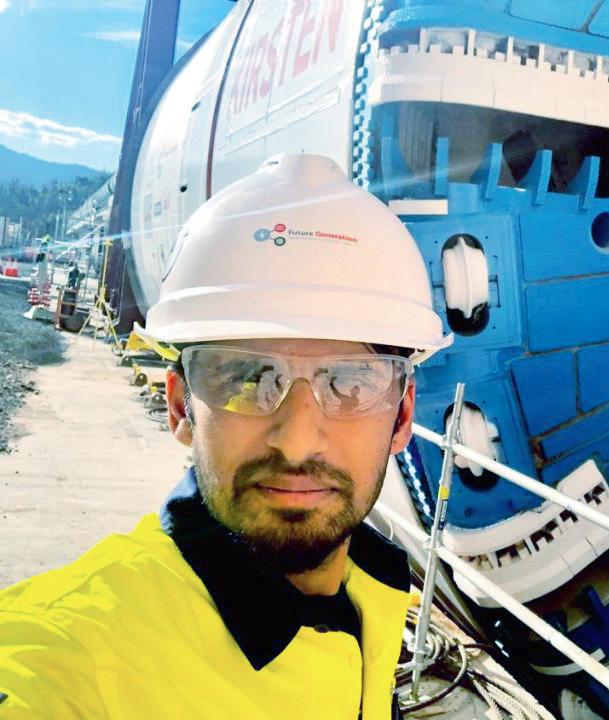
What’s your role on Snowy 2.0?
I’m a permanent work engineer so I oversee and coordinate the construction team, assisting them with all the technical requirements. I also collaborate with the design team if any changes are required during construction. Currently, I’m looking after the excavation and support of the headrace and tailrace surge shafts.
What does this involve?
There are two surge shafts in the project –headrace shaft, which is located at Marica, and tailrace, in the powerhouse complex at Lobs Hole. As this is pumped hydro, water flows both ways. Once completed, the headrace surge shaft will be one of the largest and deepest operational shafts in the world. We work with a multidisciplinary team of engineers to ensure that all of the required design and drawings are available to progress the project in a safe manner. It’s a really important part of the work.
How has your career progressed since you joined Snowy 2.0?
I was hired as a structural engineer in 2021 and I was promoted to permanent work engineer in January of this year. Getting more responsibilities fuels you to move forward. I grew up in Nepal and after my first degree, I worked for two years on a hydropower project there. Snowy 2.0 is a big project with a lot of scope and lots of things to learn. For a young engineer like me, it’s a huge advantage for my career and I’m very lucky to be a part of it.
EXPLORE OUR NATION-BUILDING CAREER OPPORTUNITIES
Snowy 2.0 is an internationally recognised project using engineering innovation to enhance the iconic Snowy Scheme. Future Generation JV provides work-life balance, FIFO rosters and charter flights from Melbourne, Sydney and Brisbane. Now hiring Drill and Blast personnel, Technical staff, Engineers, Supervisors, Superintendents and more.
How do you balance work and home life?
I live in Cooma with my wife and work five days with weekends off. It’s a great life and the countryside reminds me a little bit of Nepal. I go cycling with a group of friends every weekend, until winter, when we go skiing. In summer, it’s only an hour-and-a-half to drive to Merimbula and the beach. People from all over the world work on Snowy 2.0 so the cultural exchange and sharing makes it a very good place to work.
Scan the QR code to learn more. Or visit

futuregenerationjv.com.au
 Presented by Snowy 2.0 Principal Contractor Future Generation Joint Venture
Nabin Gyawali
Presented by Snowy 2.0 Principal Contractor Future Generation Joint Venture
Nabin Gyawali


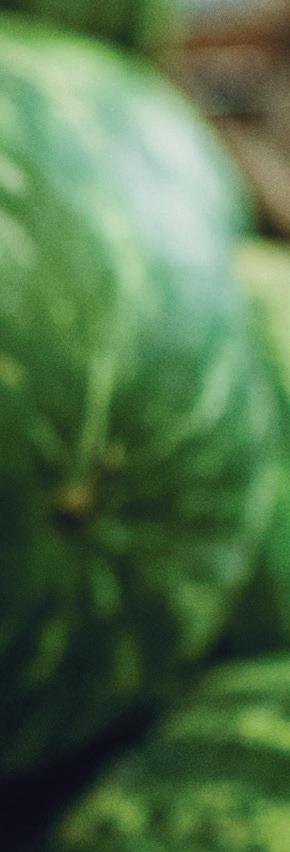


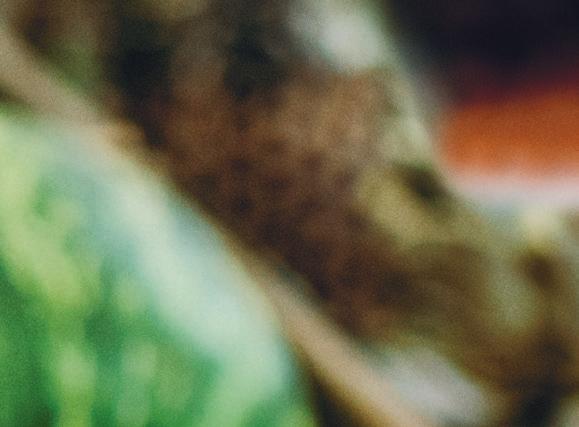
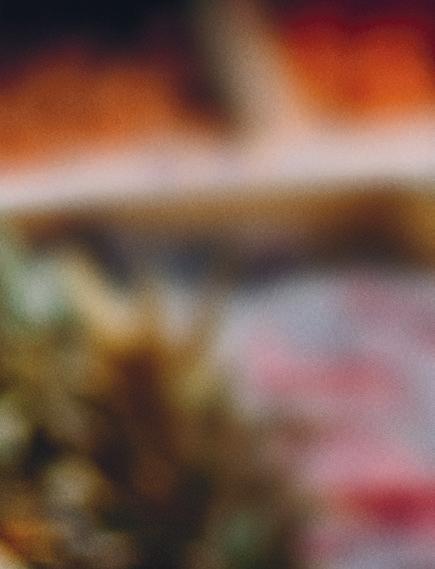
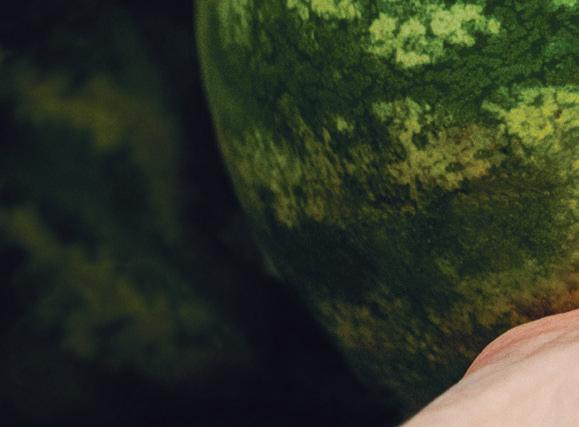

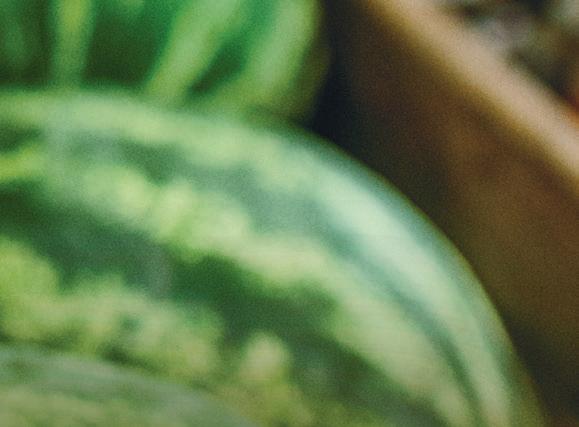
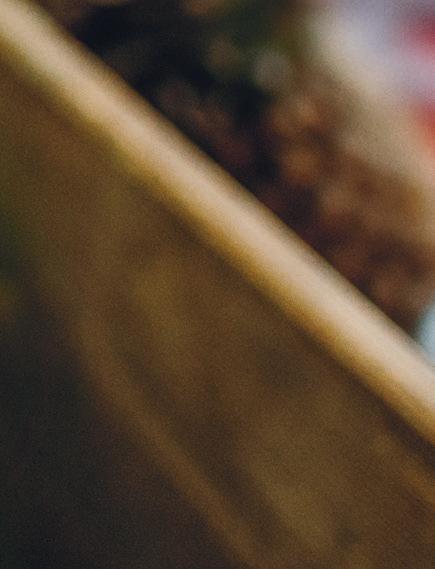
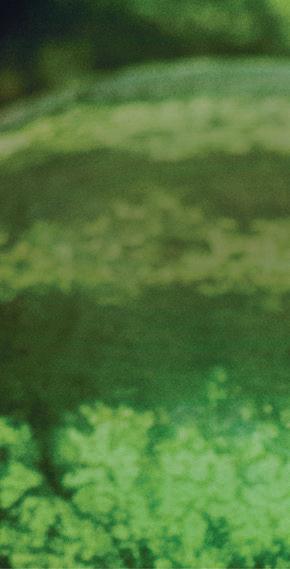


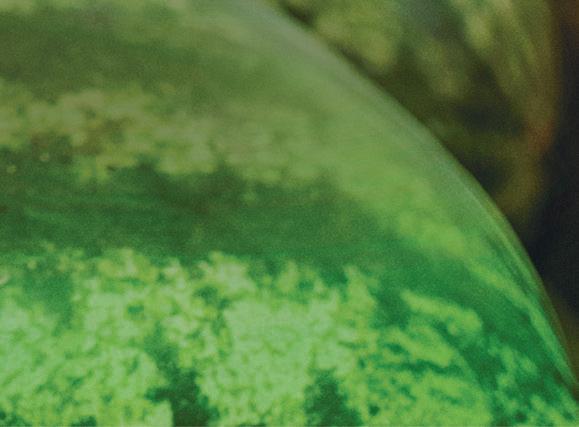

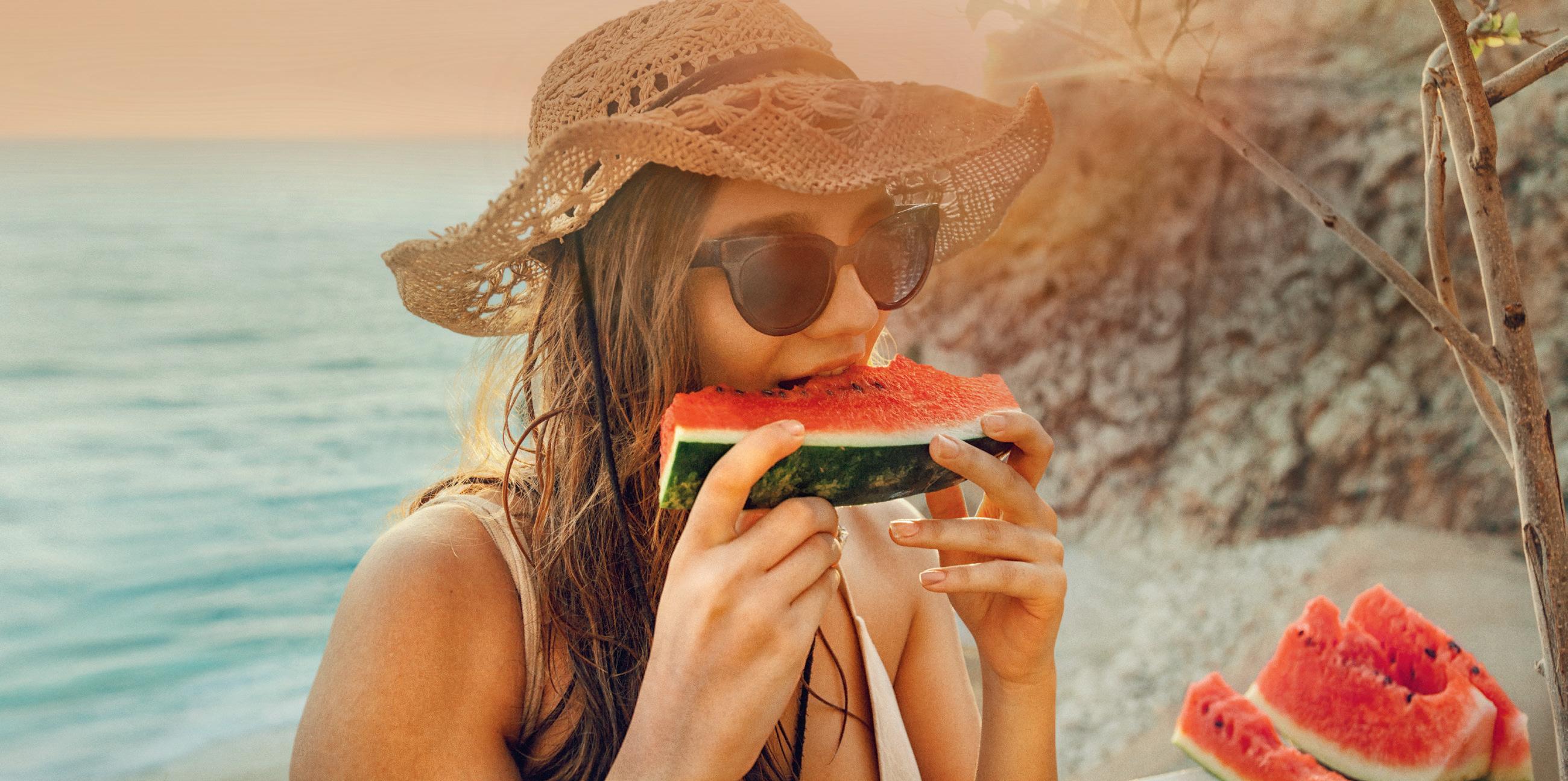


Premiere movies, hit TV shows and absorbing audiobooks

There’s something for everyone in this selection of new films.
Australian director Julius Avery (Overlord ) resurrects the most well-worn aspects of the original 1973 The Exorcist movie, along with pieces from the real life of Father Gabriele Amorth, appointed by the Pope to perform exorcisms. Russell Crowe (above, right) slips on the vestments –and a questionable Italian accent – to rail against a wily super-demon, determined to gain a foothold in the Catholic Church. Rated MA15+
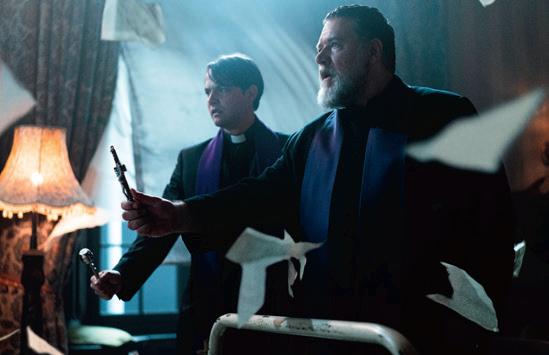
Roughly two decades before George R.R. Martin’s novel, A Game of Thrones: A Song of Ice and Fire, there was a board game so potent with themes of medieval sorcery and dark intrigue, it incited a movement of mothers against it. Dungeons & Dragons, invented in 1974, allowed tweens and teens (and not a few adults) to inhabit a choose-your-own-adventure world of wizardry, strategy, royalty and rough justice. It was Tolkien for young punks; Fortnite for ’80s kids. It was huge.
All of which is to say, this is not your usual franchise movie. Although its leading man, Chris Pine (above, third from left), has done franchises before – Wonder Woman and Star Trek – he’s never showcased such an openly winky
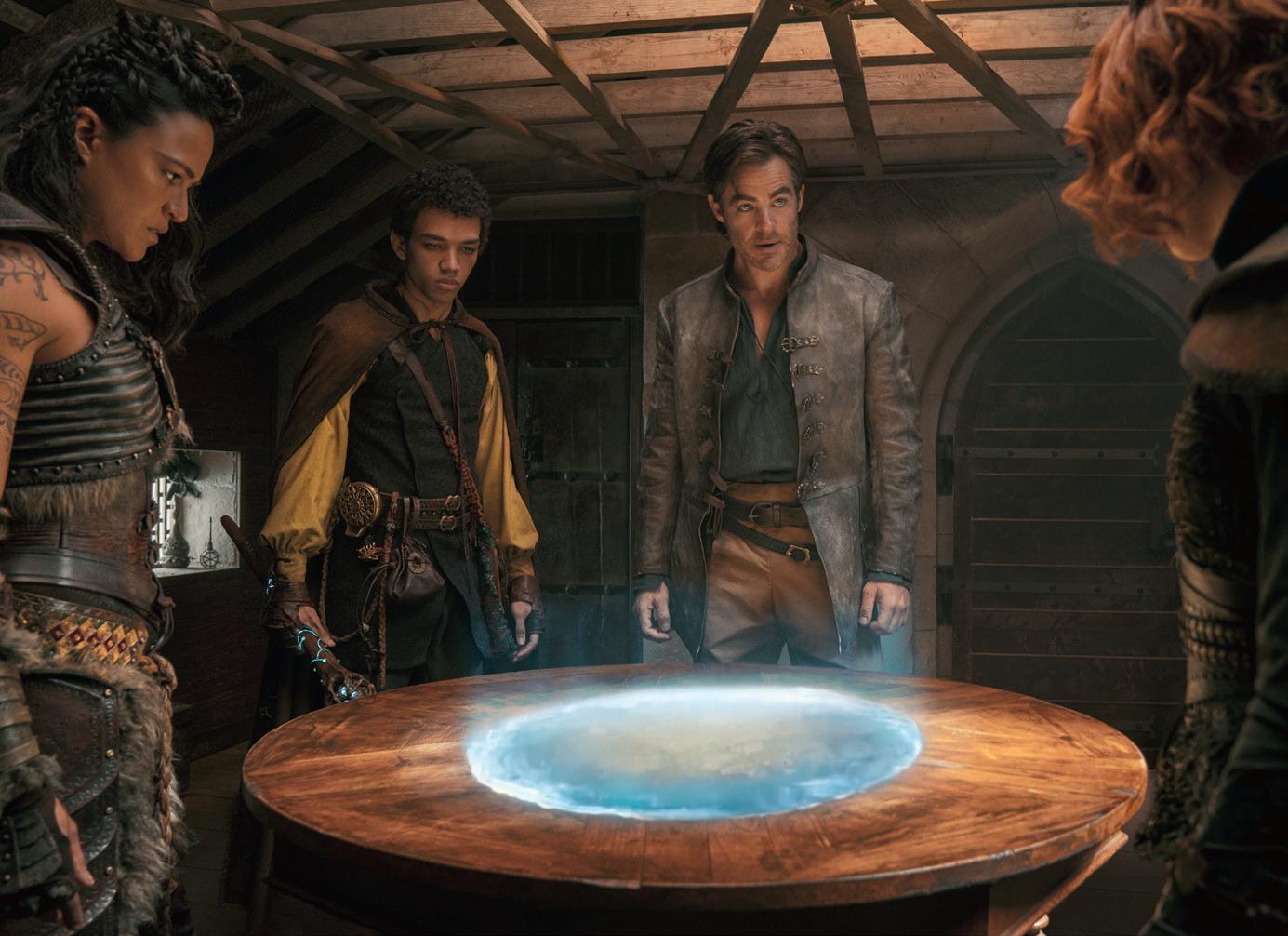
and fun-loving wit. Pine stars as lute-playing thief Edgin Darvis who, along with a garrulous Hugh Grant as Forge Fitzwilliam, manages to elevate the usual Robin Hood themes and Game of Thrones-style battle scenes into more than the sum of the scenery.
Edgin’s quest, to recover a lost relic, is helped by Holga (Michelle Rodriguez) and thwarted by evil sorcerer Sofina (Daisy Head), to arrive at a place that’s tonally reminiscent of The Princess Bride ’s Cliffs of Insanity, where Cary Ewles and Mandy Patinkin traded barbs between blows. Something ’80s kids will no doubt appreciate. Rated M
Allison (Florence Pugh) has a charmed life until she becomes the sole survivor of a car accident in which she was the driver. When she emerges a year later, wrestling with grief, guilt and an addiction to opioids, she forges an uneasy connection with Daniel (Morgan Freeman, above, with Pugh), the man who was set to be her father-in-law before the accident. Writer and director Zach Braff and Pugh were a couple during the making of the movie, which Braff describes as a cathartic reflection on the trauma of losing his father, sister and best friend in the space of a few years. Although the subject matter is dark and the set-ups a little folksy, nothing can dim the luminosity of Pugh’s performance. Rated MA15+
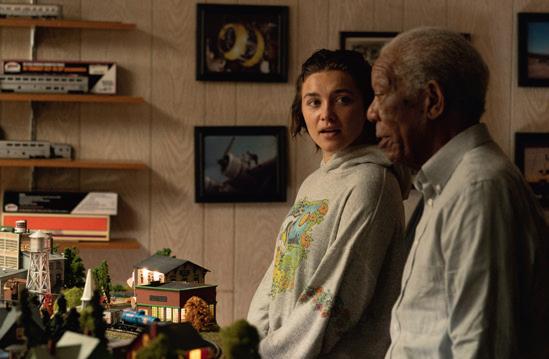
Willem Dafoe (right) stars as professional thief Nemo, who’s attempting to steal a collection of million-dollar artworks from a swanky New York penthouse. When the heist goes wrong, Nemo finds himself locked in the high-tech abode. What follows is an indoor version of Cast Away, with a little bit of COVID lockdown subtext thrown in. Dafoe slowly unravels alone; as the sun rises and sets on days that are tortuous in their monotony, the only indication of time passing is the growth of his hair. Determined to escape, Nemo amasses all the furniture in the house, building his personal Tower of Babel toward the skylight. Will he make it out of his high-tech prison of empty wealth? Does anyone? Directed by Vasilis Katsoupis (who also co-wrote the screenplay), the film has echoes of Serbian conceptual artist Marina Abramović’s works, which often focus on endurance, pain and connection (and a little bit of affectation, too). Rated MA15+


Fans of ridiculous animal movies such as Snakes On A Plane and Sharknado take note: there’s a new predator in town. This is based, very loosely, on the events of 11 September 1985, when narcotics-officer-turned-drug-smuggler Andrew C. Thornton accidentally dropped a massive haul of cocaine from his plane into the Chattahoochee National Forest, Georgia. Thornton did not survive that day and, after a subsequent cocaine overdose, neither did the bear. This film posits an alternate reality, in which the 250-kilogram beast is galvanised by the drug, turning him into a Terminator bear of sorts. Viewers may not know whether to laugh or cry at what unfolds, though one word may resonate: “RUN!” Starring Keri Russell, Jesse Ferguson, and, in his last film, the late Ray Liotta. Rated MA15+
Whatever your mood, there’s a show to match.
Co-created by Mindy Kaling (The Office) and starring Pauline Chalamet (big sister of Timothée) as Kimberly, a freshman at a fictional college in Vermont, this comedy follows four young women navigating the freedom of college life. Rated MA15+
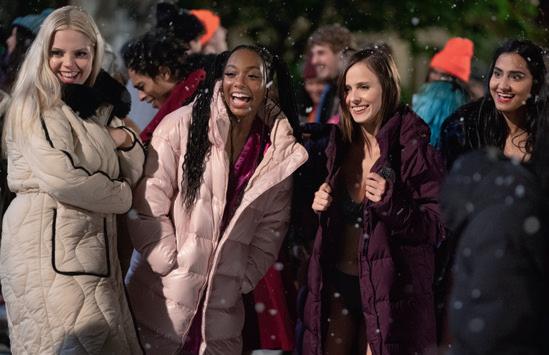
When glamorous actress Suzie (Billie Piper, below) has her phone hacked and compromising photos leaked, her first instinct is to deny all. Unfortunately, that doesn’t quite work. Rated MA15+
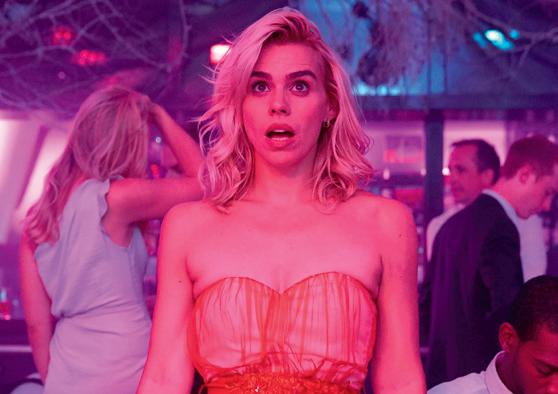
Not since King Lear pronounced his child “thankless” has a father held so much contempt for his offspring. But billionaire media mogul Logan Roy (Brian Cox) must decide who among his three feckless children will take over the family corporation. Will it be skittish Kendall (Jeremy Strong) and his bombastic ideas for world dominion? Or the snivelling Roman (Kieran Culkin, above, right, with Strong), whose sole joy is found in masochism? Or will only daughter Shiv (Sarah Snook) rise up and betray her Democratic values to take the reins? It will keep you guessing until the final episode. Rated MA15+
An ex-soldier and hitman finds respite in an acting class… So begins the darkly hilarious Barry, created by and starring Saturday Night Live alum Bill Hader (left), whose acting coach, Gene (Henry Winkler), quickly becomes his mentor. Rated MA15+


Part origin story, part musical, part spin-off of the iconic movie, this series is about the biker-jacketed girls who “ruled the school” four years before Danny met Sandy. Rated PG
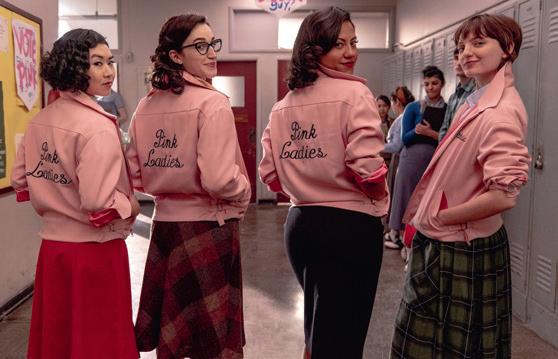
Tune into these compelling stories.

With their mother dead and father gone, the five Dunbar boys are forced to fend for themselves. To survive, they’ve had to write their own rules. Clay, the quiet fourth brother, will be the one who creates a miracle of sorts, building a bridge for his family to transcend life as it is for something better. This Australian coming-of-age story from Markus Zusak, author of worldwide bestseller The Book Thief, is about the possibility of love and dignity in the midst of terrible loss and cruelty.

After an especially fraught Christmas, it’s crunch time for Lou and Josh’s 14-year marriage. For the next year, they manoeuvre their way through a series of self-inflicted tests to decide their union’s staying power: is it worth the effort or is it better for both of them to call it a day? Sydney-based writer Holly Wainwright’s novel paints a true-to-life portrait of a contemporary Australian relationship with all its unspoken regrets, everyday frustrations and complicated emotions.
In this lyrical memoir, Kurdish refugee and journalist Behrouz Boochani writes of the six years he was incarcerated on Manus Island. His firsthand account of the trauma suffered in offshore processing centres proved to be an act of survival. Winner of the 2019 Victorian Premier’s Literary Award for Literature and for Non-fiction, this book bears witness to the human cost of detention and gives voice to those still in exile.
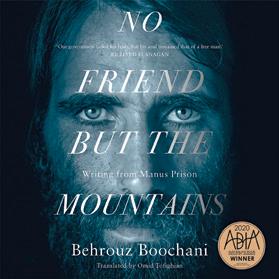
Free Wi-Fi and Entertainment App
Once onboard, connect your own device to Qantas Free Wi-Fi on domestic flights in three simple steps to access the internet and Qantas Entertainment App.
STEP 1
Enable Aeroplane Mode and select the “Qantas Free Wi-Fi” network in your Wi-Fi settings.
STEP 2
Follow the prompts on the “Welcome Onboard” screen to connect.
STEP 3
Once you’re connected, you’re now ready to access the internet and the Qantas Entertainment App.
Enjoy
Having trouble connecting? Make sure you are connected to the “Qantas Free Wi-Fi” network and go to wifi.qantas.com in your preferred browser to start exploring. Inflight entertainment varies by route and aircraft. Voice calls are not permitted inflight.
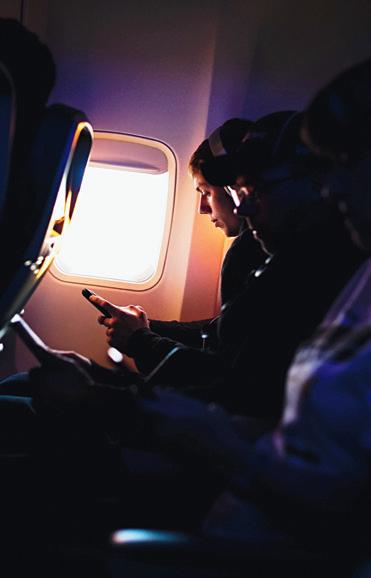
unlimited access to theaustralian.com.au, and themonthly.com.au when you are connected to Qantas Wi-Fi onboard and in Qantas lounges.
These exercises are designed to provide a safe way to stretch and enjoy movement in certain muscle groups that can become stiff as a result of long periods of sitting. They may be effective at increasing the body’s blood circulation and massaging the muscles. We recommend you do these exercises for three or four minutes every hour and occasionally leave your seat to walk down the aisles. Each exercise should be done with minimal disturbance to other passengers. None of these exercises should be performed if they cause pain or cannot be done with ease.
Ankle circles
Lift feet. Draw a circle with toes, moving one foot clockwise and the other counterclockwise at the same time. Reverse circles. Rotate in each direction for 15 seconds. Repeat if desired.
Knee lifts
Lift leg with knee bent while contracting your thigh muscle. Alternate legs. Repeat 20 to 30 times for each leg.
Neck roll
With shoulders relaxed, drop your ear to your shoulder and gently roll your neck forward and back, holding each position for about five seconds. Repeat five times.
01
Start with both heels on the floor and point feet upwards as high as you can.
02
Put both feet flat on the floor. Lift heels high, keeping the balls of the feet on the floor.
03
Repeat these three stages in a continuous motion and at 30-second intervals.
Knee to chest
Bend forward slightly. Clasp hands around left knee and hug it to your chest. Hold for 15 seconds. Keeping hands around the knee, slowly let it down. Alternate legs. Repeat 10 times.
Forward flex
With both feet on the floor and stomach held in, slowly bend forward and walk your hands down the front of your legs towards your ankles. Hold for 15 seconds and slowly sit back up.
Shoulder roll
Hunch shoulders forwards then upwards, backwards and downwards in a gentle circular motion.
Mobile phones and electronic equipment: All transmitting electronic devices, including mobile phones, tablets and laptop computers, must be switched to flight mode* prior to departure. Smaller devices such as mobile phones, e-readers, electronic games, MP3 players, iPads and other small tablets may be held in your hands or stowed in a seat pocket. Unless otherwise directed by the captain, these devices may remain switched on and used in flight mode during take-off, cruise and landing. Larger electronic equipment such as laptop computers may only be used from when the aircraft seatbelt sign is extinguished after take-off until the top of descent. After landing, the cabin crew will advise when flight mode may be switched off.
Headsets: Do not use a personal single-pin audio headset in the Qantas inflight entertainment system unless it is supported by a two-pin airline headset adaptor. Personal headsets that connect via a cable
to a handheld device can be used at any time from boarding until arrival. Headsets and other devices that connect via Bluetooth must be switched off for take-off and landing but can be used during cruise.
*Flight mode enables you to operate basic functions of your mobile phone or personal electronic device while its transmitting function is switched off, meaning you cannot make phone calls or send an SMS.
Your wellbeing is our priority. Our Fly Well program brings together a number of measures to give you peace of mind during your flight.
Cabin air: Our aircraft air conditioning systems are fitted with hospital-grade HEPA filters, which remove 99.9% of all particles including viruses. The air inside the cabin is refreshed every few minutes, ensuring the highest possible air quality.
Inflight: The aircraft configuration, including the seats and galley, act as a natural barrier, and people are not seated face to face. The direction of inflight airflow is ceiling to floor.
Enhanced cleaning: Our aircraft are cleaned with a disinfectant effective against coronaviruses, with a focus on the high contact areas of seats, seatbelts, overhead lockers, air vents and toilets. Our people are trained in the latest hygiene protocols.
Face masks: Some destinations require you to wear a mask during your flight or at the airport. Ensure you check the latest government requirements before you travel. Your face mask needs to cover your mouth and nose, fit securely and must be worn unless you’re under 12 years of age or have a medical exemption.
Your inflight health: When flying, passengers can be seated and inactive for long periods of time. The environment can be low in humidity and the
cabin pressure equivalent to an altitude of 2440 metres above sea level. The following advice helps you stay healthy during your journey.
The importance of inflight blood circulation and muscle relaxation: When walking, the leg muscle action helps return venous blood to the heart. Sitting in the same position for a long period of time can slow this process and, in some people, leads to swelling in the feet. Some studies have shown that immobility associated with travel of longer than four hours (by air, car or rail) can also lead to an increased risk of deep vein thrombosis (DVT), or clotting in the legs. Personal factors that increase the risk of DVT include:
Age over 40 years
Personal or family history of DVT or pulmonary embolus
Recent surgery or injury, especially to the lower limbs, pelvis or abdomen
Cancer
Inherited or other blood disorders leading to clotting tendency
Pregnancy
Oestrogen therapy (oral contraceptive pill or hormone replacement therapy).
There are a number of ways to help reduce the possibility of DVT, including the following:
Avoid leg-crossing while seated
Ensure adequate hydration
Minimise alcohol and caffeine intake before and during your flight
Wear comfortable, loose-fitting clothes
During your flight, move your legs and feet for three to four minutes per hour while seated and move about the cabin occasionally
Do the light exercises we recommend here (see above) and through the inflight entertainment system.
If you have concerns about your health and flying, or you feel that you may be at risk of DVT, Qantas recommends that you talk to your doctor before travelling. Additional measures such as well-fitted compression stockings or anti-clotting medication may be recommended for high-risk individuals.
Jet lag: Unlike other forms of transport, air travel allows for rapid movement across many time zones, which can disrupt the body’s biological clock. This is commonly known as jet lag. This disruption can affect various body rhythms such as the sleepwake cycle and the digestive system, leading to symptoms such as tiredness and lack of energy and appetite. In general, the more time zones crossed, the more disruption of the body clock and the more symptoms experienced after the journey. We recommend the following to minimise the effects of jet lag.
Before your flight:
Get a good night’s rest
During your flight:
Eat light meals
Wear loose, comfortable clothing and sleep when you can
Stay hydrated – drink plenty of water and avoid excess tea, coffee and alcohol
At your destination:
If possible, give yourself a day or two after arrival to adjust to the new time zone
Try to eat meals and do other social activities at appropriate destination times to adjust to the new time zone
Cabin humidity and hydration: Humidity levels of less than 25 per cent are common in the cabin, as the outside air that supplies the cabin is very dry. The low humidity can cause drying of the surfaces of the nose, throat and eyes and it can irritate contact lenses. If normal fluid intake is maintained during the flight, dehydration will not occur.
We recommend:
Drink water and juices frequently during the flight
Drink coffee, tea and alcohol in moderation
Remove contact lenses and wear glasses if your eyes are irritated
Use a skin moisturiser to refresh the skin
Cabin pressurisation: During flight, aircraft cabin pressure is maintained to a sufficient density for your comfort and health. As the aircraft climbs, the cabin may reach the same air pressure as at an elevation of 2440 metres above sea level. Cabin pressure does not pose a problem for most passengers. However, if you suffer from obstructive pulmonary diseases, anaemias or certain cardiovascular conditions, you could experience discomfort at these altitudes. These passengers should seek medical advice before flying, as some may require supplementary oxygen. Qantas can arrange this but requires at least seven days’ notice before travelling. The rate of change in cabin pressure during climb and descent is also carefully maintained and does not usually cause discomfort. However, children and infants, and adults who have sinus or nasal congestion, may experience some discomfort because of pressure changes during climb and particularly descent. Those suffering from nasal or sinus congestion because of a cold or allergies may need to delay travel. The following advice may assist:
To “clear” your ears, try swallowing, yawning or pinching your nose closed and gently blowing against it. These actions help open the Eustachian tubes, equalising pressure between the middle ear chamber and throat. If flying with an infant, feed or give your baby a dummy during descent. Sucking and swallowing help equalise pressure in an infant’s ears. Give children something to drink or chew during descent. Consider using medication such as nasal sprays, decongestants and antihistamines 30 minutes prior to descent to help open up your ear and sinus passages.
Motion sickness: Air travel, especially if turbulence is experienced, can cause motion sickness, as it leads to a conflict between the body’s sense of vision and its sense of equilibrium. Maintaining good visual cues (keeping your eyes fixed on a non-moving object) helps prevent motion sickness. When the weather is clear, you should look out at the ground, sea or horizon. If the horizon can’t be seen, closing your eyes and keeping your head movements to a minimum will help. While over-thecounter medications are available, we recommend
you consult your doctor about the appropriate medications. More information can be found: At qantas.com.au/info/flying/intheair/ yourhealthinflight
Through the onboard entertainment system
On our information leaflet available from Qantas or your travel agent
Smoking: Government regulations prohibit smoking on all flights operated by Australian-registered aircraft. The use and charging of all e-cigarettes and other personal vaporisers are not permitted on board an aircraft. There are smoke detectors in all toilets and penalties for regulation breaches.
Travelling with children: Please ask cabin crew for help if required. Baby food and nappies (diapers) are available on most flights, while some washrooms are fitted with baby change tables. Please dispose of nappies etc. in the waste bins.
Leaving flights: On international flights, the cabin crew will distribute the necessary Customs and Immigration forms. If you are stopping en route, you will need your boarding pass to re-board the aircraft. If you’re travelling as a domestic passenger on an international flight within Australia, retain your boarding card with the large D sticker. This will be required to clear Customs at your destination.
Transferring from Australian domestic flights numbered QF400 and above to international flights: At check-in you will be issued with your international boarding pass. Your international boarding pass and baggage will be tagged through to your final destination. There is no need to claim your baggage or attend check-in at the transfer airport. Follow the signs for international transfers passengers to the complimentary transfer bus (not necessary in Melbourne and Darwin).
Transferring from international to domestic flights numbered QF400 and above: On arrival at your Australian transfer port, go through Immigration and collect your luggage. Proceed through Customs and follow the signs to the domestic transfer area to re-check your luggage. A complimentary transfer bus (not necessary in Melbourne, Adelaide and Darwin) departs at regular intervals for the domestic terminal for your connecting Qantas flight within Australia. If your connecting domestic flight is numbered QF1-QF399, there is no need to clear Customs and Immigration. These flights depart from the international terminals. Customs and Immigration clearance will be completed at your final destination.
Transferring to a Jetstar domestic flight: If your next flight is with Jetstar (JQ) or a Qantas codeshare flight operated by Jetstar (QF5400-QF5999), you will need to collect your baggage and follow the signs to the Jetstar counter to check in for your flight and re-check your baggage.
The Qantas Group has a strict policy of denying boarding, or offloading any passenger who makes inappropriate comments or behaves inappropriately inflight or on the ground. Qantas will not accept any inappropriate comments as “jokes”. It will also seek to recover all costs incurred, including diversions as a result of security incidents, from those involved.
Security screening is subject to the laws and regulations of the country of operation. The Qantas Group ensures that its passengers, staff and aircraft are safe and secure through an outcome-focused, risk-based approach to security management. Qantas security standards apply across the business, including QantasLink and Jetstar. A dedicated operations centre monitors global security events 24 hours a day.
Pack your own luggage
Do not carry any items for another person Carry valuables, approved medication and keys in your carry-on baggage
All knives, sharp objects or cutting implements must be in checked baggage
Security measures can include random frisk search after consent is obtained. Passengers may request privacy and must be searched by a screener of the same gender
Important note: Security screening is subject to the laws and regulations of the country of operation.
On all international flights to and from Australia: Each container of LAGs in your carry-on baggage must be 100ml or less
All 100ml containers must be placed in a single transparent one-litre plastic bag
Plastic bags containing LAGs are to be screened separately from other carry-on baggage
All powders must be screened separately with restrictions on the carriage of inorganic powders over 350ml (350g)
Passengers may still carry prescription medicines or baby products sufficient for the flight
If departing, transiting or transferring on an international flight at an Australian
international gateway airport, duty-free powders and LAGs must be sealed, with receipt, in a security tamper-evident bag issued at the time of purchase
The Australian federal government has introduced full-body scanners at international gateway airports: Sydney, Adelaide, Brisbane, Cairns, Darwin, Perth, Melbourne and the Gold Coast
The Australian Federal Government has commenced introducing full-body scanners at major domestic airports: Adelaide, Brisbane, Cairns, Canberra, Darwin, Gold Coast, Hobart, Launceston, Melbourne, Newcastle, Perth, Sunshine Coast, Sydney and Townsville
At international gateway airports passengers refusing to pass through the scanner will be banned from entering the sterile area or boarding an aircraft for 24 hours
Exemptions apply for people with serious medical conditions, infants and small children, and people in wheelchairs
As per advice, the energy exposure is comparable to that from a mobile phone several metres away
There are no known safety concerns for people with pacemakers and metal implants or for pregnant women
Common items used every day may seem harmless but on an aircraft they may become dangerous. When the aircraft changes altitude, variations in temperature and pressure may cause items to leak, create fumes or catch fire.
Items that are forbidden on aircraft or have carriage restrictions include lithium batteries, other battery types, camping stoves, fuels, oils, compressed gases, aerosols, household cleaners, matches, lighters, paints, explosives (including flares, fireworks, sparklers and bonbons), emergency position-indicating radio beacons, radioactive material, biological and infectious substances and fuel-powered equipment. This list is not exhaustive so please carefully consider what items you pack for your next flight.
If you’re unsure about an item in your baggage, ask a member of our friendly cabin crew.
For further information, go to qantas.com or email dg@qantas.com.au.
Qantas is a partner in the Australian government’s Charter for Safe Travel. Travellers may obtain the latest travel advice for their destination by visiting smartraveller.gov.au.
Several countries are introducing automated immigration clearance procedures to cope with growing air-travel numbers. The goal is to provide a faster, smoother immigration experience to eligible passengers without compromising border security. Please note that some automated clearance options may not be available due to COVID. Countries providing facilities across our network:
Australia SmartGate: e-passport holders of Australia, Canada, China, France, Hong Kong, Ireland, Japan, Korea, Macau, New Zealand, Singapore, Sweden, Switzerland, UK and US
China e-Channel: citizens of China
Hong Kong e-Channel Residents: citizens and residents of Hong Kong
Hong Kong e-Channel Visitors: frequent visitors that are visa-exempt, including Australians
Indonesia Autogate passport gates: citizens of Indonesia
Japan Speedy Immigration: citizens and foreign nationals with re-entry and special re-entry permits
New Zealand SmartGate Plus: e-passport holders of Australia, New Zealand, UK and US
Singapore enhanced-Immigration Automated Clearance System (eIACS): citizens, permanent residents, work permit holders and APEC cardholders
UAE eGate: UAE citizens and residents
UK ePassport gates: e-passport holders of UK, Switzerland and European Economic Area (EEA)
USA Global Entry system: US citizens and permanent residents, Dutch citizens, South Korean citizens and Mexican nationals. Canadian citizens and residents with NEXUS membership
USA Automated Passport Control: for US, Canadian and Visa Waiver Program passport holders
Fee applies
Pre-enrolment required
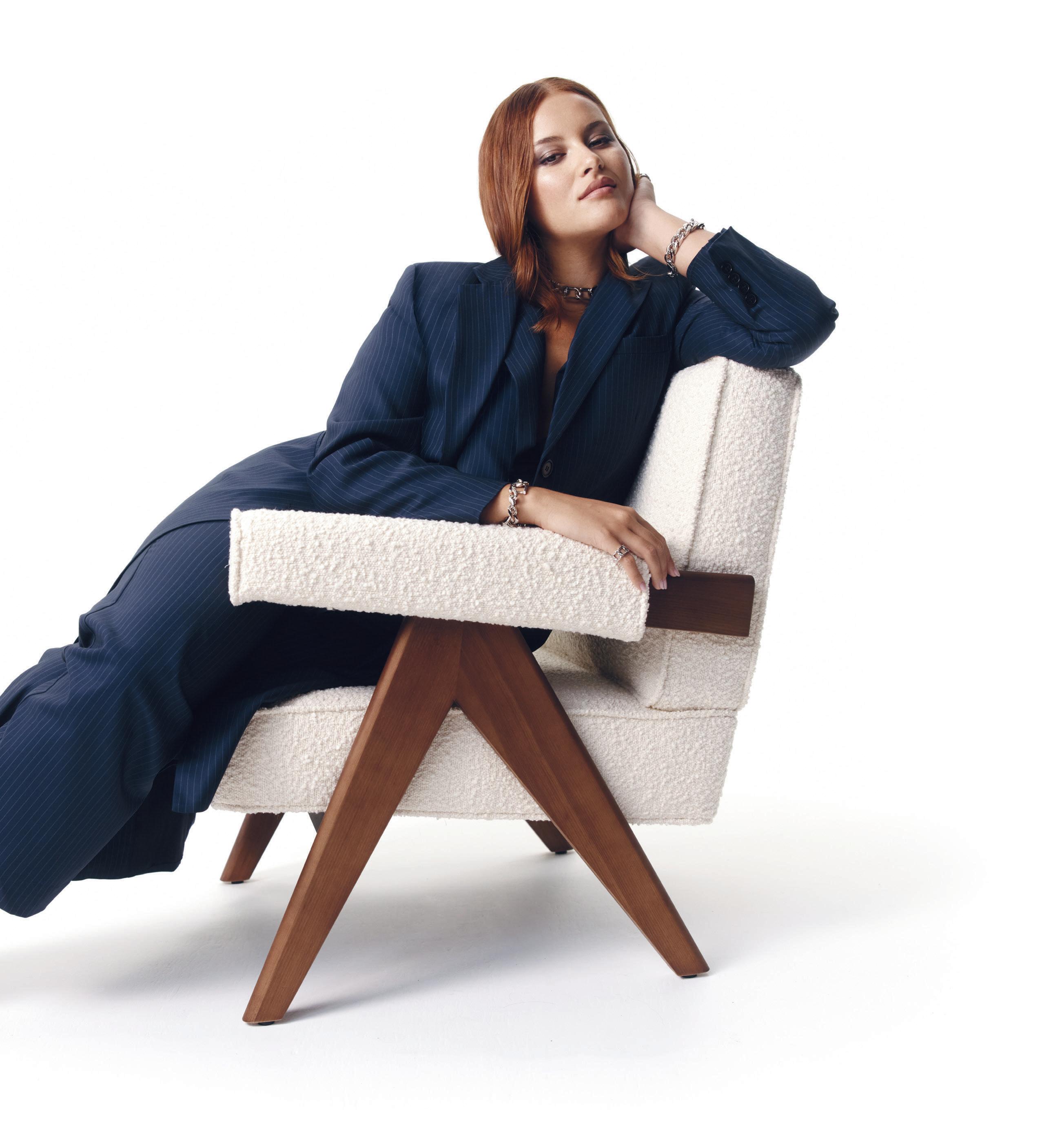

Across
10. Bright bluish bird (10)
11. Use sparingly (8)
13. Haphazard (12)
14. Hungered for (6)
16. Criminally wrecking (11)
18. Business books examiner (7)
20. Act out again (7)
22. Anxiety (11)
23. Tenant (8)
26. 29 February falls in one (4,4)
30. Auspicious opening (6,5)
31. Dubai rulers (7)
34. Stepped (on) (7)
35. Professional arborist (4,7)
36. Casual garment (1-5)
38. Unsourced (comment) (3,3,6)
41. Medicinal balm (8)
42. Eclectic architectural style (10)
Across
10. Flyer featuring royal angler (10)
11. Be careful not to waste jam (8)
13. Roadside sign seems to be out of order (12)
14. Badly wanted disc containing glowing review (6)
16. Having Salvador perform vocals behind vehicle is deliberately damaging (11)
18. He checks that accounts given are accurate (7)
20. Respond to directions inside and re-create scene (7)
22. Lack of confidence sensed in The Butterfly Effect? (11)
23. Live-in medico? (8)
26. Early ape confused when an extra day is added to calendar (4,4)
30. Very successful beginning to initial pilot training? (6,5)
31. Arab chiefs get the shakes when speaking (7)
34. Dent somehow keeps Rod from being trampled (7)
35. He treats diseased limbs (4,7)
36. Disturbing thirst to get to the top (1-5)
38. Unofficially taken from the album (3,3,6)
41. Note: Mint may be used in first-aid cream (8)
42. Station with up-to-date artistic style (10)
01. Parachutist needs some risky diversions (8)
02. Innocence proclaimed according to one interpretation (2,1,5)
03. Mia Farrow covered a great distance (4)
Down
01. Plane-jump sportsman (8)
02. To a degree (2,1,5)
03. A long way off (4)
04. Literary article writer (8)
05. Amendments (9)
06. Move up and down (in water) (3)
07. Consumer, end ... (4)
08. Detective (7,3)
09. Hammer for pounding meat (10)
12. Amalgamations (7)
15. Prisoner’s word-of-honour (6)
17. Derelict (building) (9)
19. Fade from view (9)
21. The E of NYE (3)
23. Disproof (10)
24. Utter not one word (3,7)
25. Nuzzling (6)
27. Hair shade, ... blond (3)
28. Release moorings (4,3)
29. Parade ground stance (9)
31. Has a sneaking feeling (8)
32. Capsize (4,4)
33. Desert hill (4,4)
37. Slams into (4)
39. Greek love god (4)
40. Tiny insect (3)
04. His work includes non-fiction prose pieces, eg, Bacon Or Lamb (8)
05. Edited versions of manuscripts about dreams (9)
06. Short haircut for Dylan? (3)
07. Ruse involved computer operator (4)
08. Exclusive view of investigator (7,3)
09. Offer is about to turn into a way of dealing with tough cuts (10)
12. Business takeovers involved Mrs Gere (7)
15. Organise plea or conditional release (6)
17. Gave up on a group with one lead drummer (9)
19. Paper said, “Out! Get lost!” (9)
21. The night before, five were in Europe looking disheartened (3)
23. Reputation for keeping quiet turned into loud denial (10)
24. Any Goths in trouble remain silent (3,7)
25. Journos in Georgia do some snooping (6)
27. If it builds up will you be grateful? (3)
28. Finish knitting while actors are on leave (4,3)
29. What you pay to listen (9)
31. Has doubts about supposed criminals (8)
32. Most keen to see lover collapse (4,4)
33. Beaches feature in Dan’s nude frolics (4,4)
37. Barges made for sheep (4)
39. Piccadilly statue is a bit of an eyesore from the back (4)
40. Farm worker? (3)
Tough puzzle, simple rules: each row, column and 3x3 box must contain the numbers 1-9. Hard
Create as many words of four letters or more as you can using the given letters once only but always including the central letter. Don’t use proper nouns or plurals ending with “s”. See if you can find the nine-letter word using all letters.
10
Complete the sayings and cross off the missing words as you find them in the grid of letters. The letters left will spell out another phrase.
A IN TIME SAVES NINE ACCIDENTS WILL ALL ROADS LEAD TO ANY IN A STORM BAD NEWS FAST BEAUTY IS ONLY BETTER SAFE THAN CRIME DOESN’T AND FORGET HE WHO IS LOST IF THE CAP , WEAR IT IGNORANCE IS IT TAKES TO TANGO LET DOGS LIE LOOK YOU LEAP NO REST FOR THE ONCE , TWICE SHY PRACTICE MAKES IS BELIEVING IS GOLDEN STILL RUN DEEP THE MORE THE THERE’S NO LIKE HOME NEVER COMES HAVE EARS WONDERS NEVER YOU CAN’T THEM ALL
Can you spot the seven differences between these two images? Circle what’s changed on the image below.
01. In Australian vehicle insurance, what does CTP stand for?
02. ll Buono, Il Brutto, Il Cattivo is the Italian title of what 1966 spaghetti western?
03. What are the three major island groups of the Caribbean?

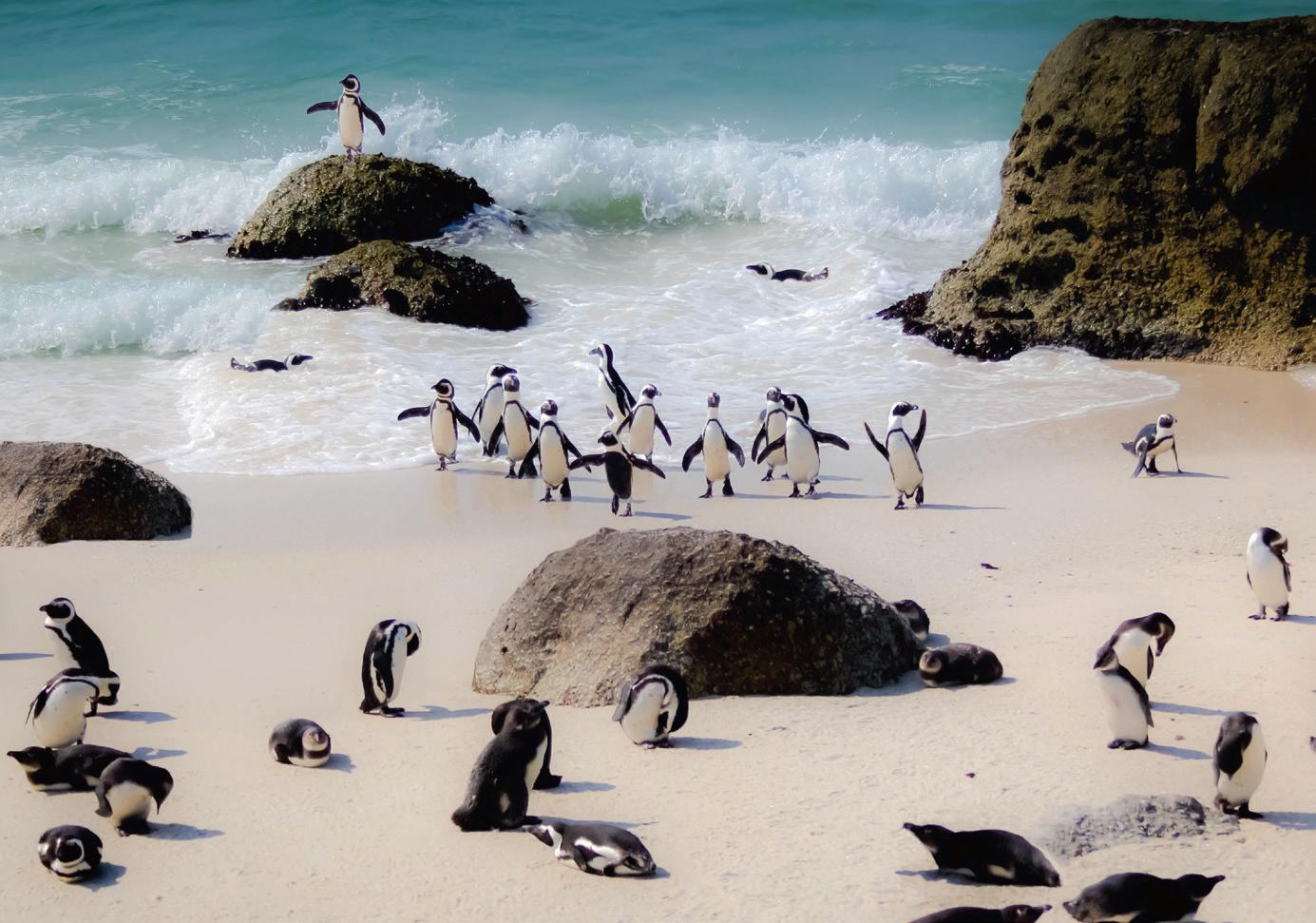
04. What is the name of the Netherlands’ reigning royal house?
05. What bean with a five-letter name is sought for its aroma of vanilla, cherry and almond?
06. The disease psoriasis affects which part of the body?
07. What gas gives soda water its fizz?
08. Michael Gudinski founded what iconic Australian record label?
09. The historical region Bohemia is part of what present-day country?
10. Who was the first (and so far only) person to win Oscars for both acting (1993) and writing (1996)?
11. Spain’s Jon Rahm is a champion in what sport?
12. According to the Chinese zodiac what animal year are we currently in?
13. What part of the brain was named for its seahorse-like shape?
14. What singer-songwriter’s albums include Blue, Court and Spark and Turbulent Indigo?
15. The History of Everything is the theme song for what hit TV sitcom?
16 The NATO phonetic alphabet includes the name of what nymph of Greek mythology?
17 What jewellery metal is an alloy of gold and copper?
18 Badugi, Razz and Omaha hold ‘em are variants of what game?
19 Angkor in Cambodia was the centre of what historical kingdom?
20. Who was the first person to reach both the North and South poles?
Get your daily dose of travel inspiration as we share the latest and greatest tips on where to go, things to do, what to eat and drink, and more.
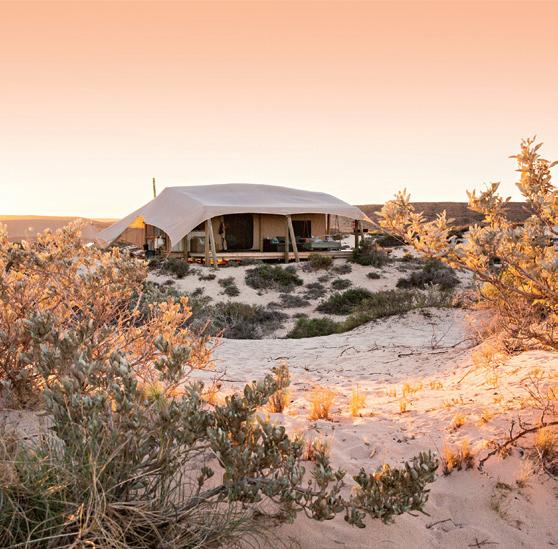
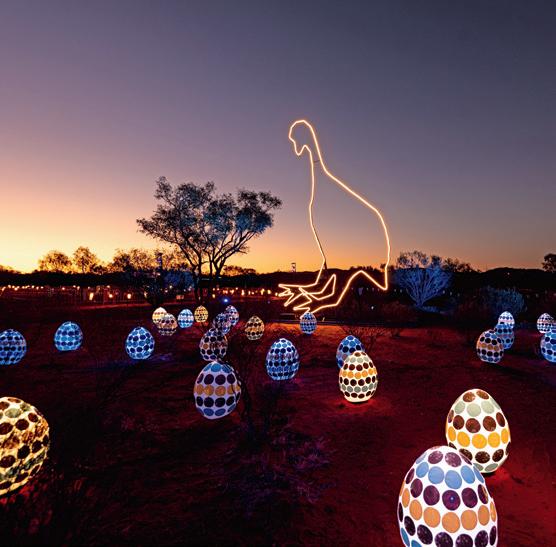
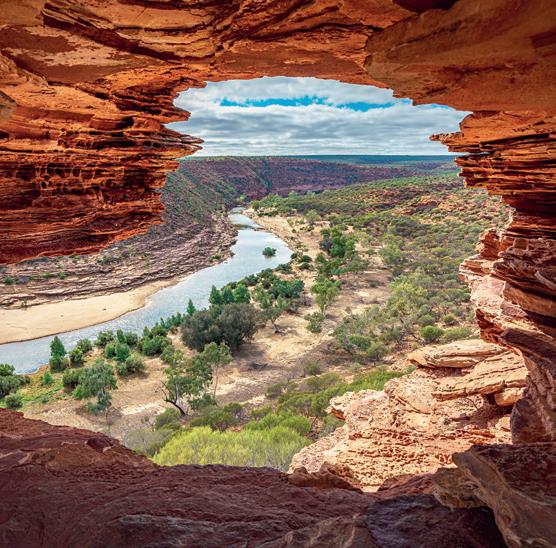
If you’ve filled in the answers, please take the magazine with you so the cabin crew know to replace it with a new copy.
Wheel of words
Book, floe, folk, fool, hobo, hole, hoof, hook, hose, kohl, lobe, look, lose, oboe, shoe, shoo, slob, sloe, sole, solo, bloke, loose, shook.
Nine-letter word: BOOKSHELF.
Spot the difference
01. Penguin on rock
02. Extra penguin swimming
03. Penguin with black tummy
04. Penguin with wings up
05.Penguin lying the other way
06. Extra rock
07. Extra wave
A stitch in time saves nine, Accidents will happen, All roads lead to Rome, Any port in a storm, Bad news travels fast, Beauty is only skin-deep, Better safe than sorry, Crime doesn’t pay, Forgive and forget, He who hesitates is lost, If the cap fits, wear it, Ignorance is bliss, It takes two to tango, Let sleeping dogs lie, Look before you leap, No rest for the wicked, Once bitten, twice shy, Practice makes perfect, Seeing is believing, Silence is golden, Still waters run deep, The more the merrier, There’s no place like home, Tomorrow never comes, Walls have ears, Wonders never cease, You can’t win them all
Solution: Two heads are better than one
01. Compulsory Third Party 02. The Good, The Bad, and the Ugly 03. The Bahamas and the Greater and Lesser Antilles 04. OrangeNassau 05. Tonka bean 06. The skin
07. Carbon dioxide 08. Mushroom Records
09. The Czech Republic 10. Emma Thompson
11. Golf 12. The rabbit 13. The hippocampus
14. Joni Mitchell 15.The Big Bang Theory
16. Echo 17. Rose gold 18. Poker 19. The Khmer kingdom 20. Roald Amundsen




 Jennifer Lawrence
Jennifer Lawrence
Elegance is an attitude


